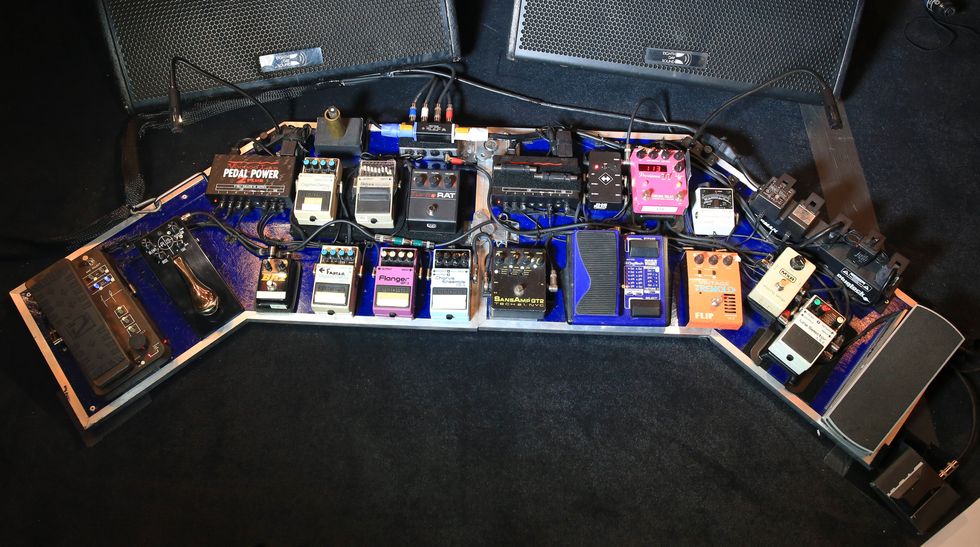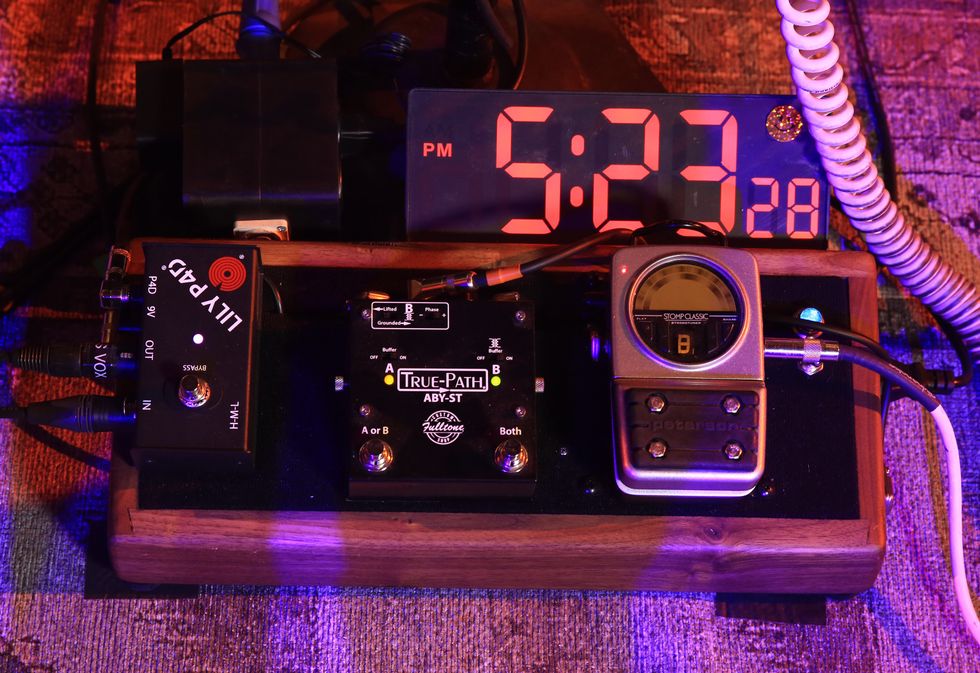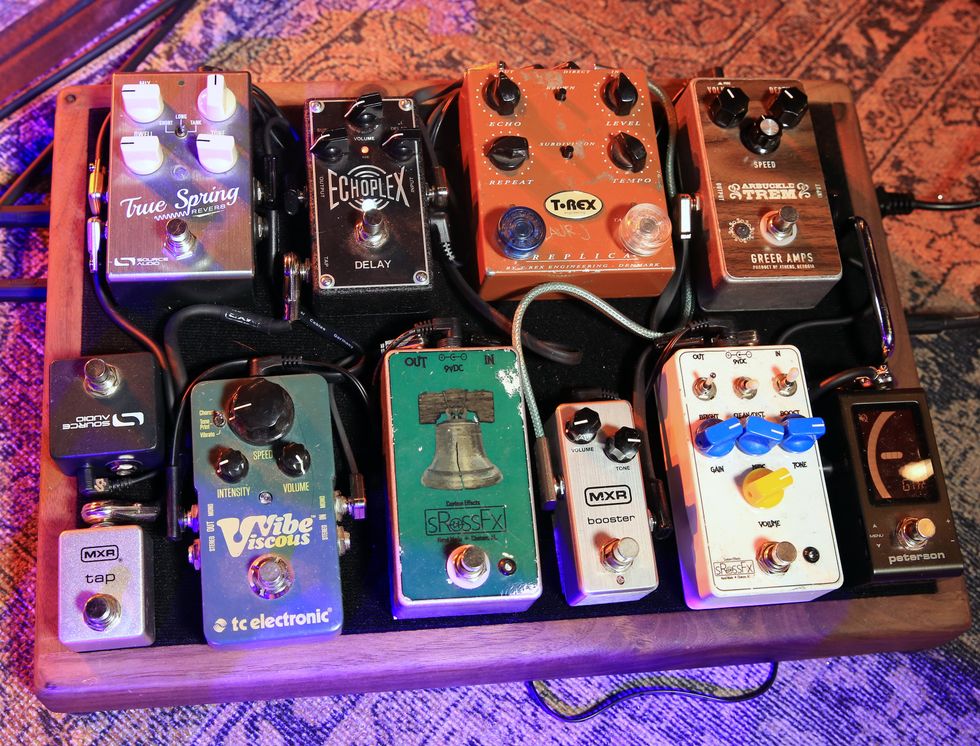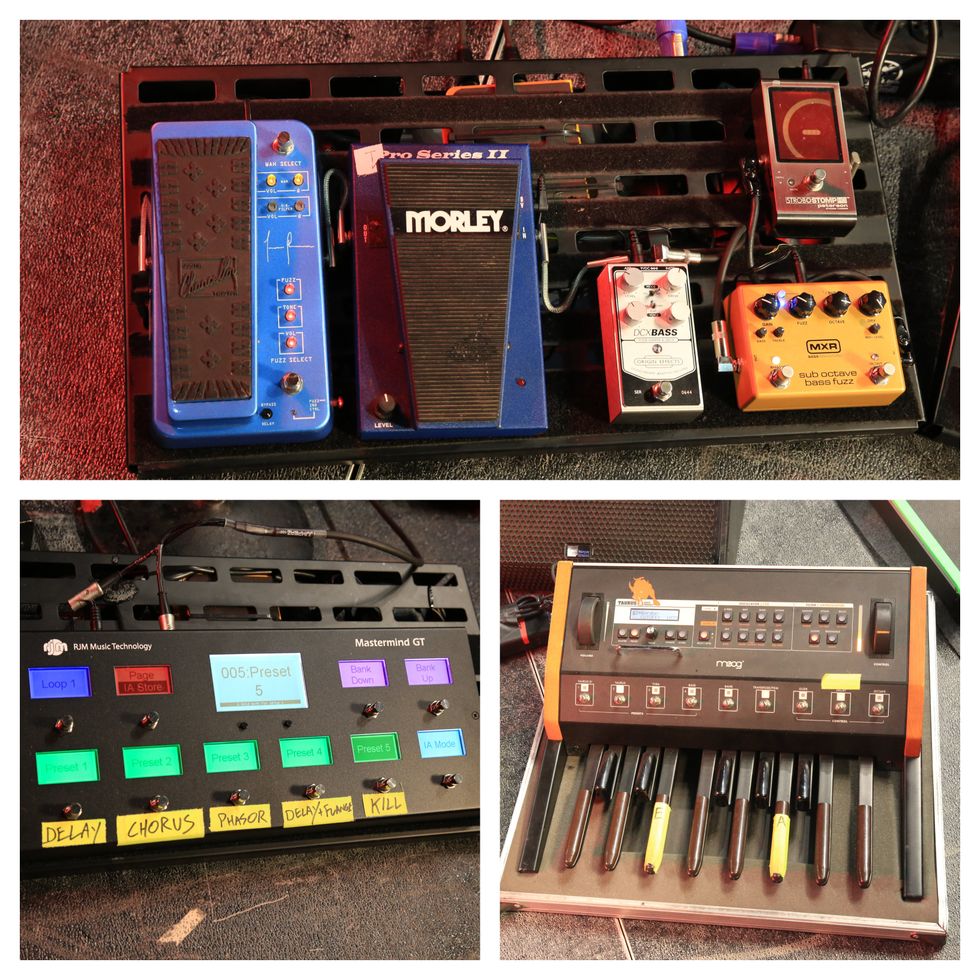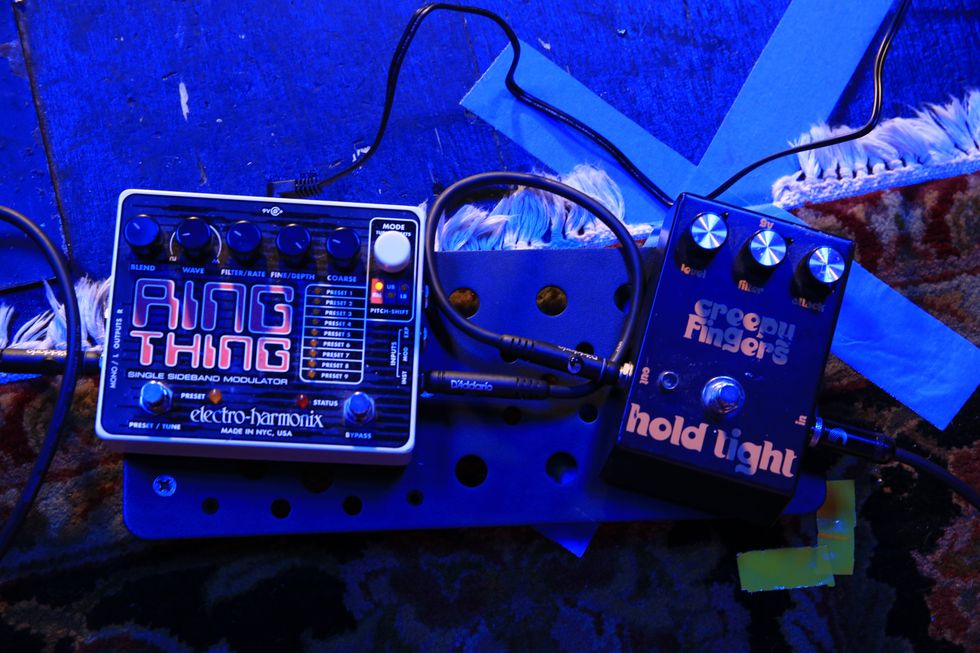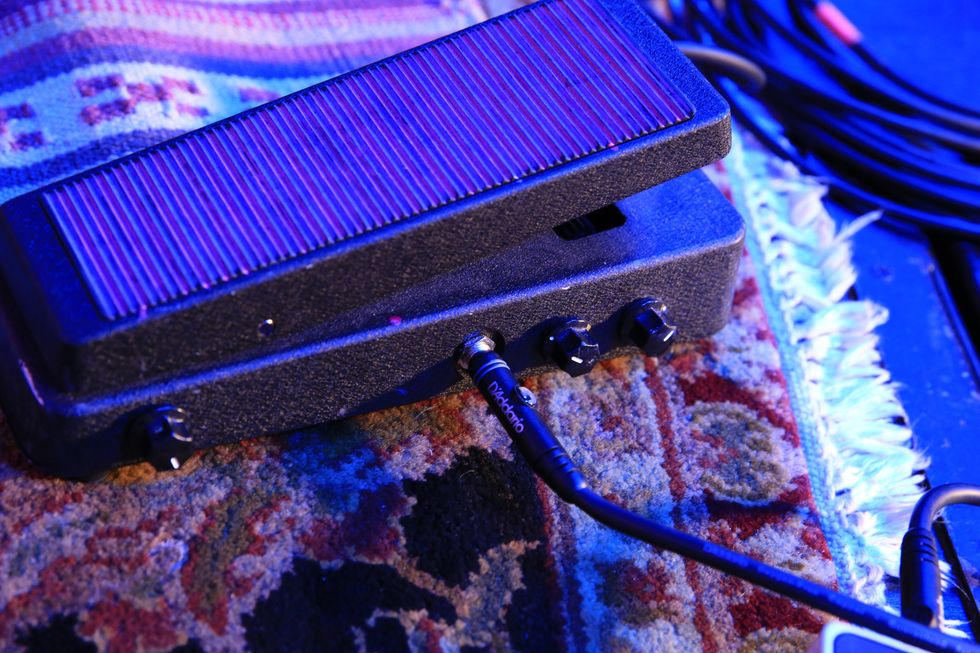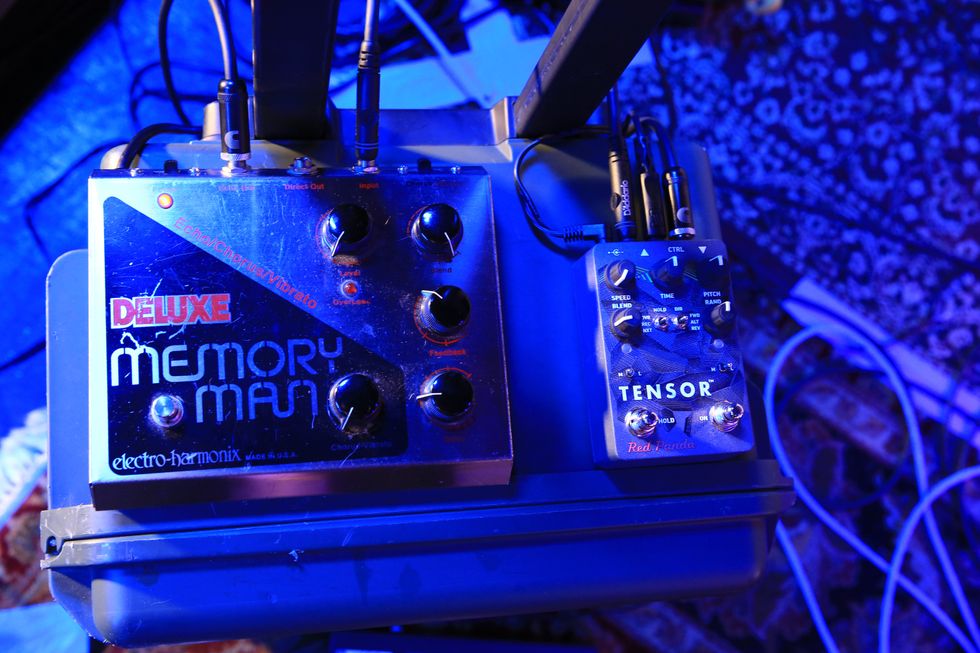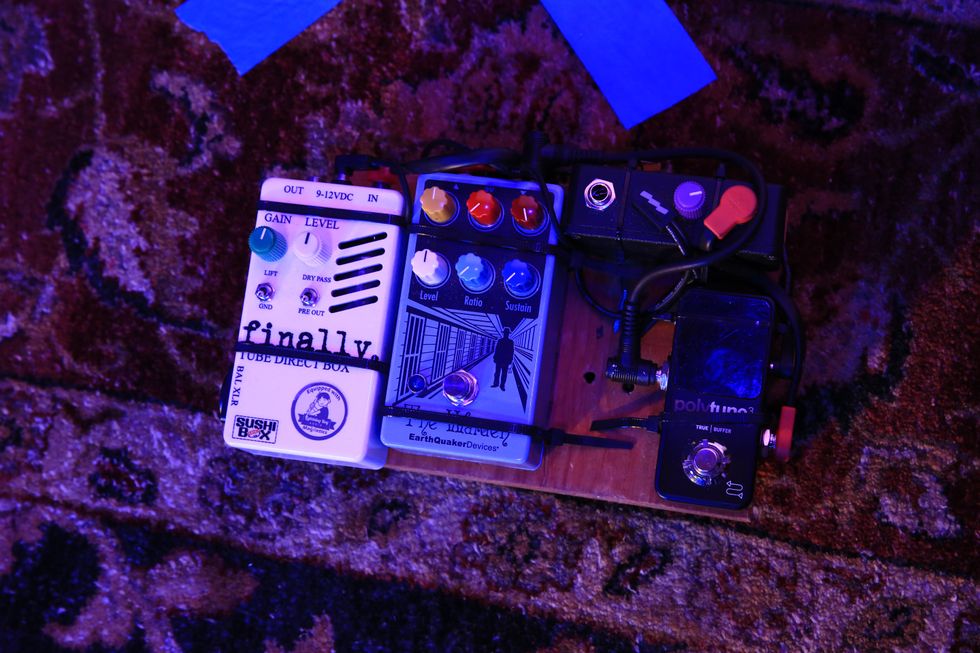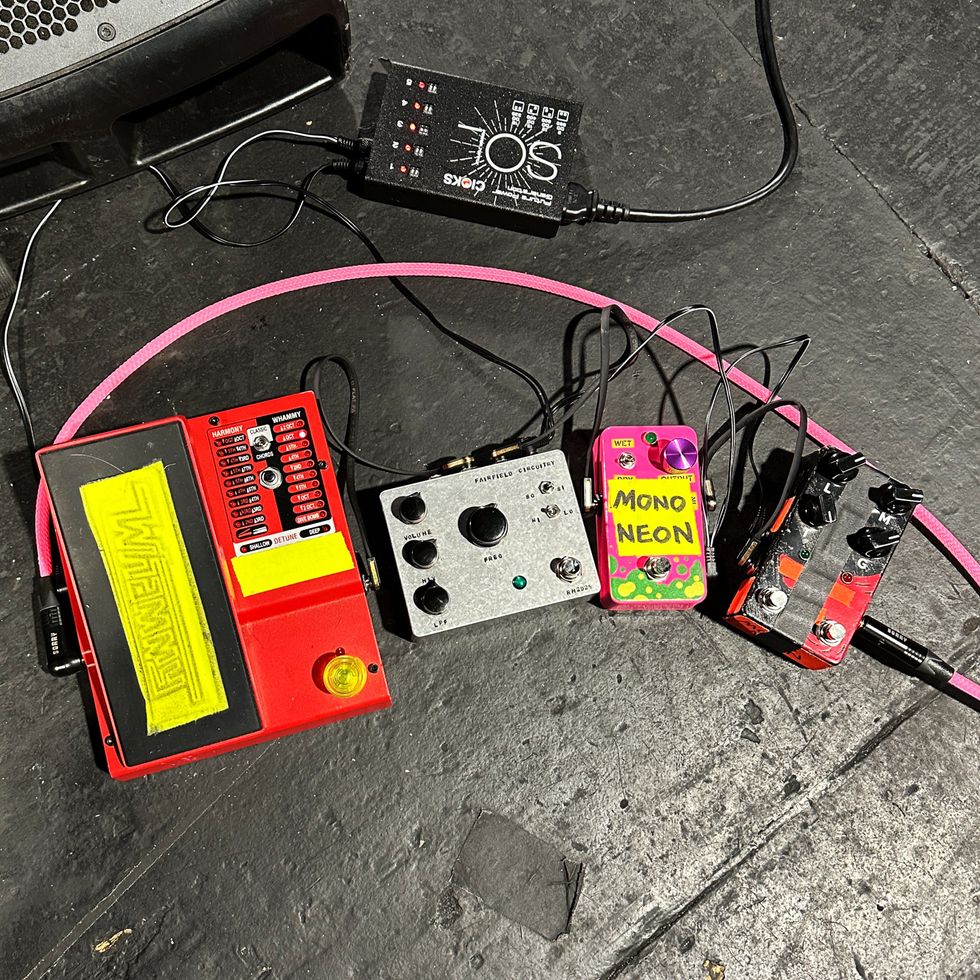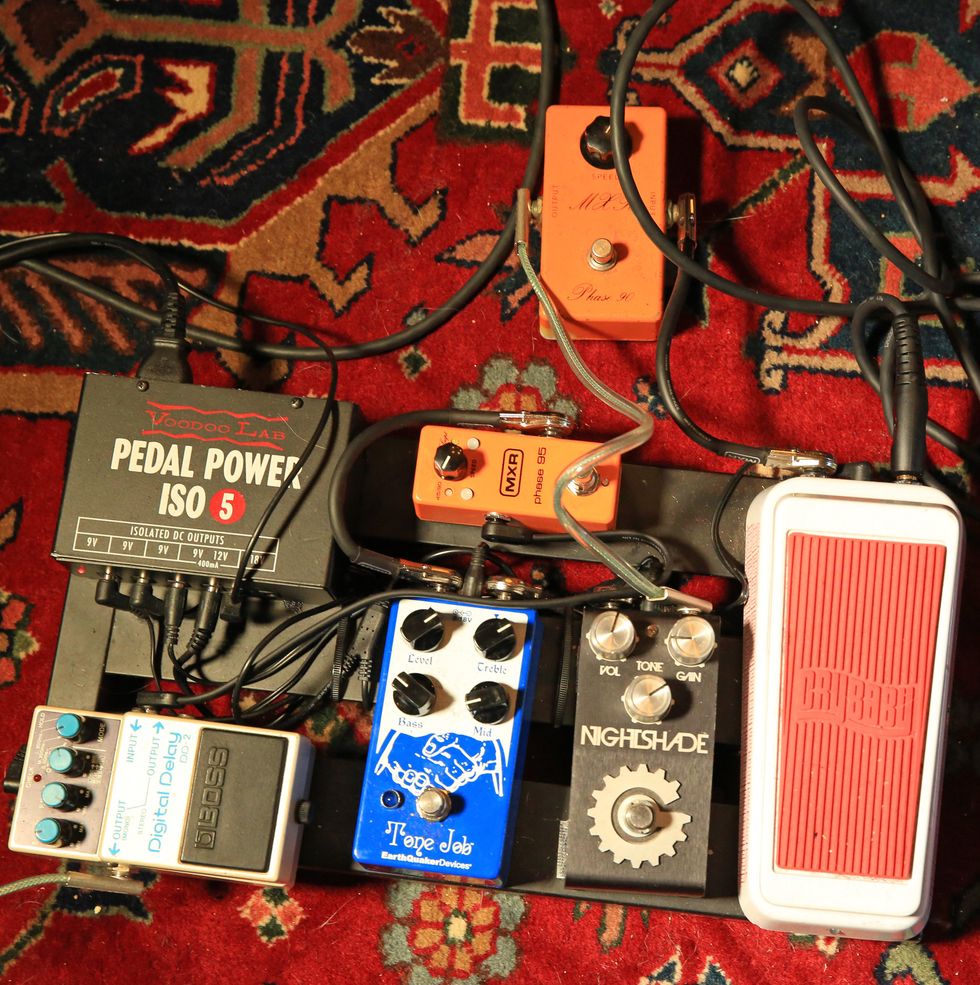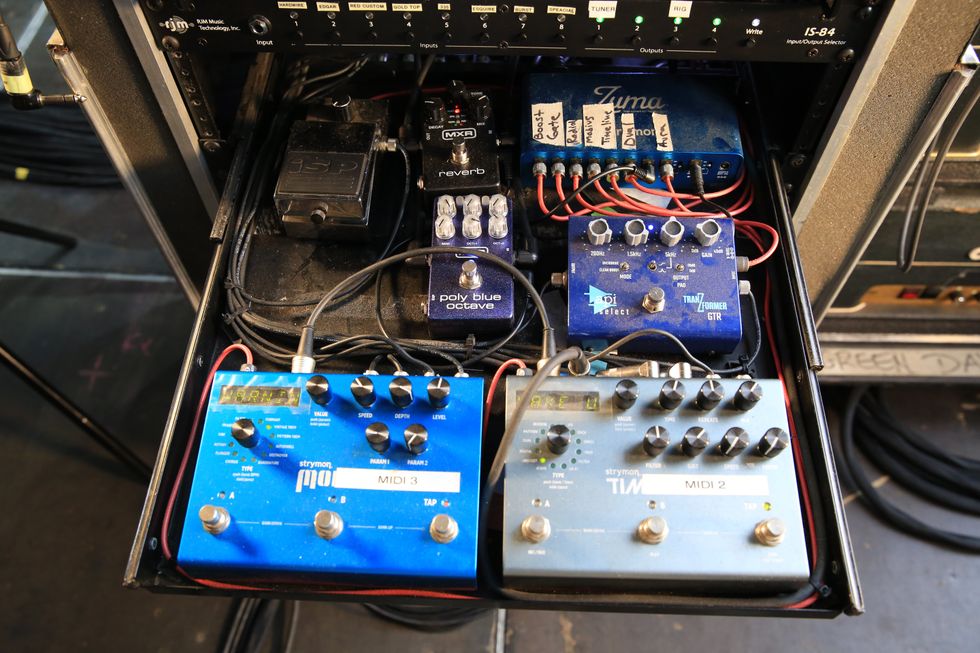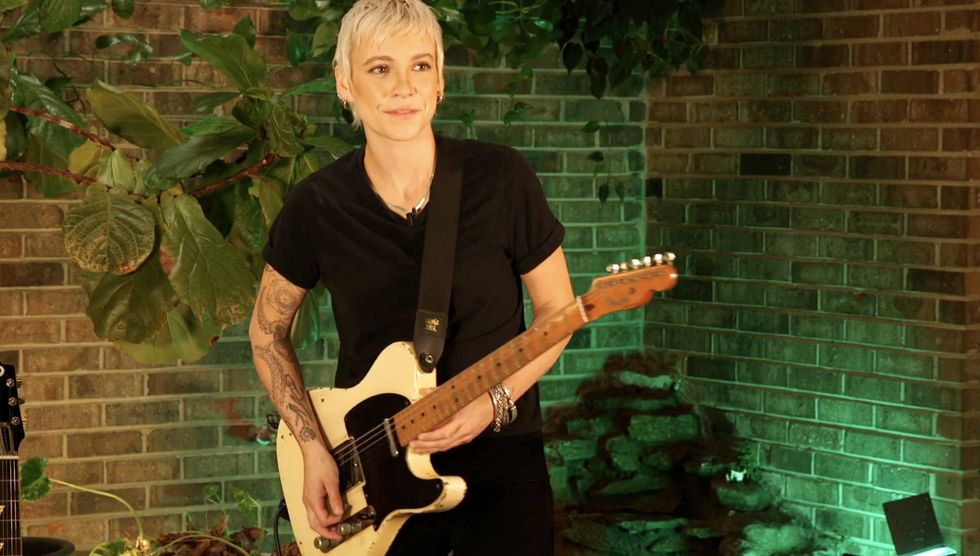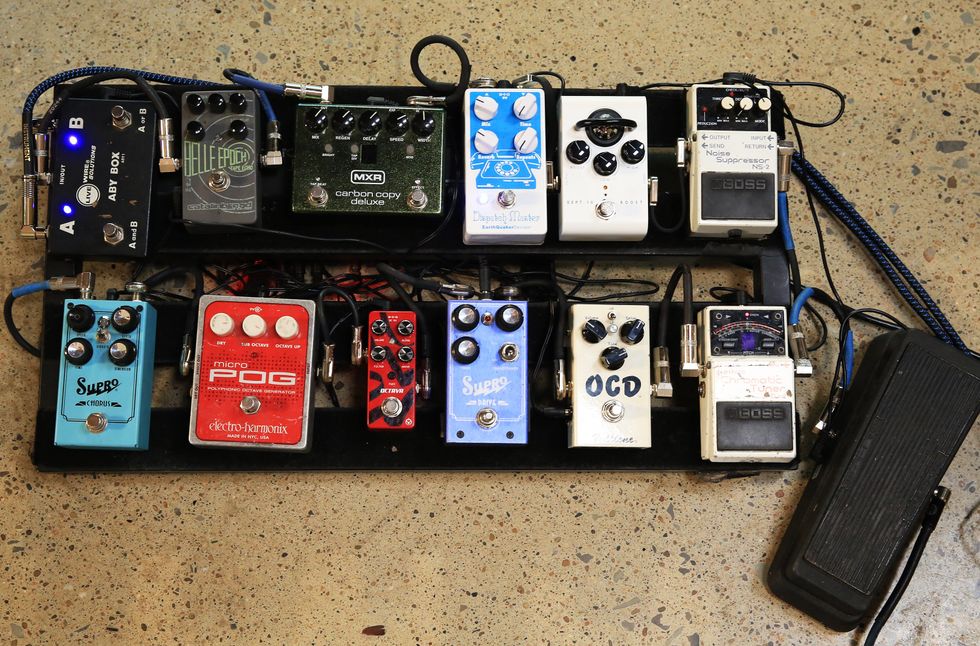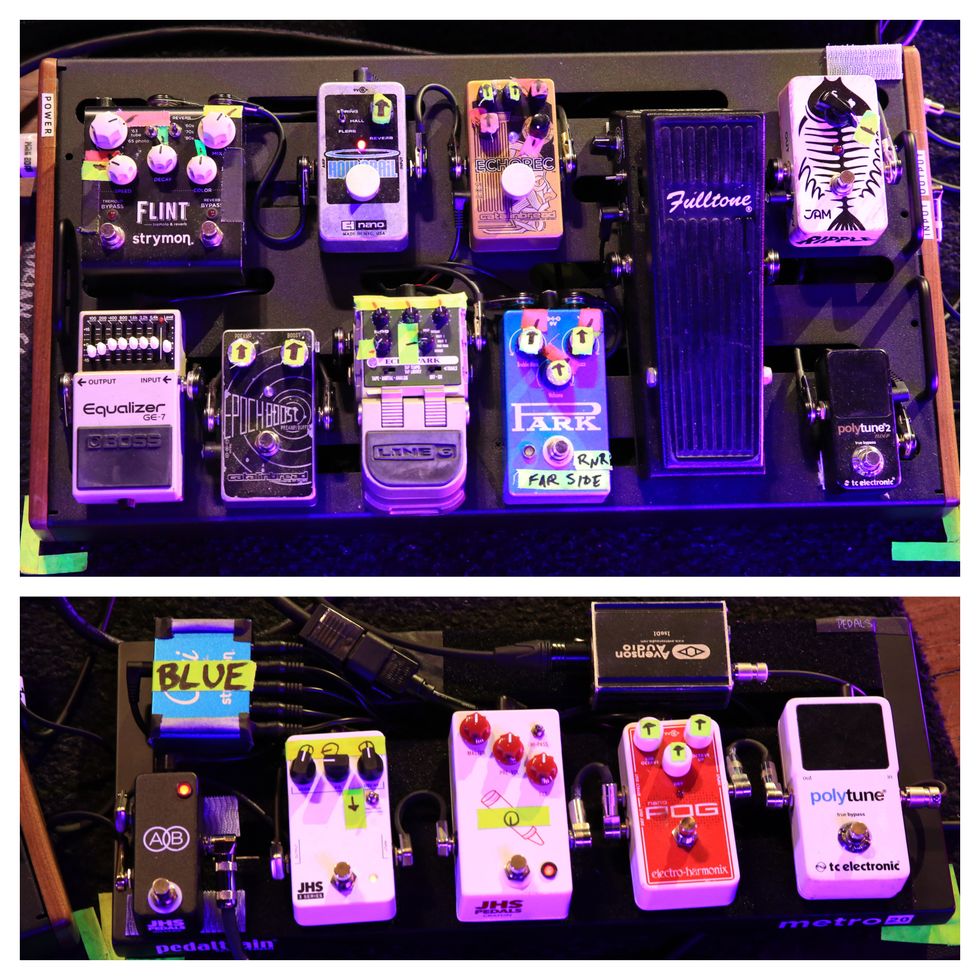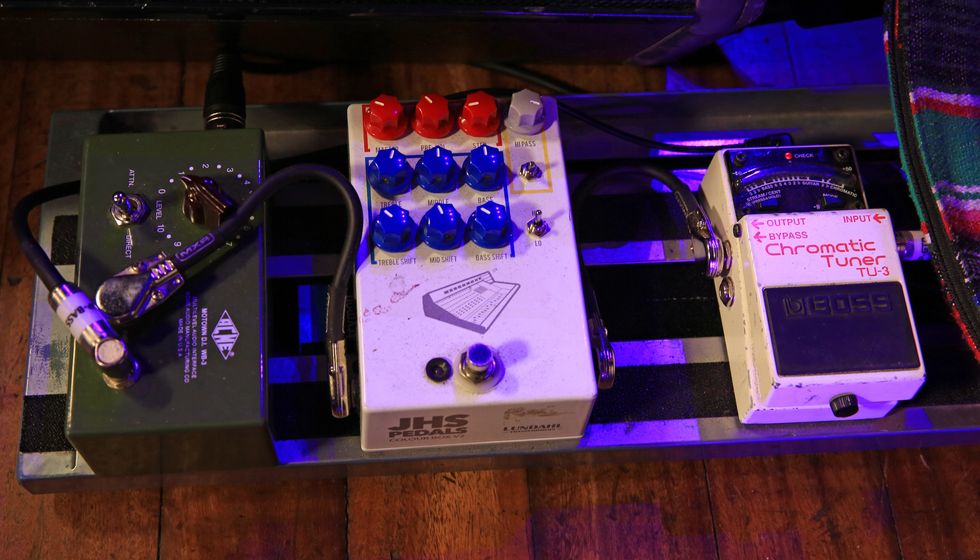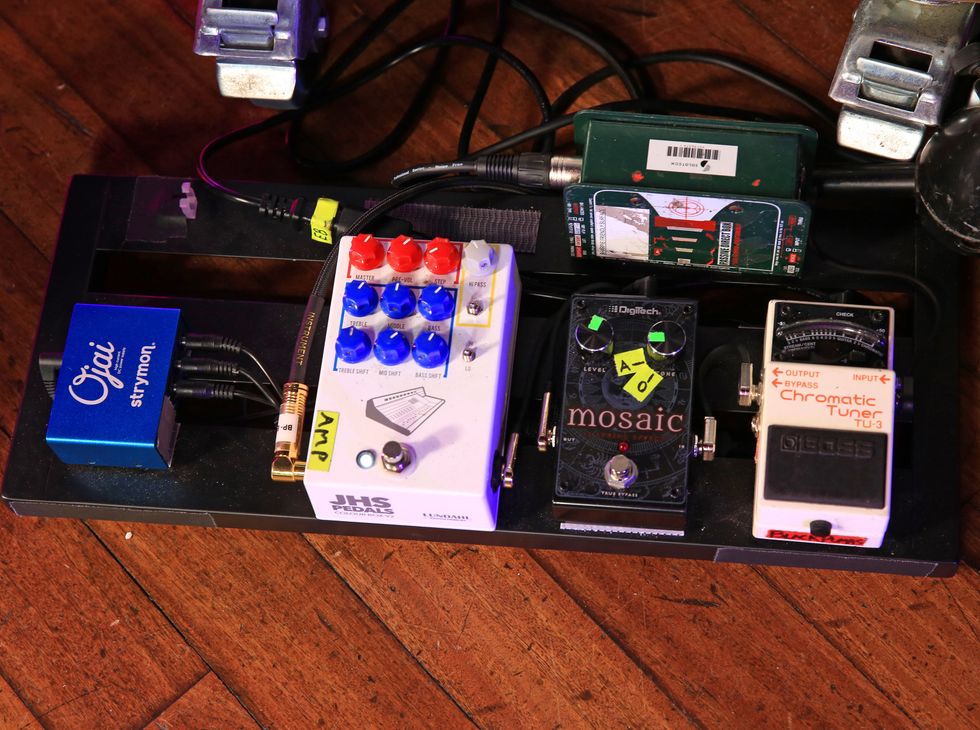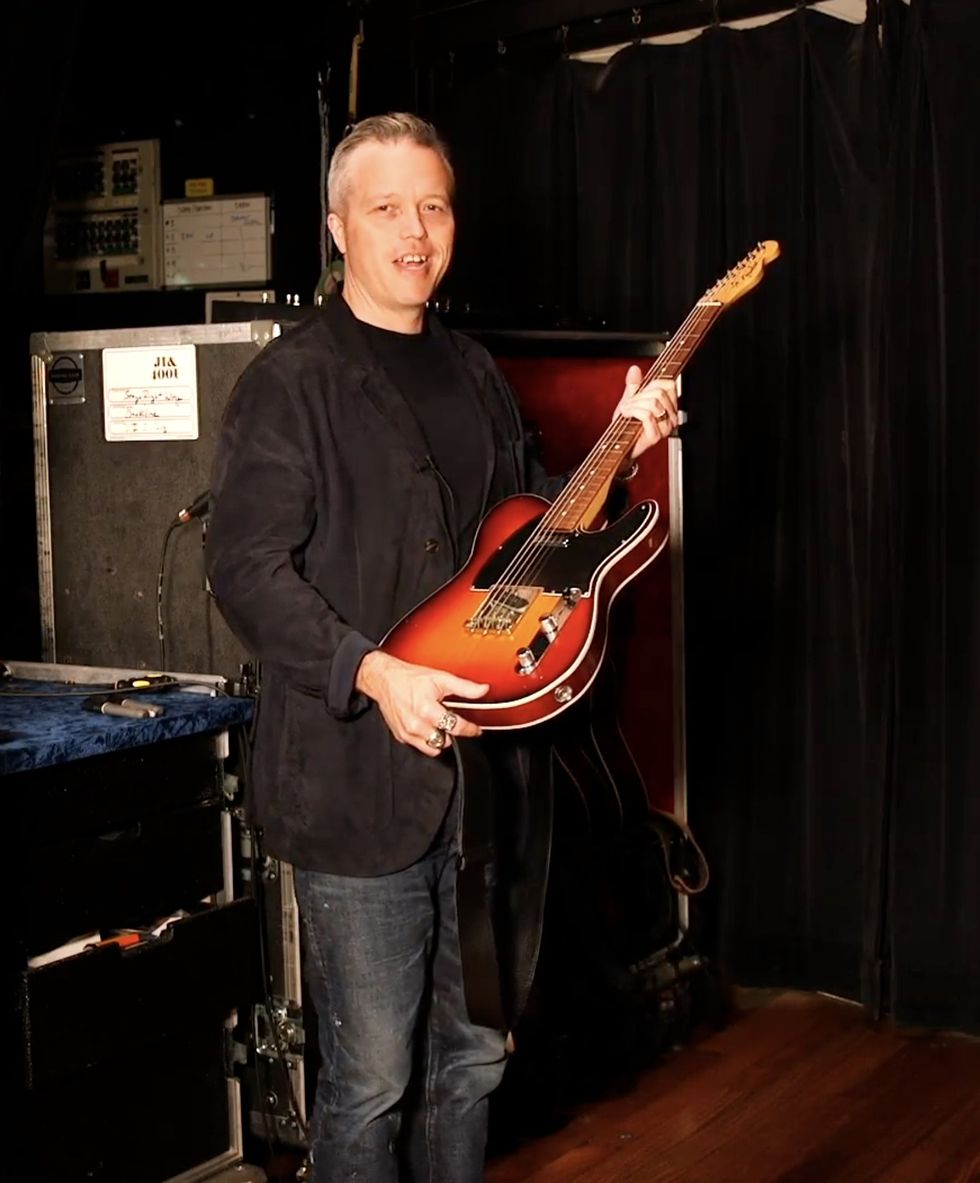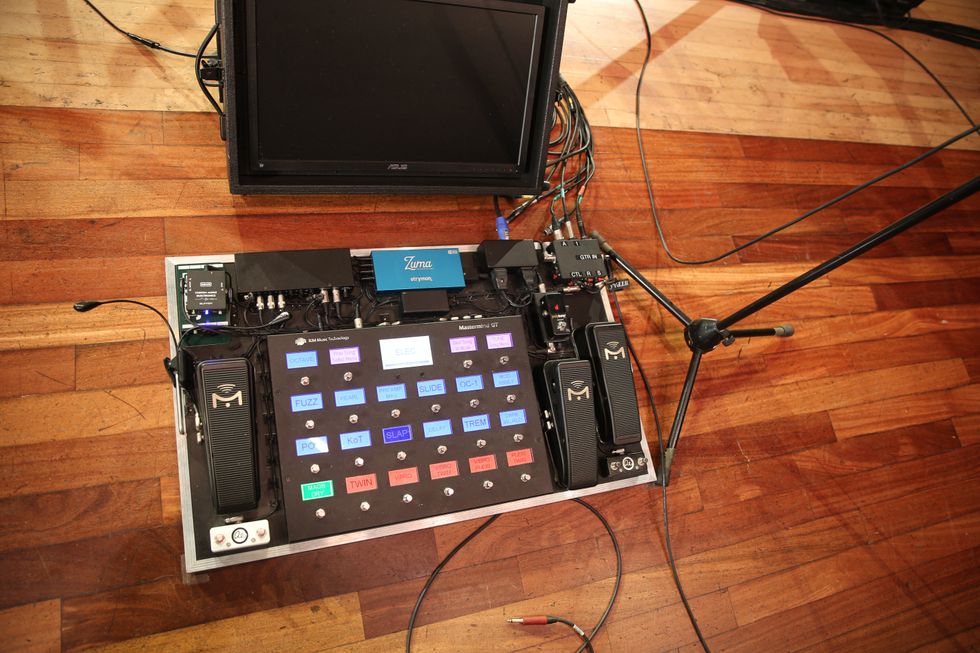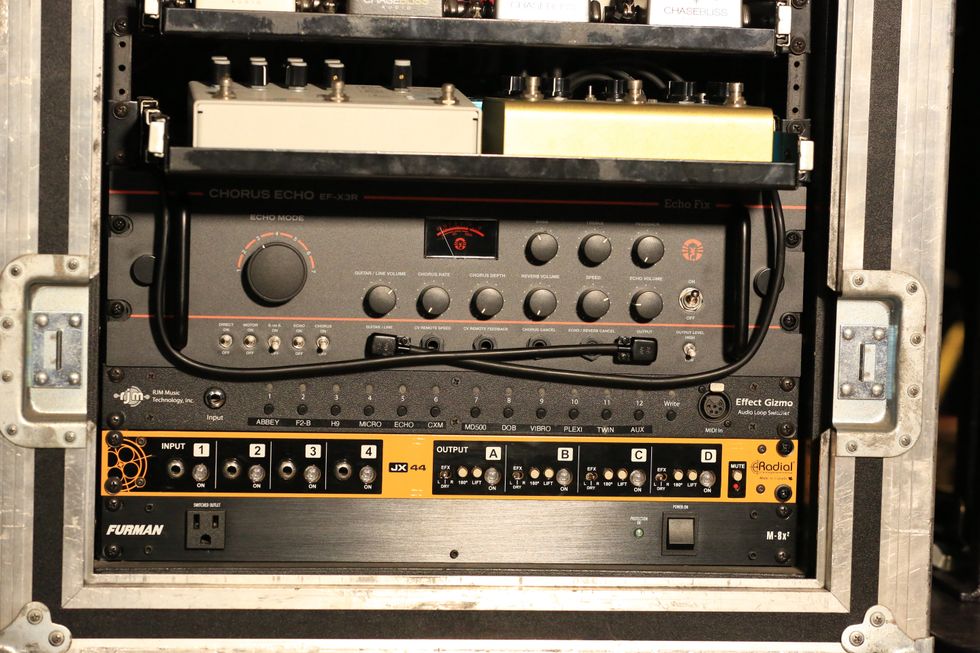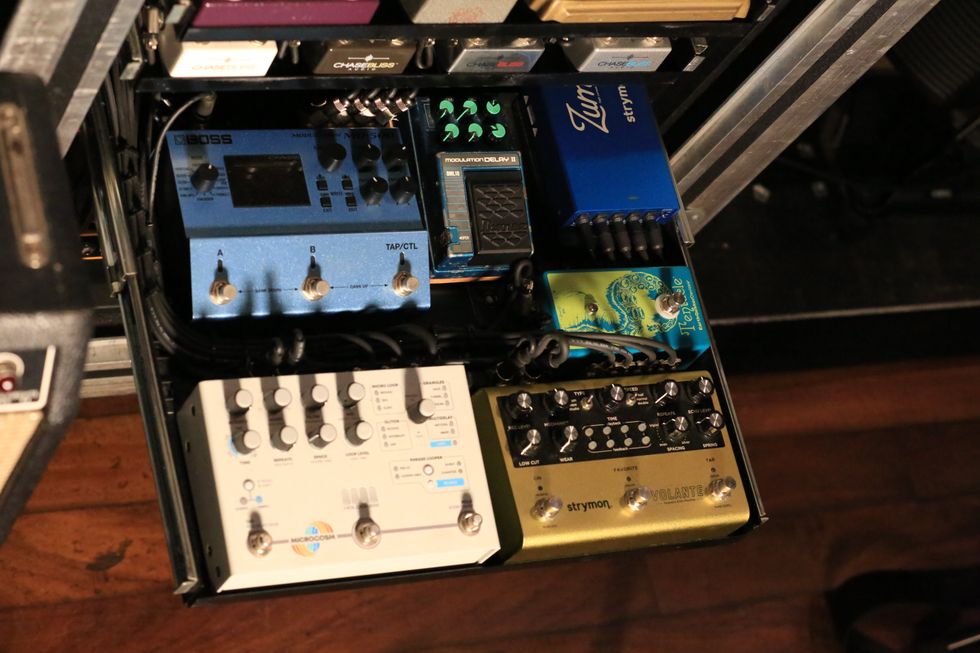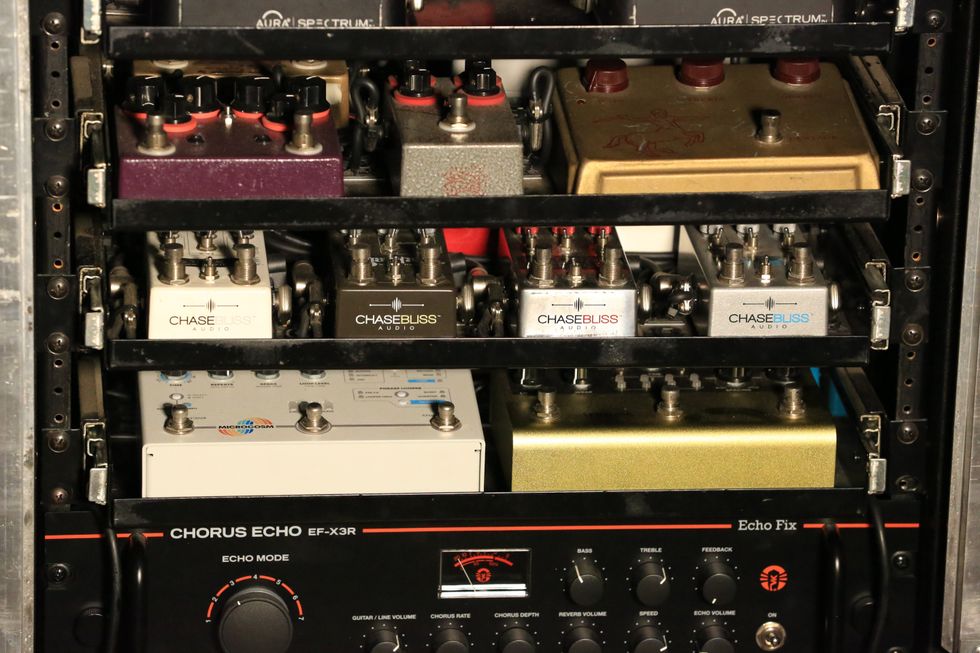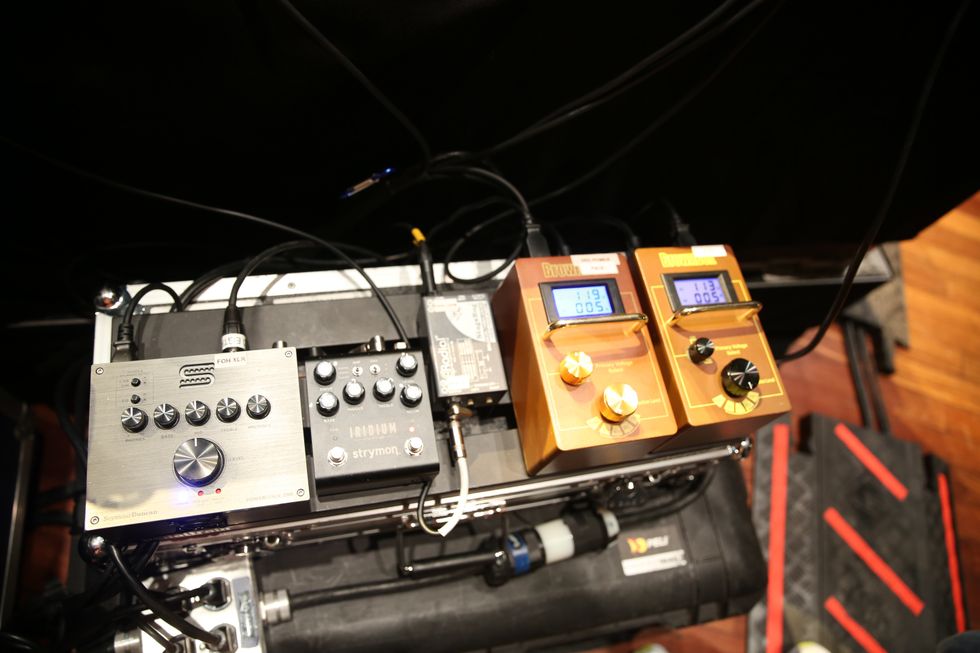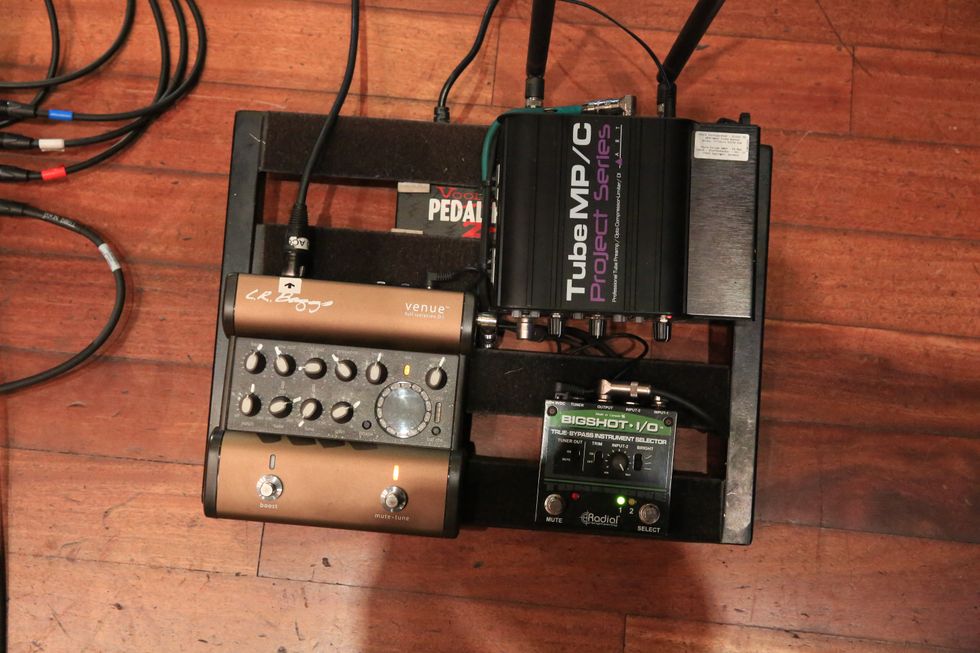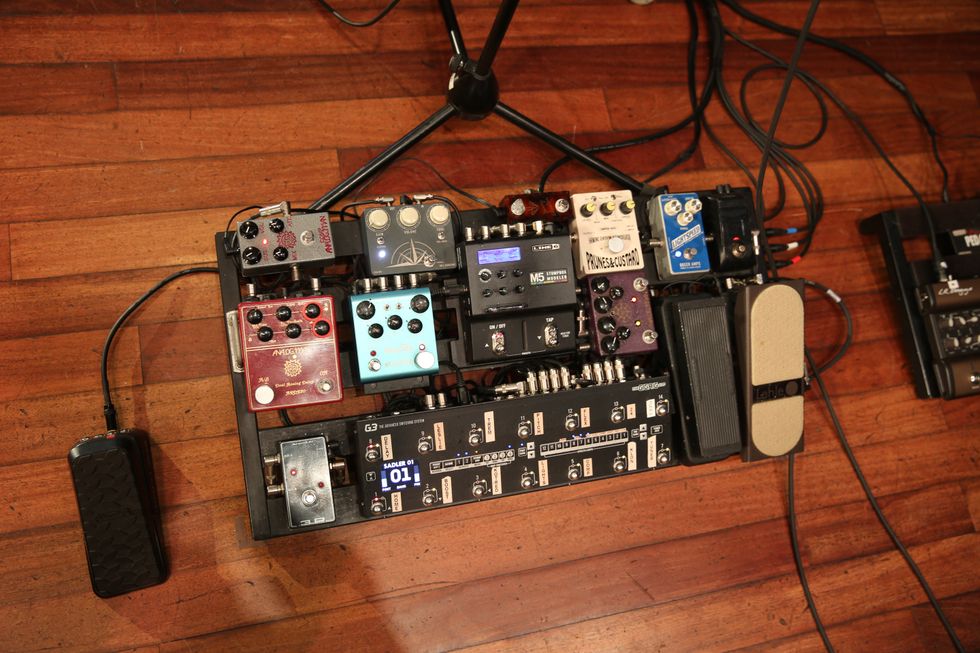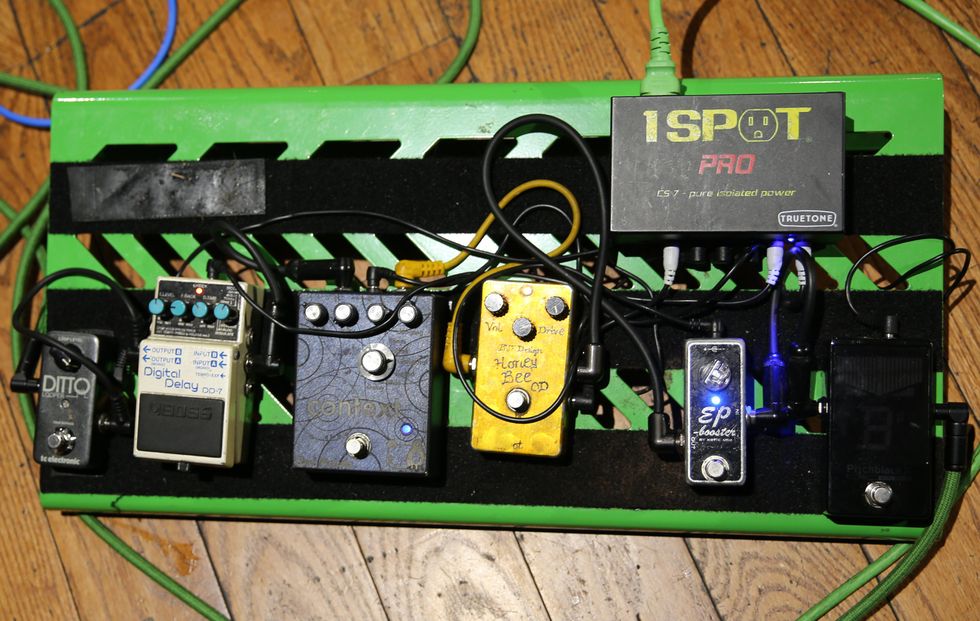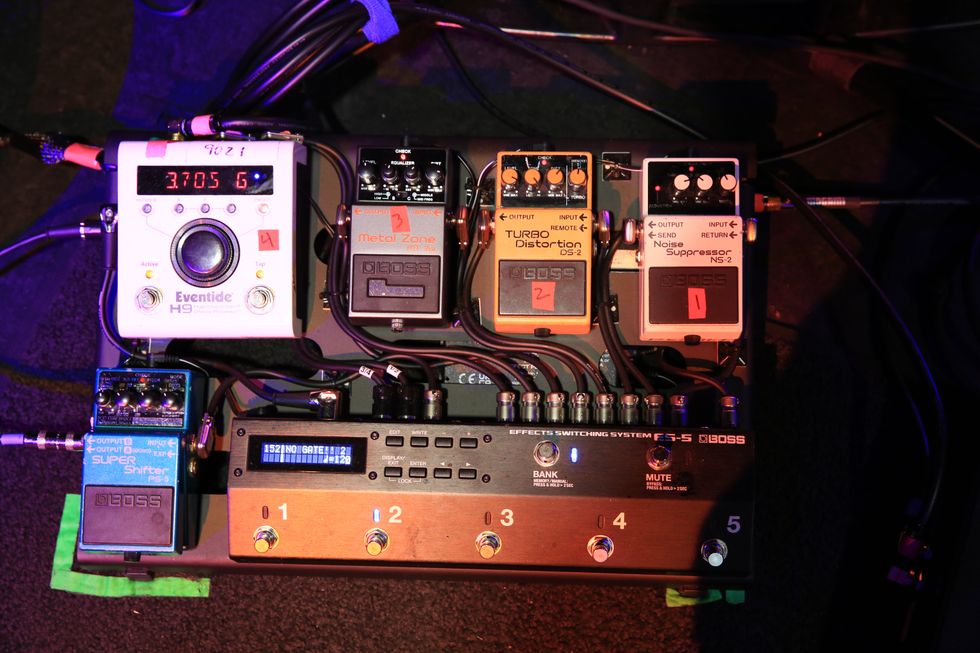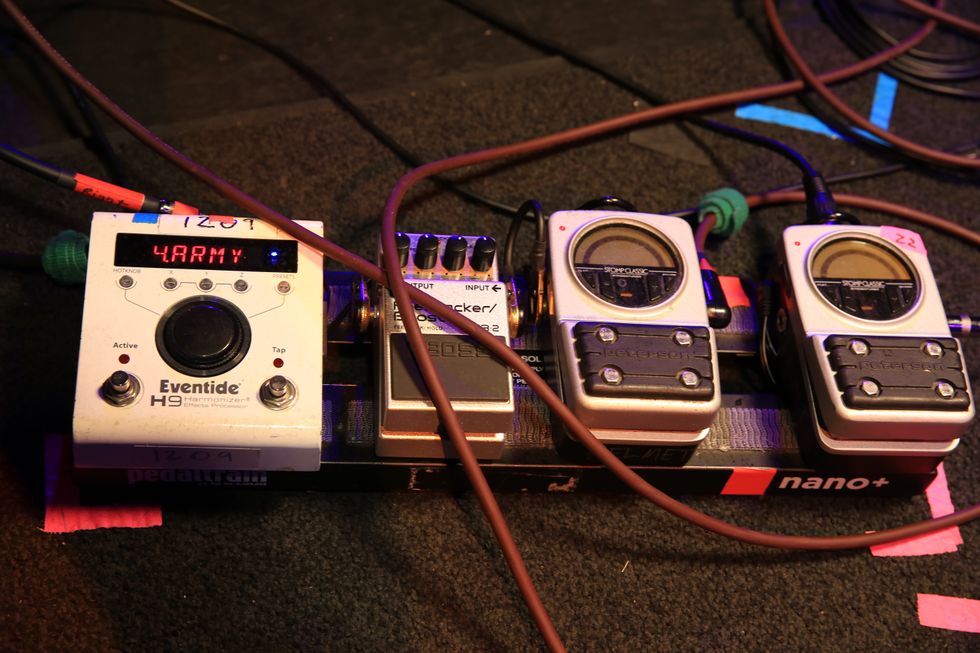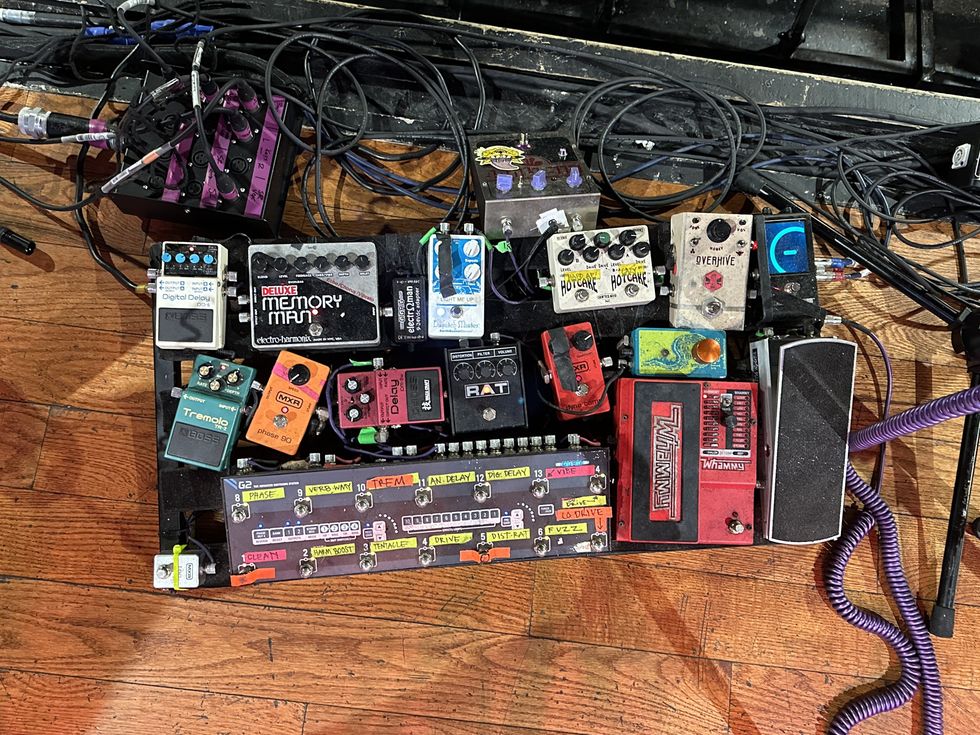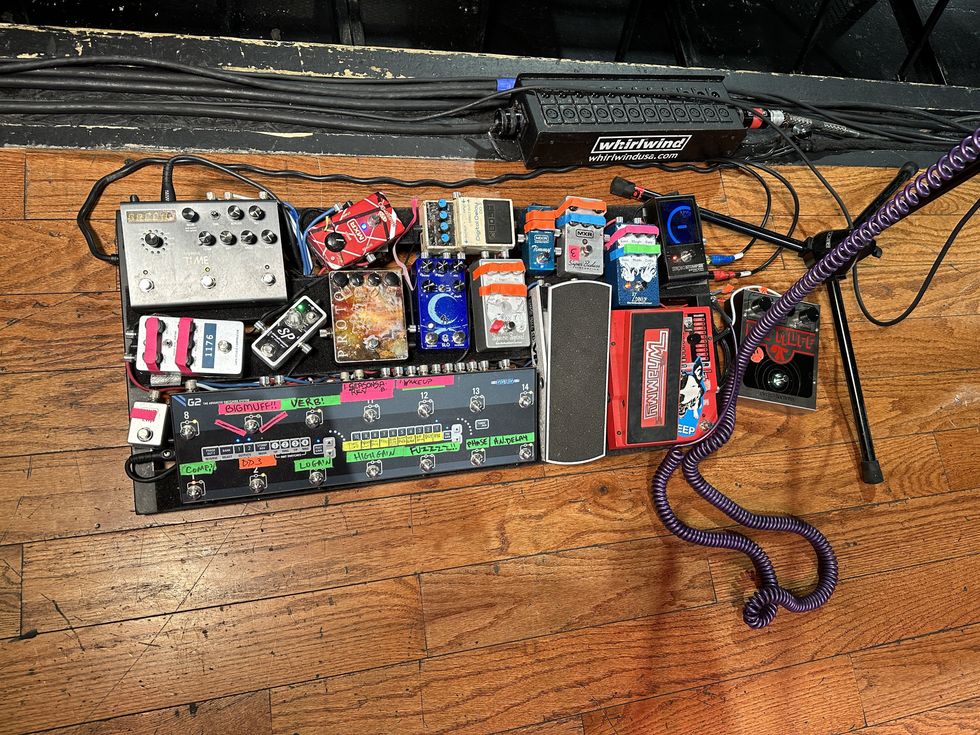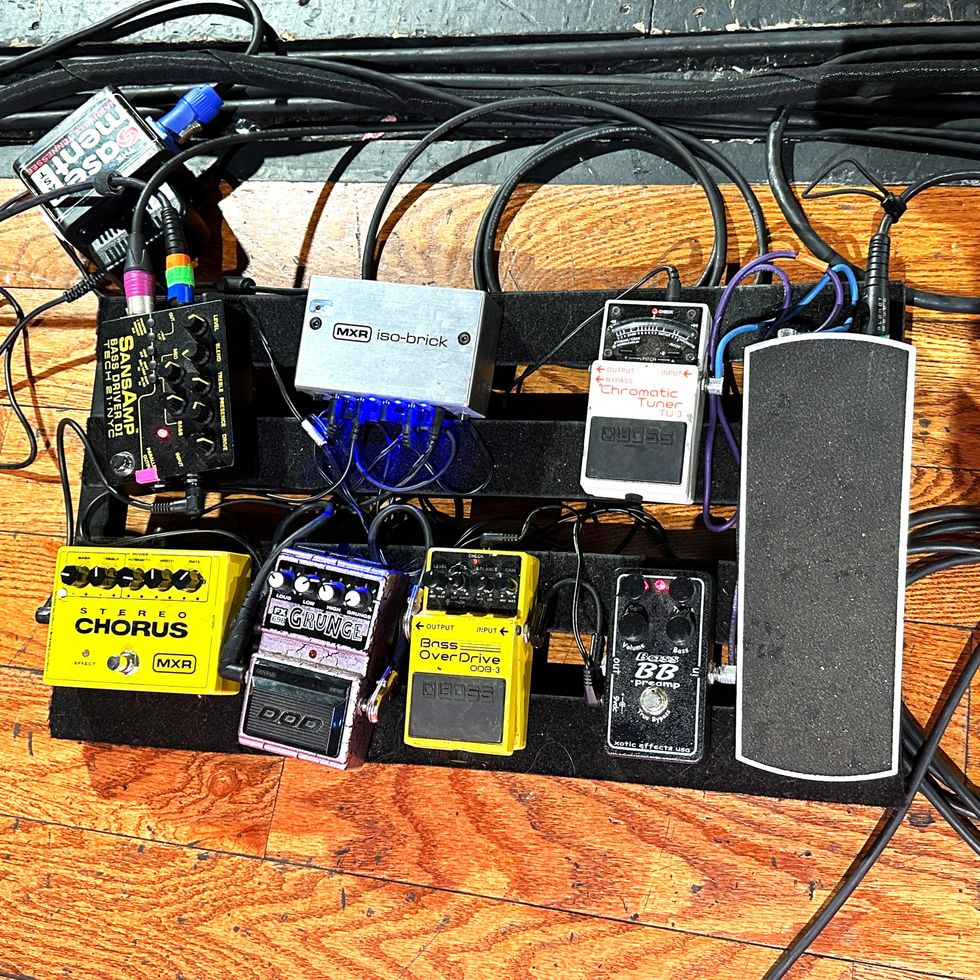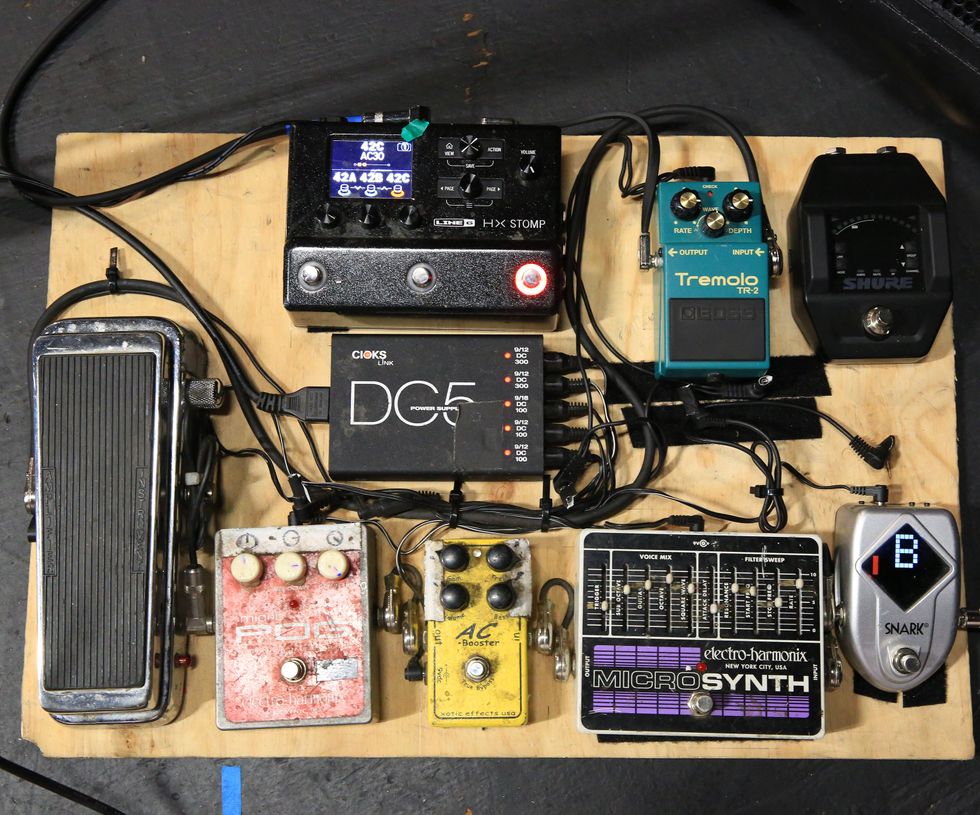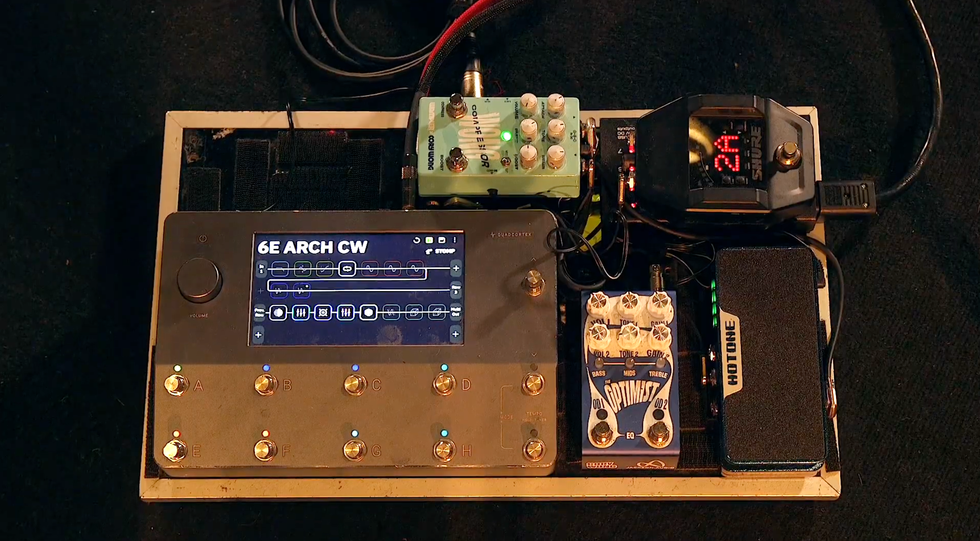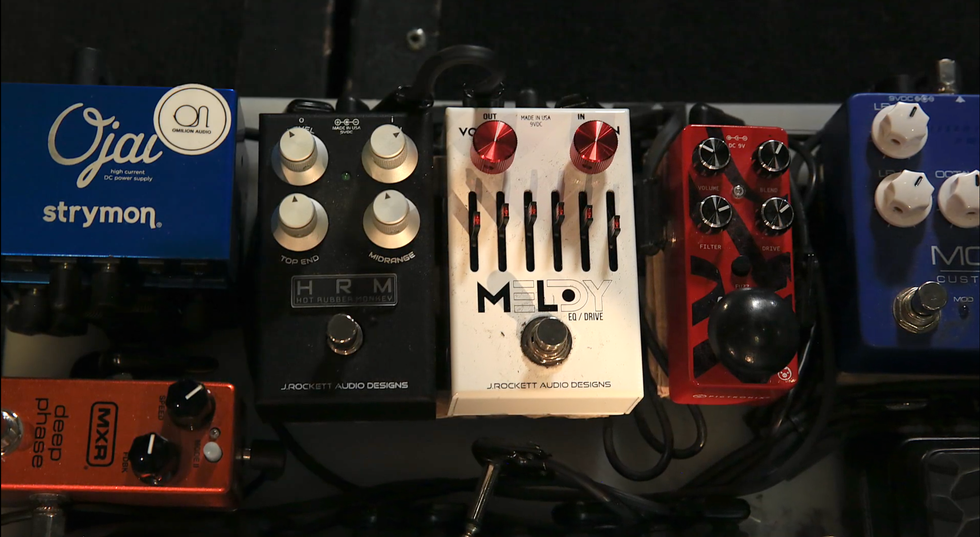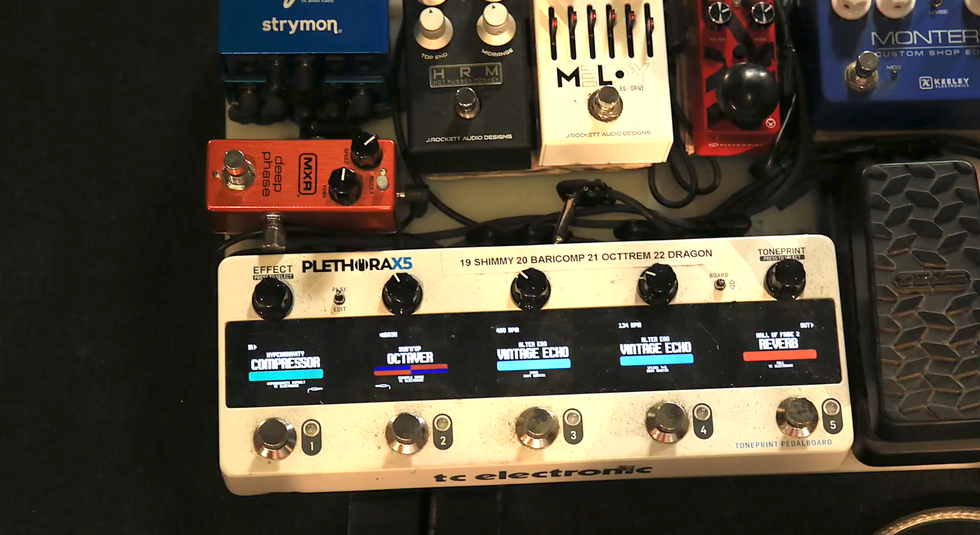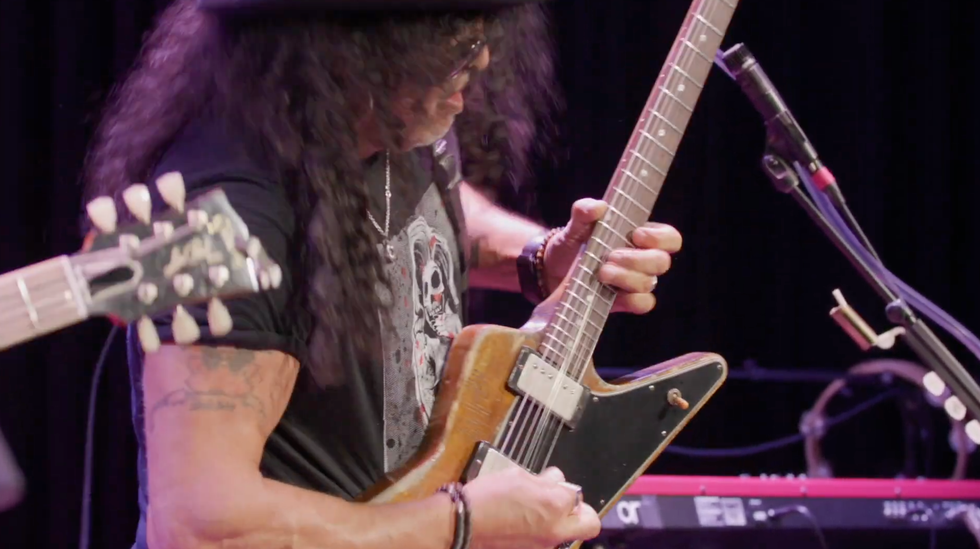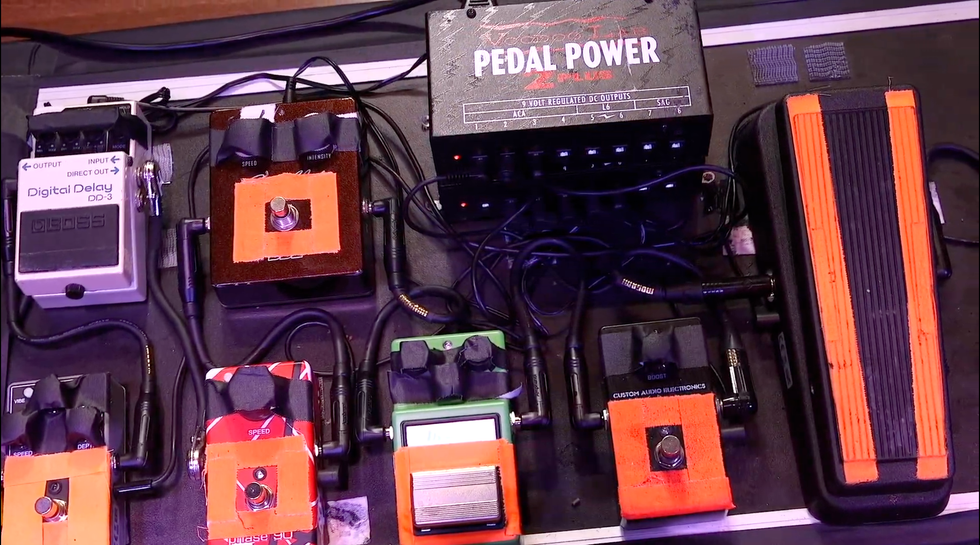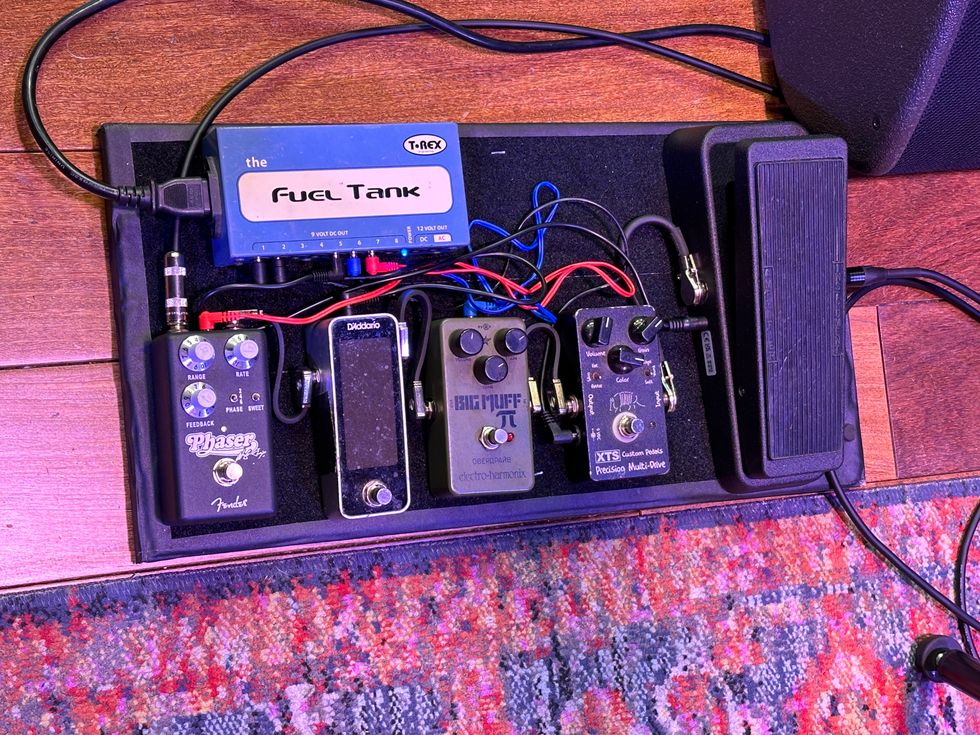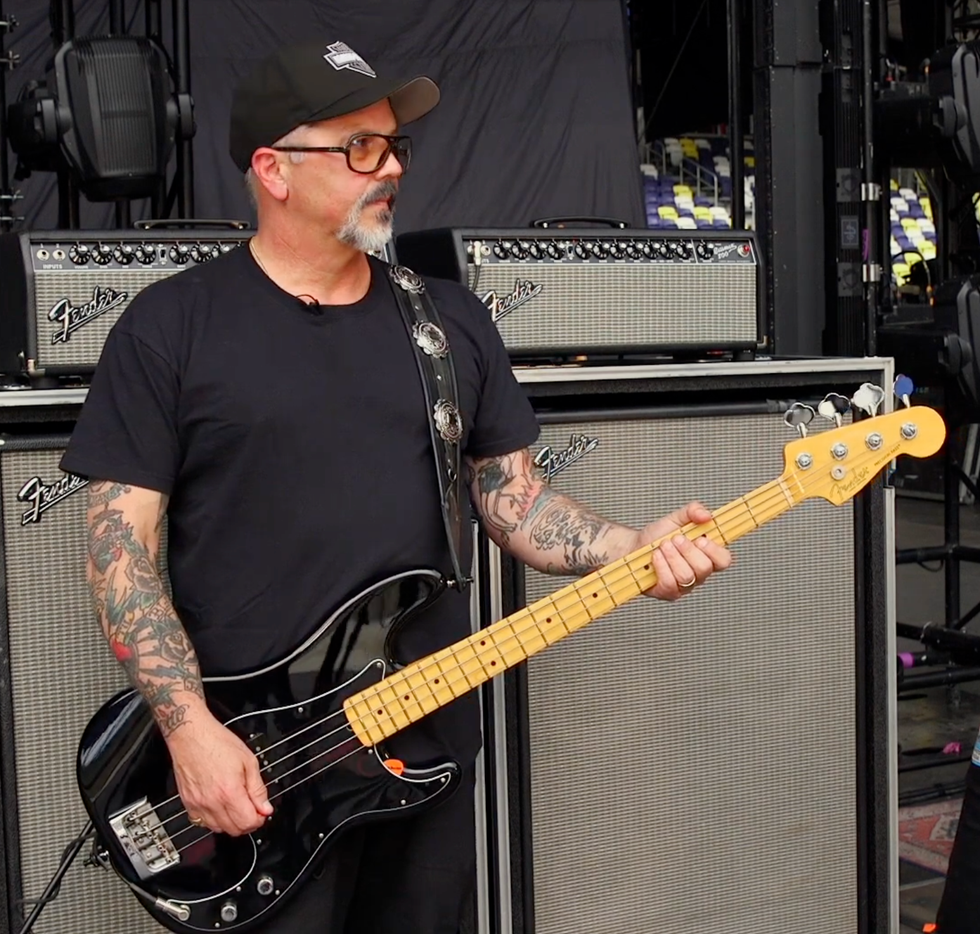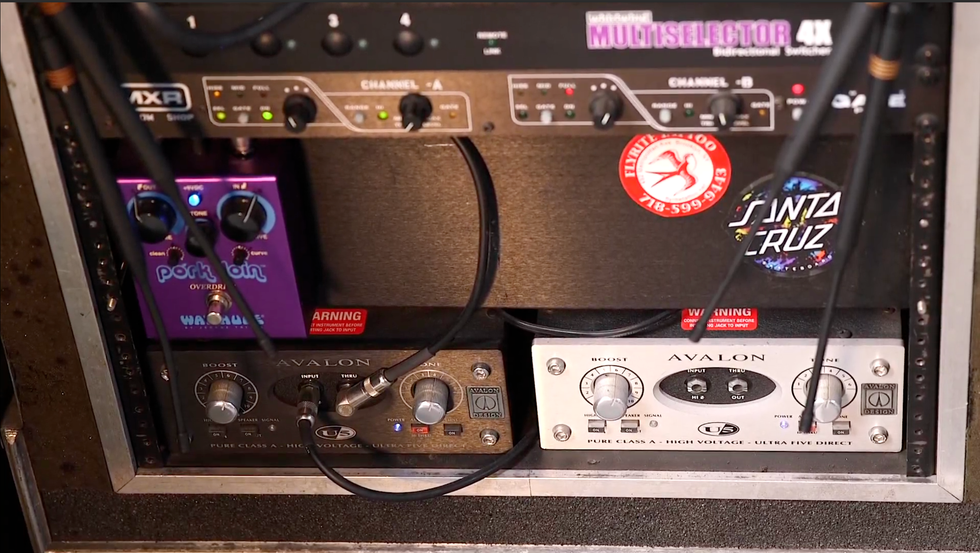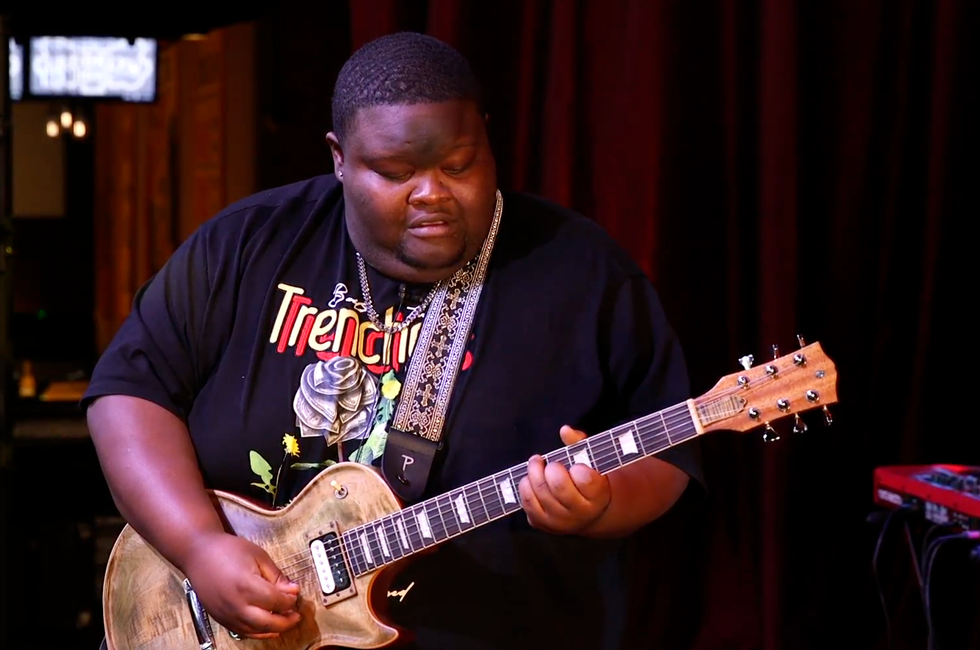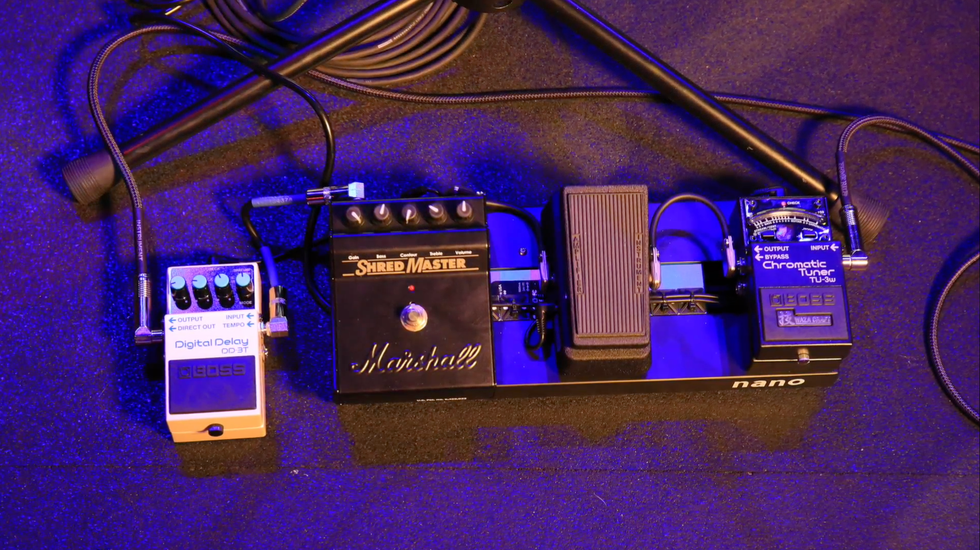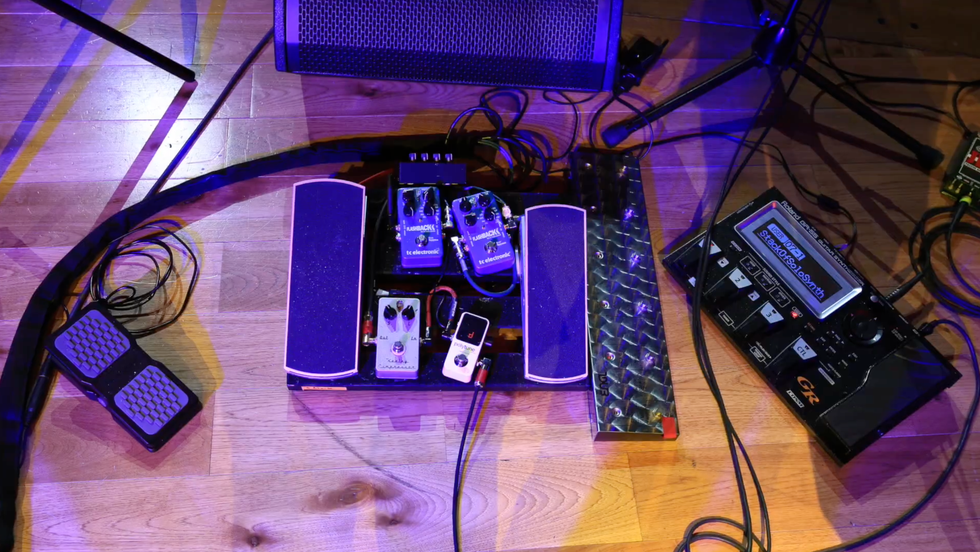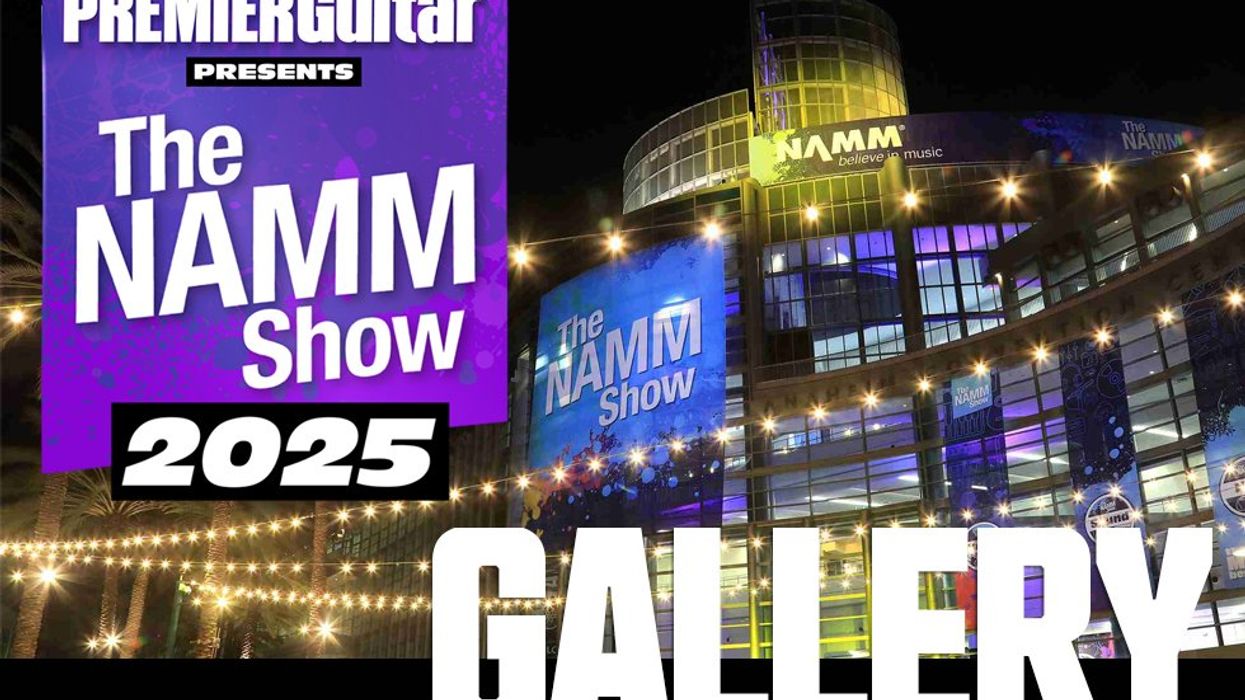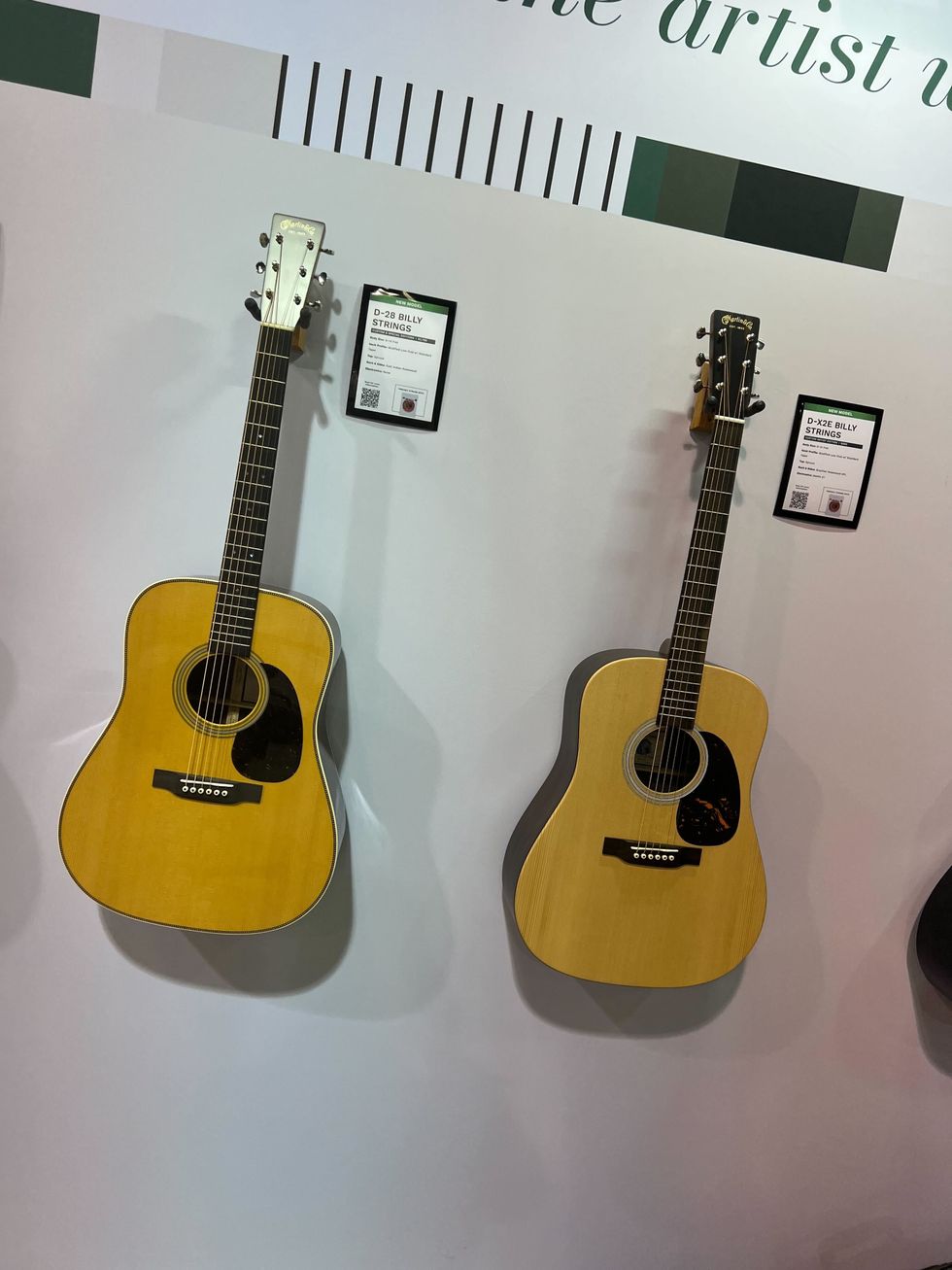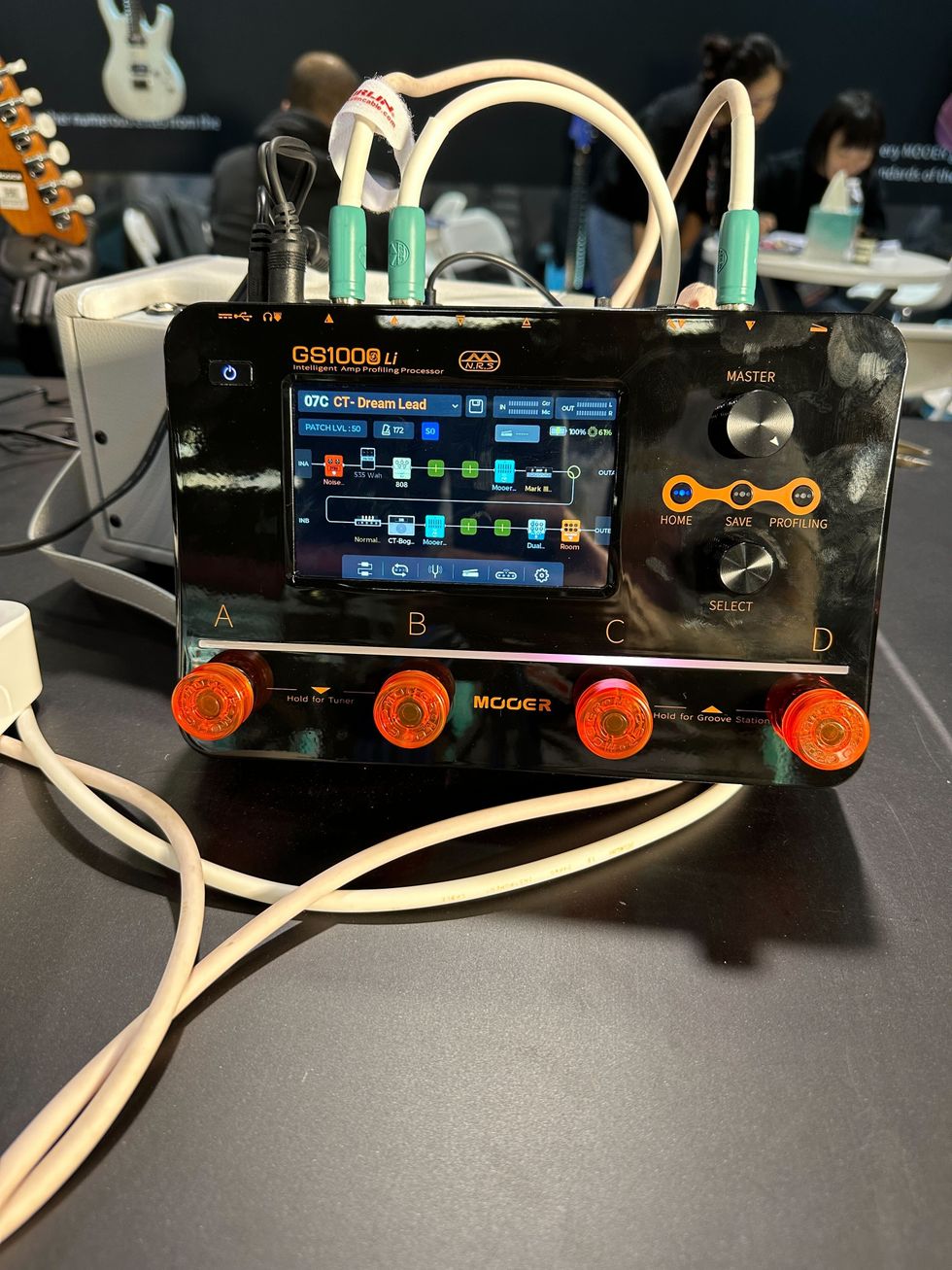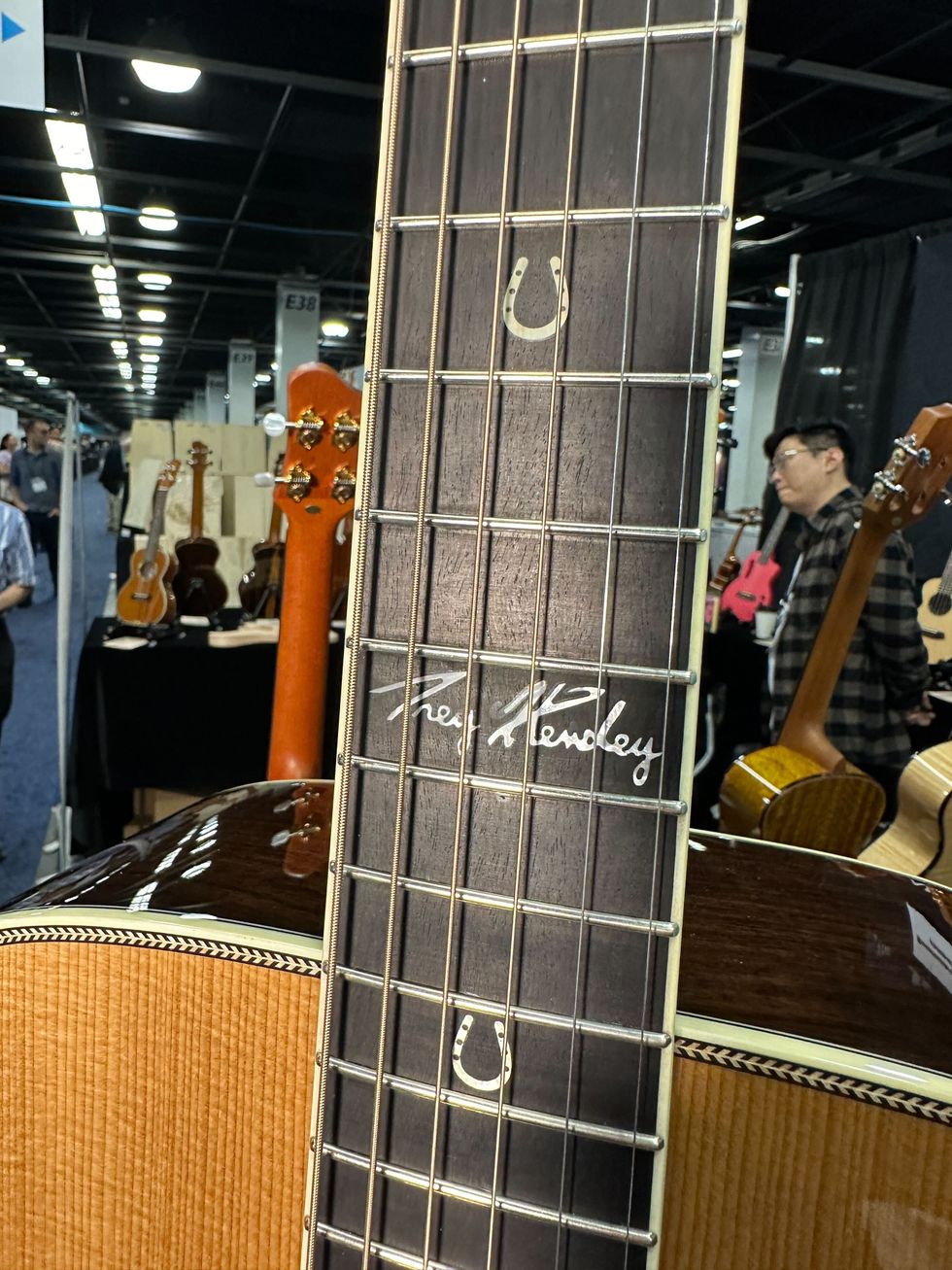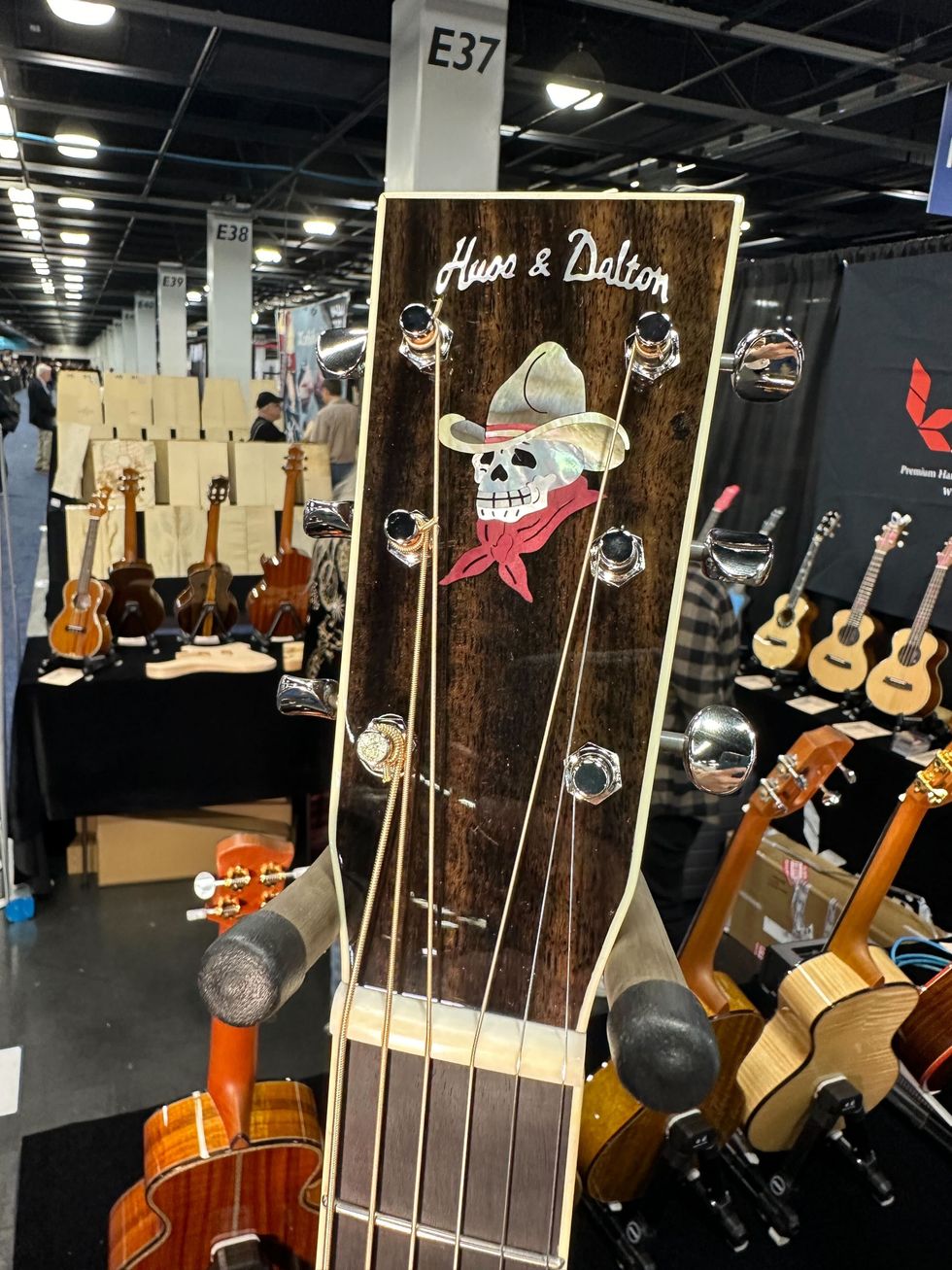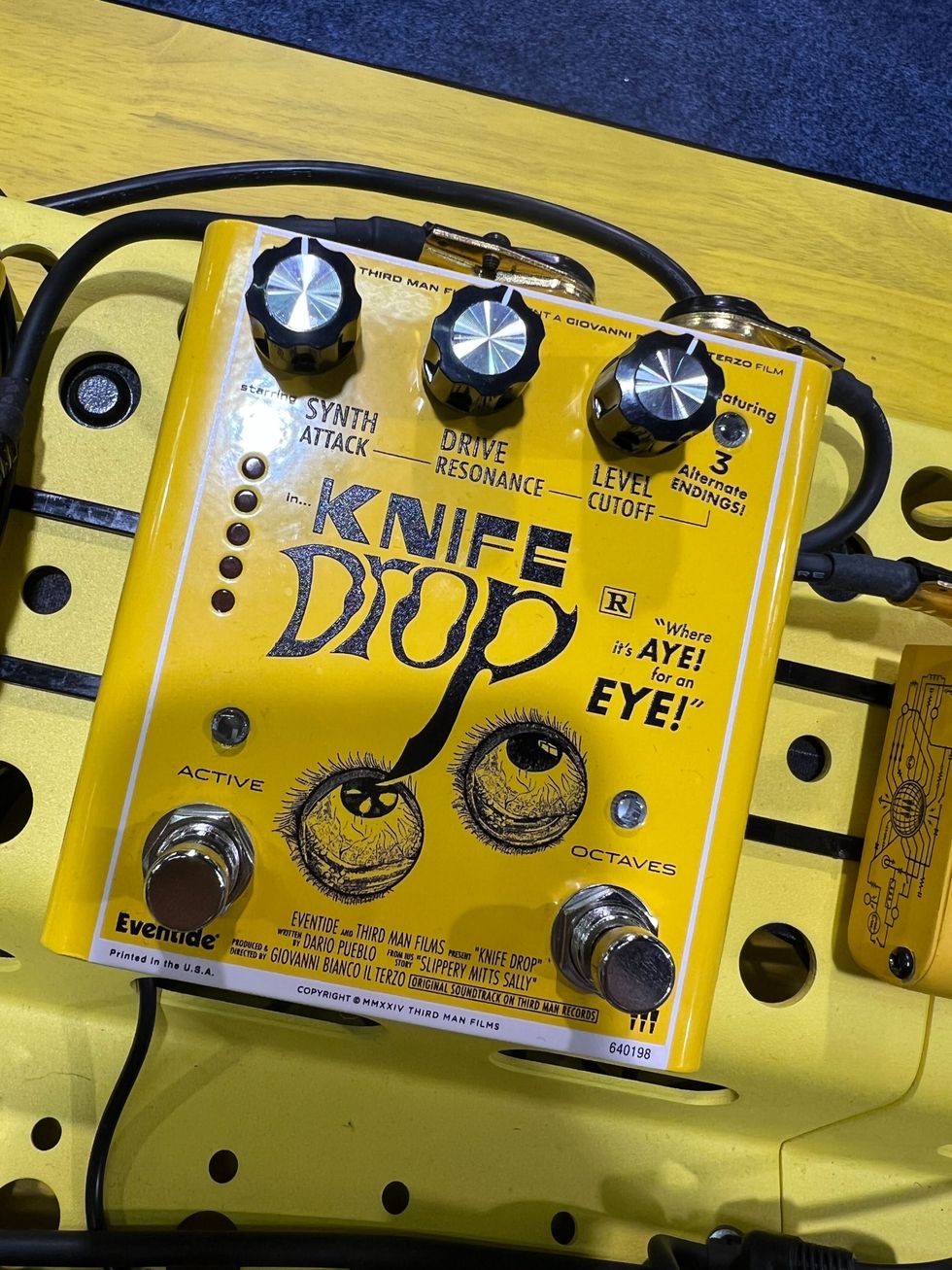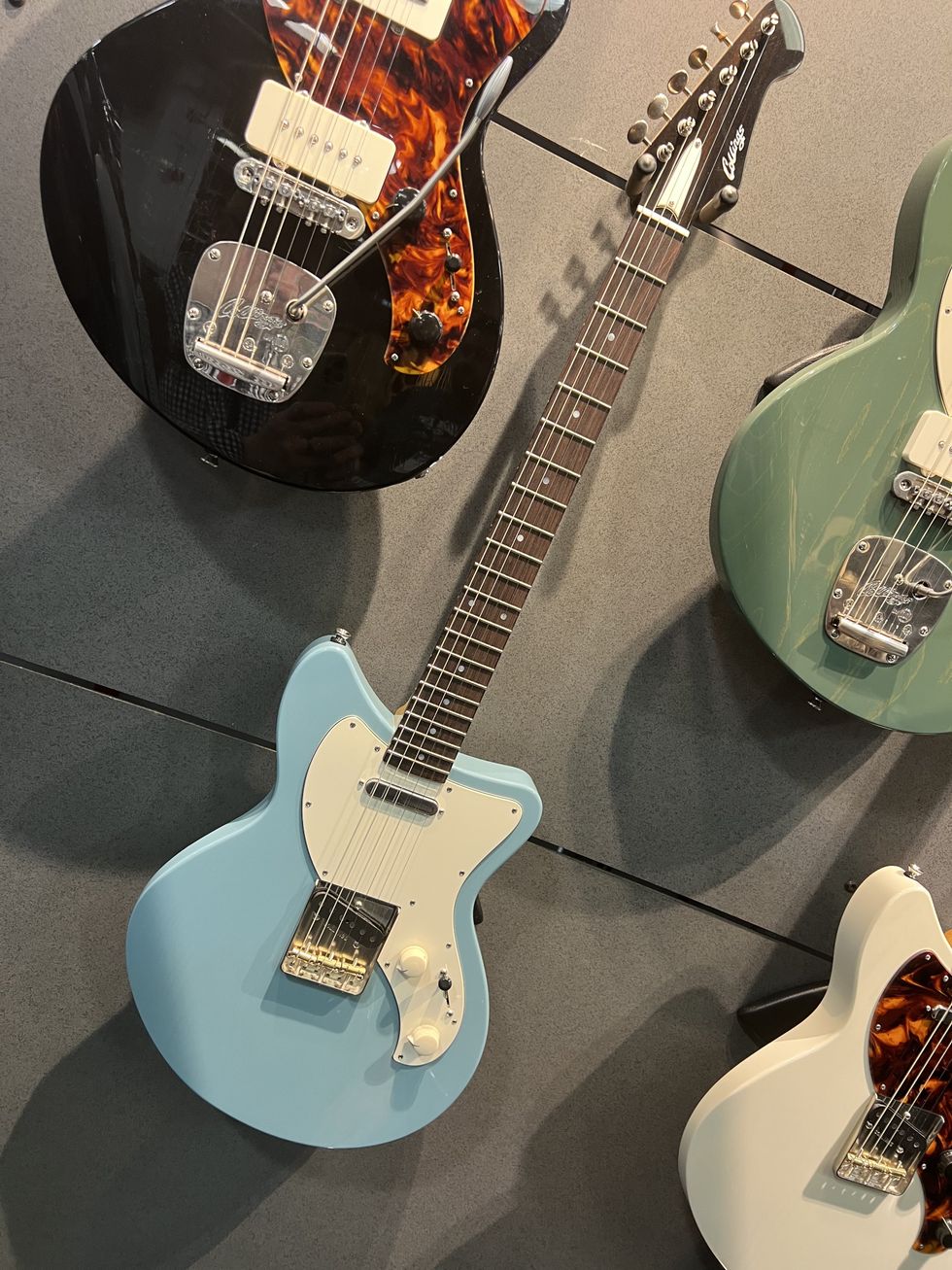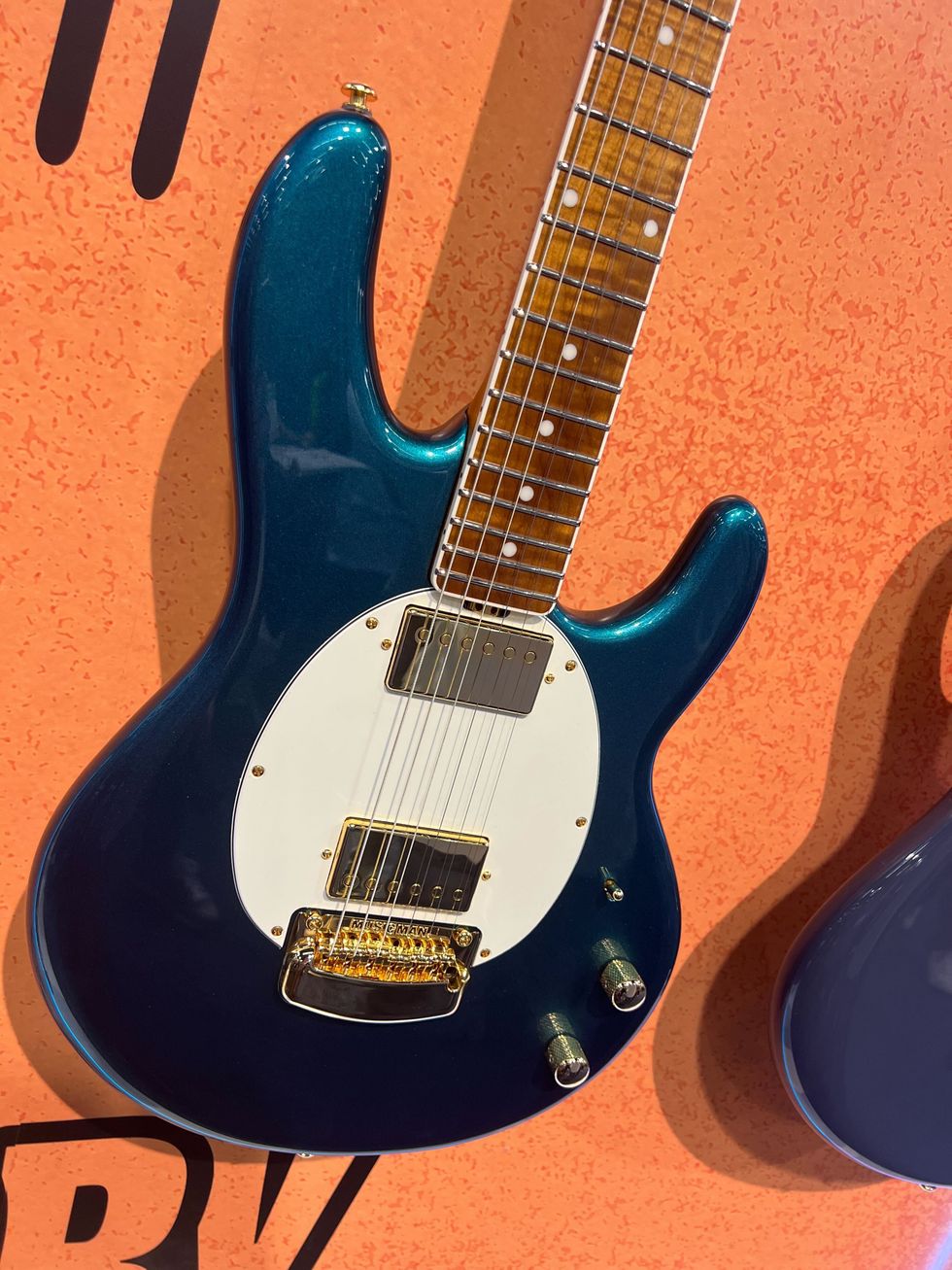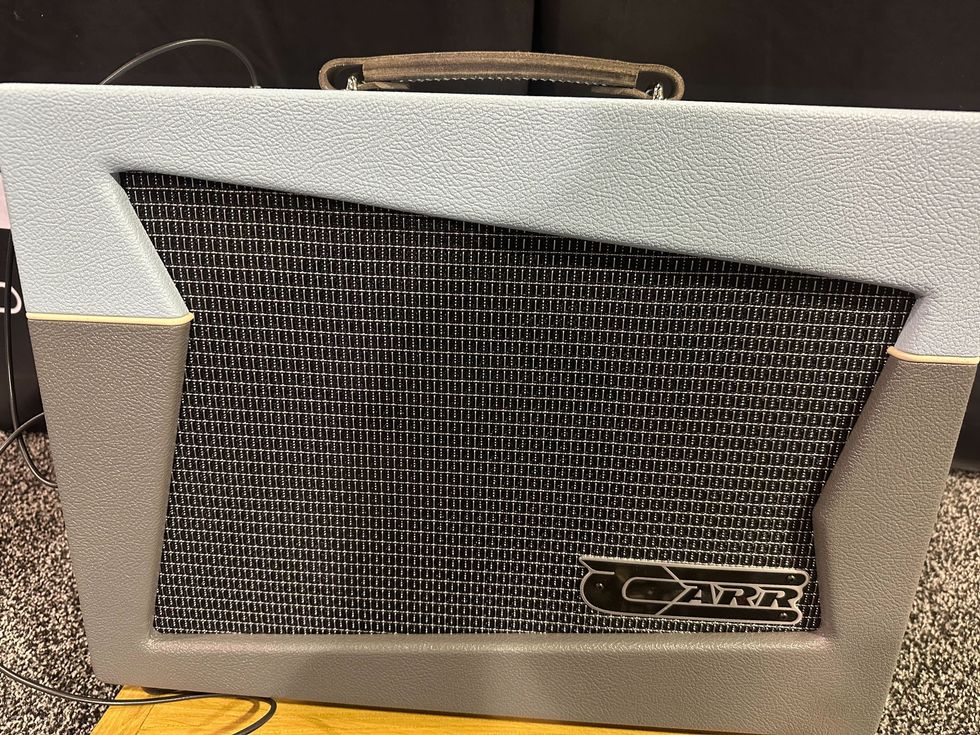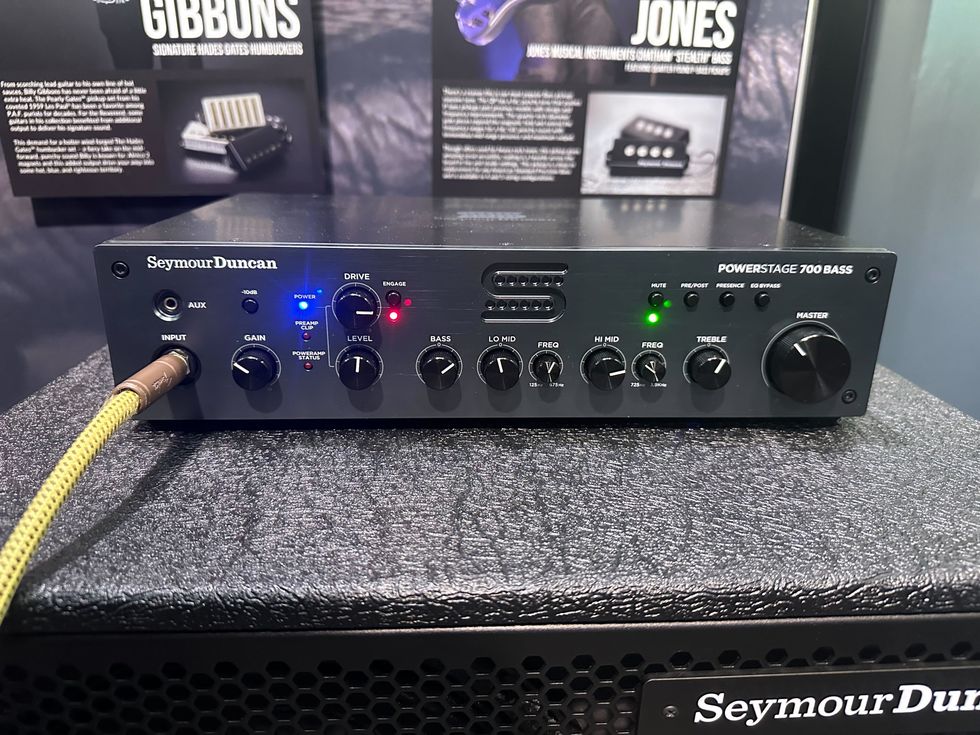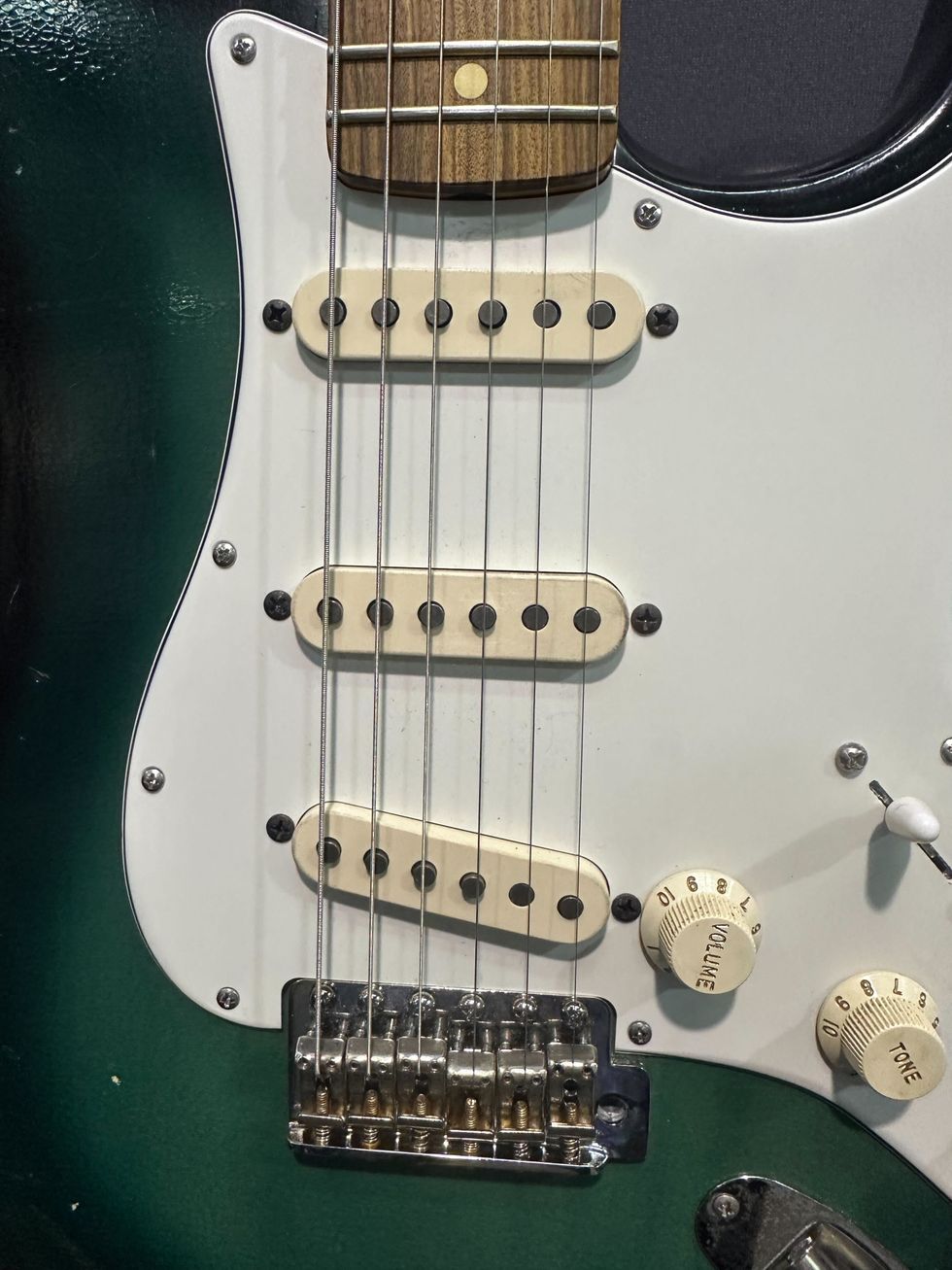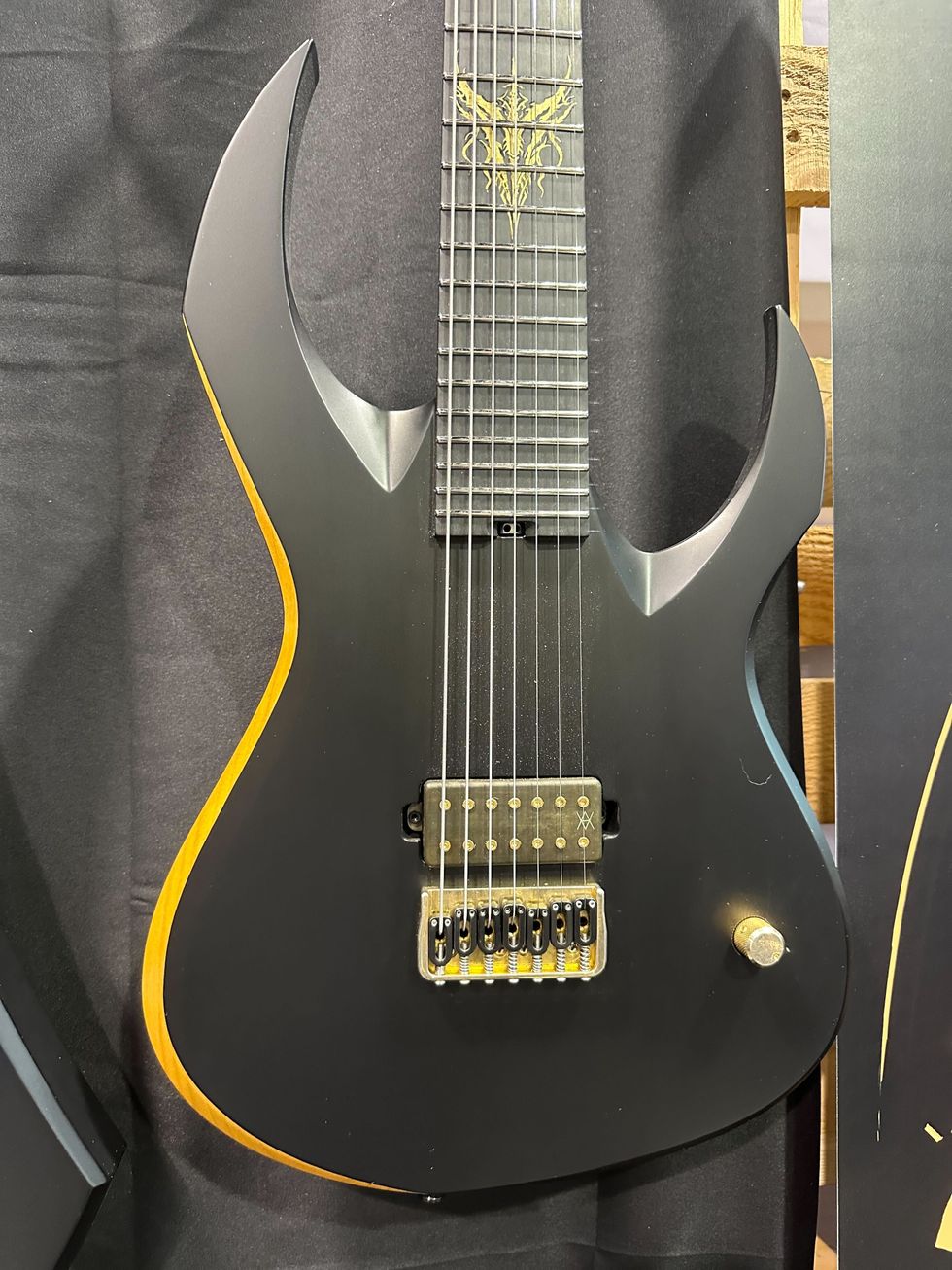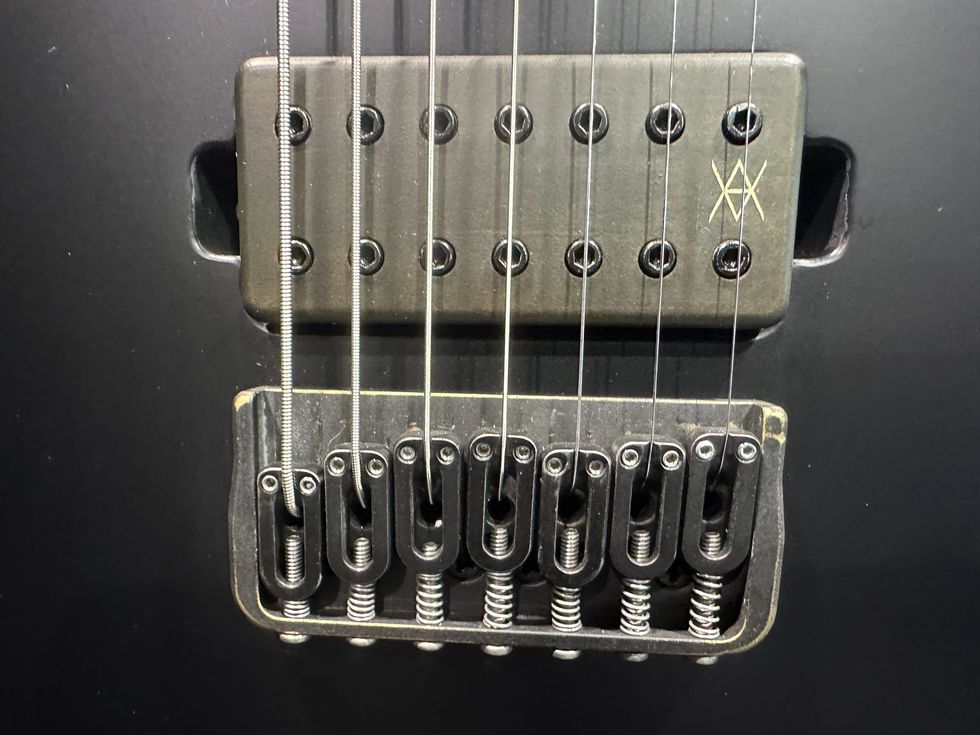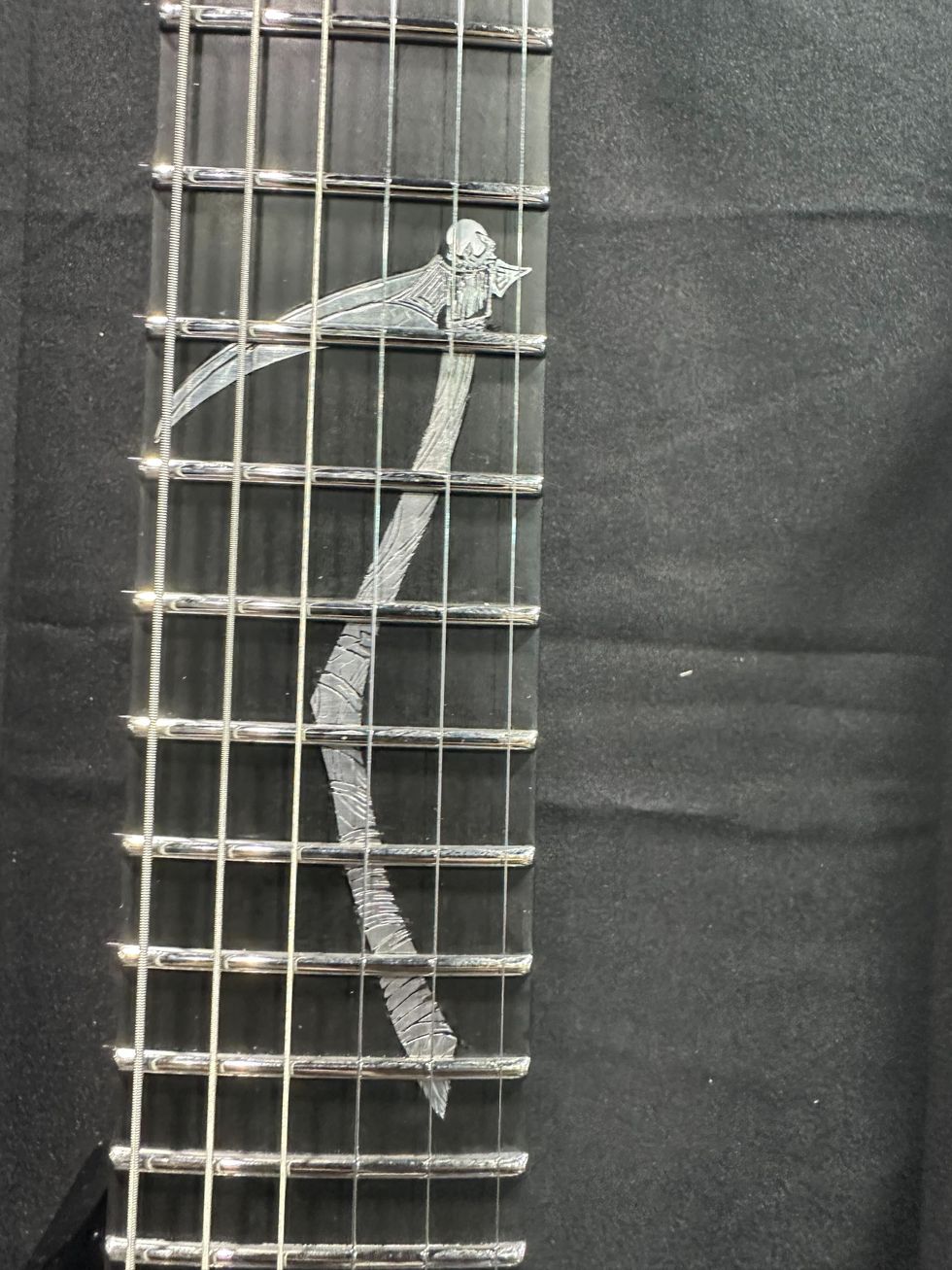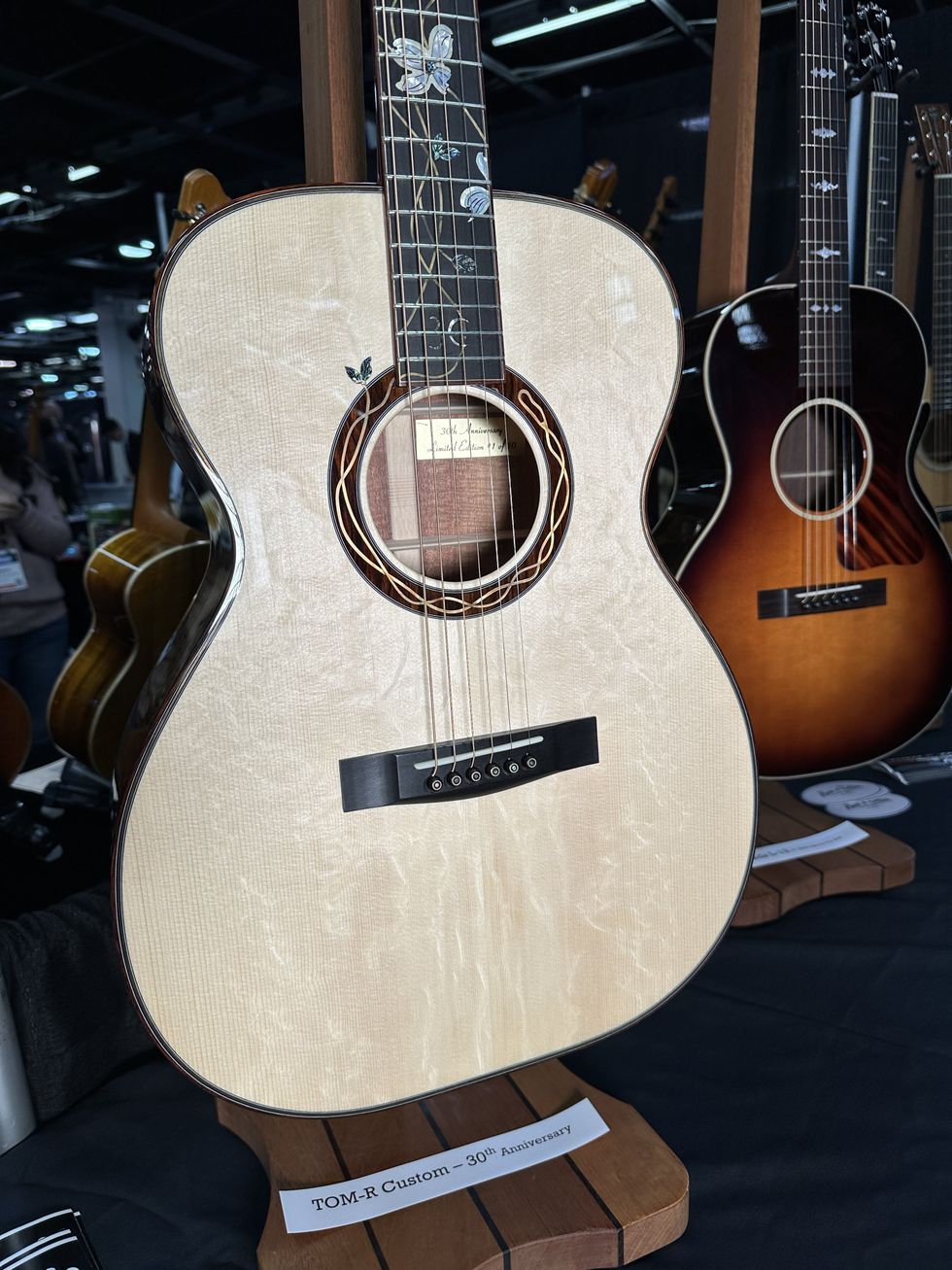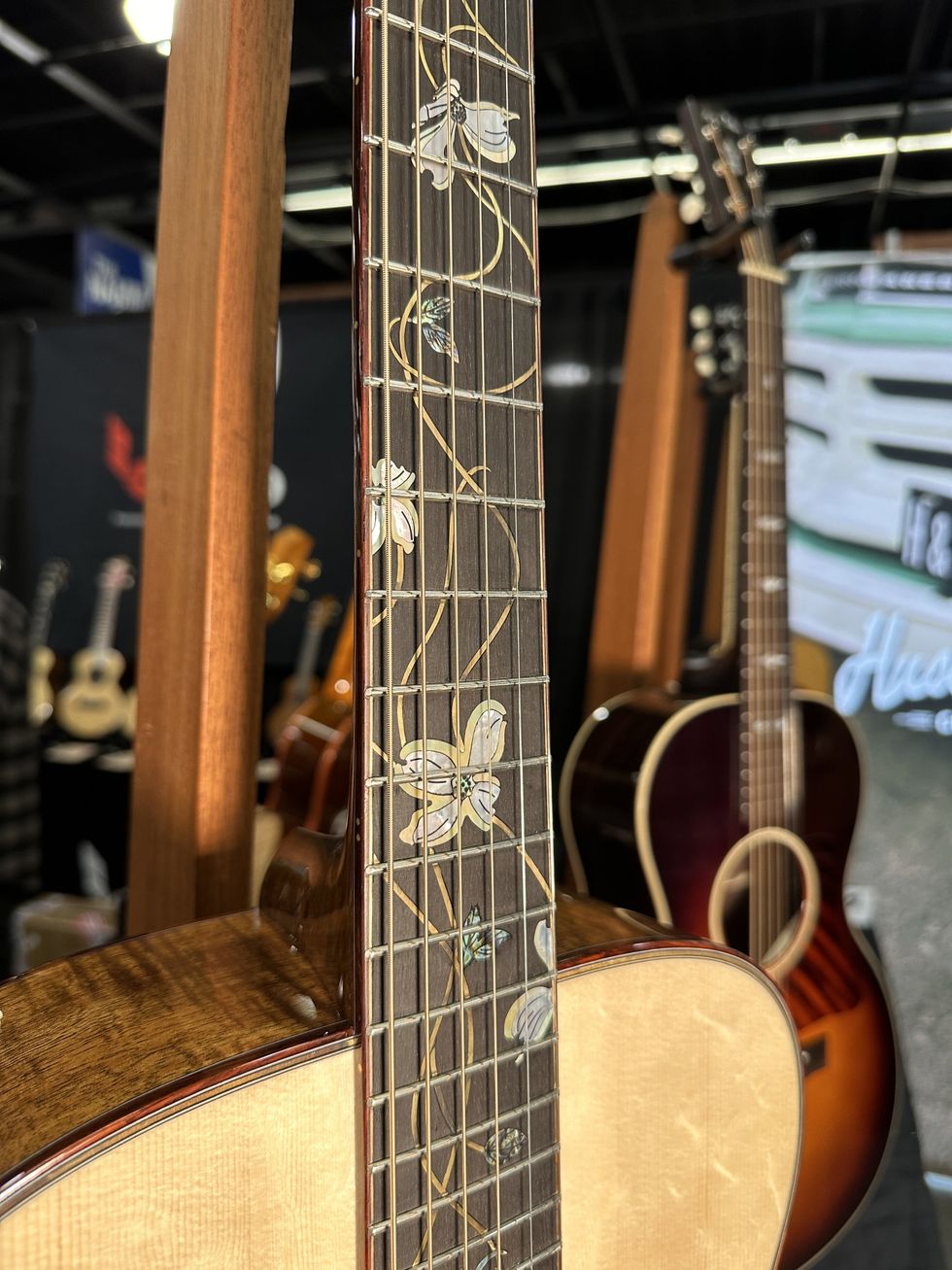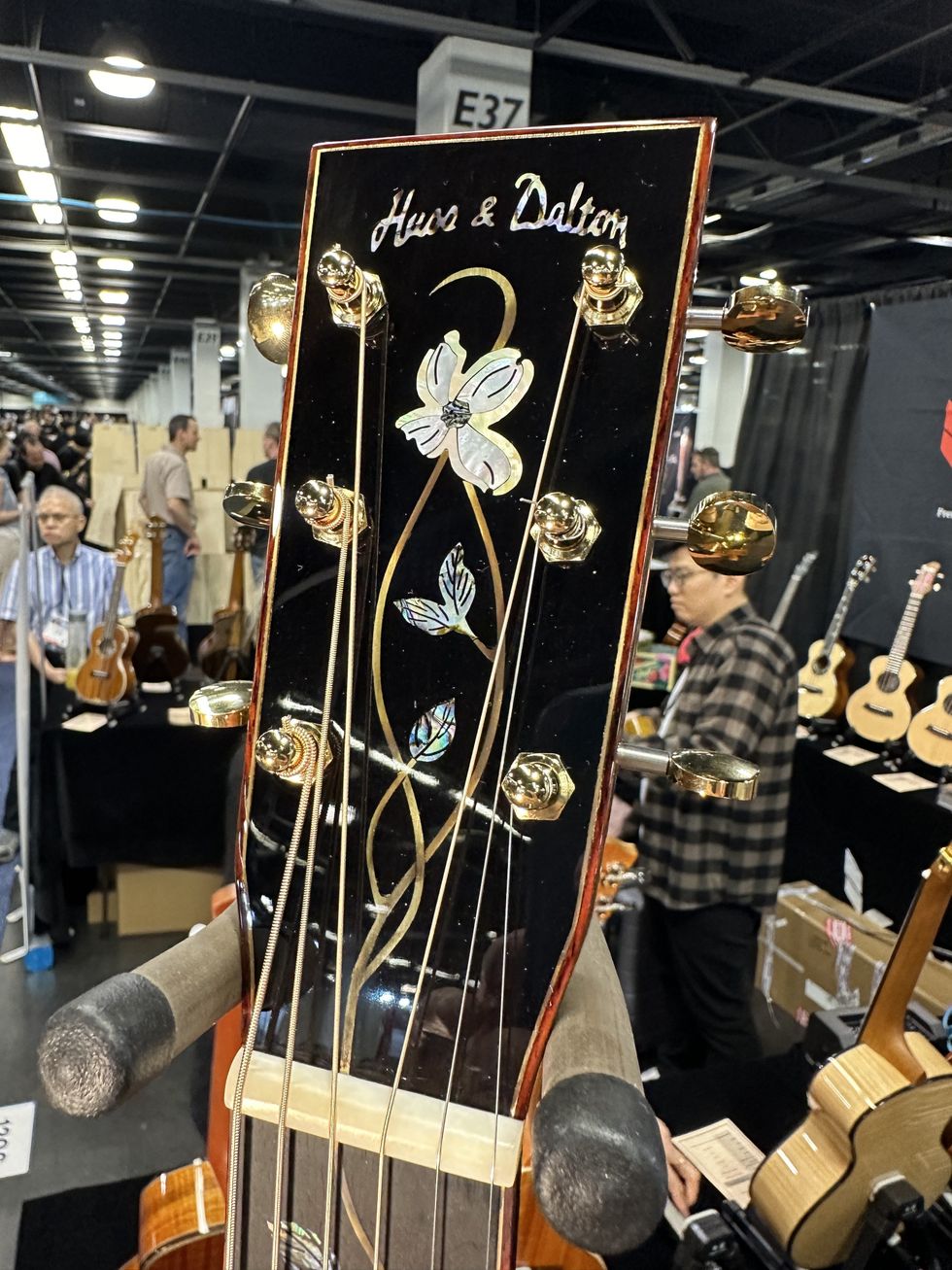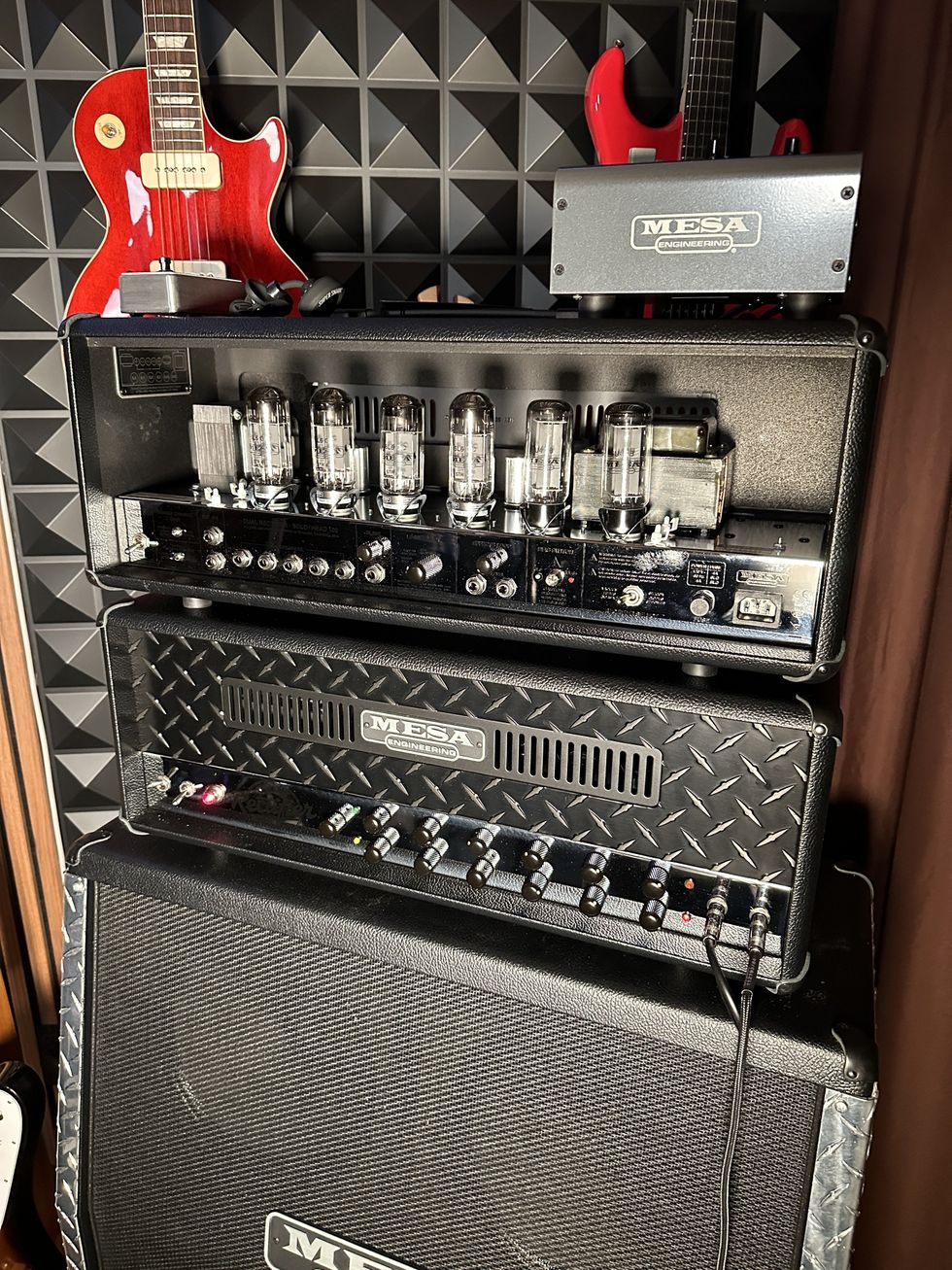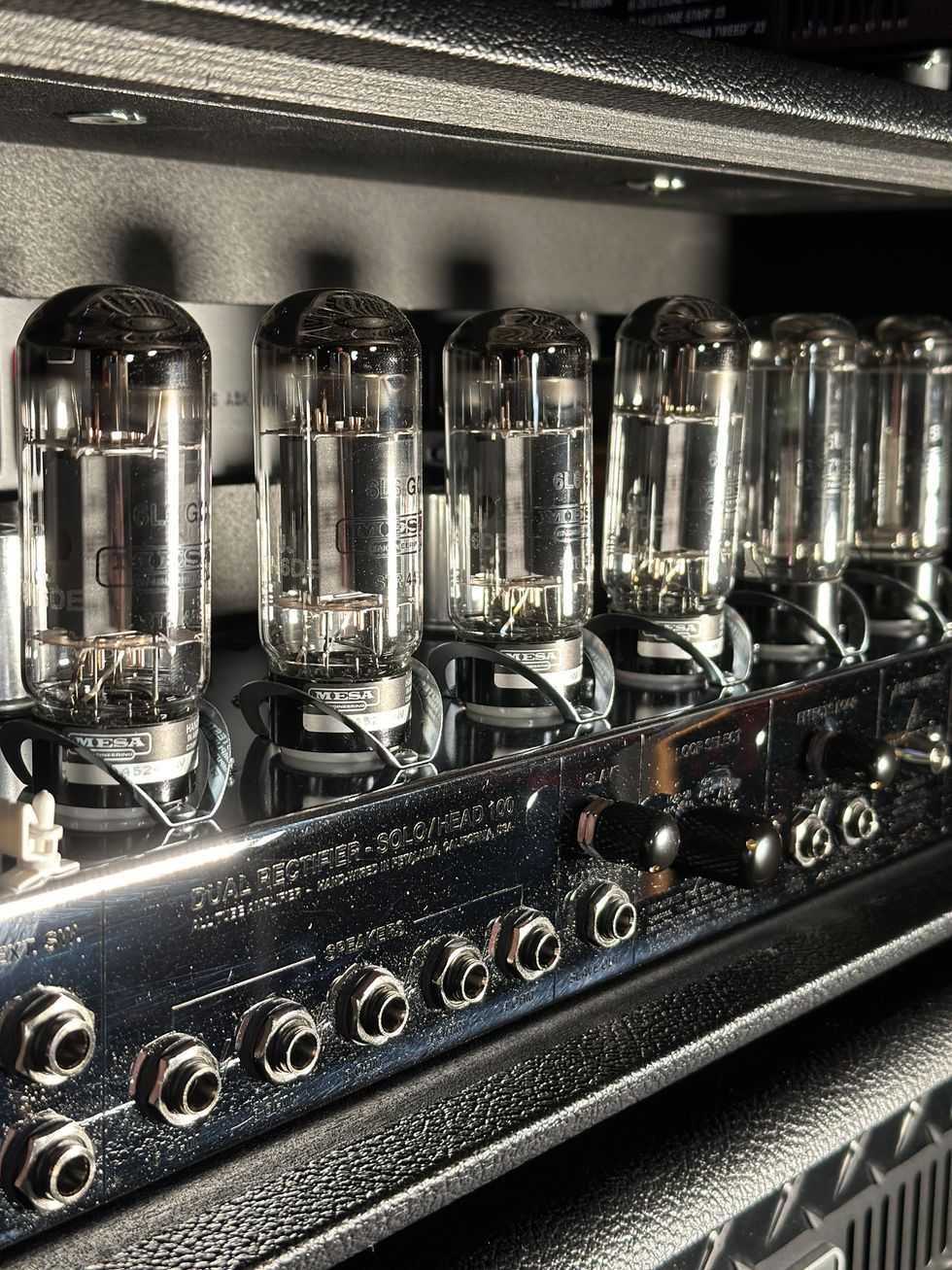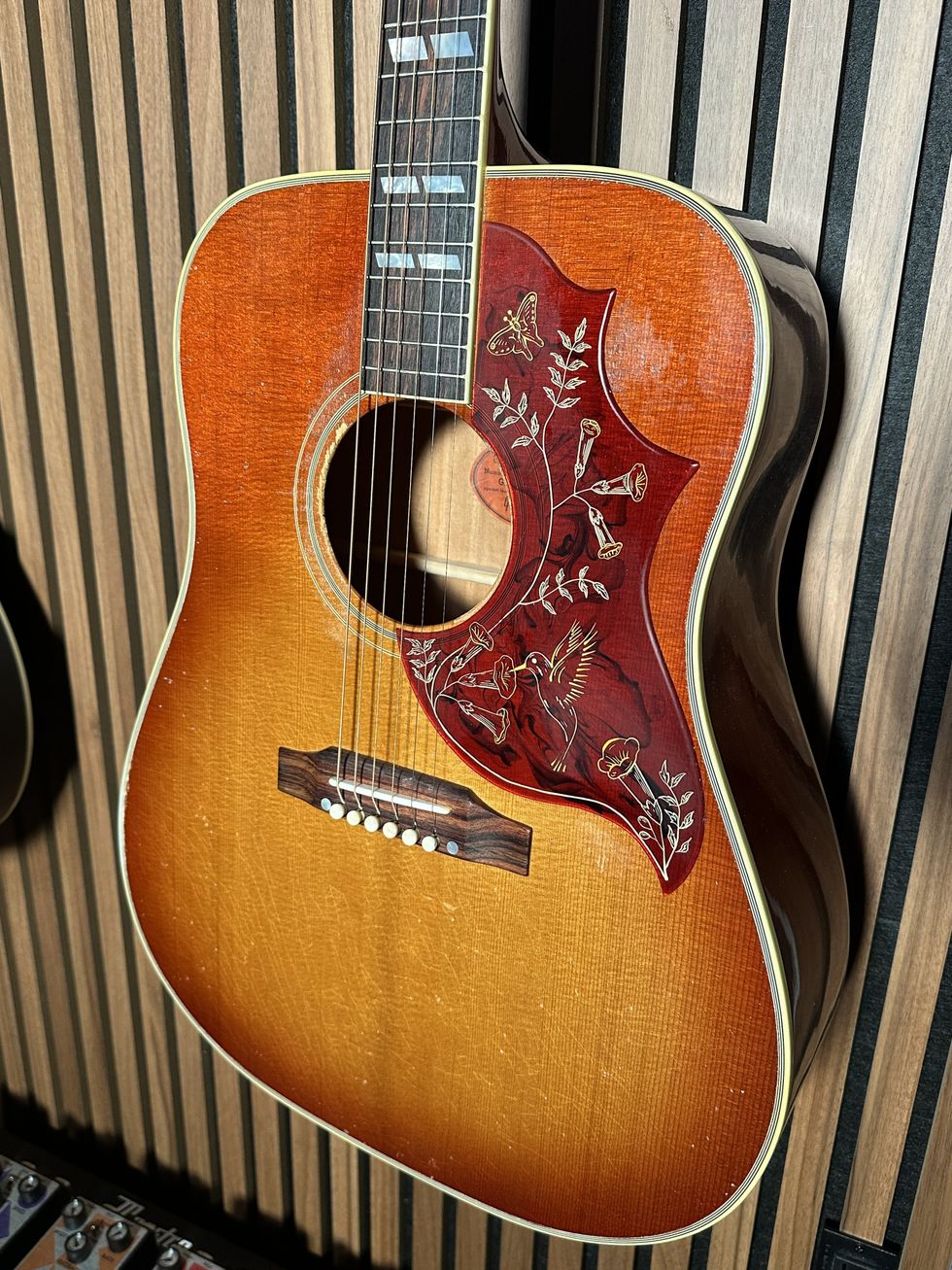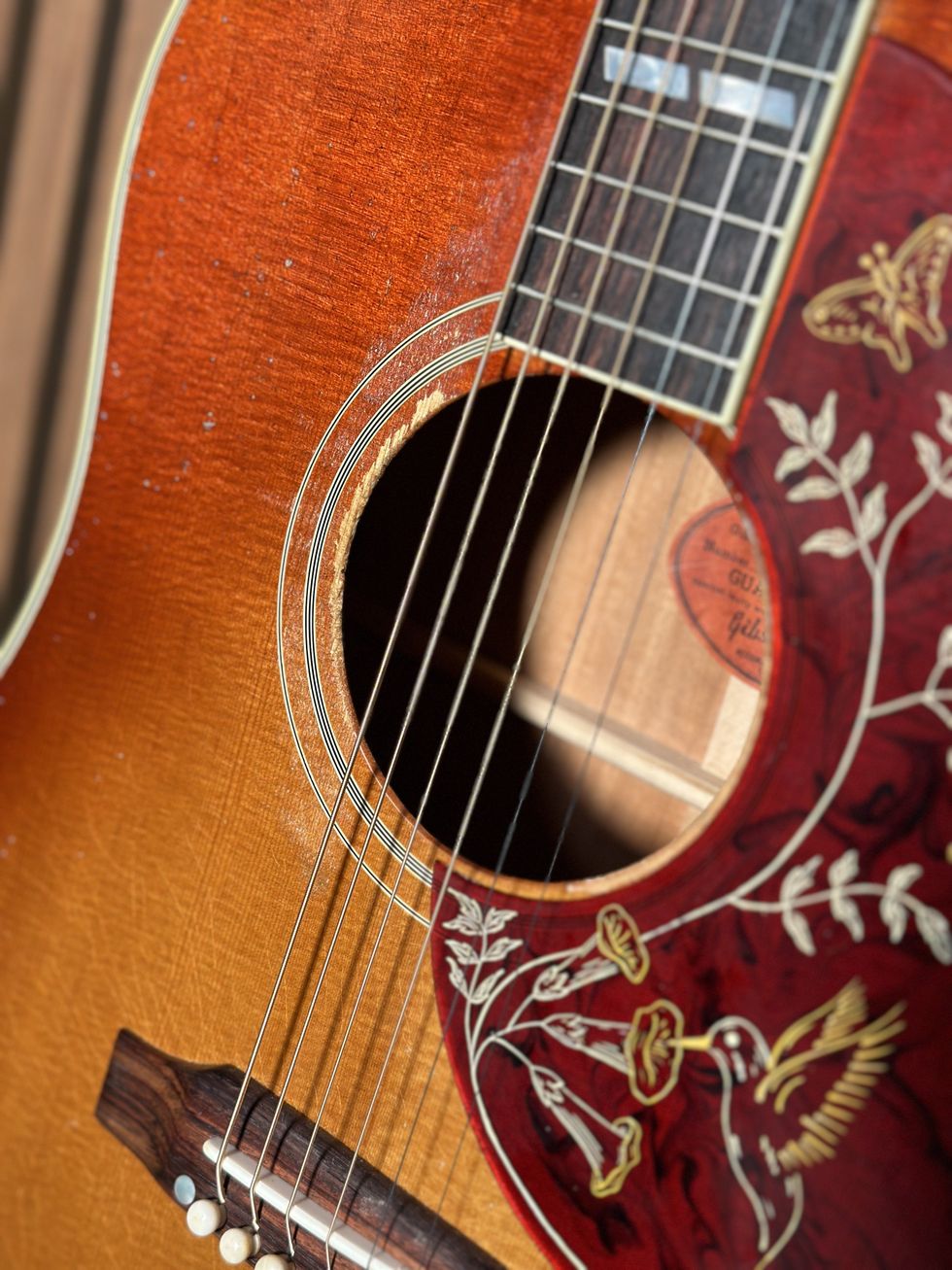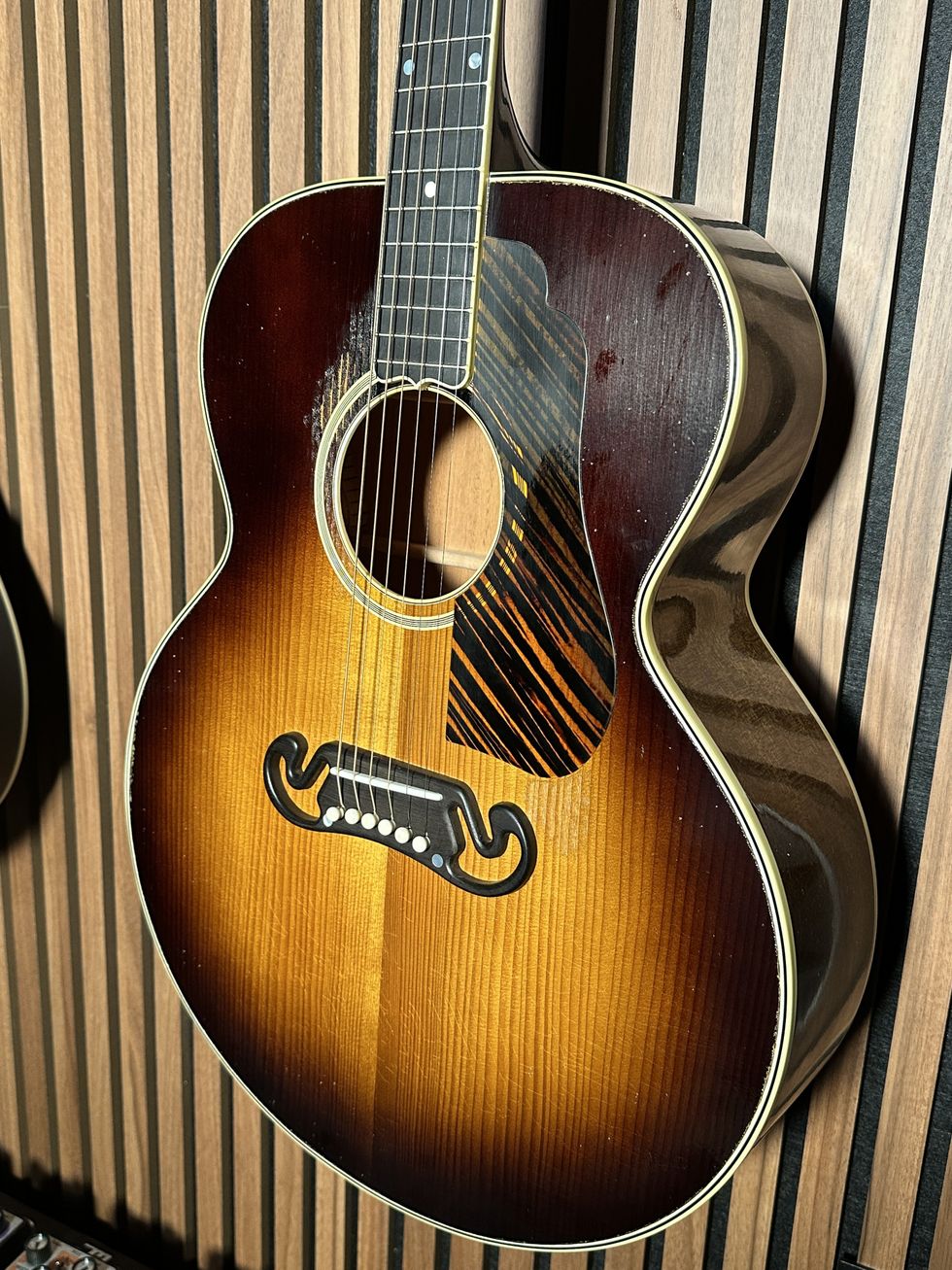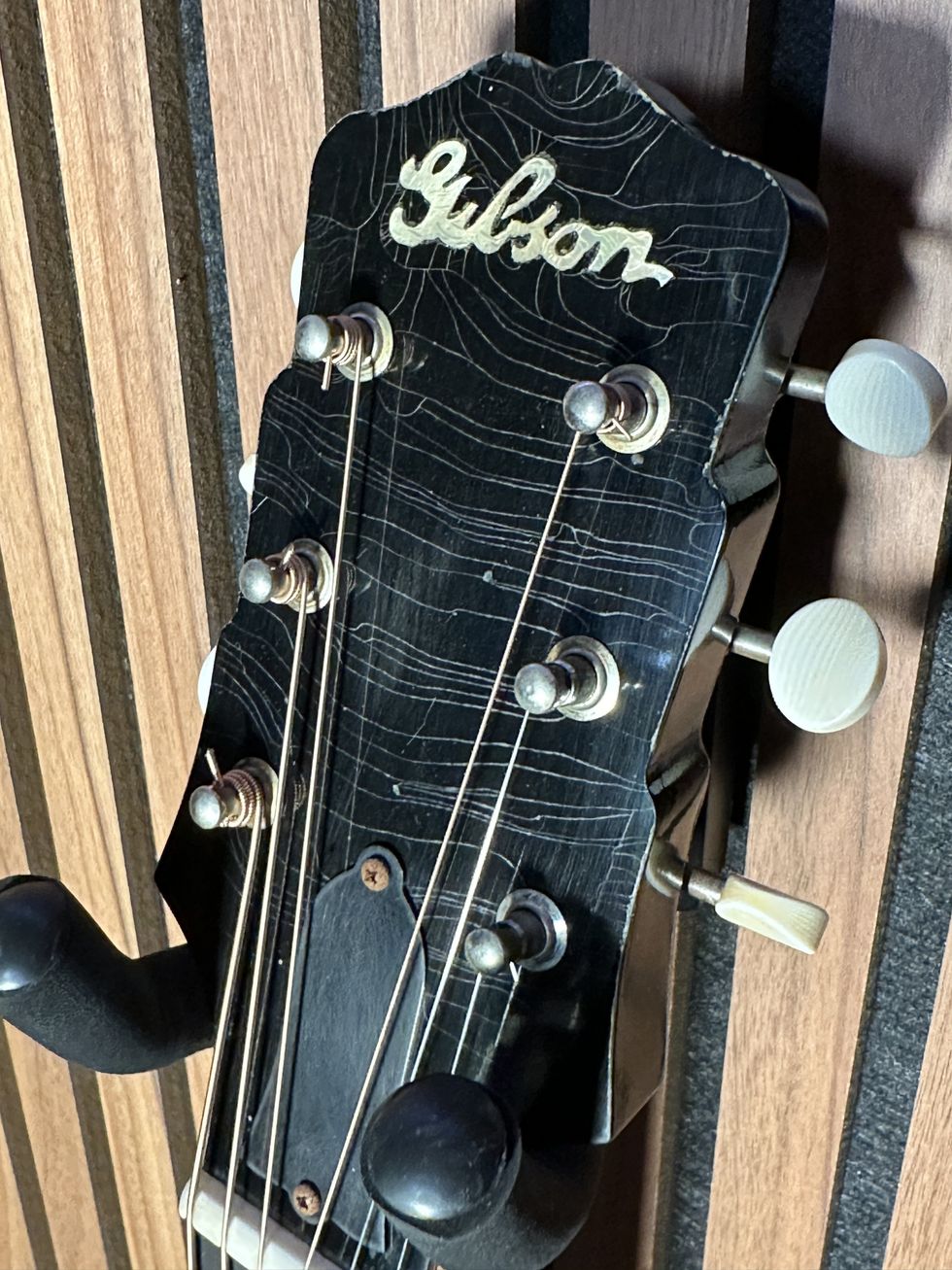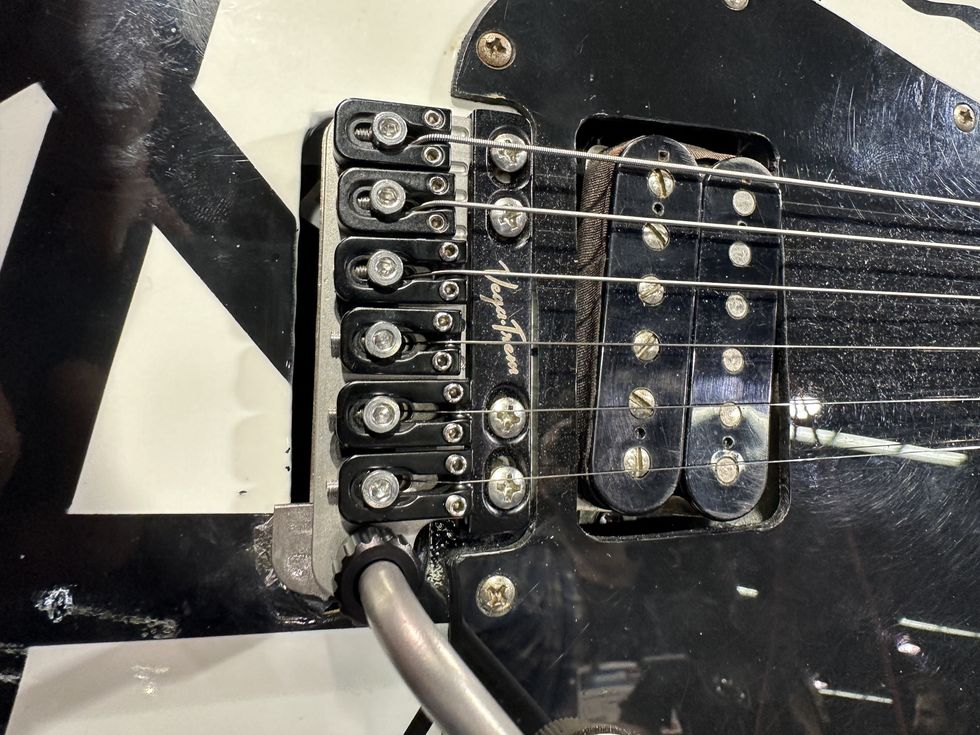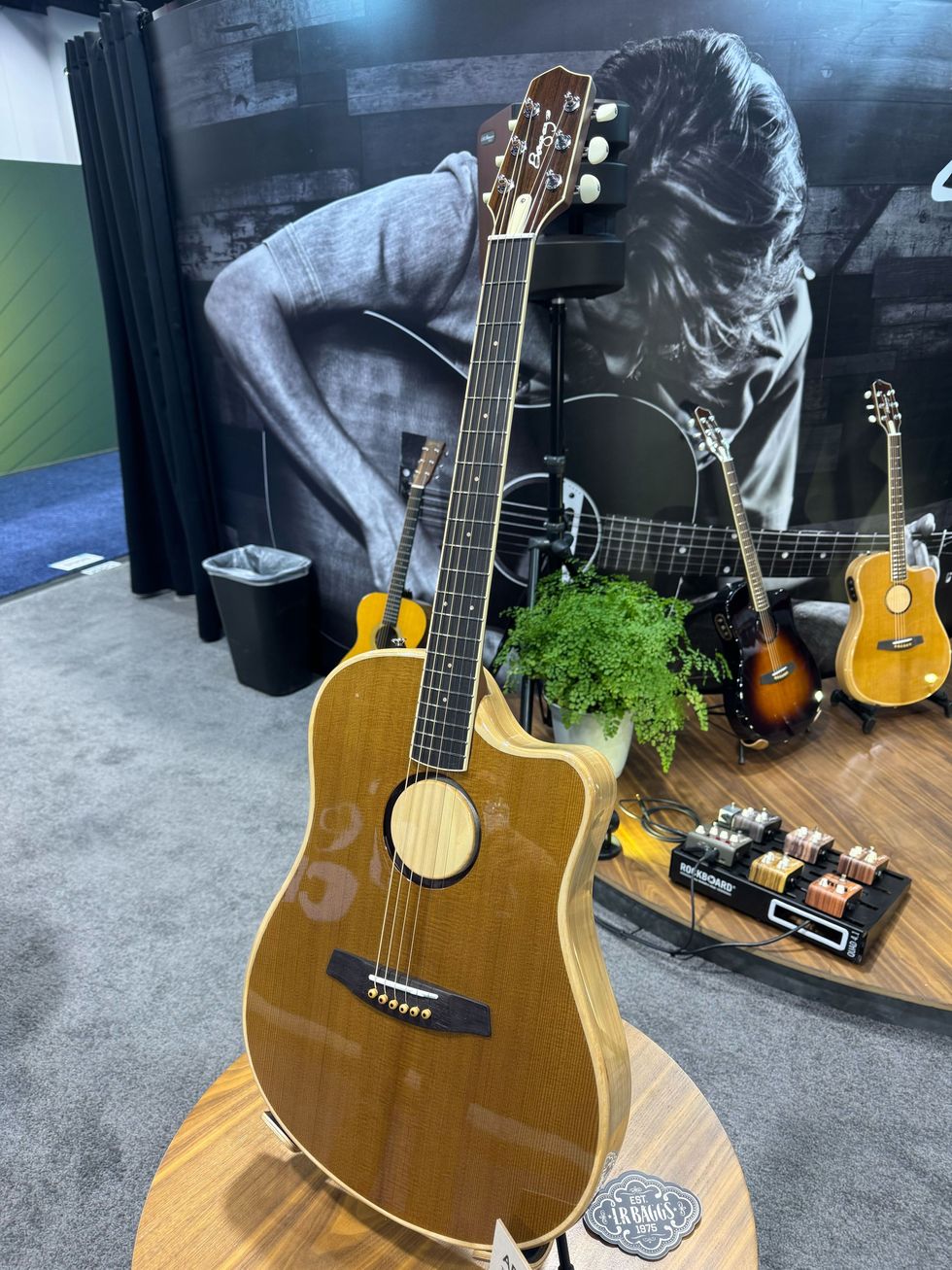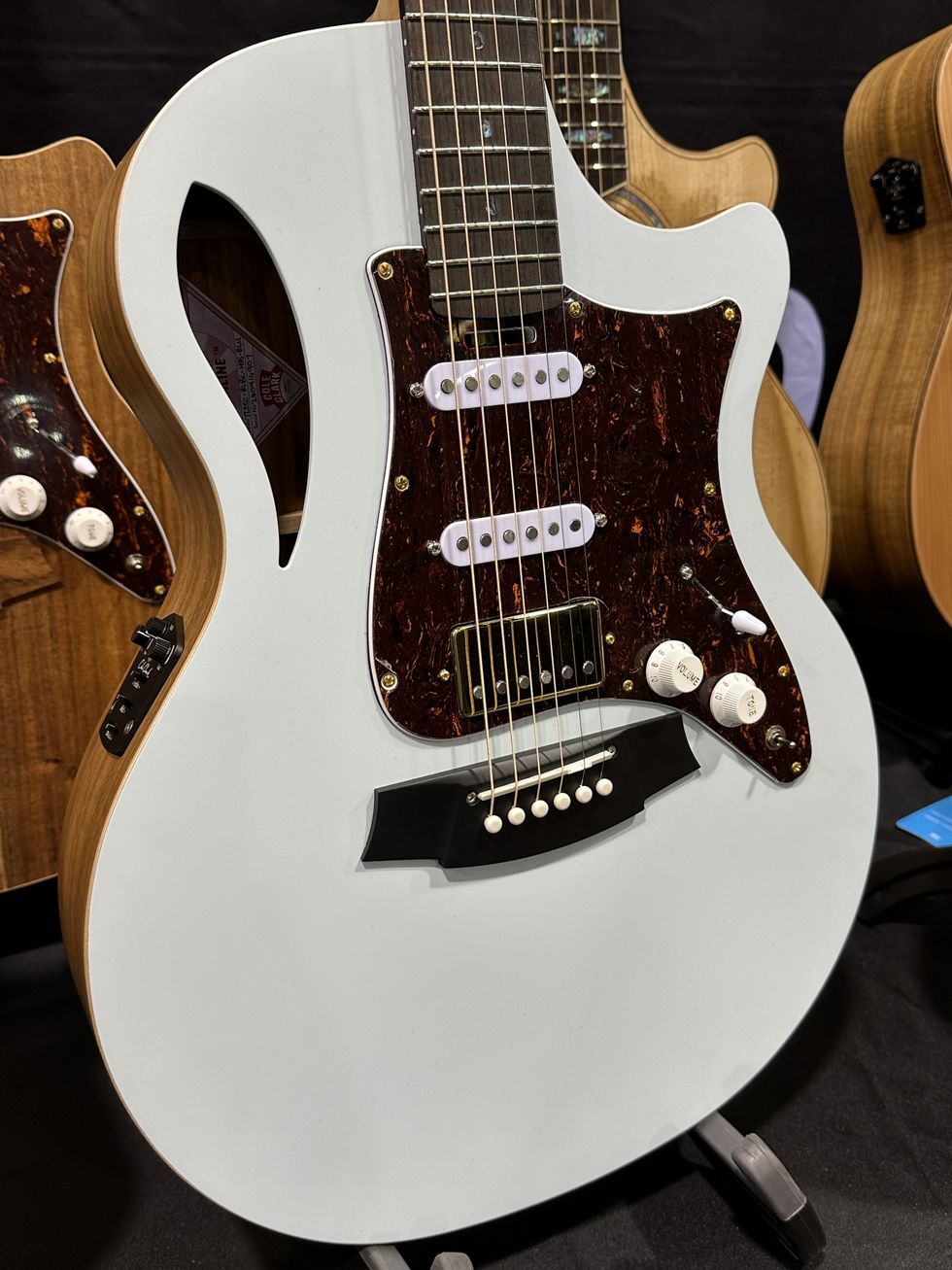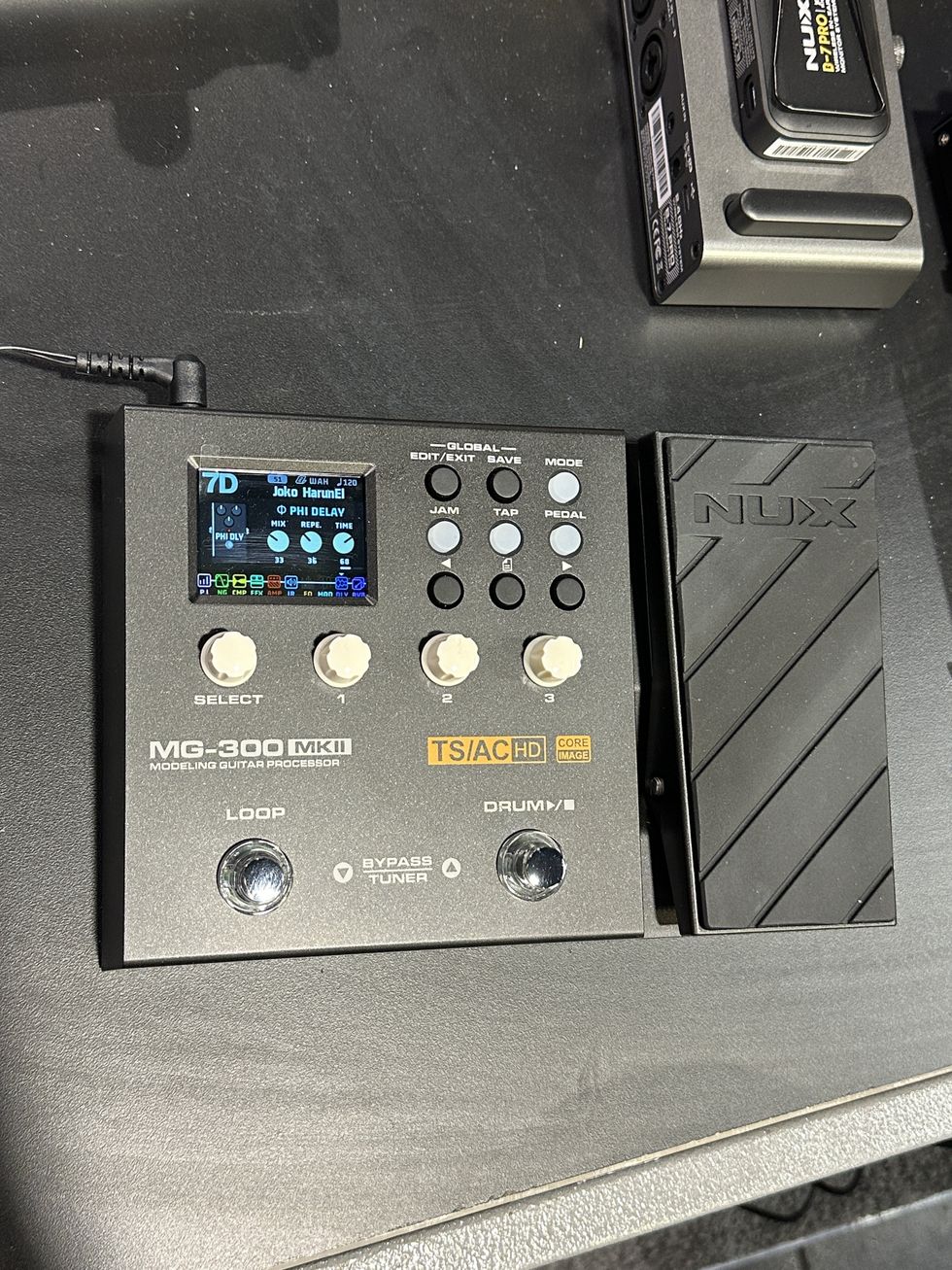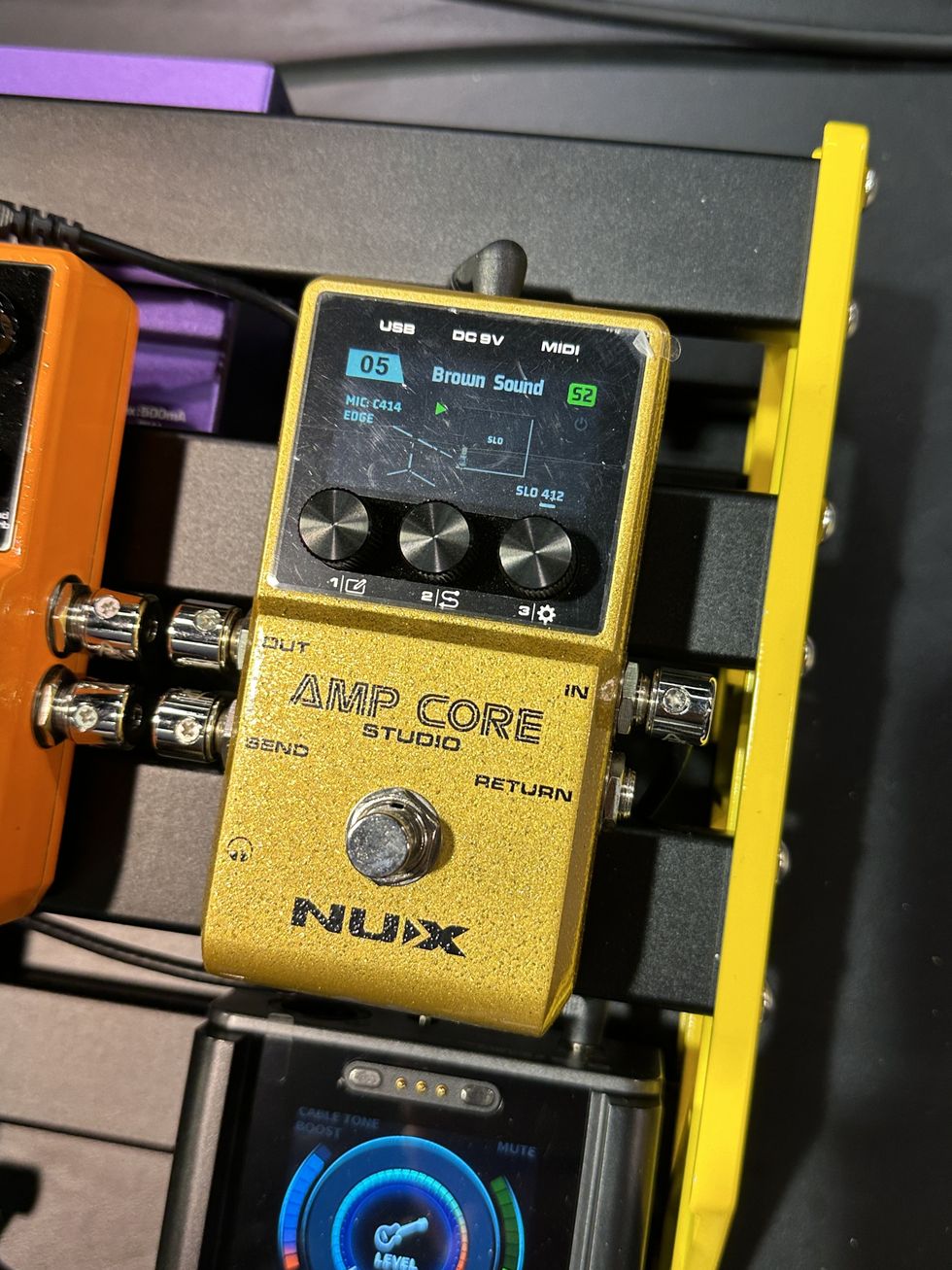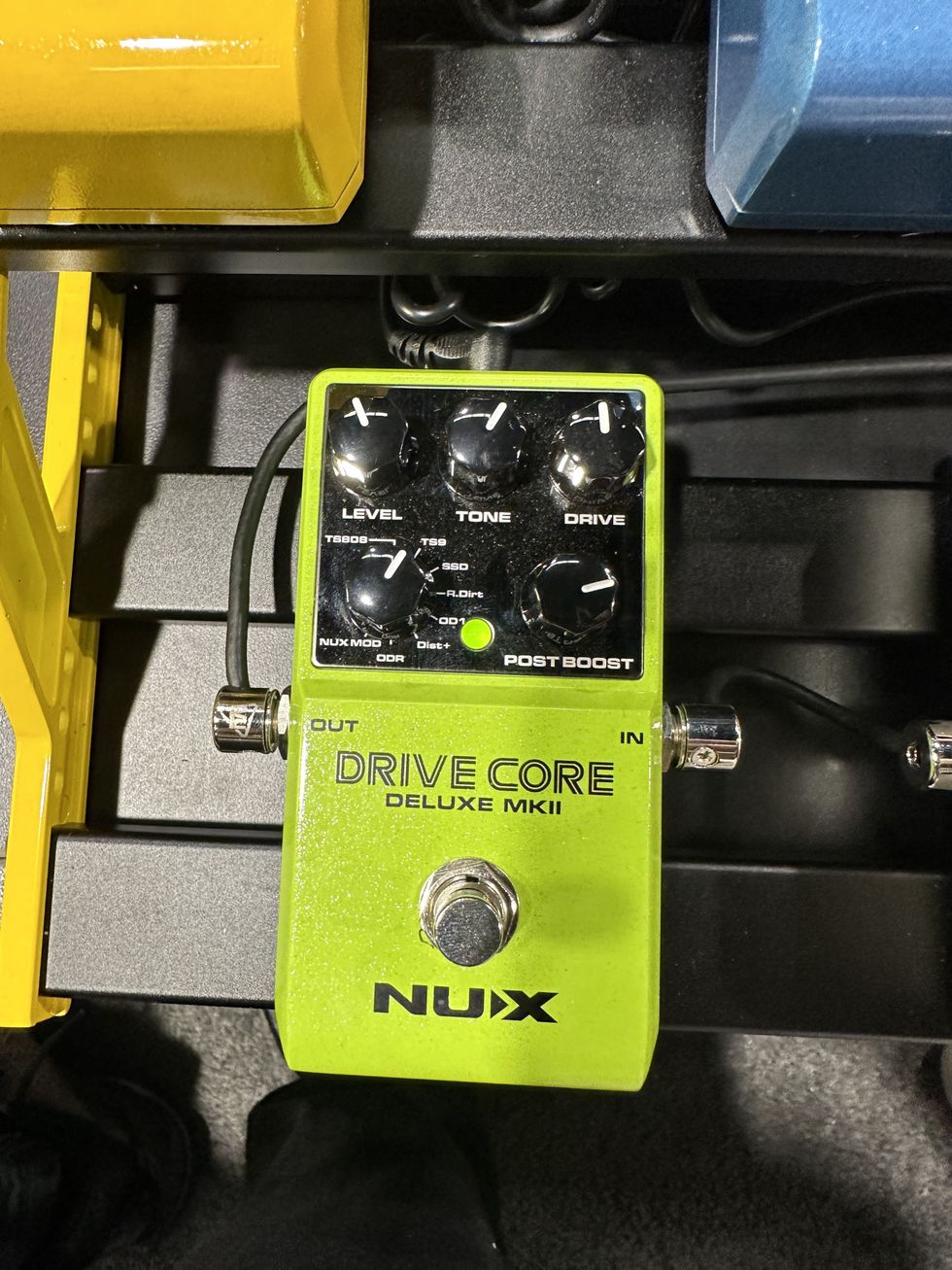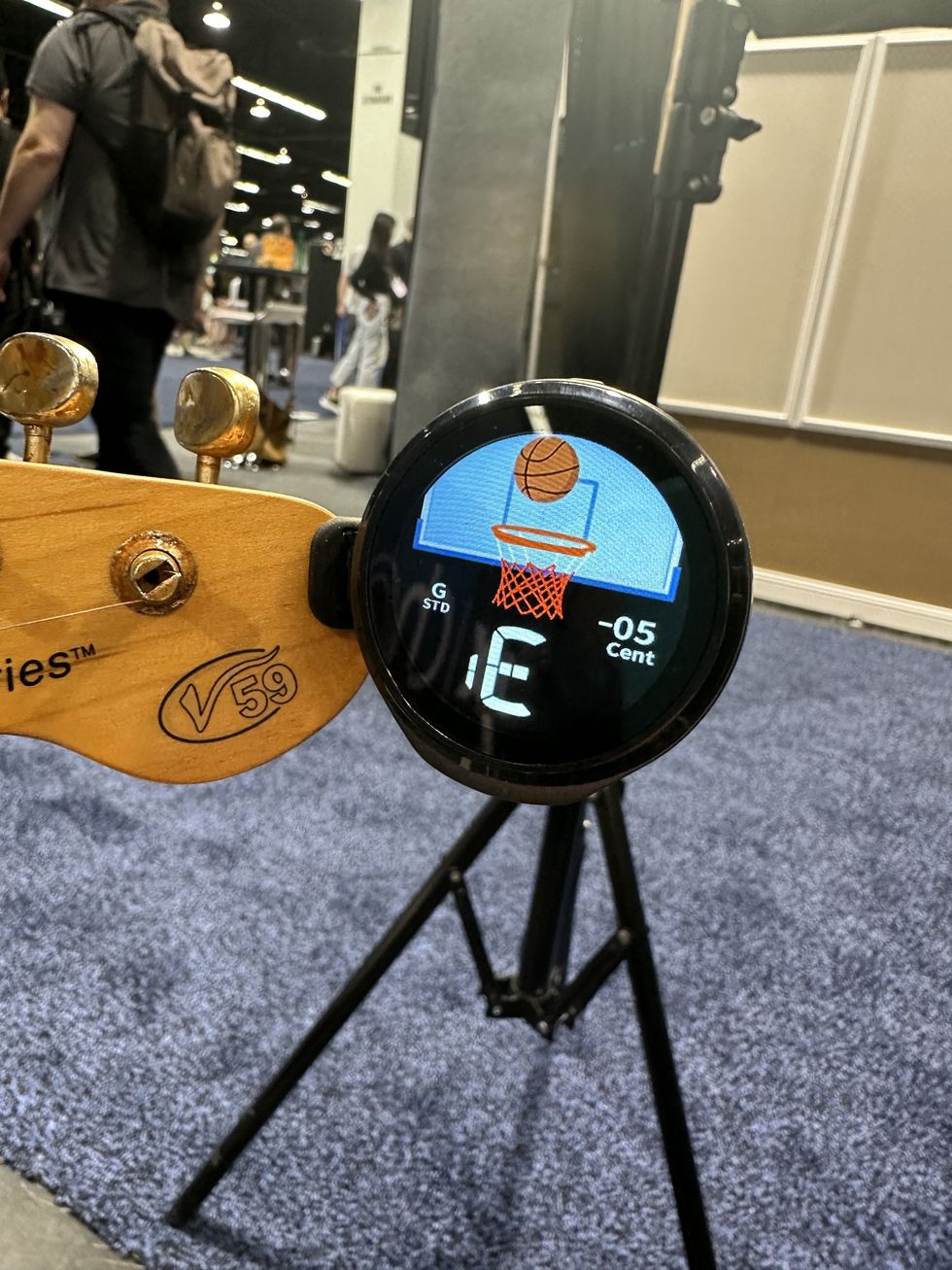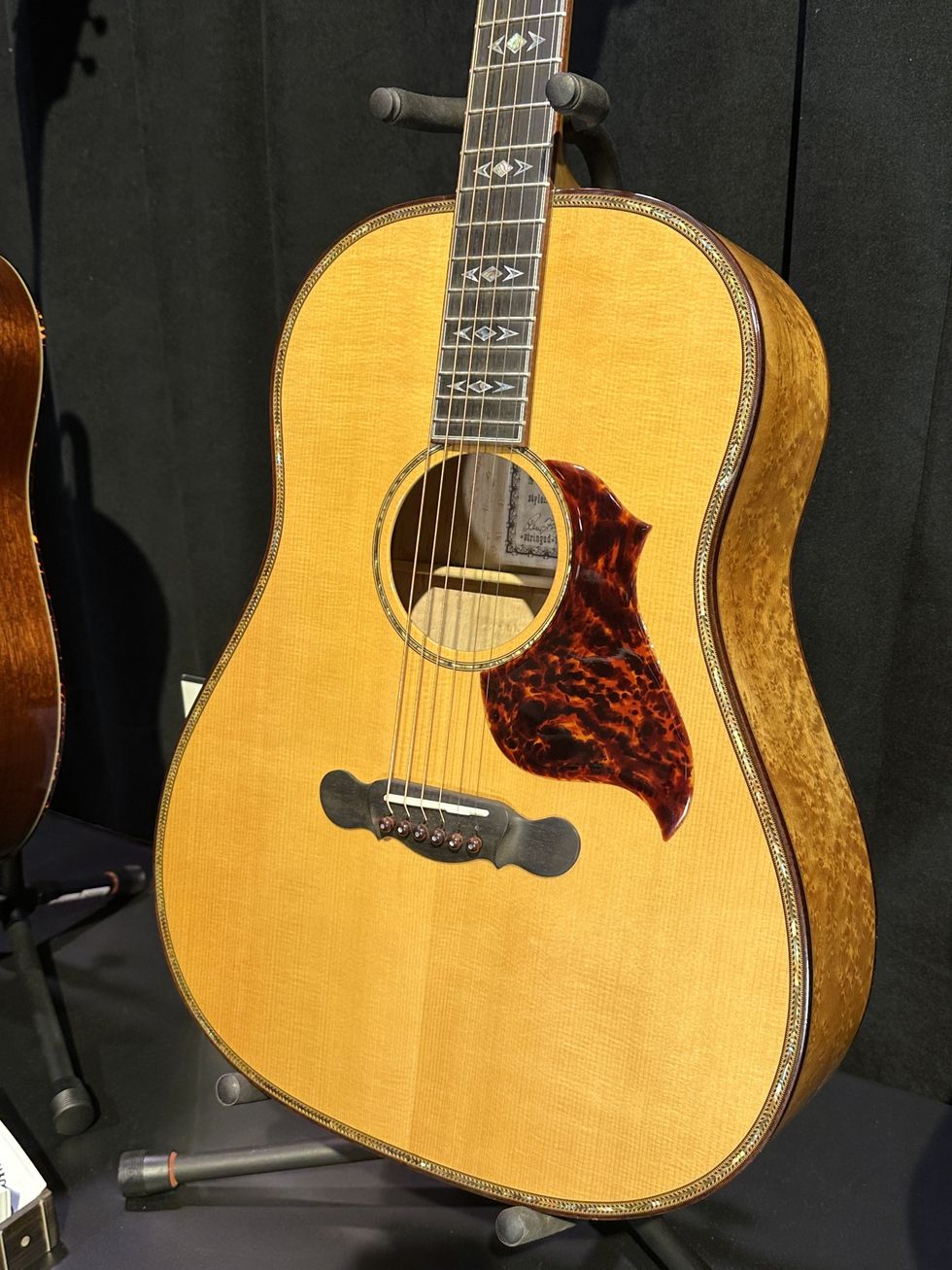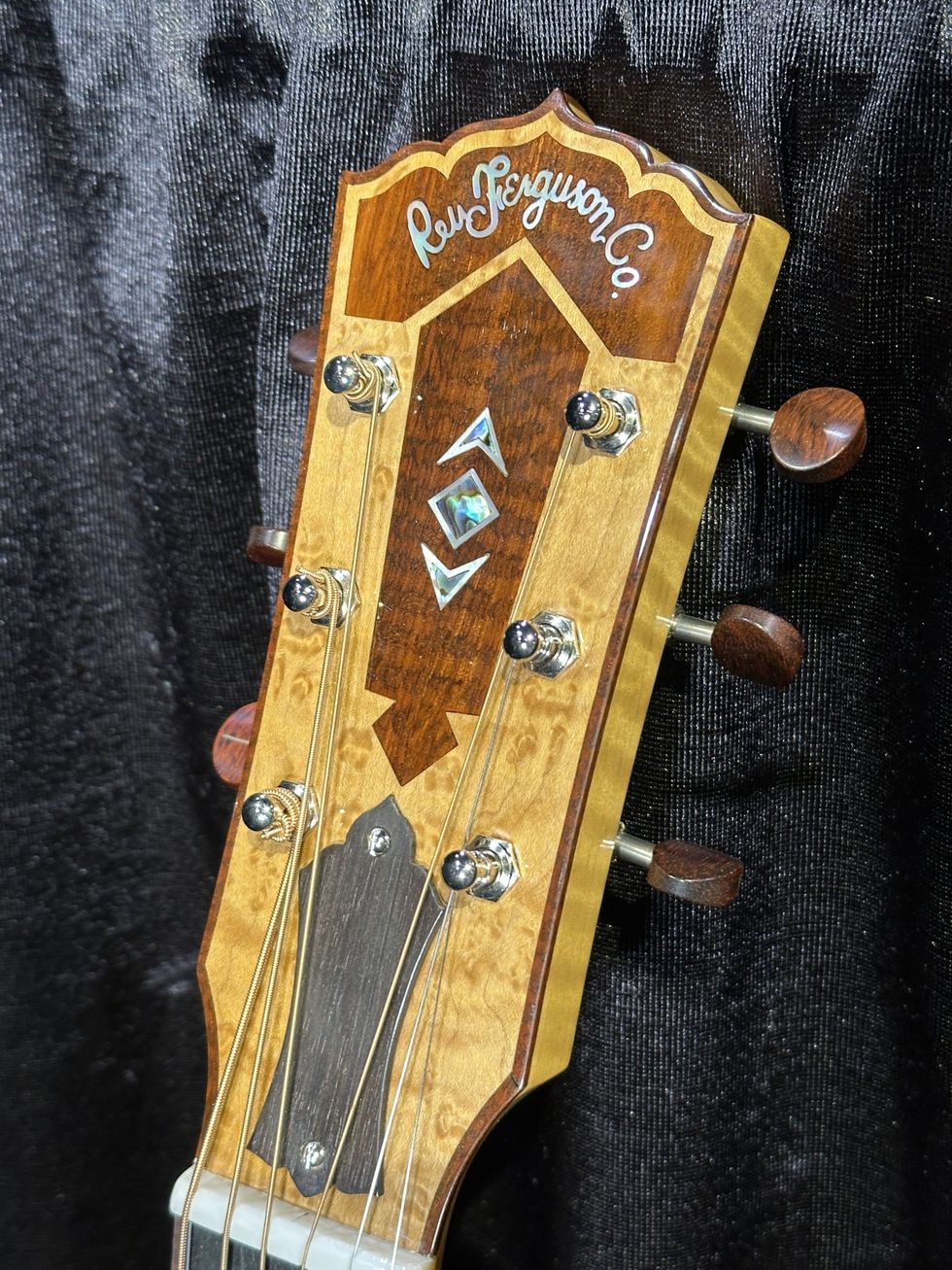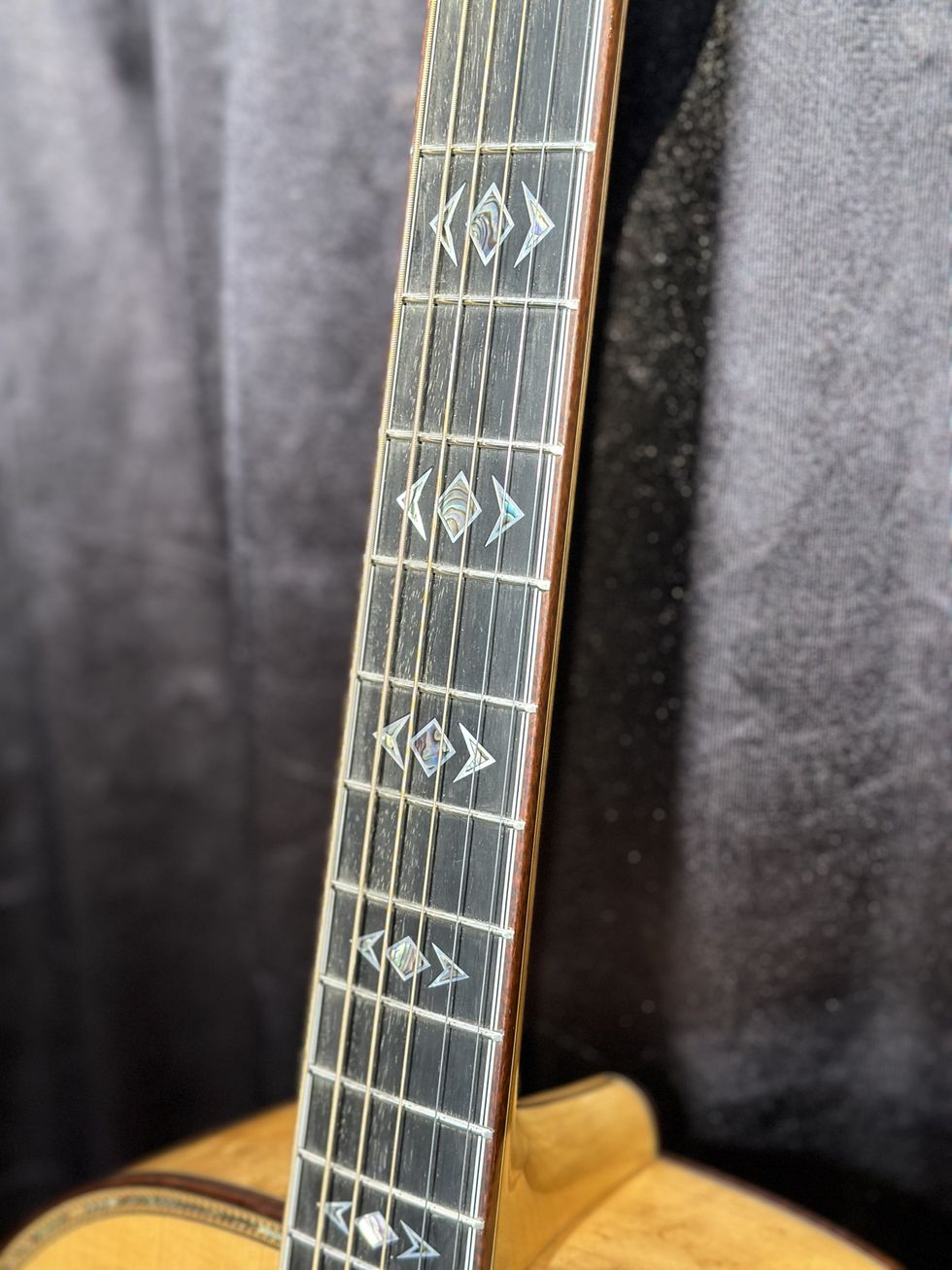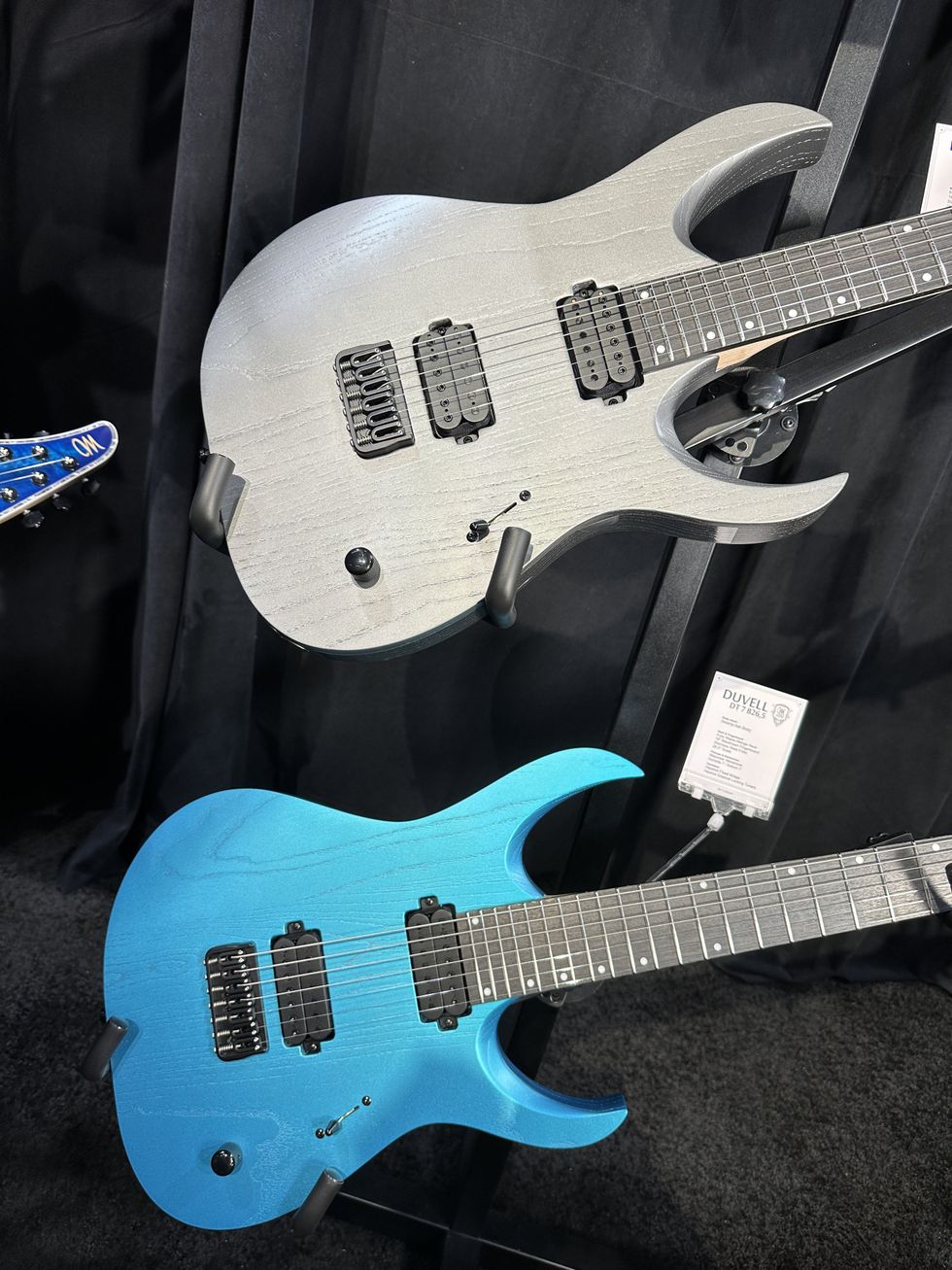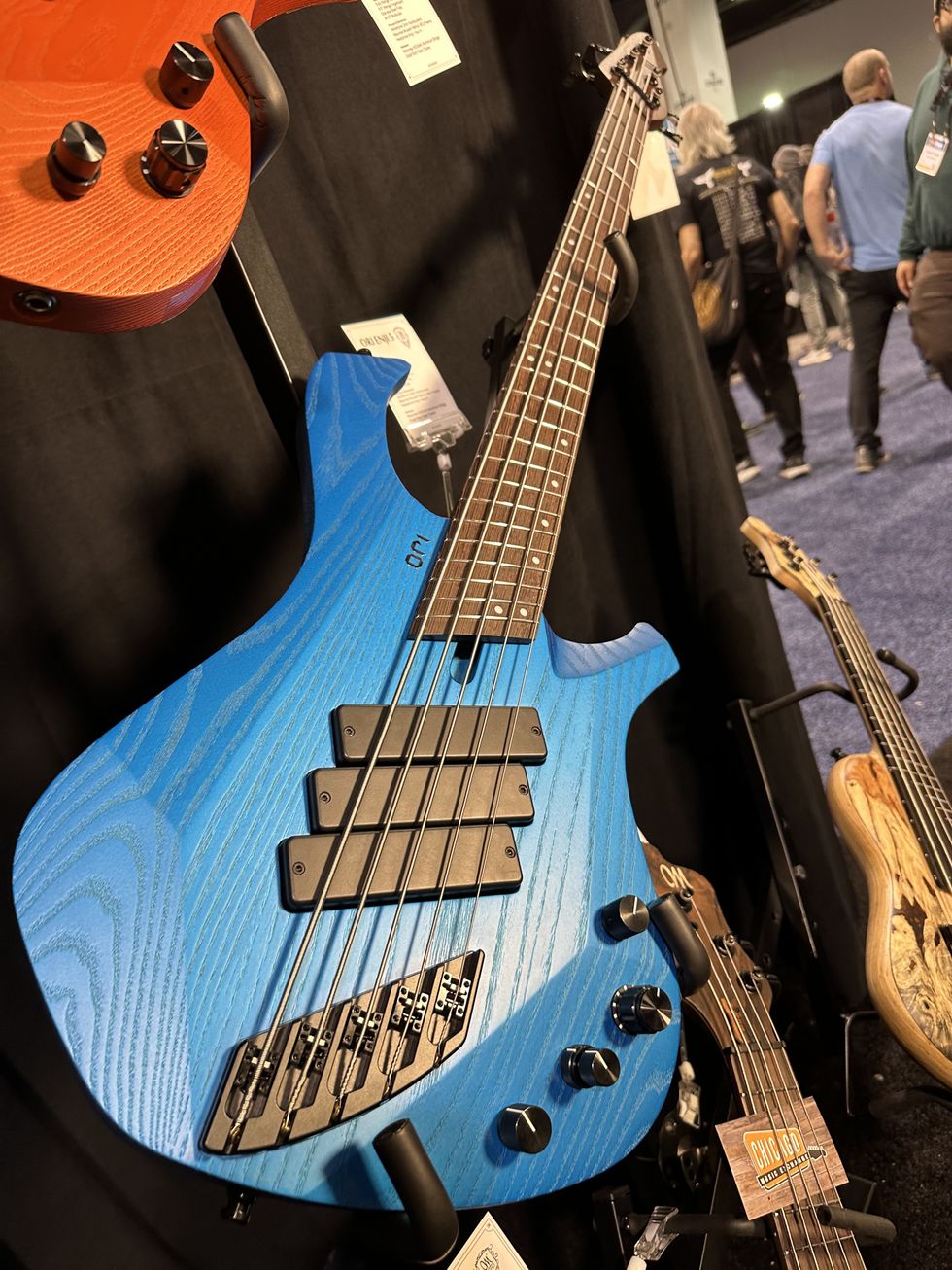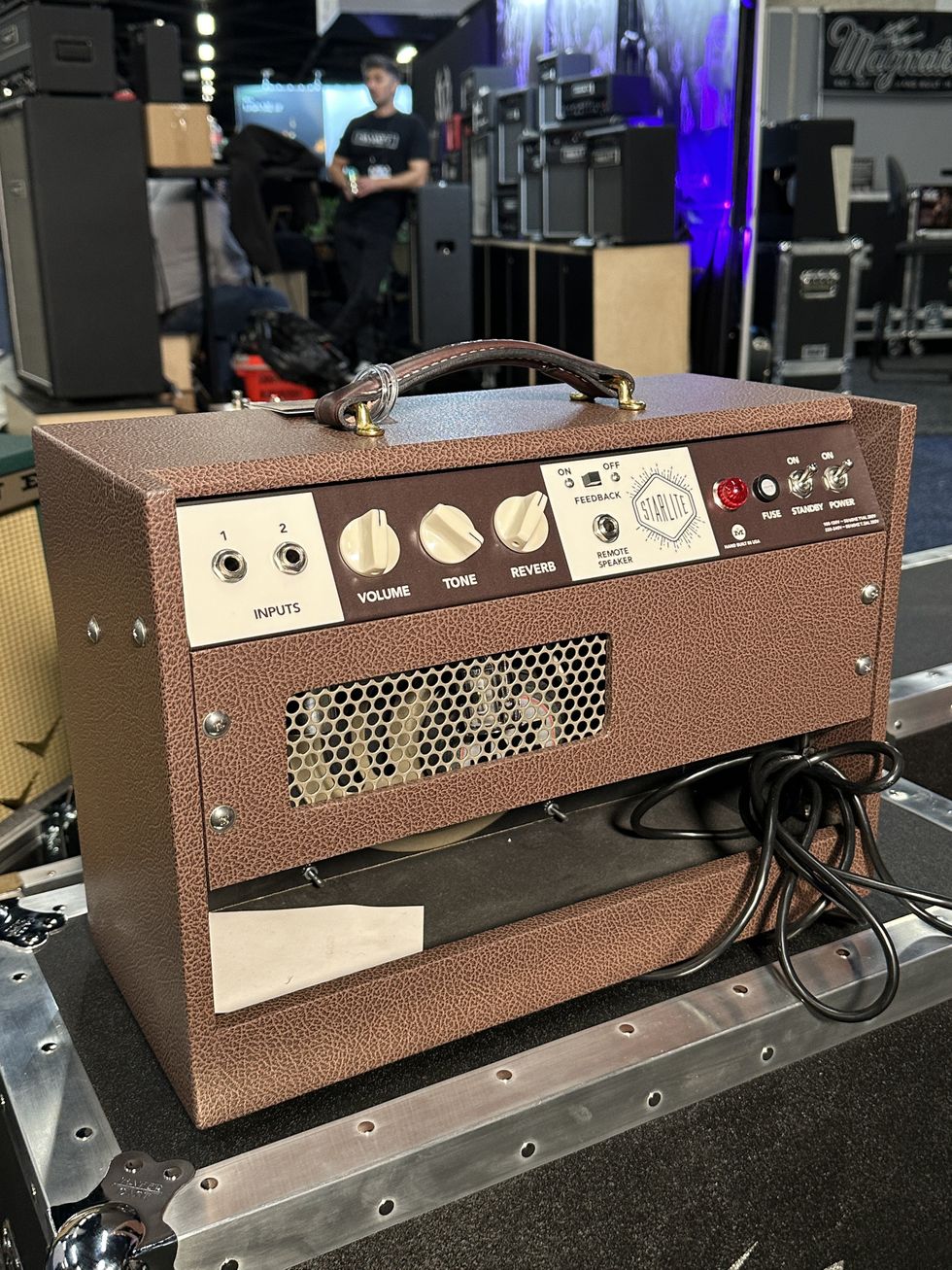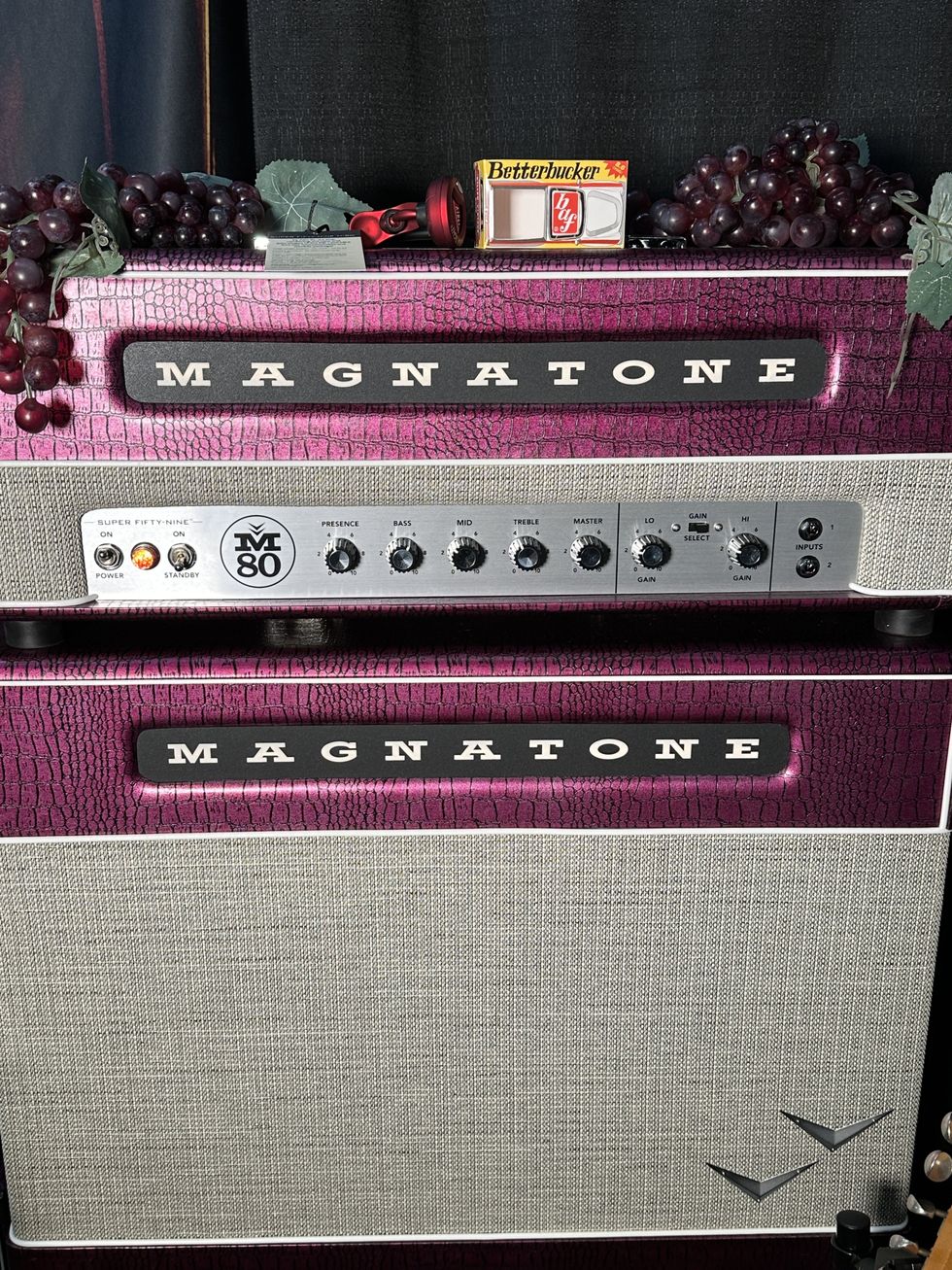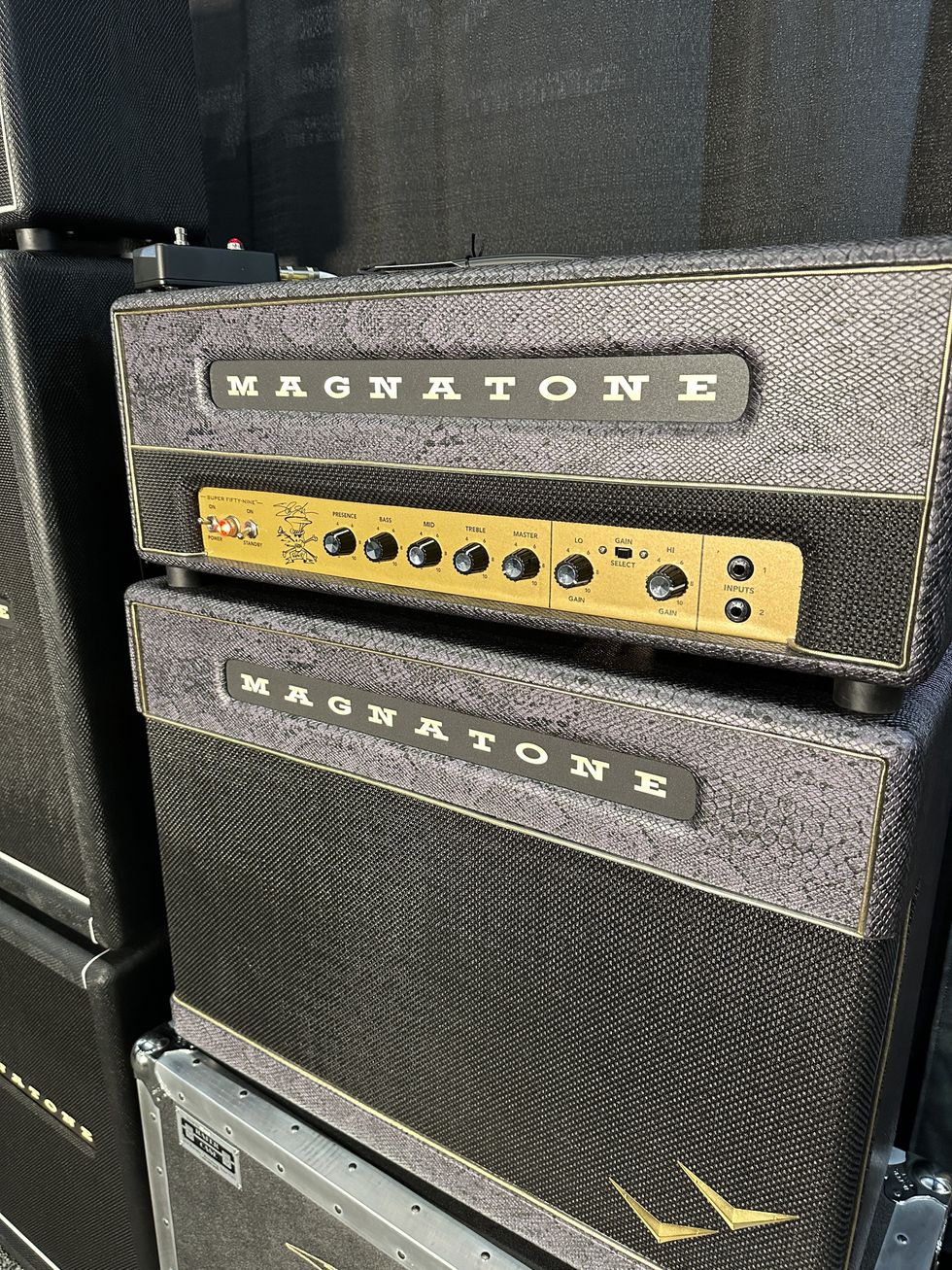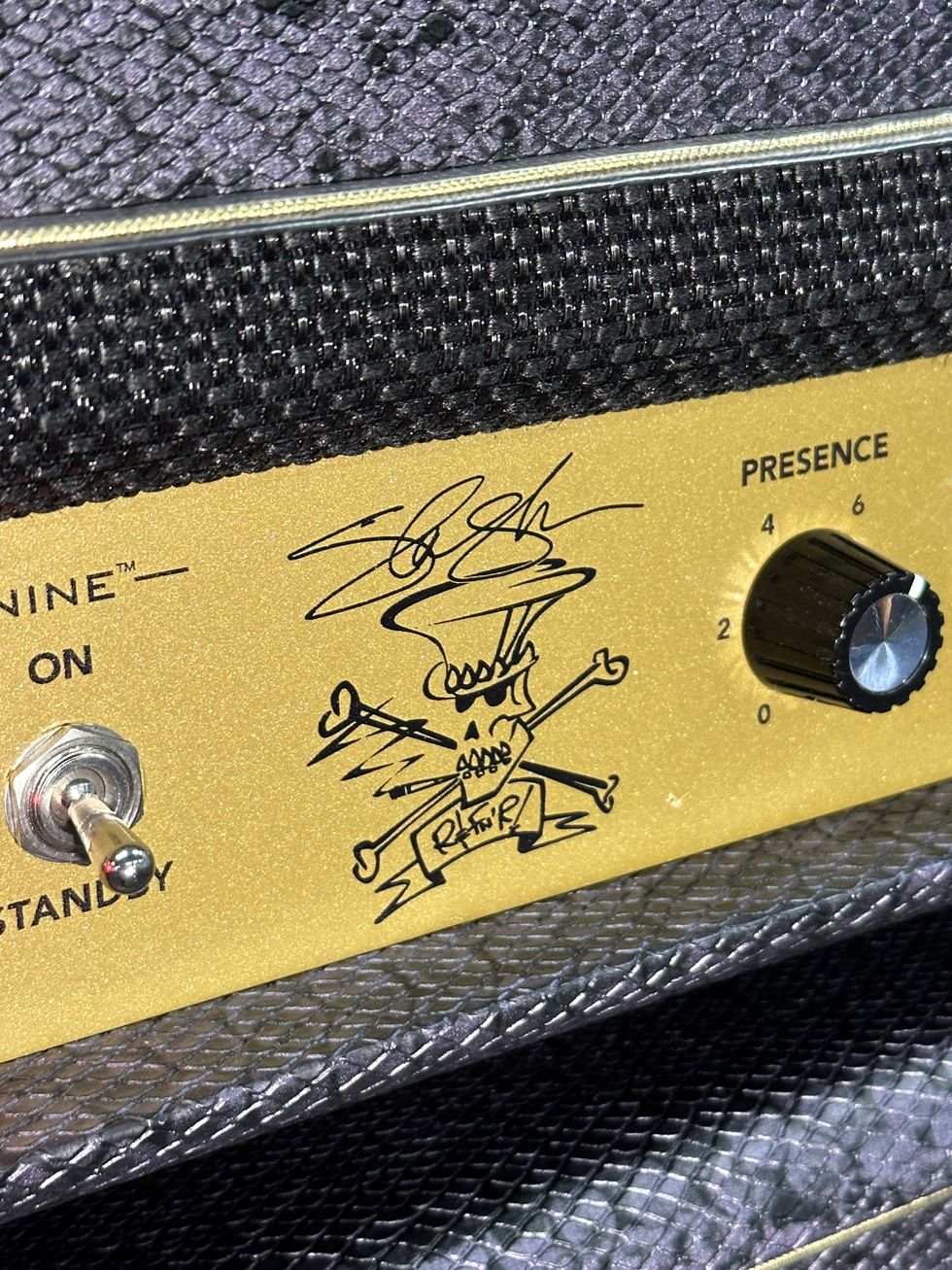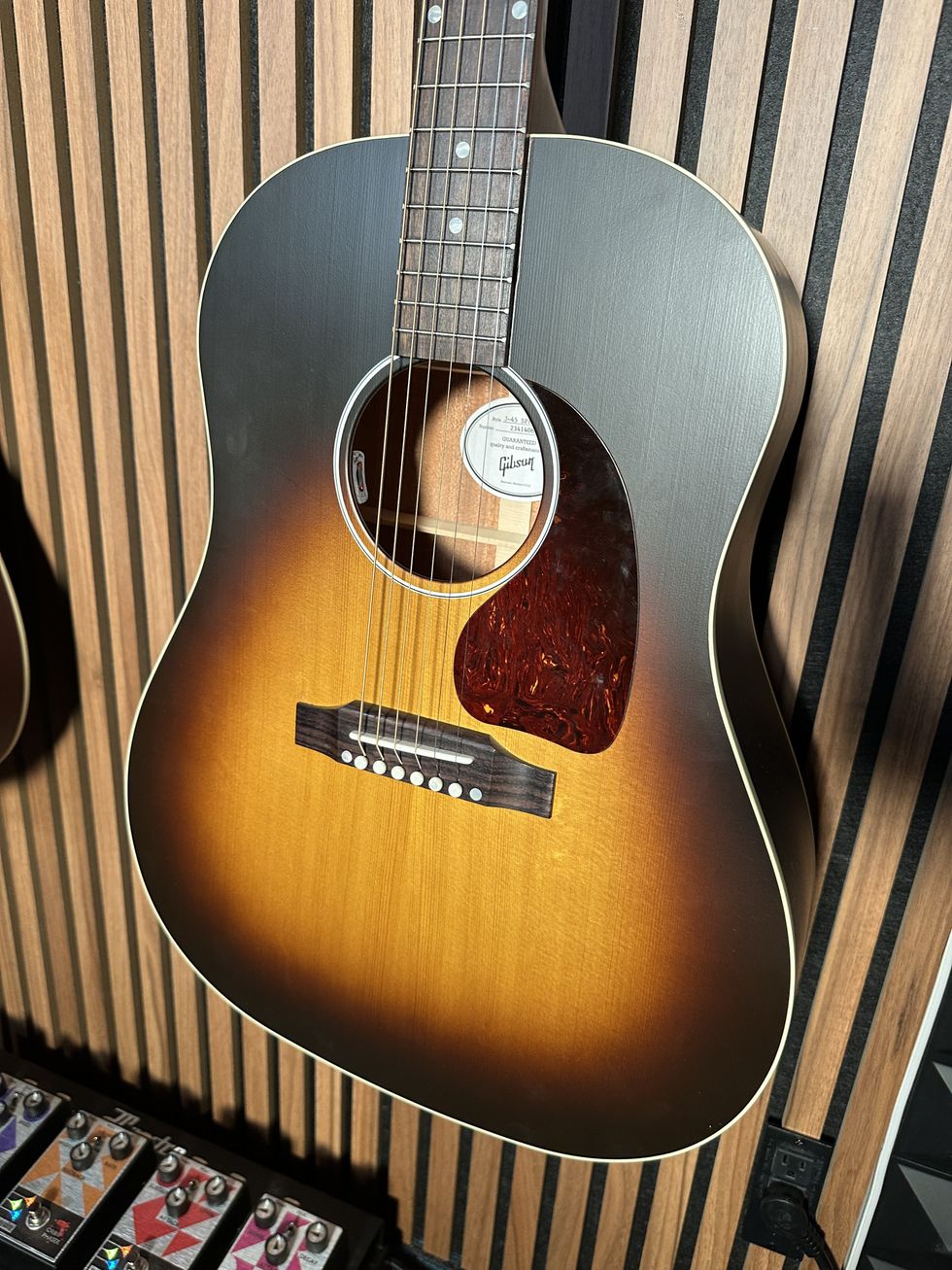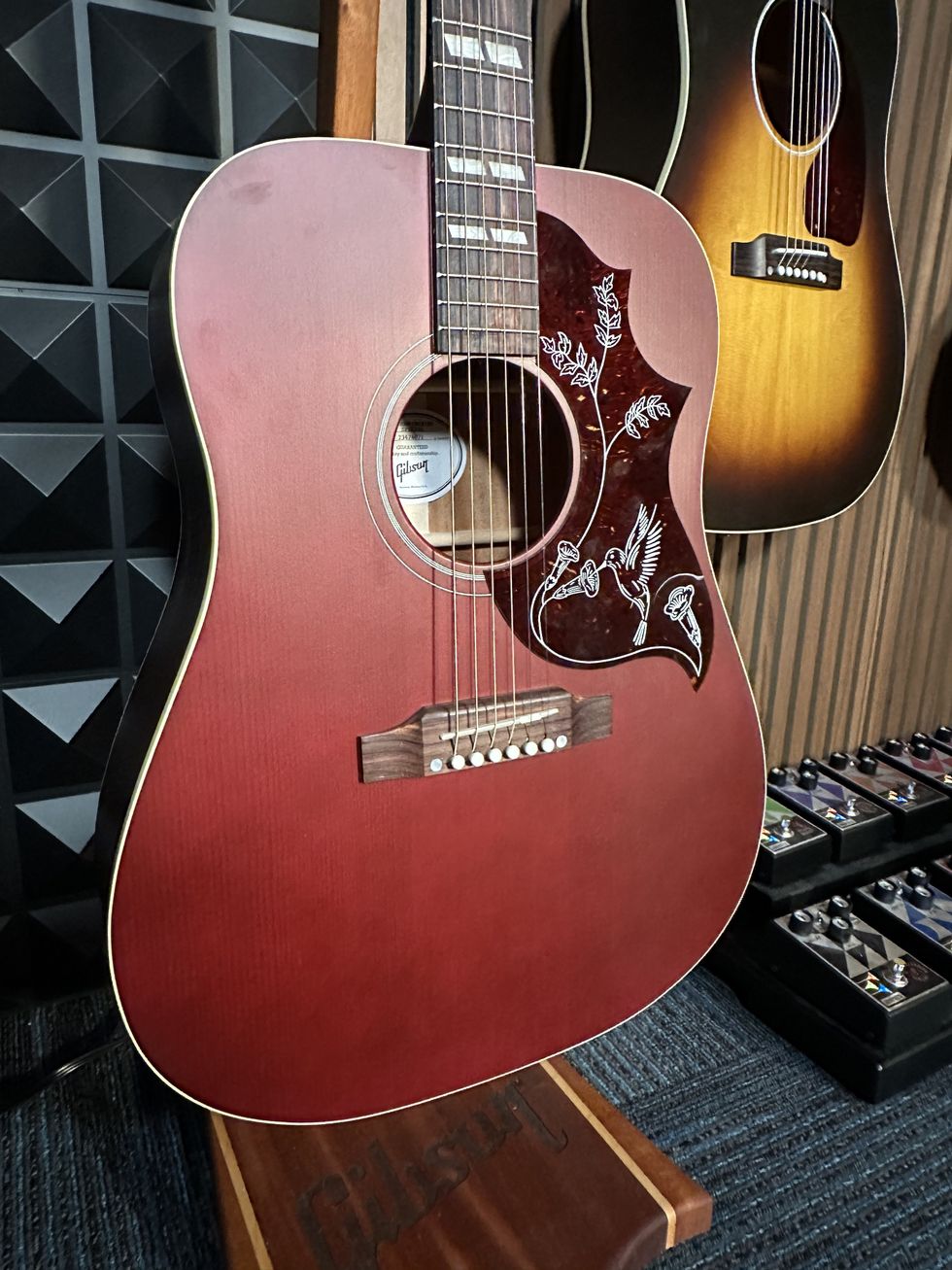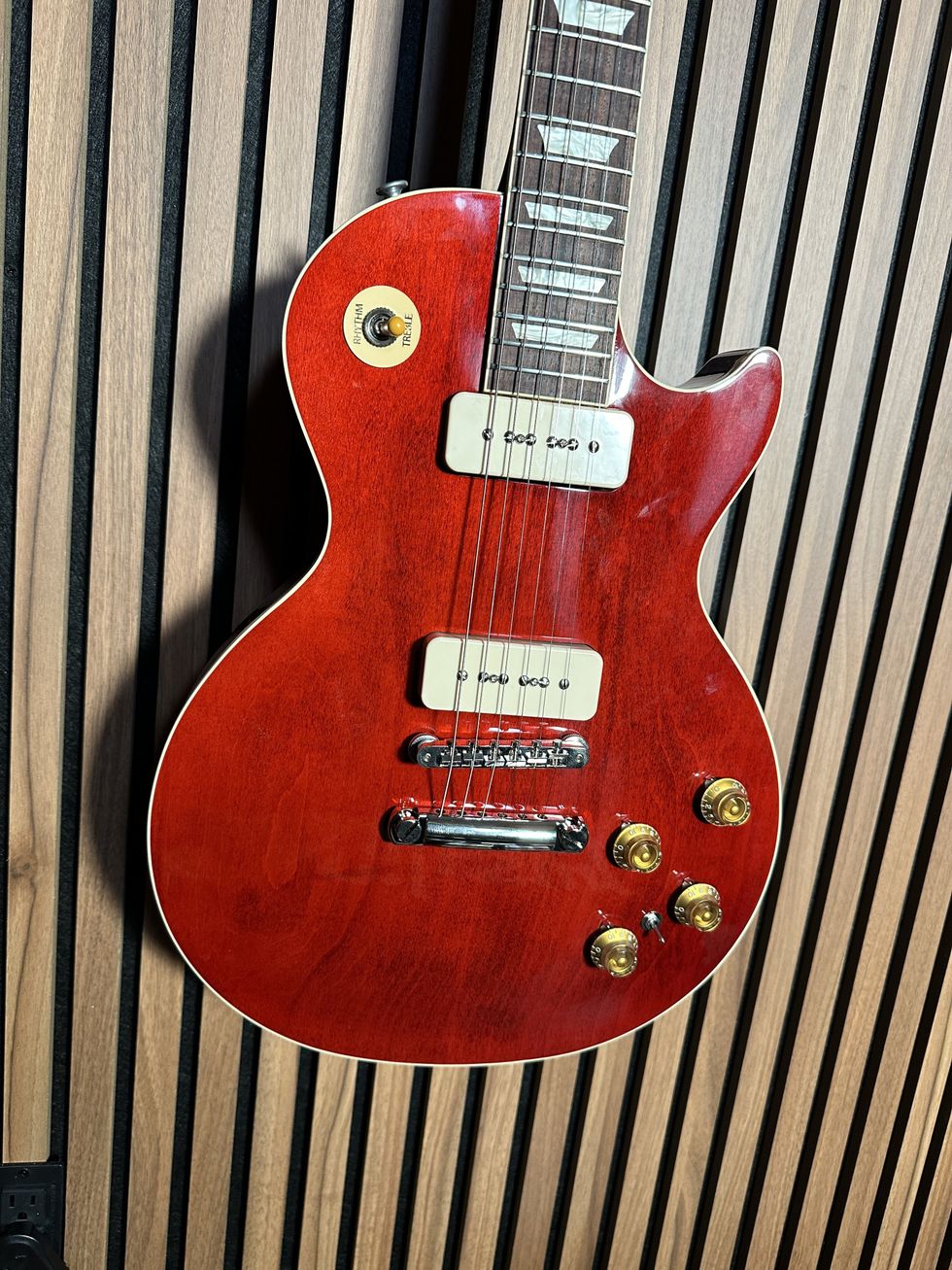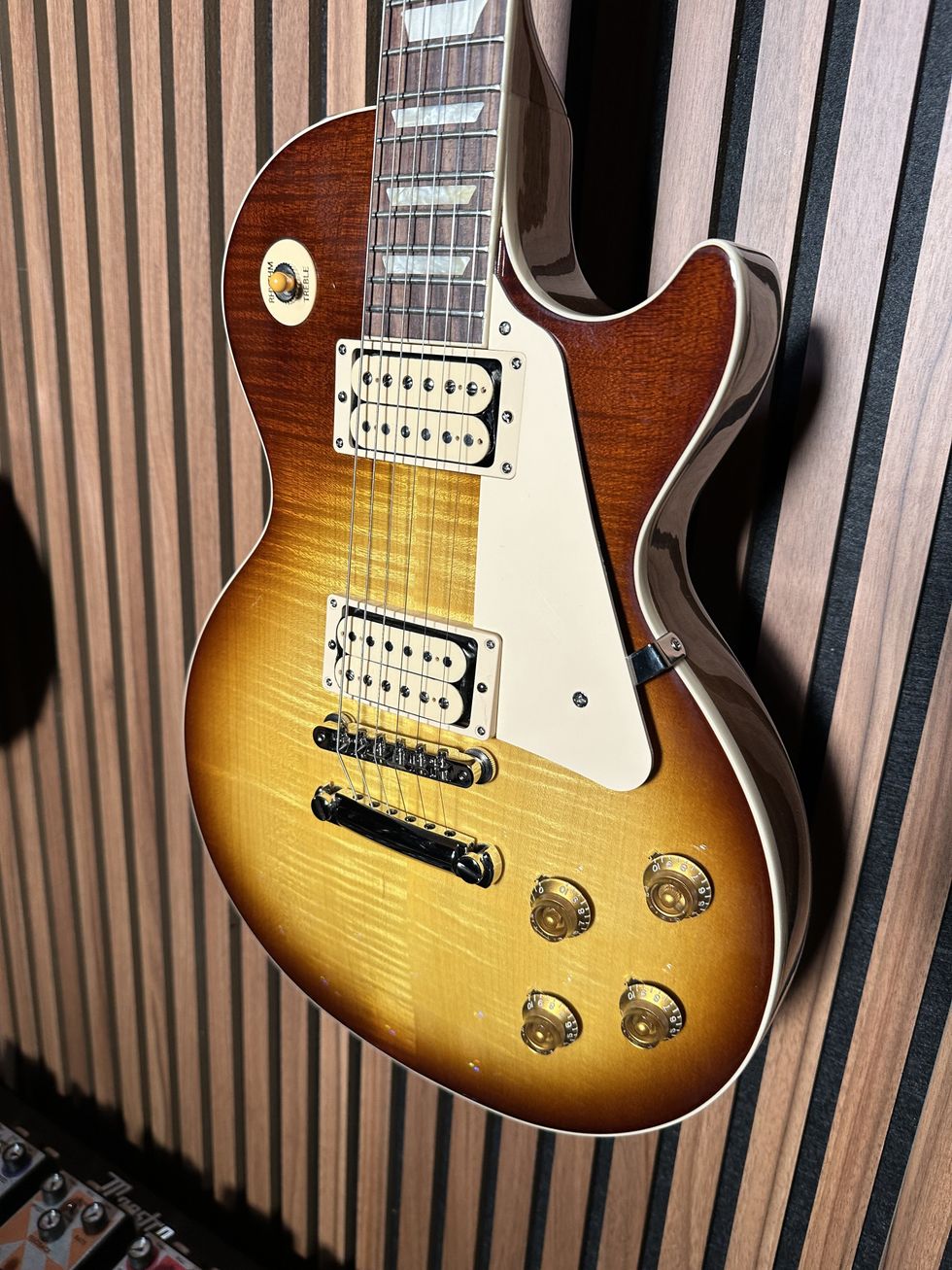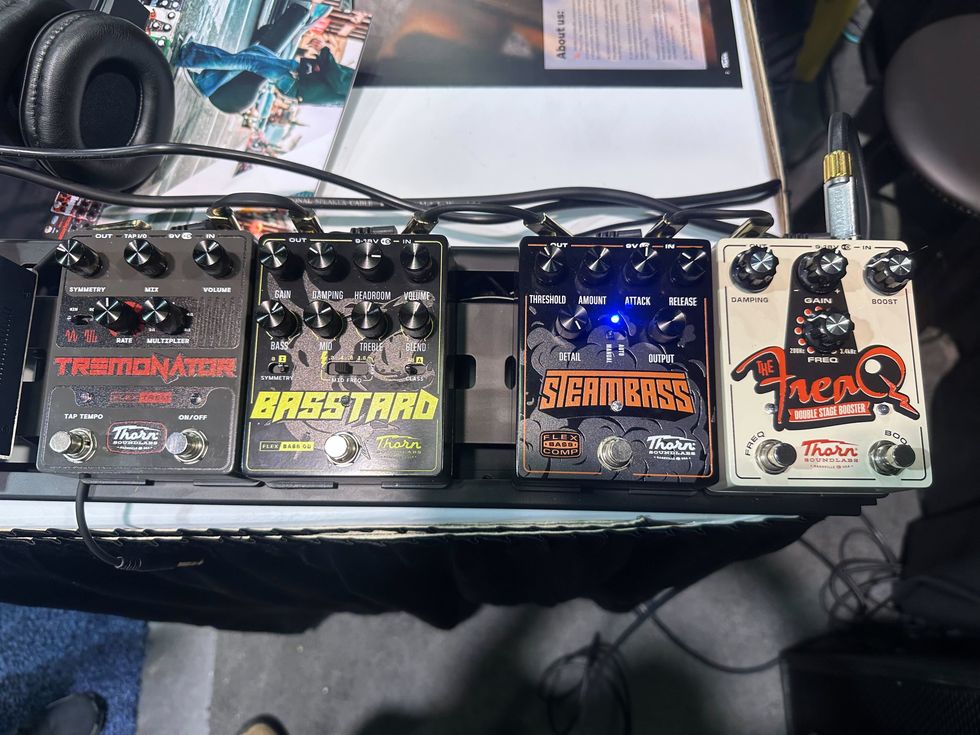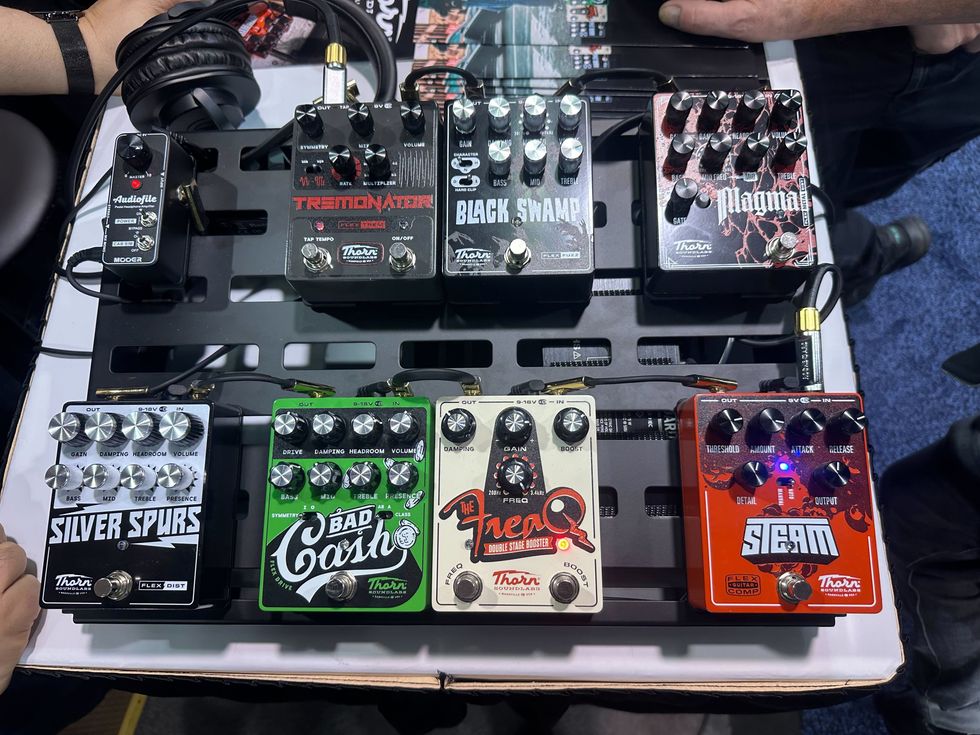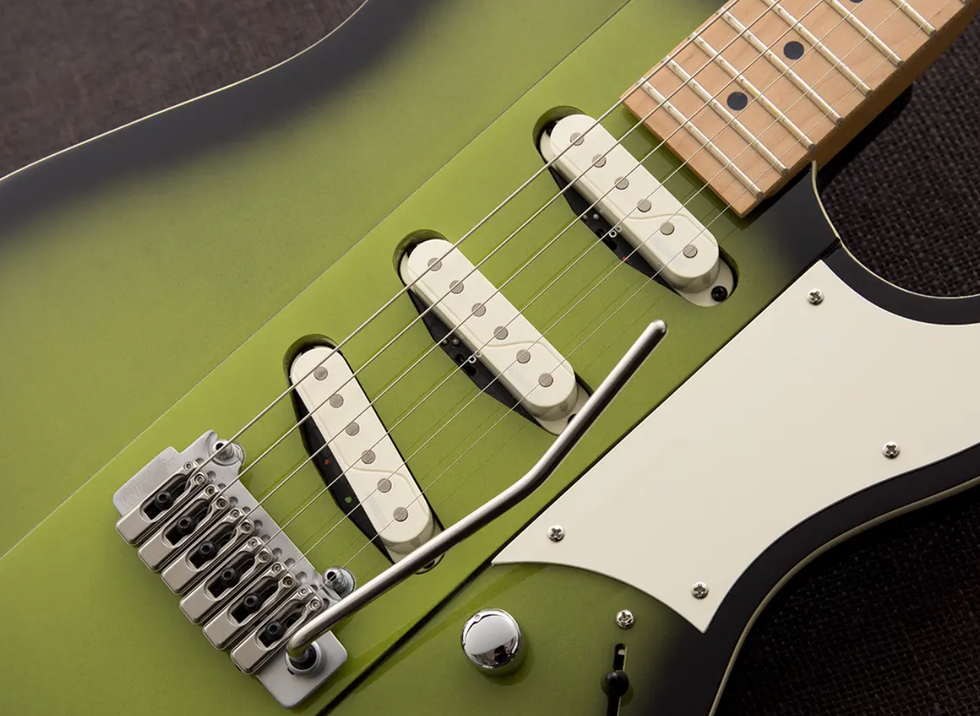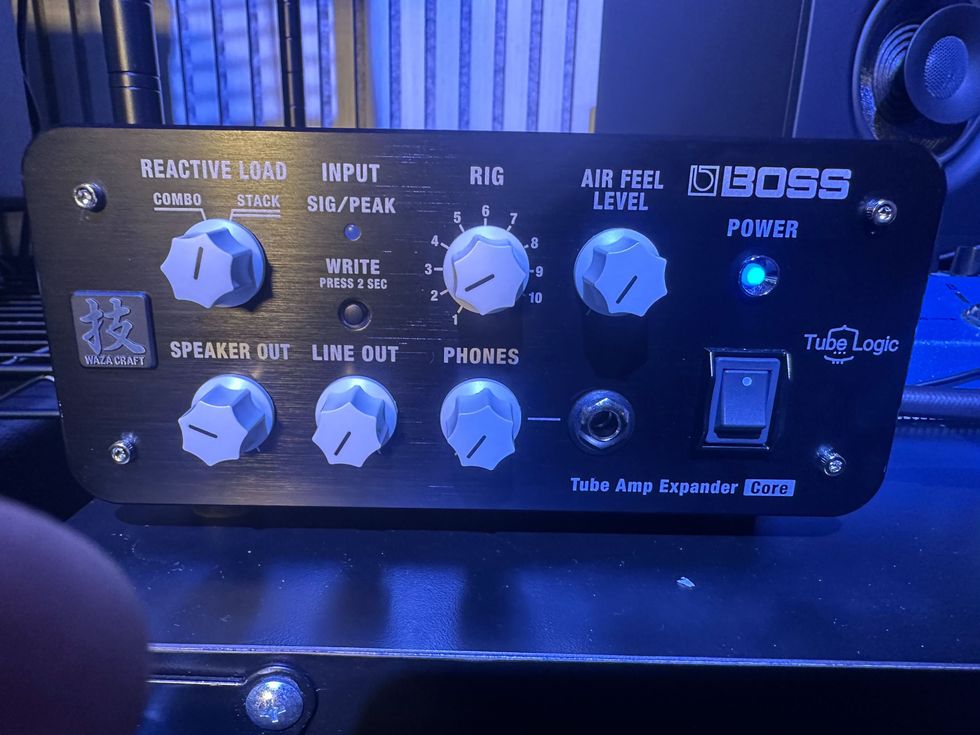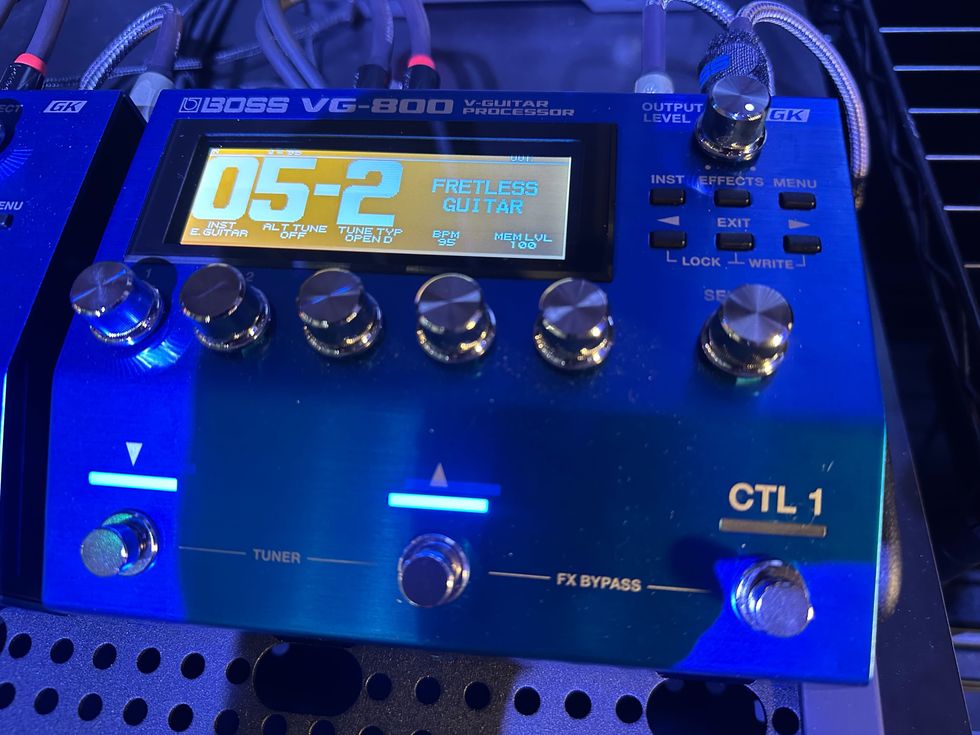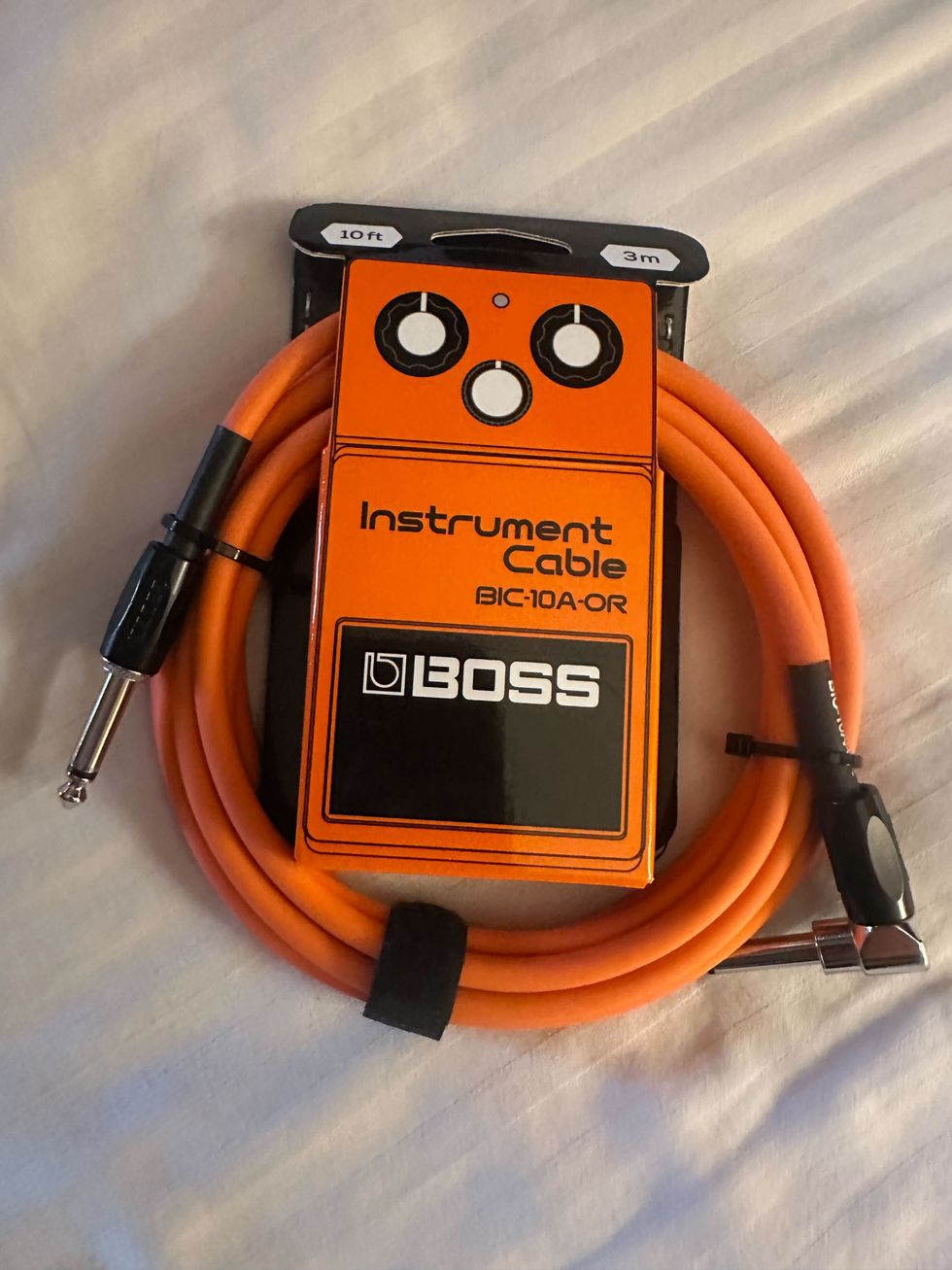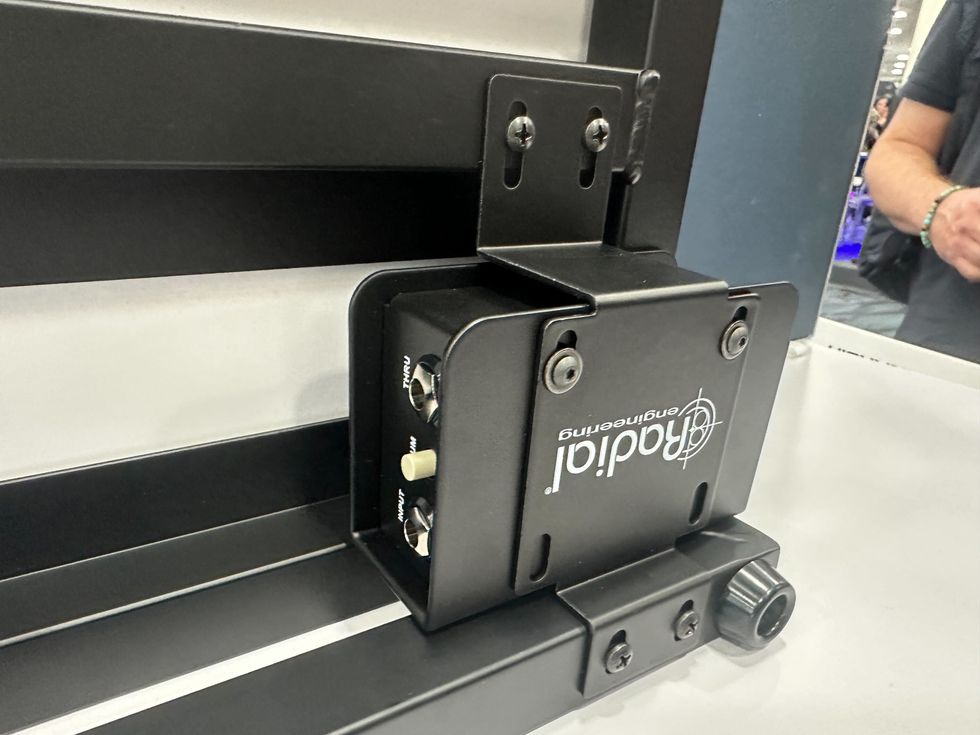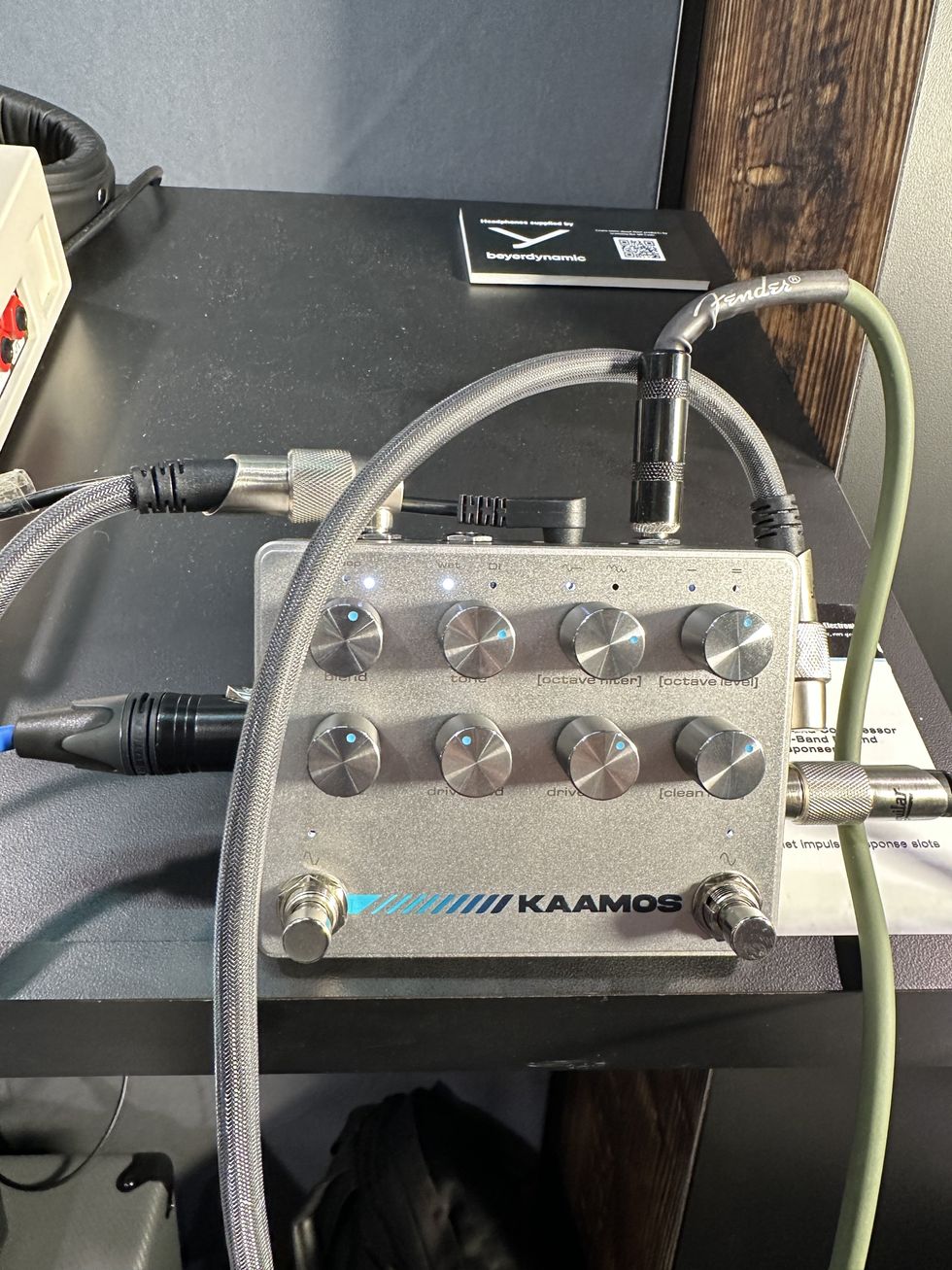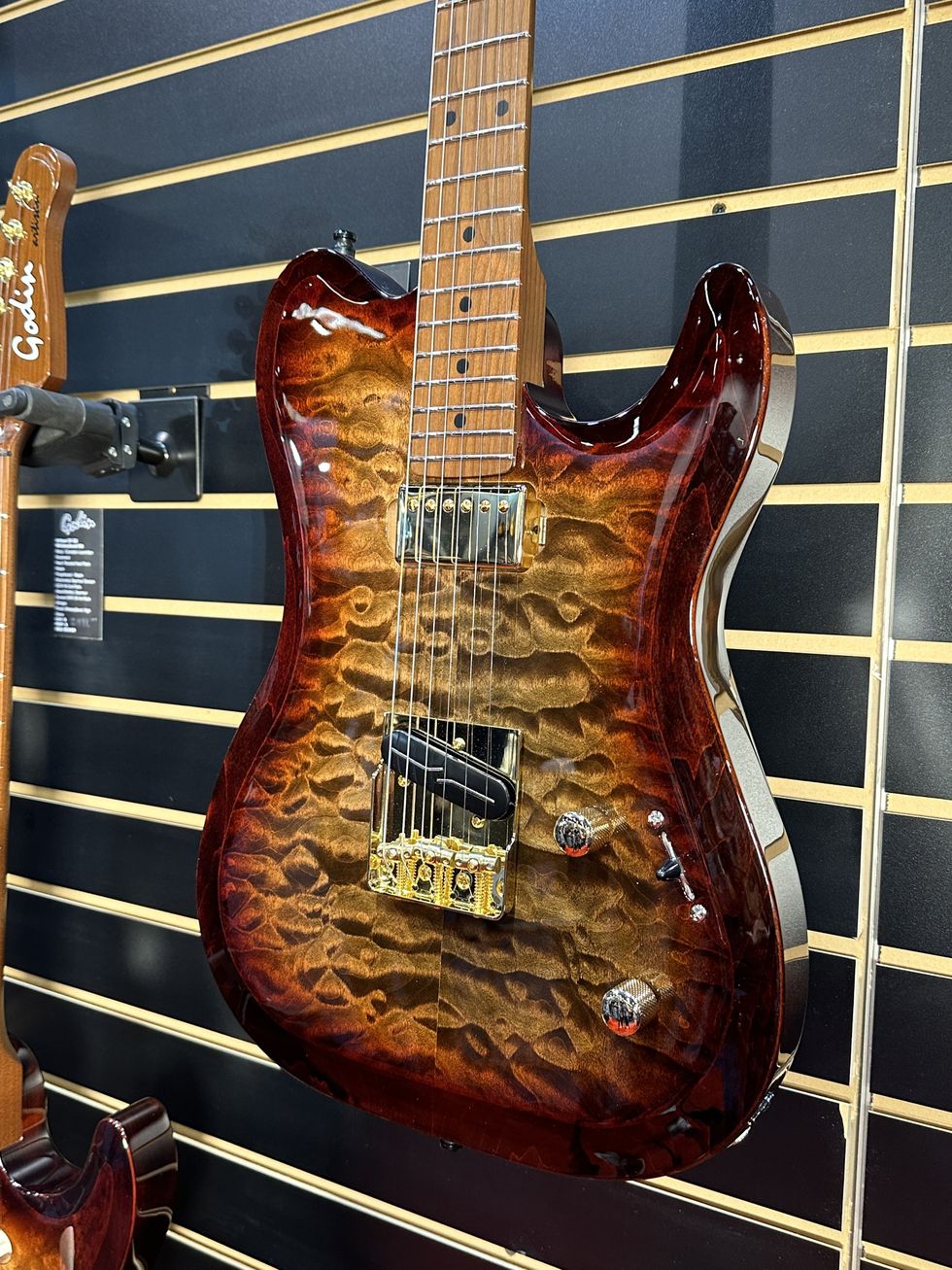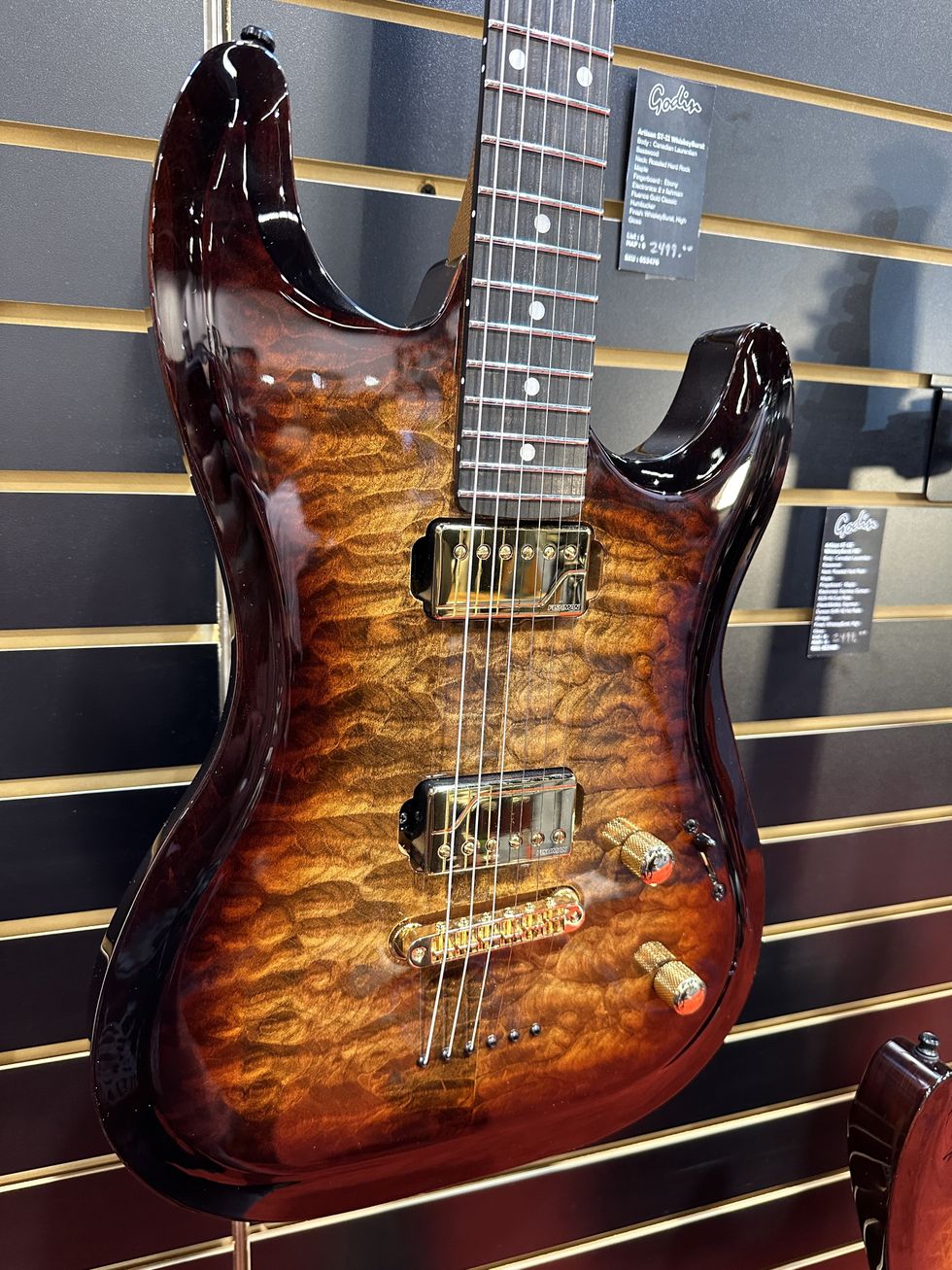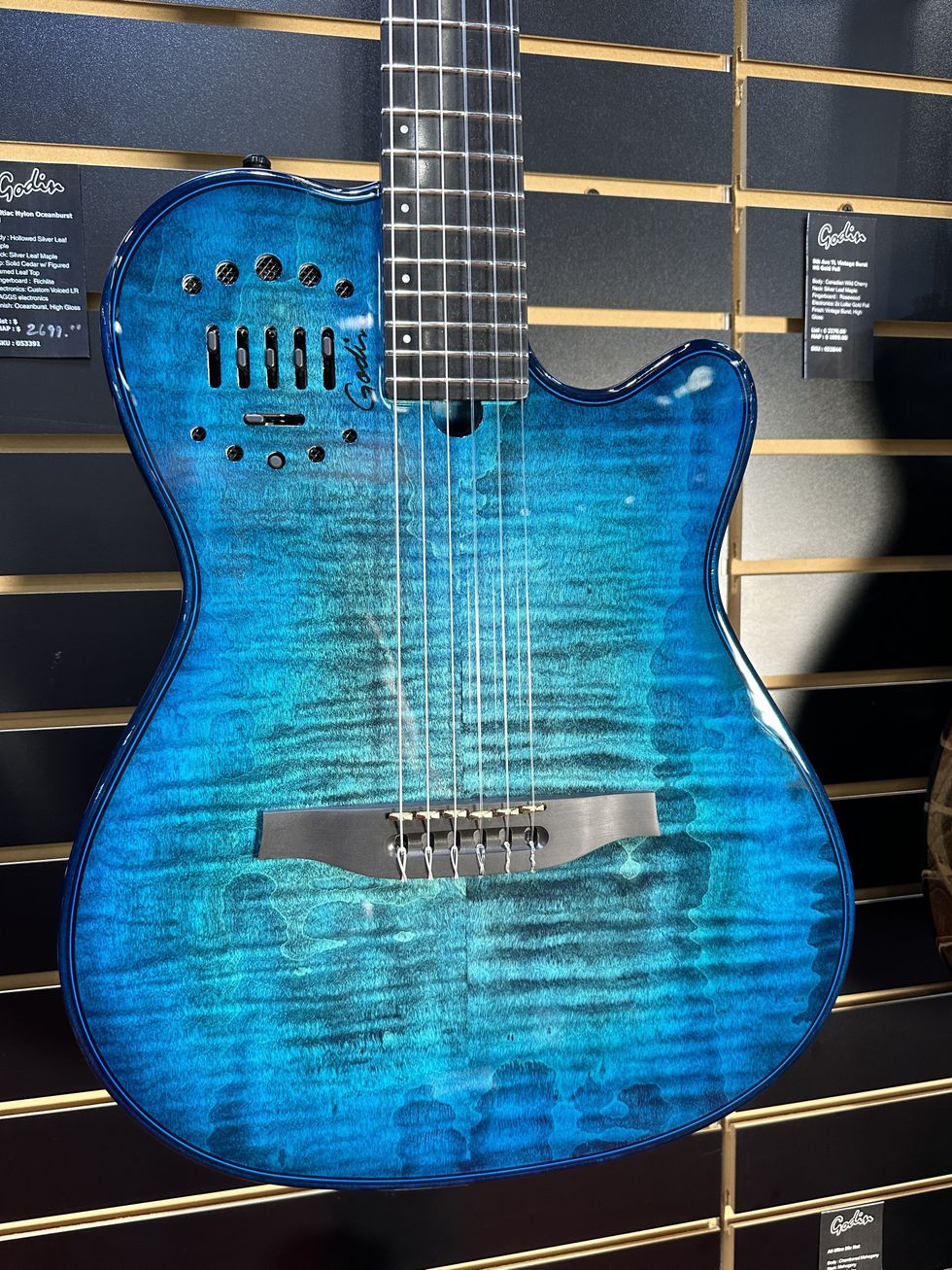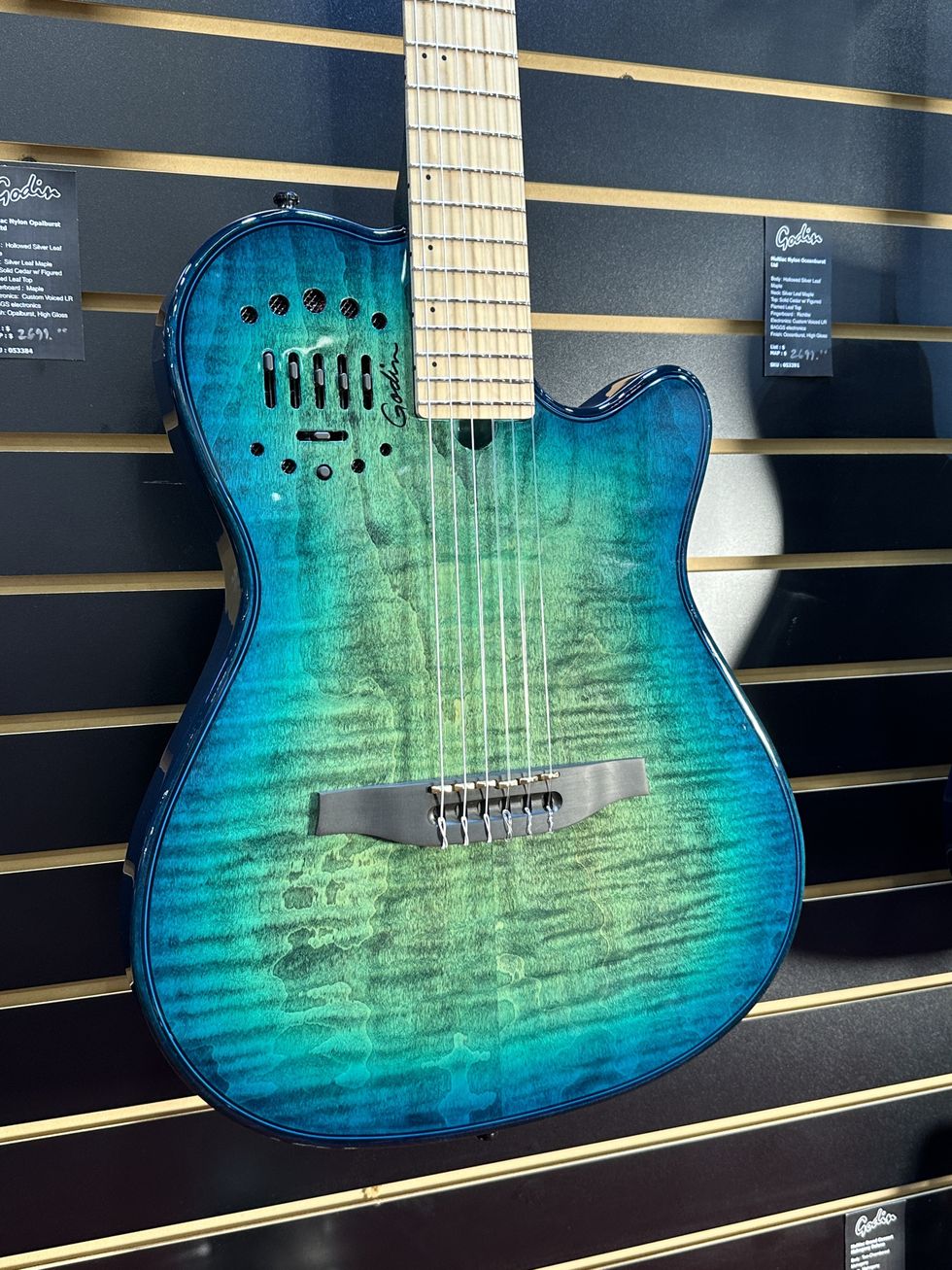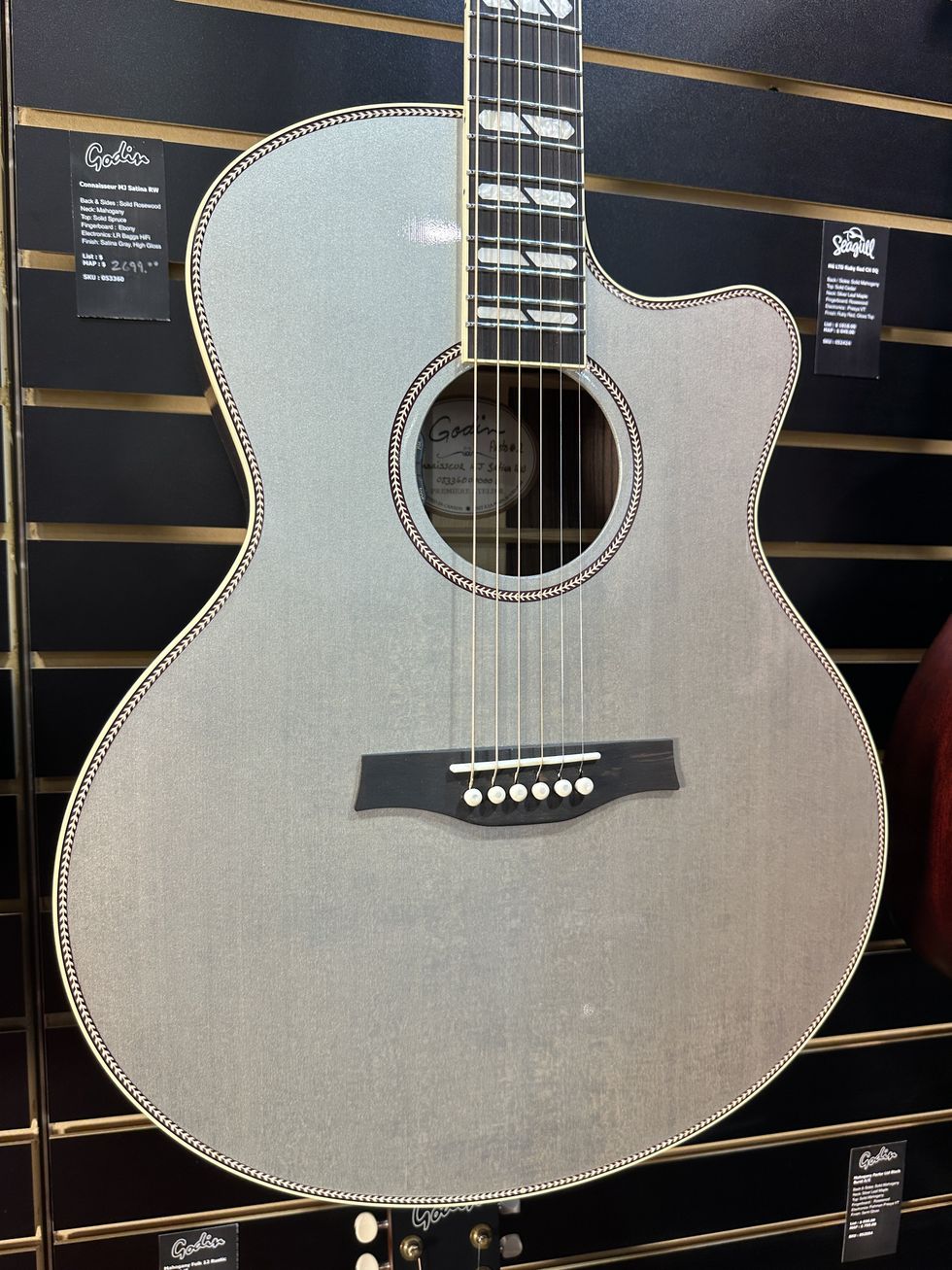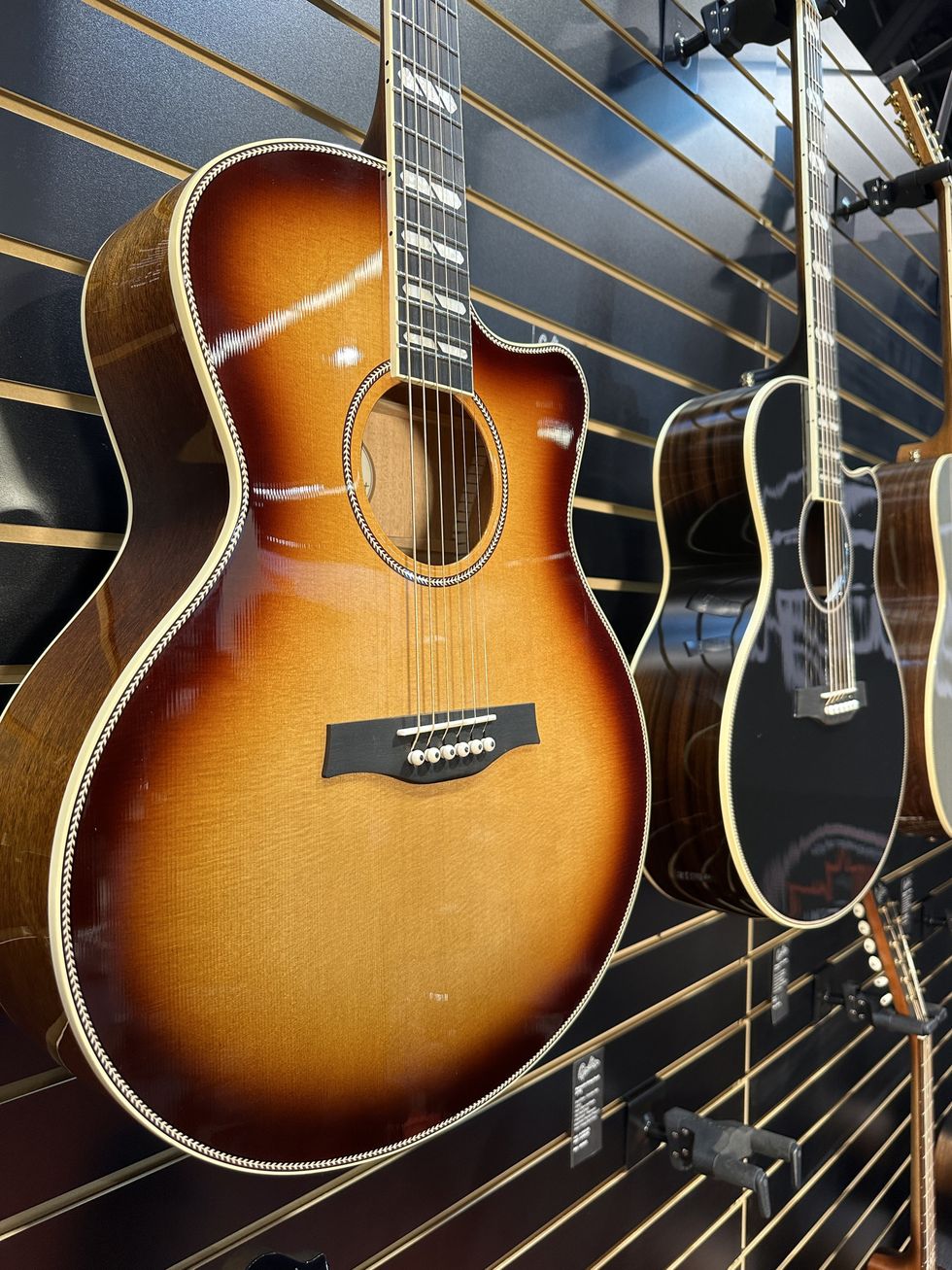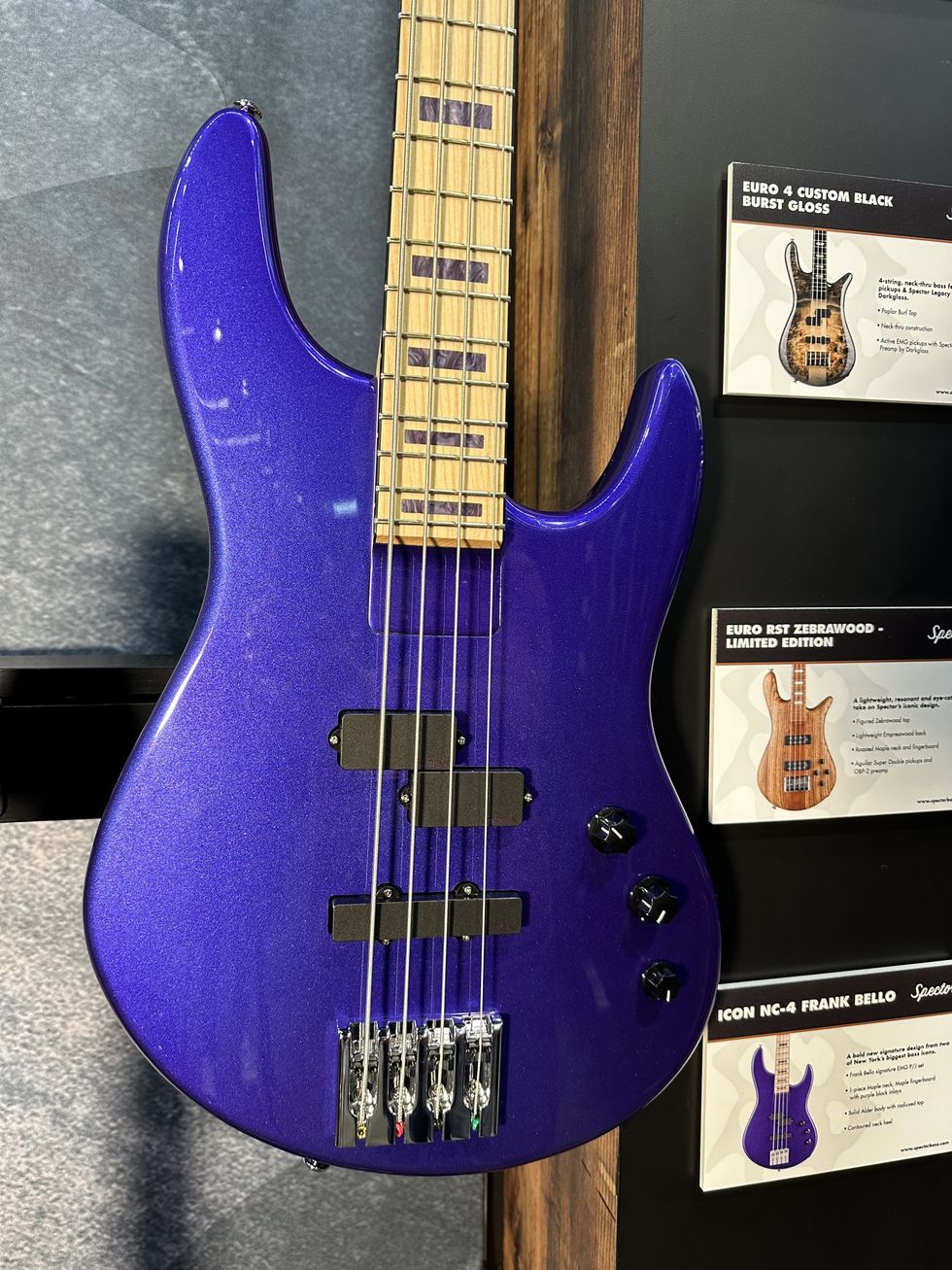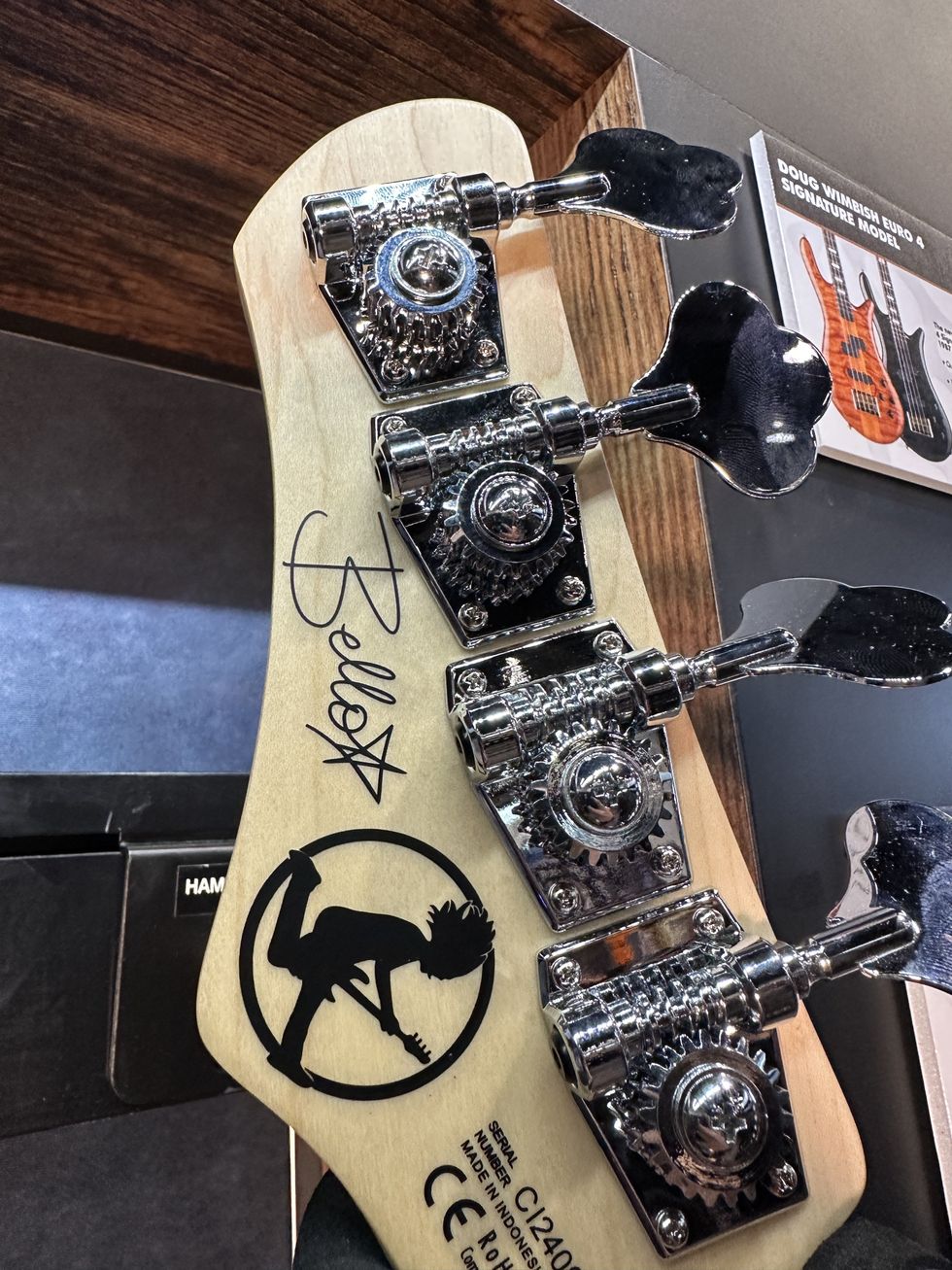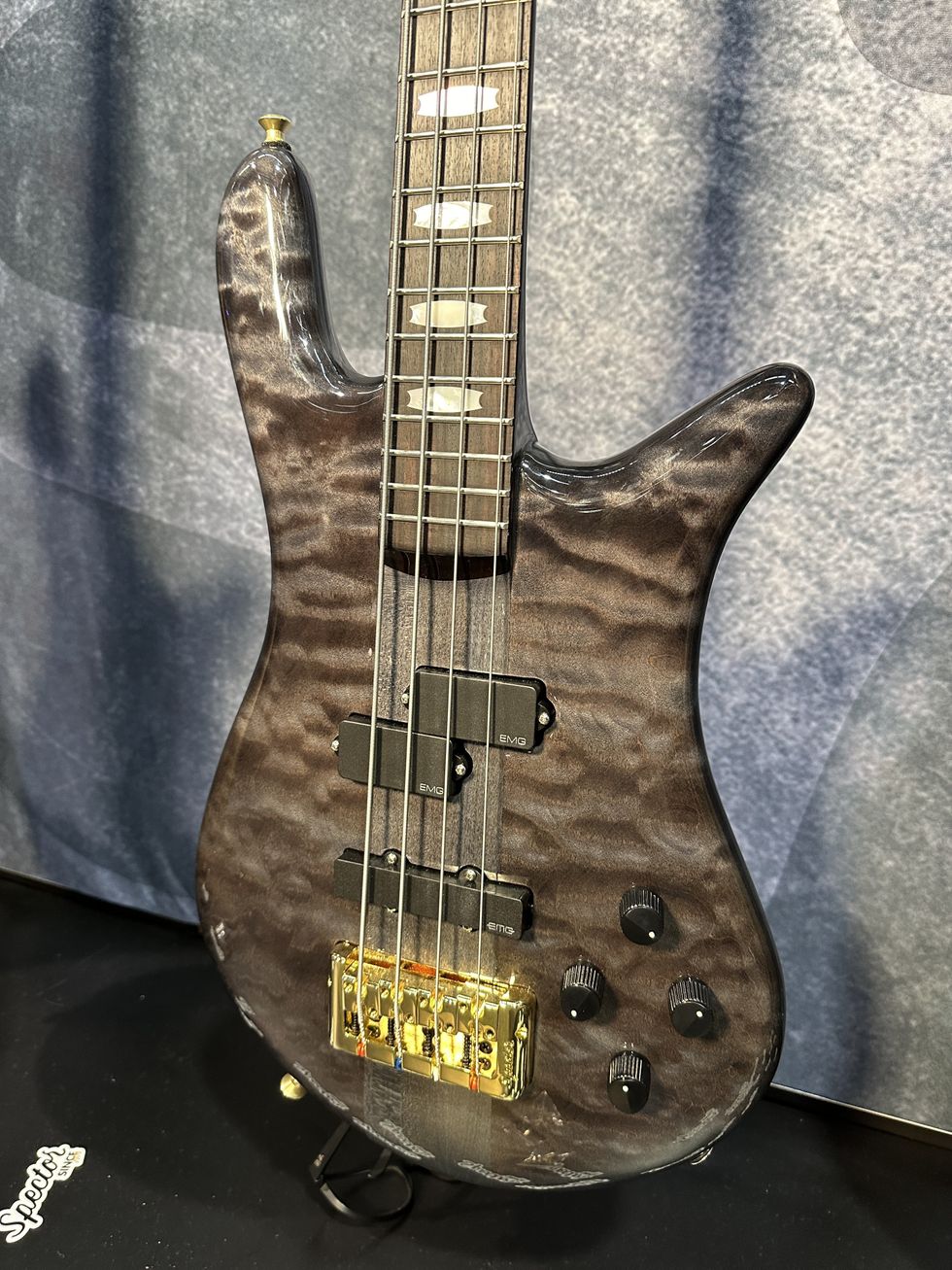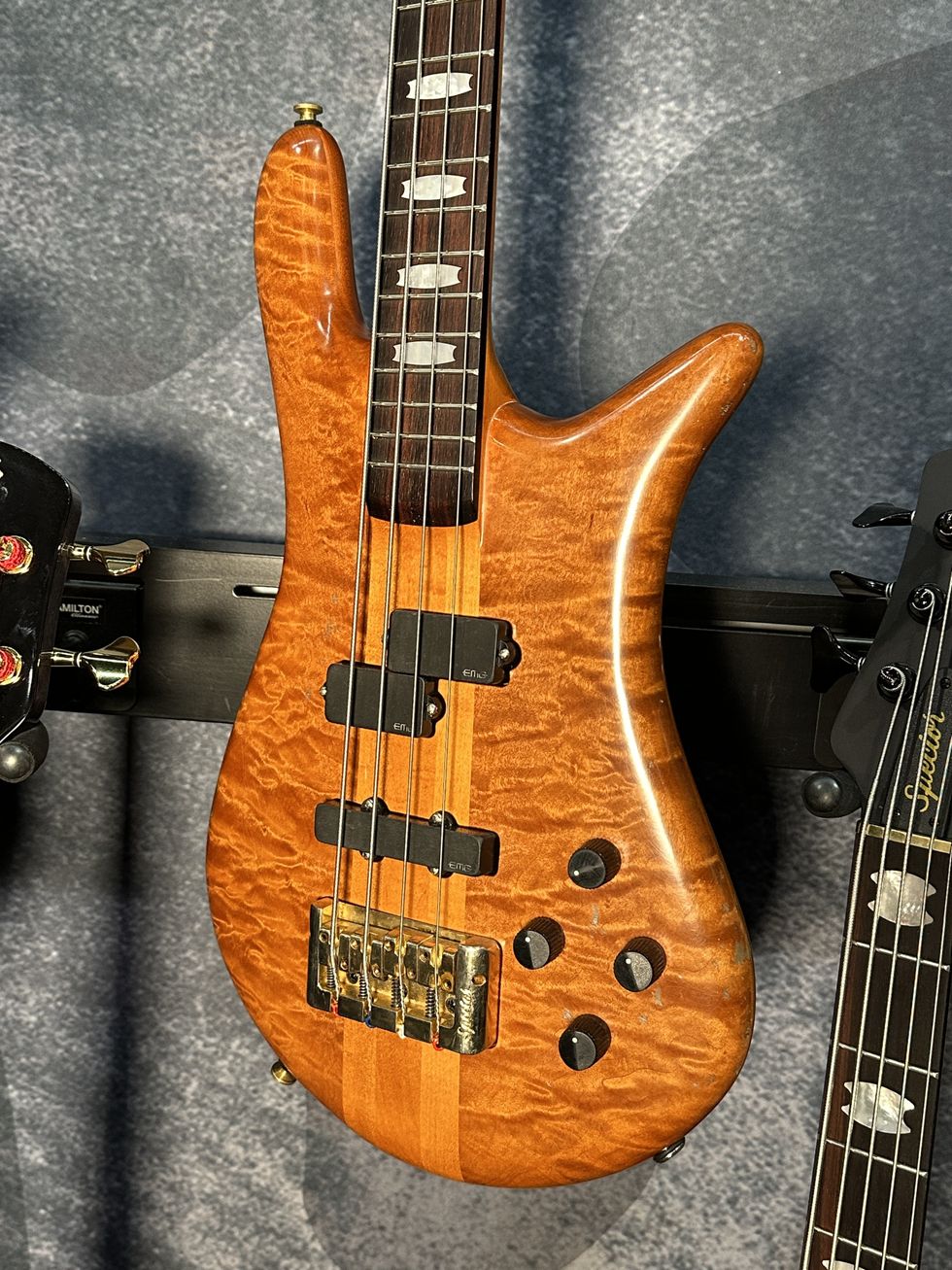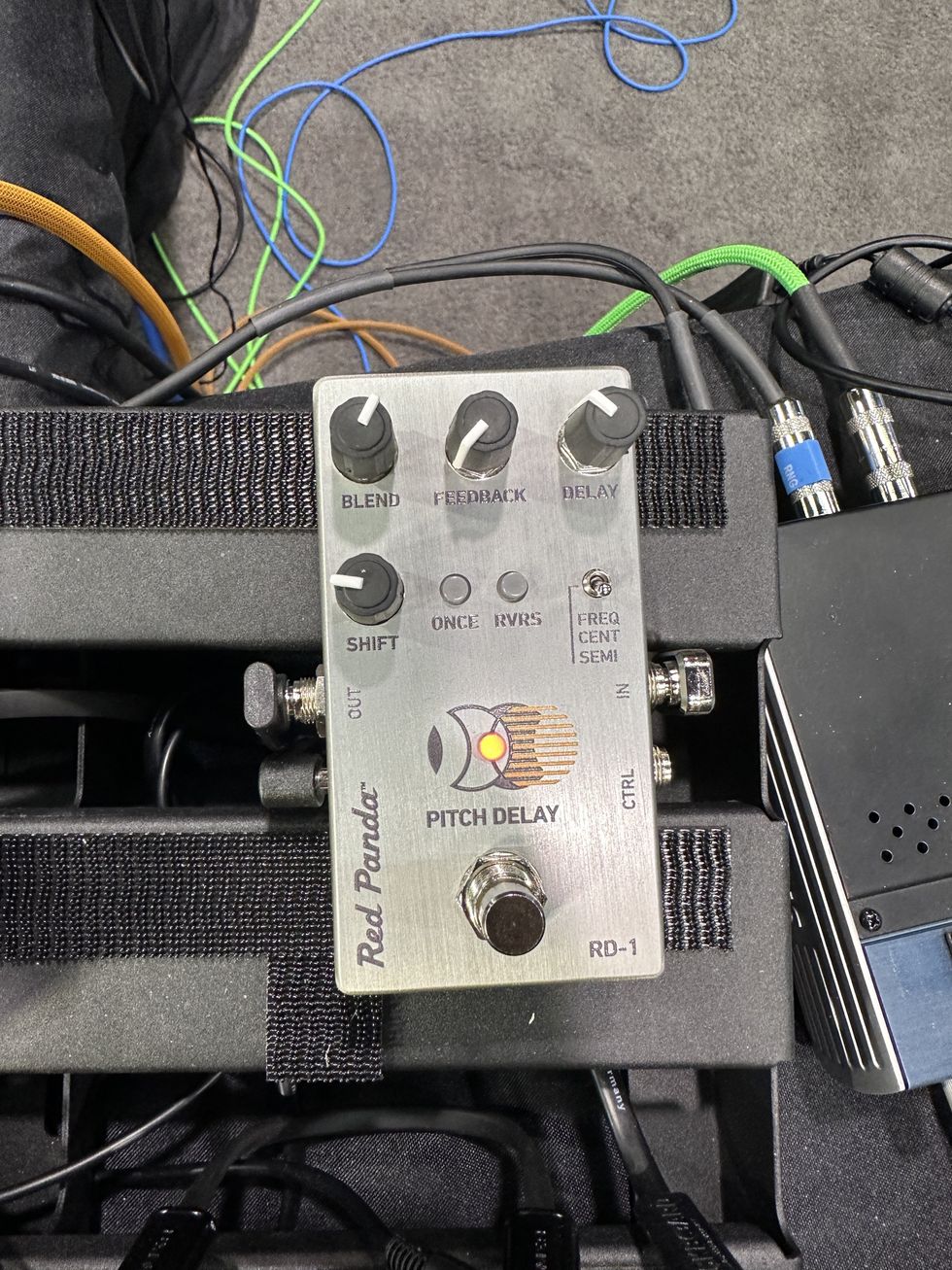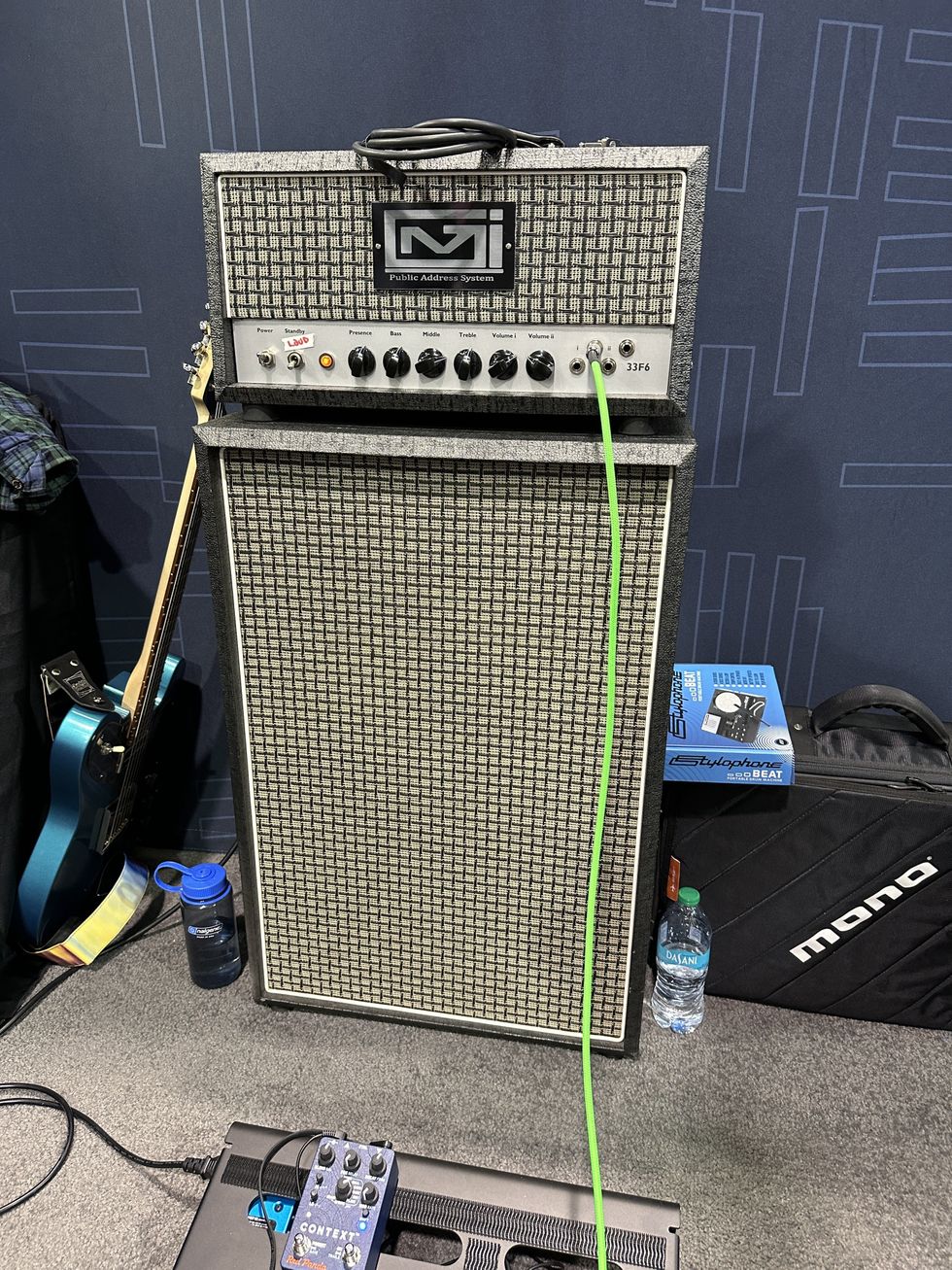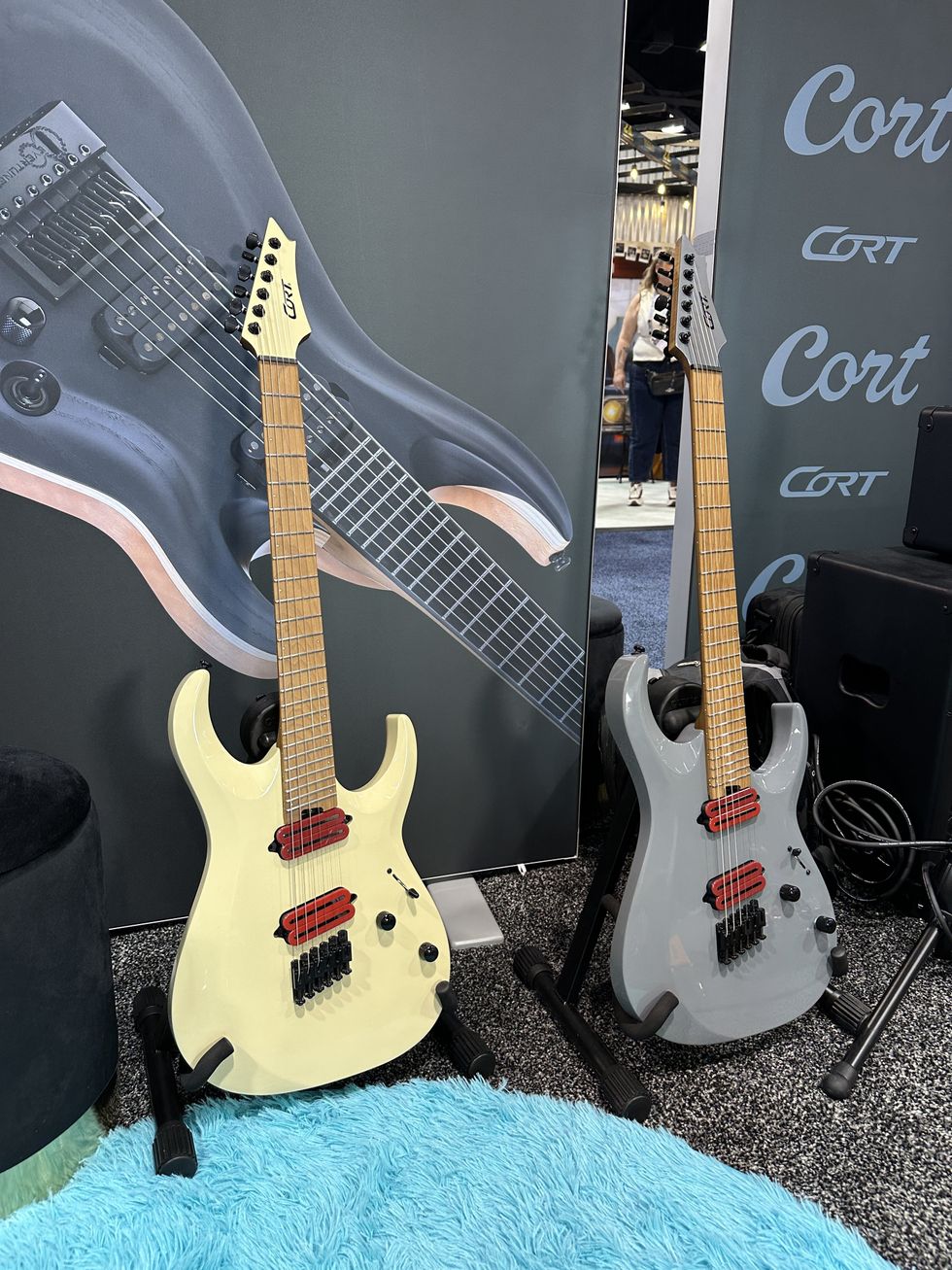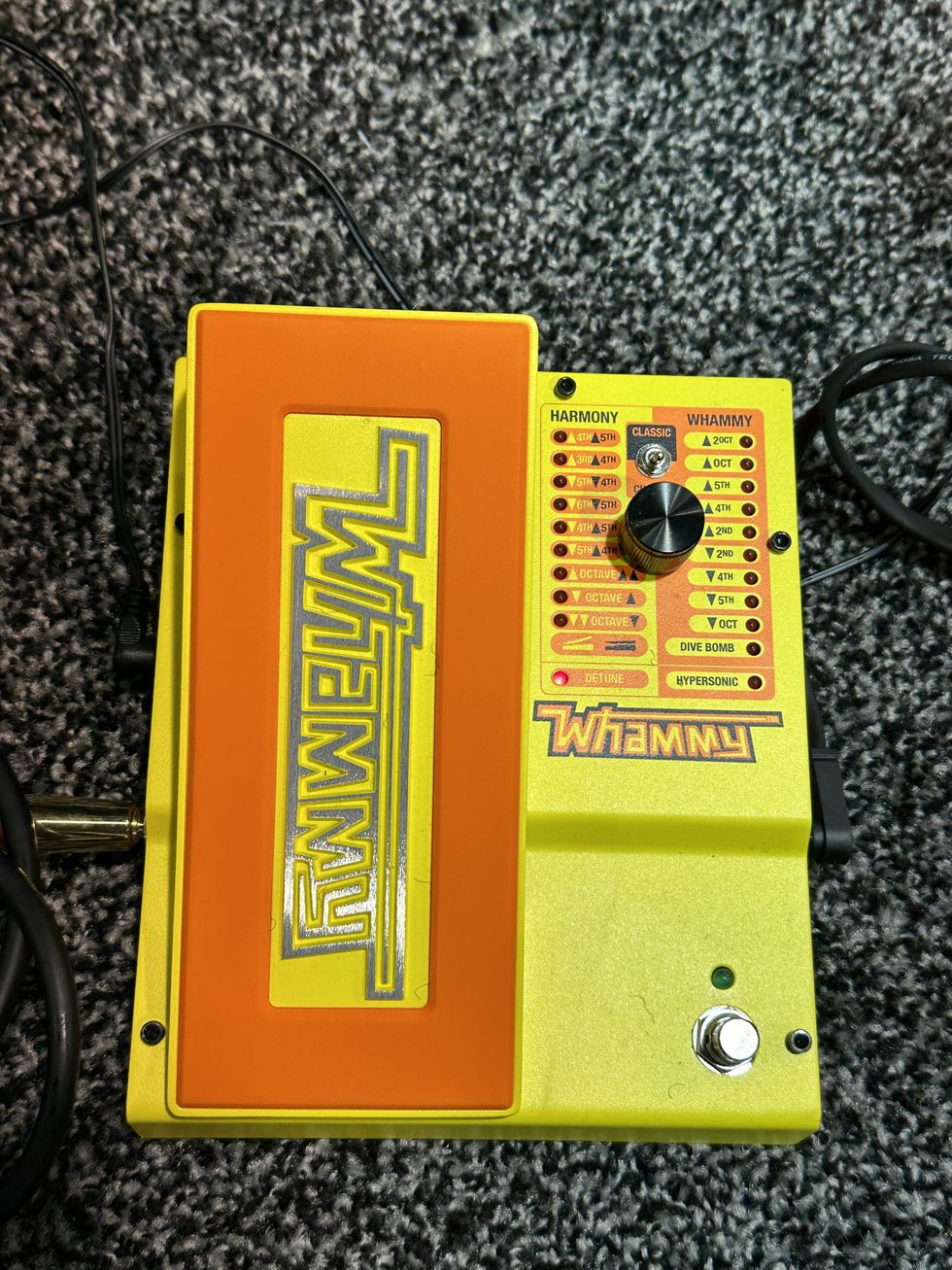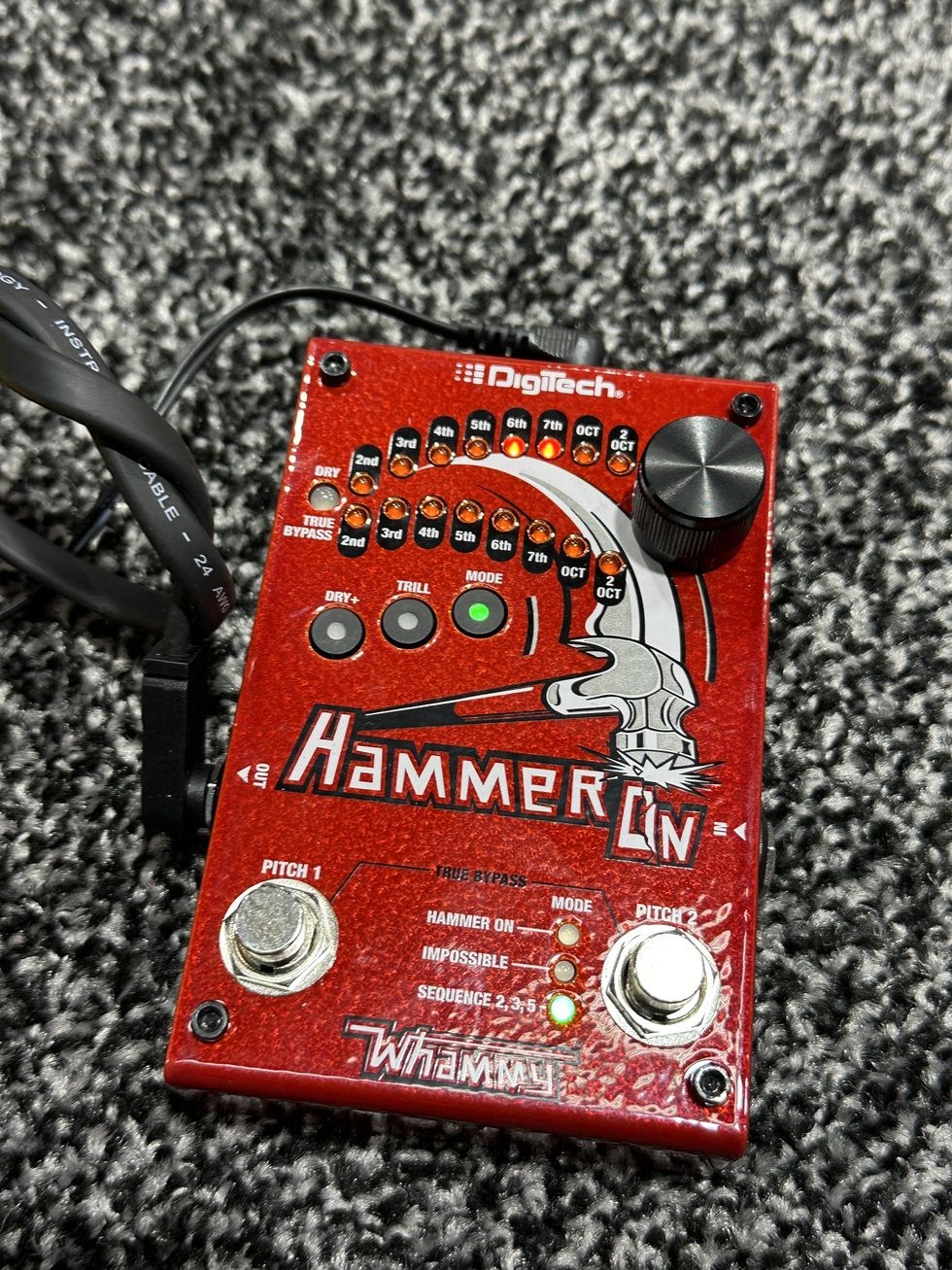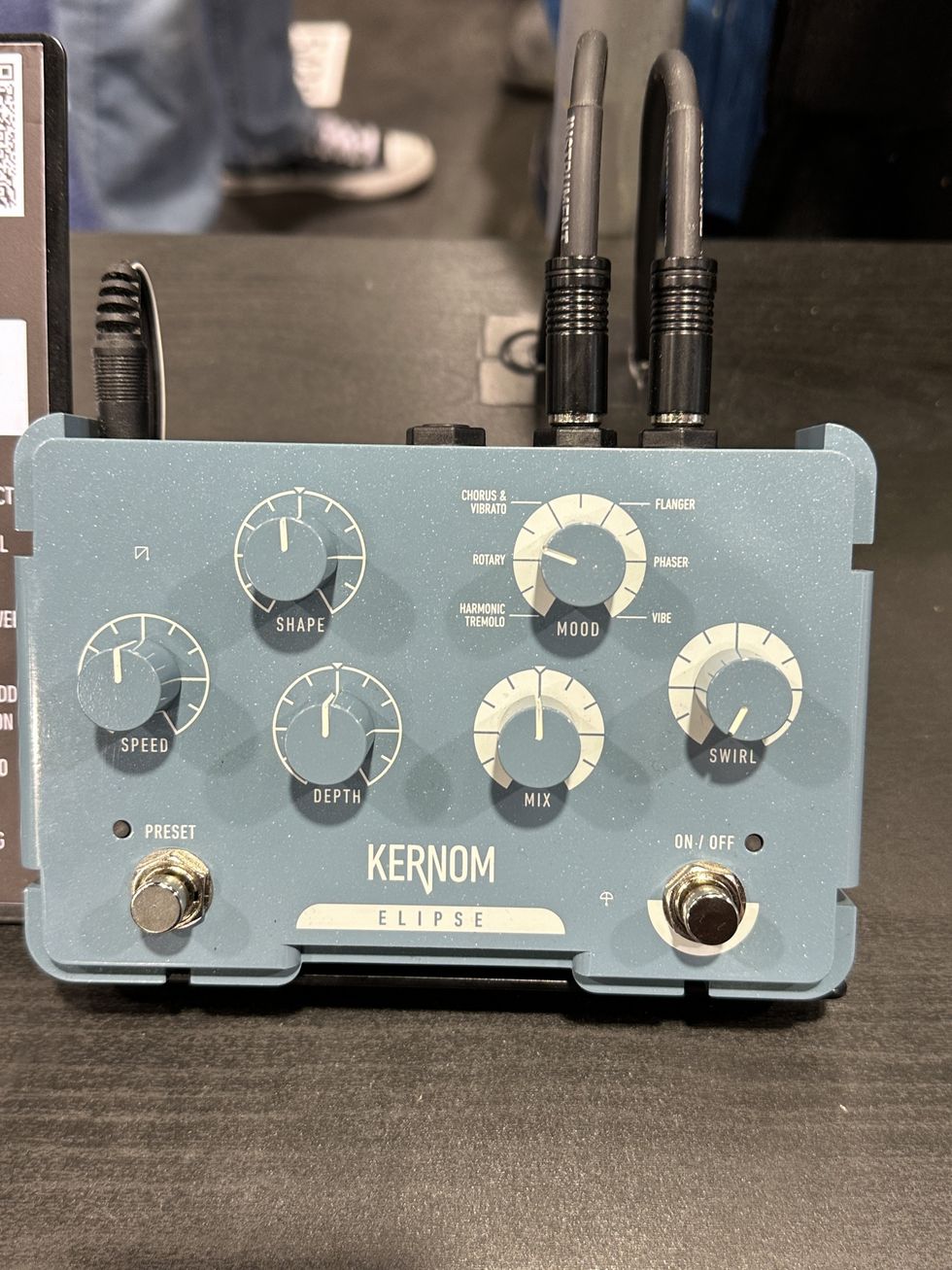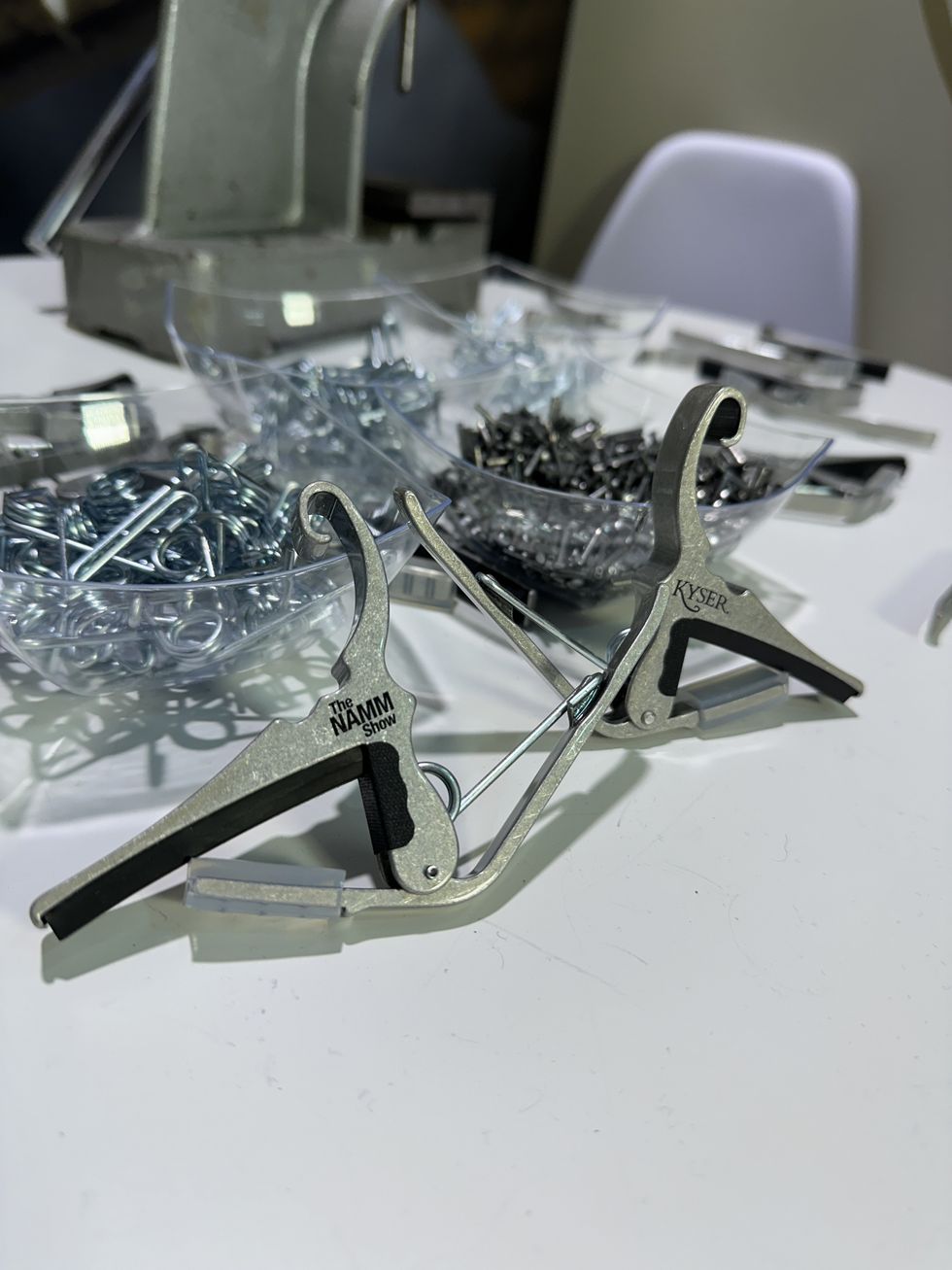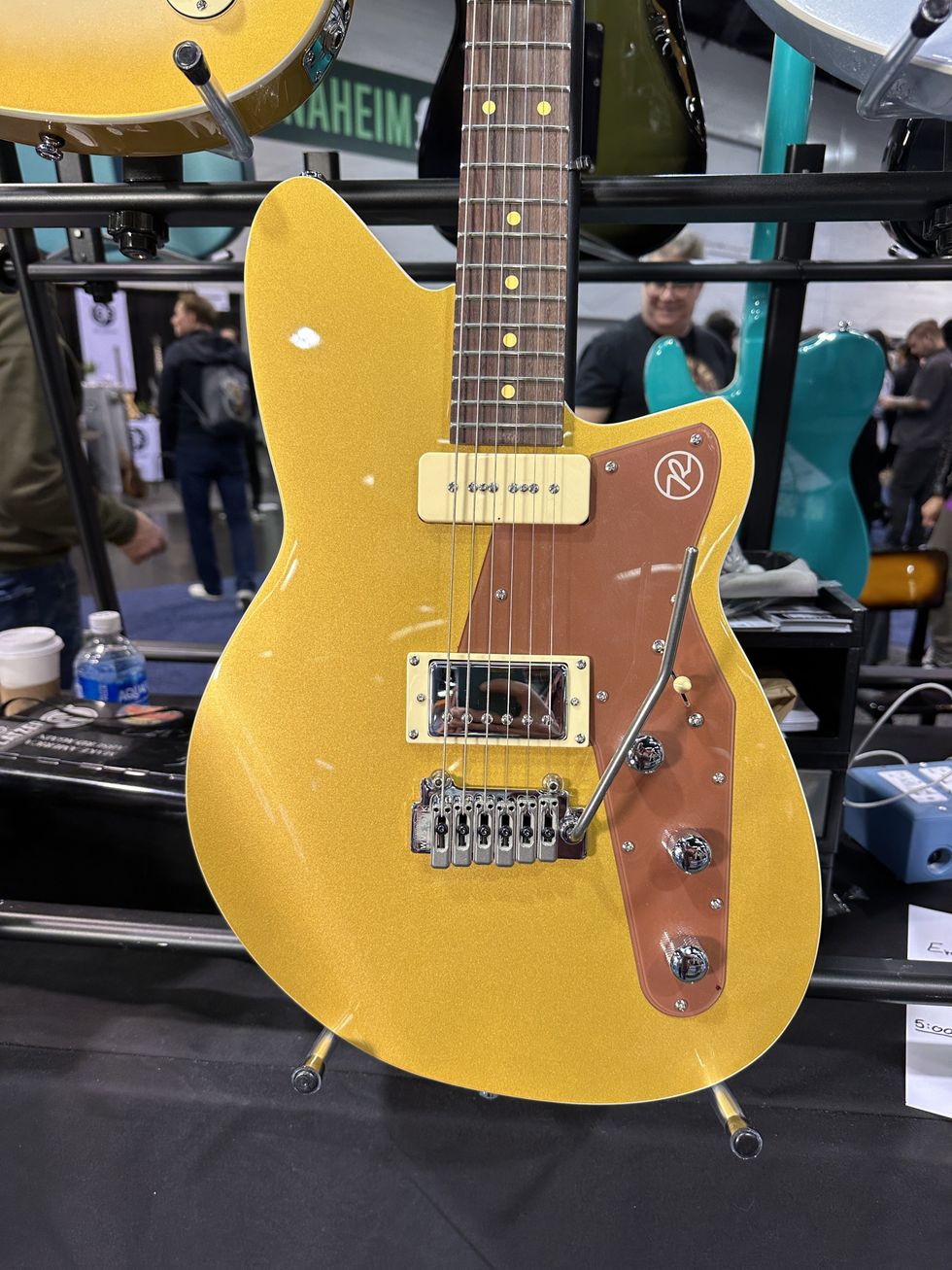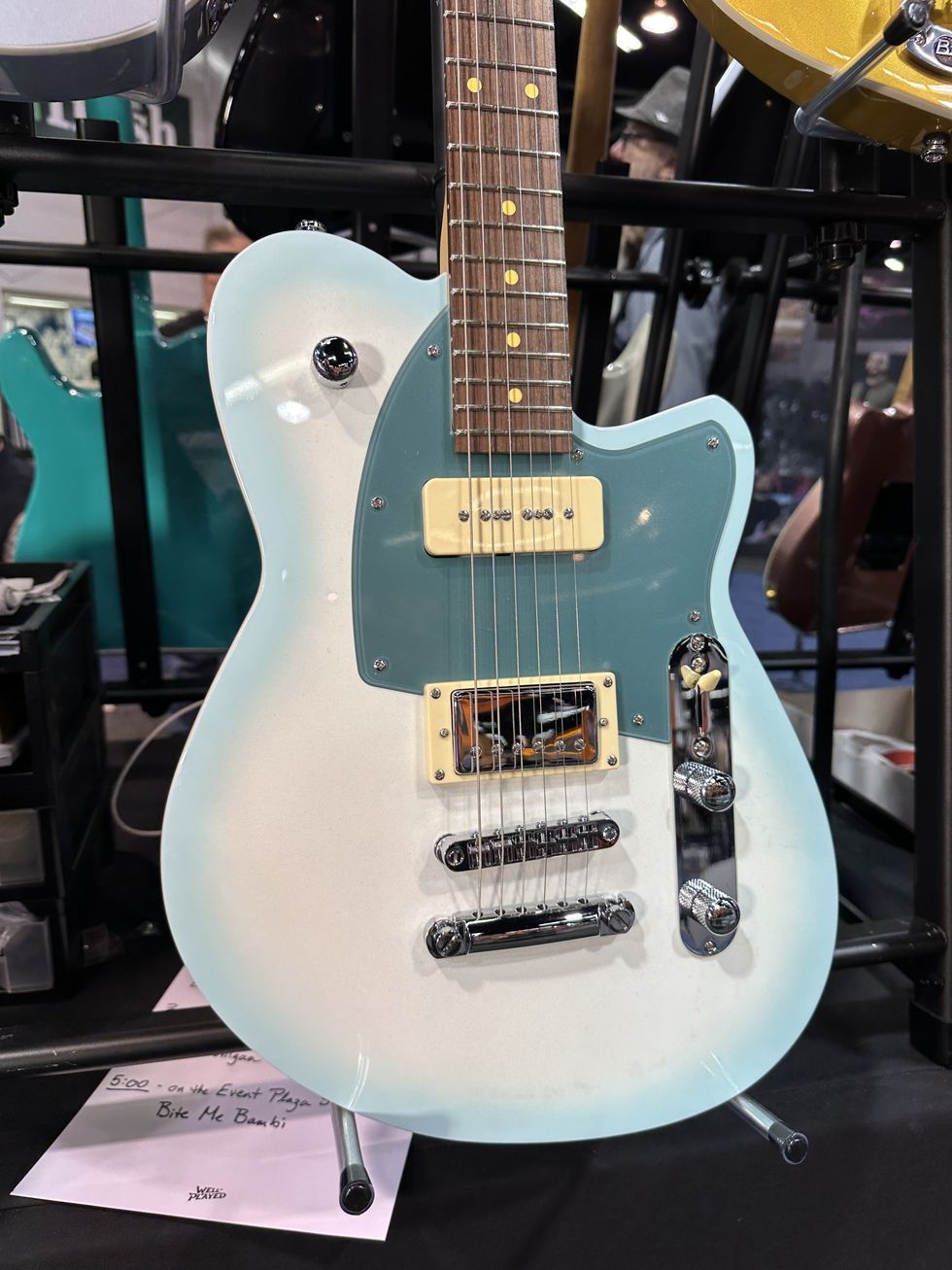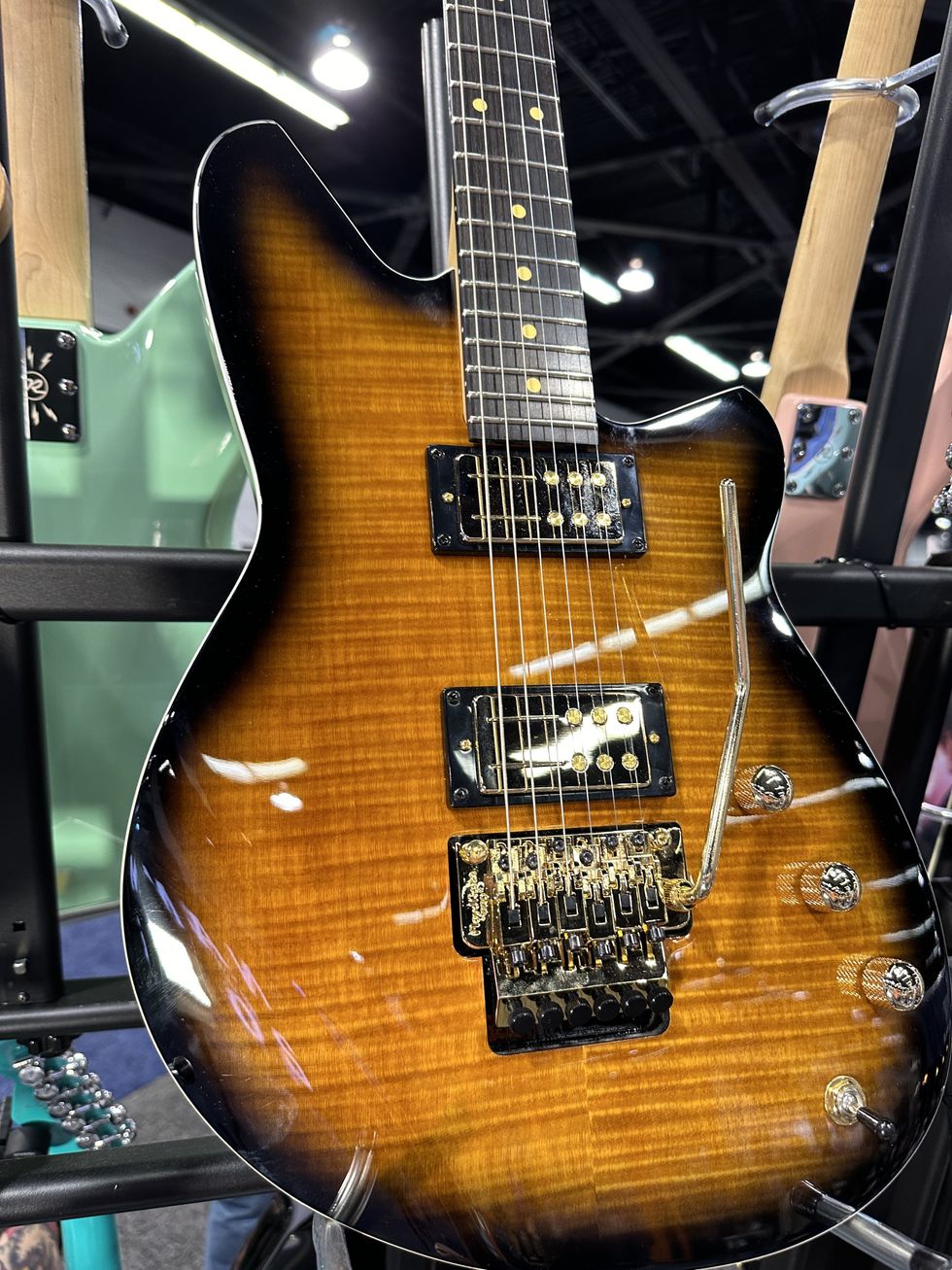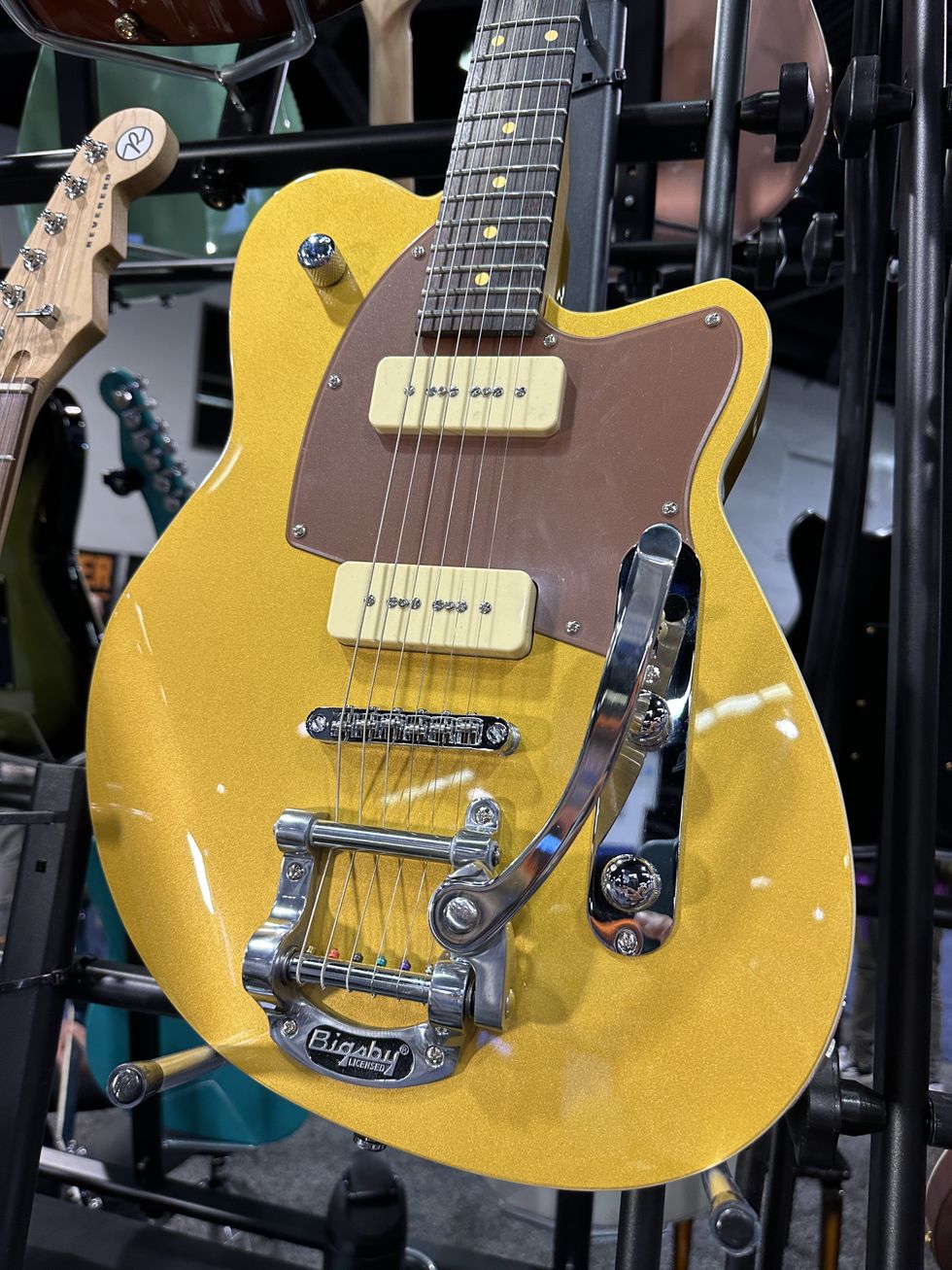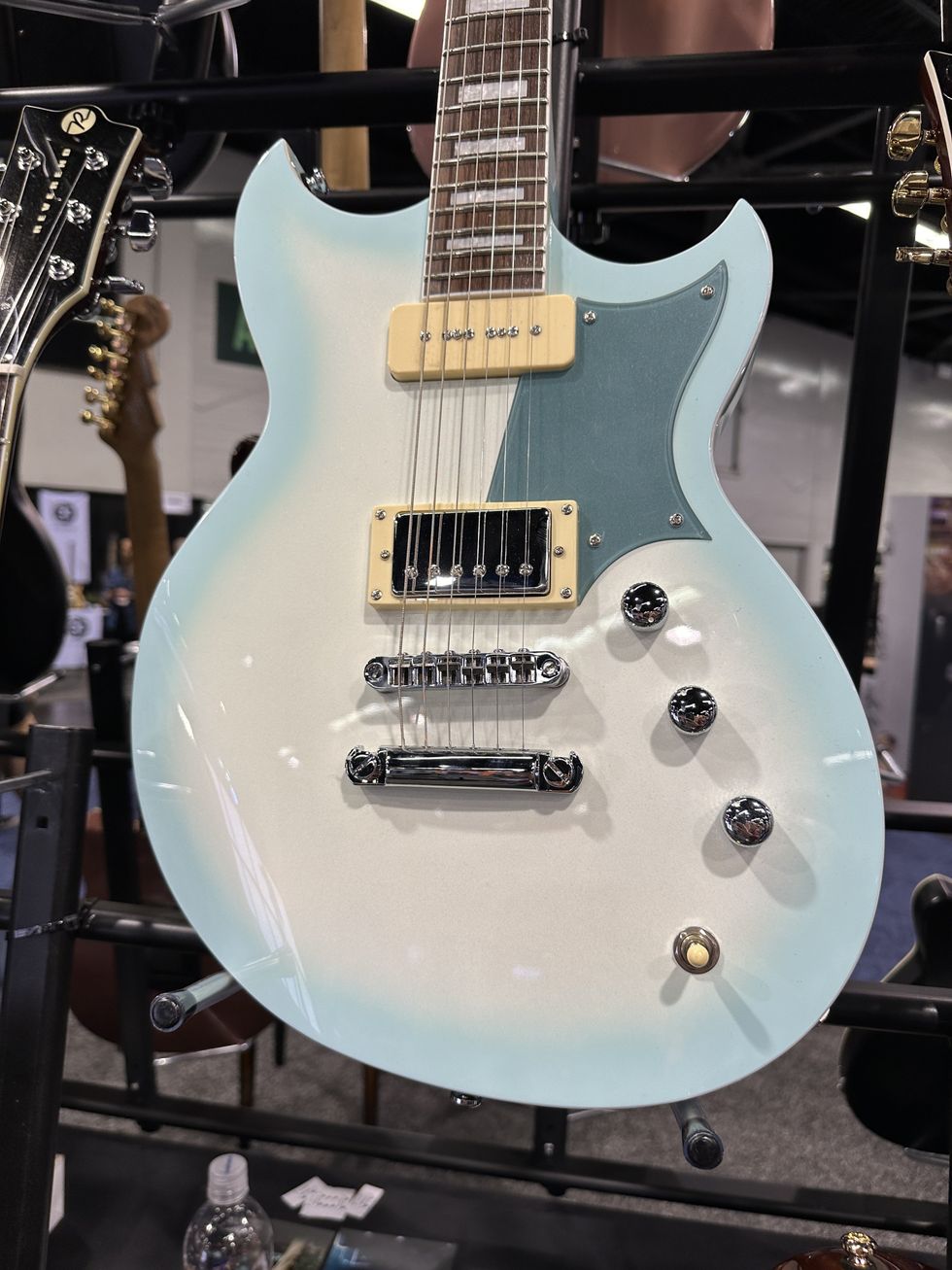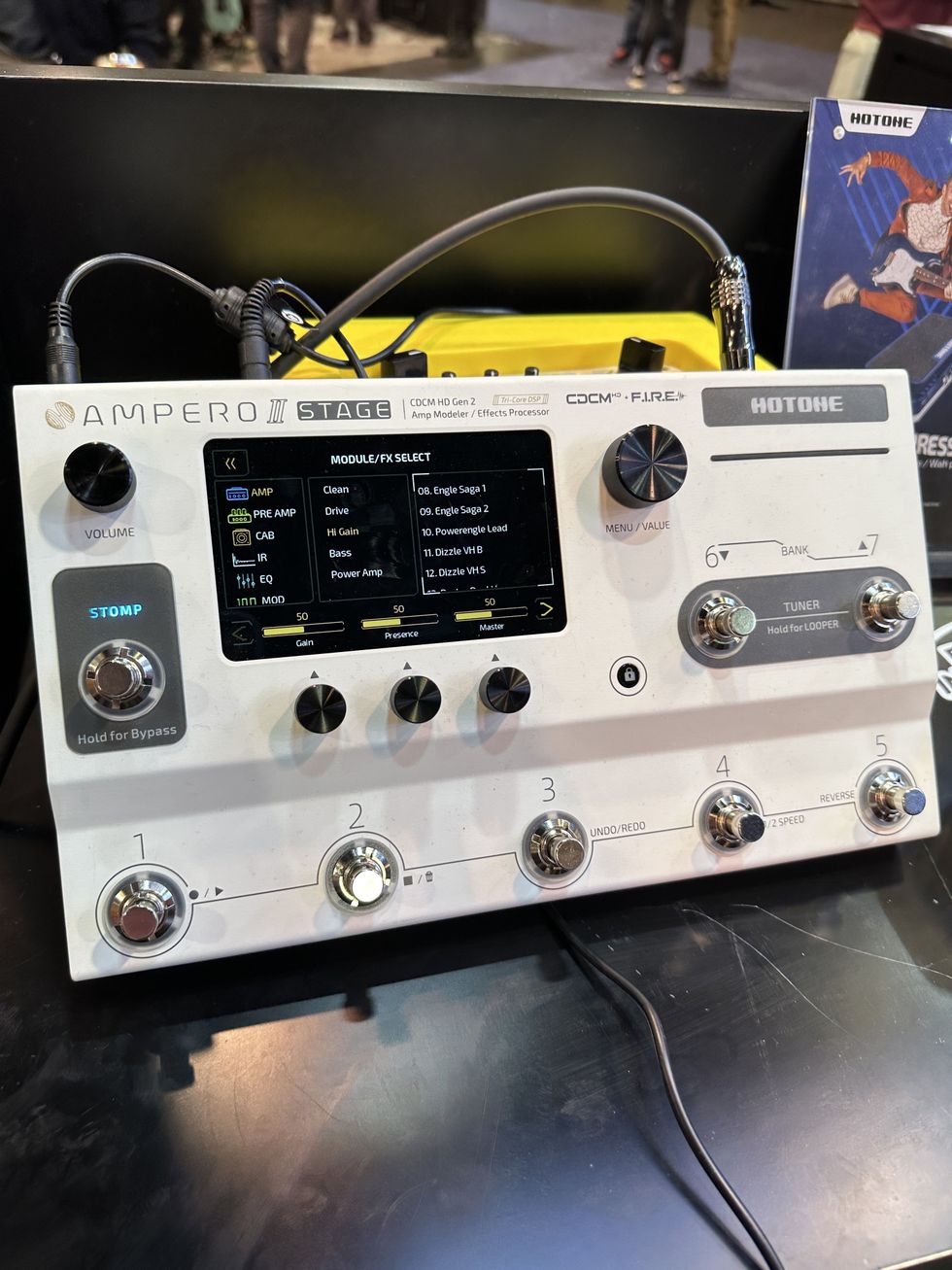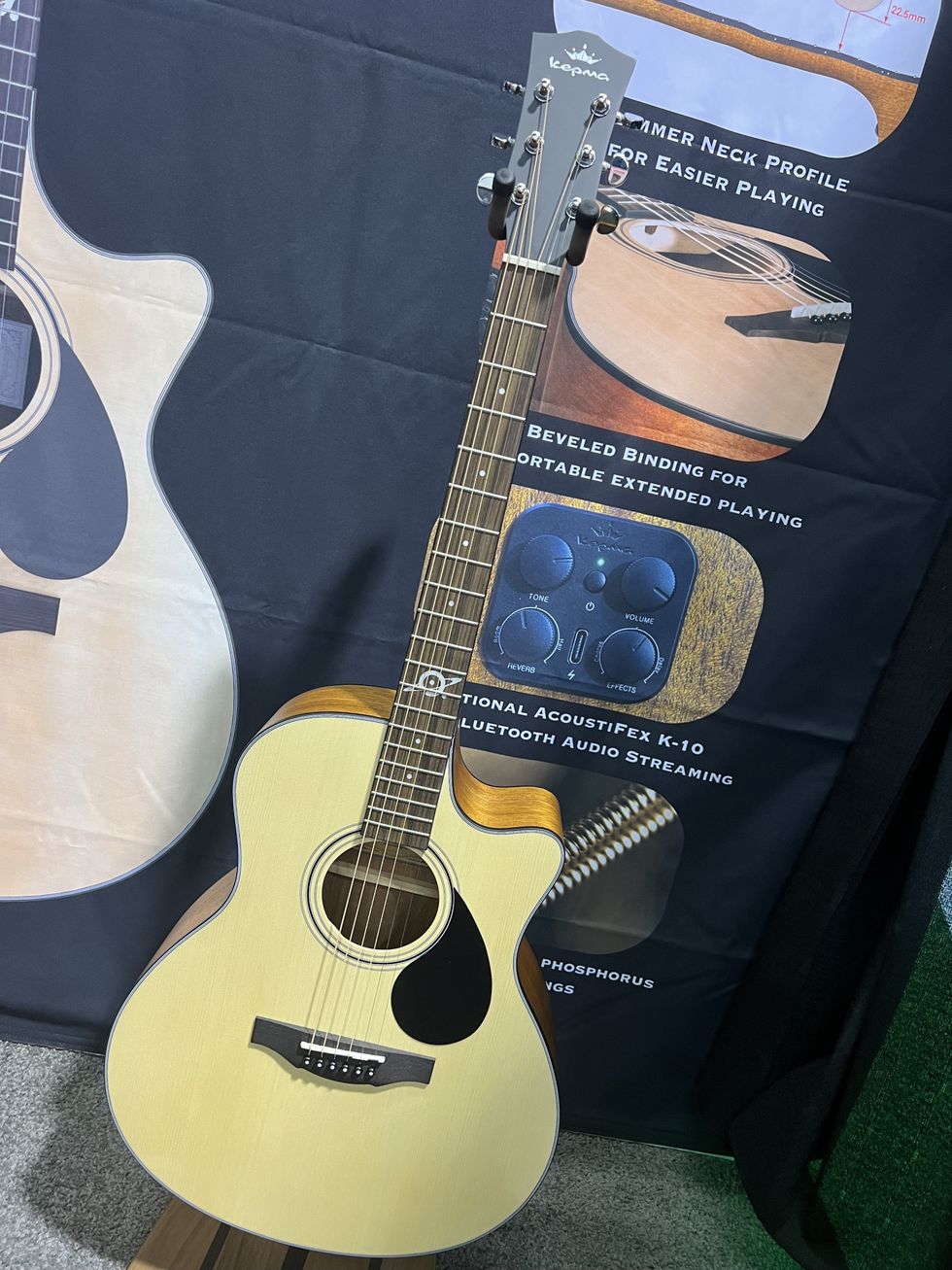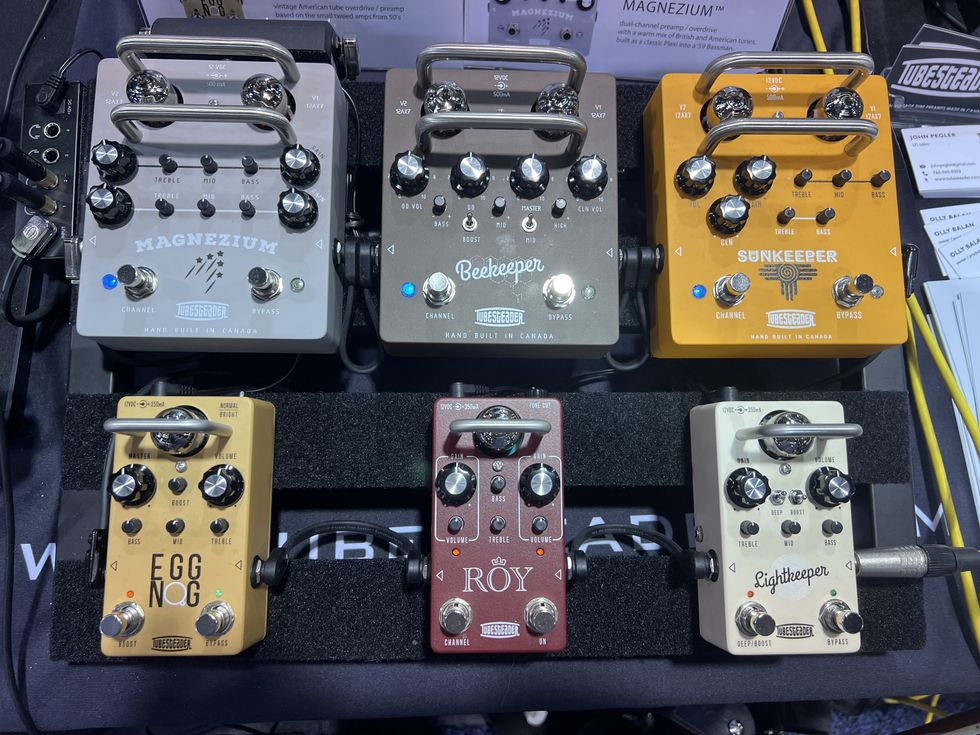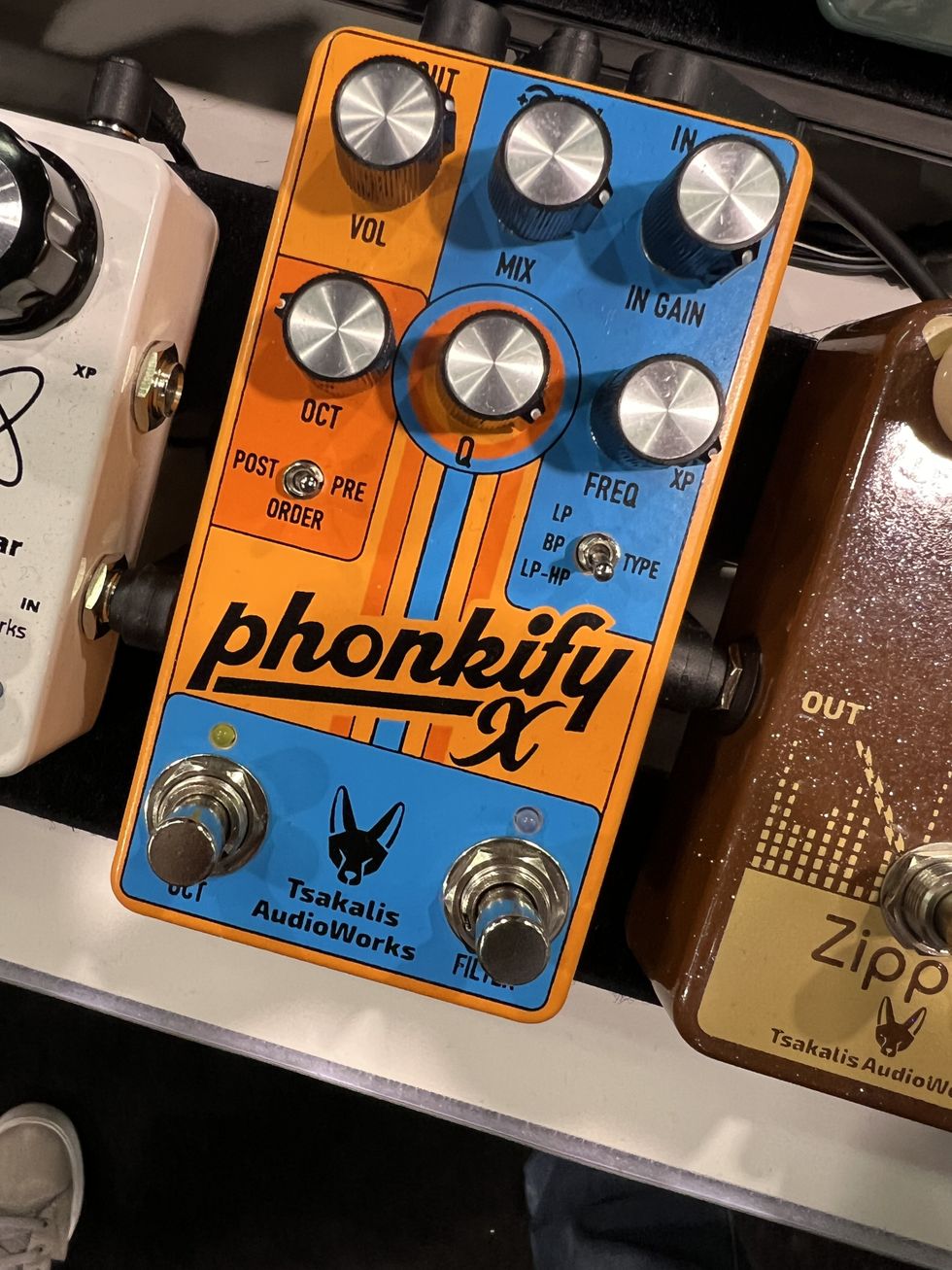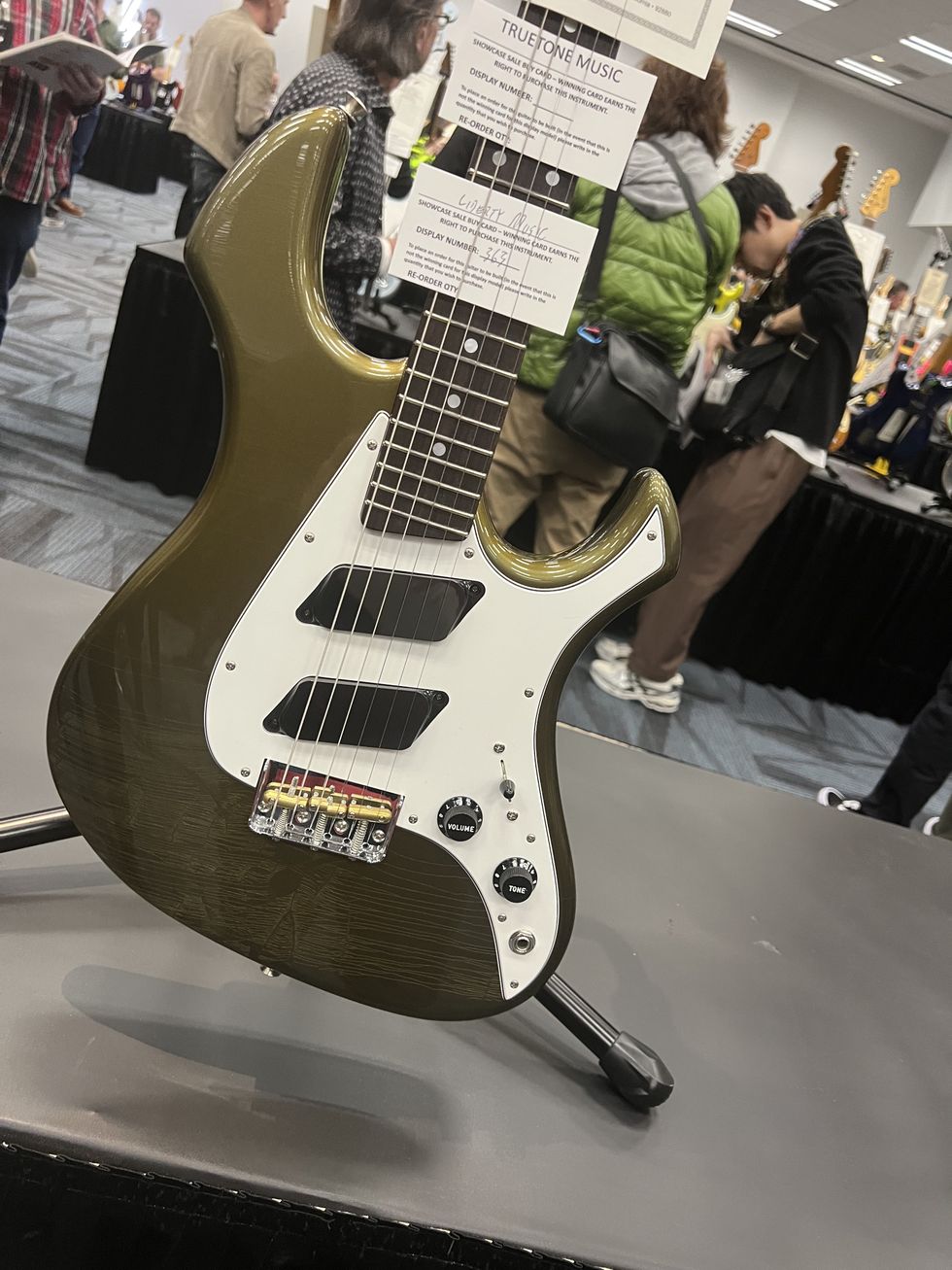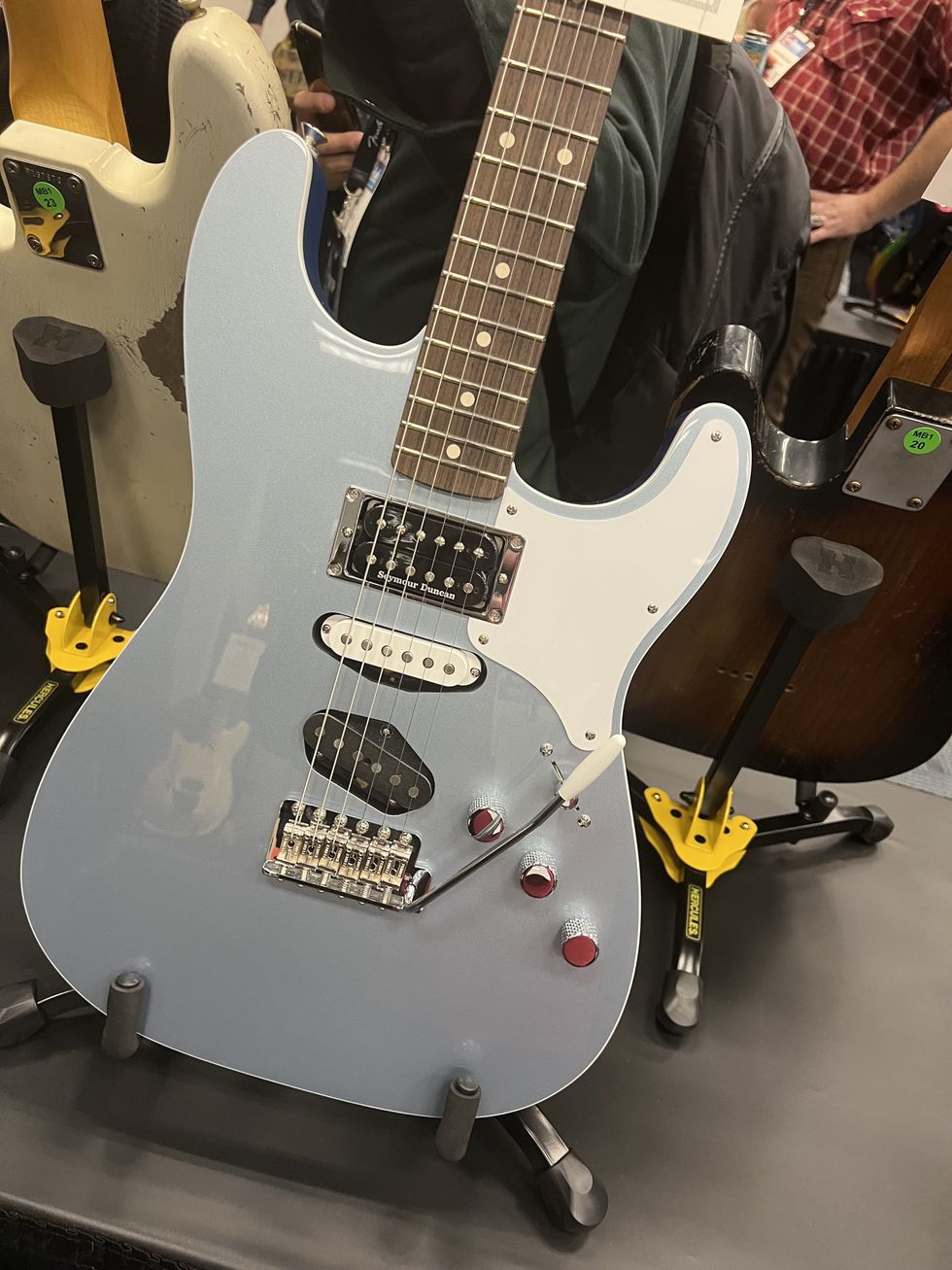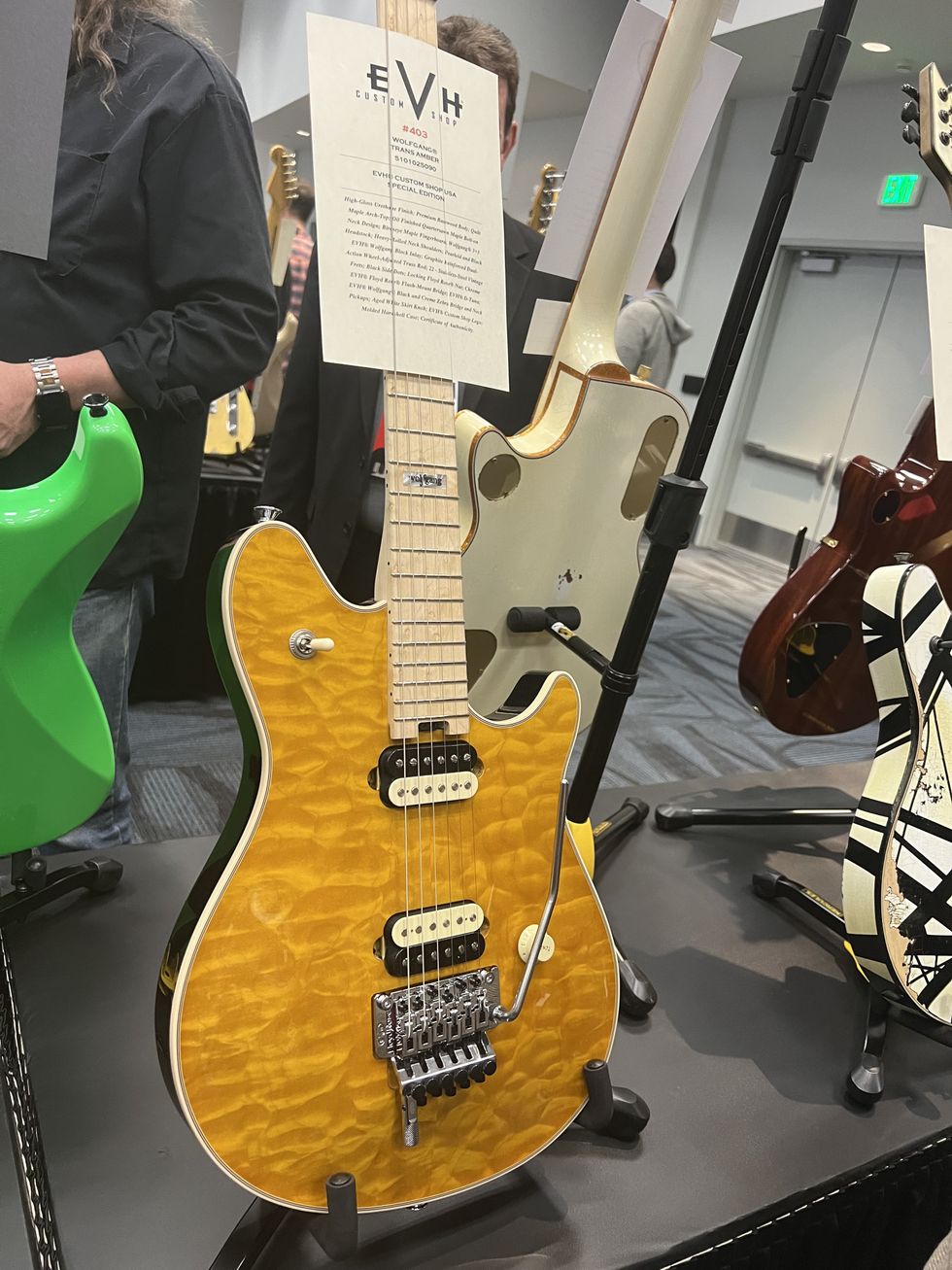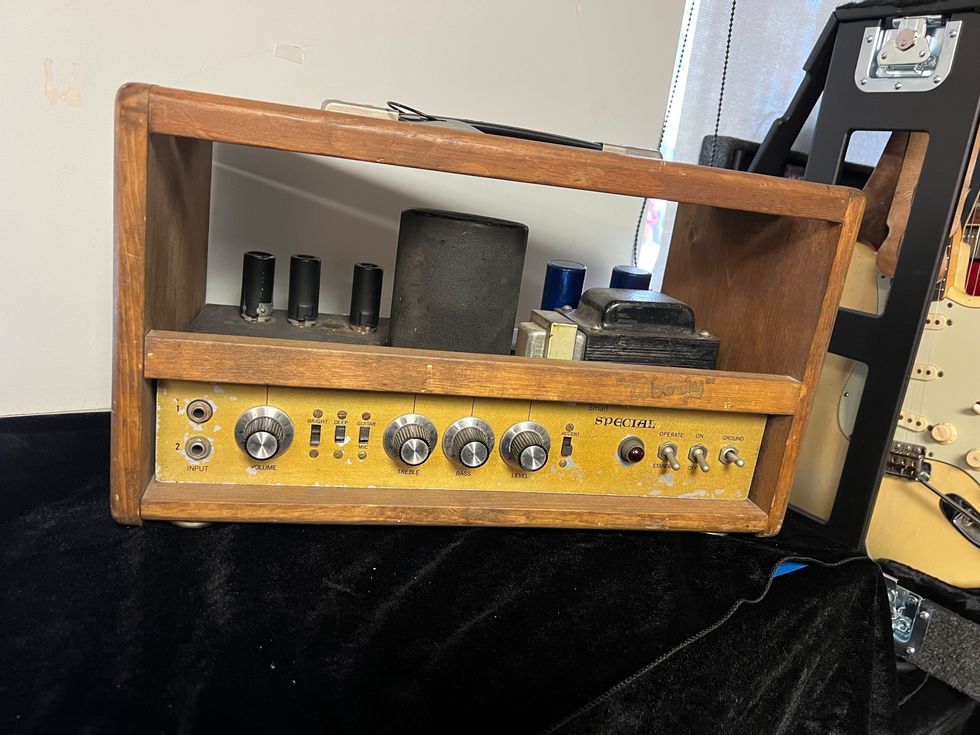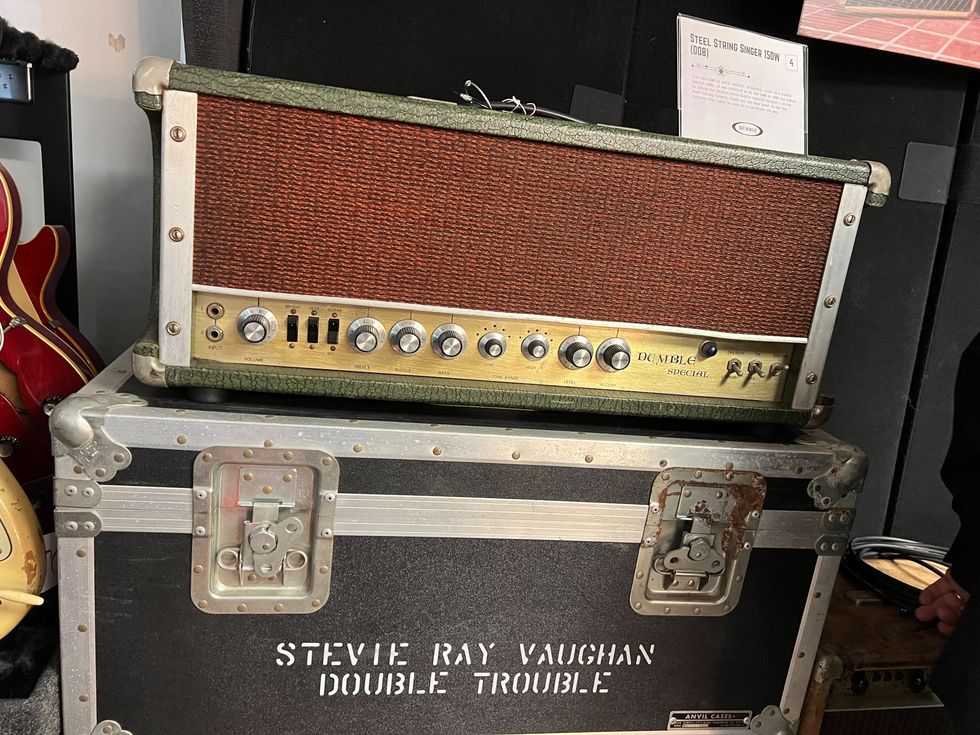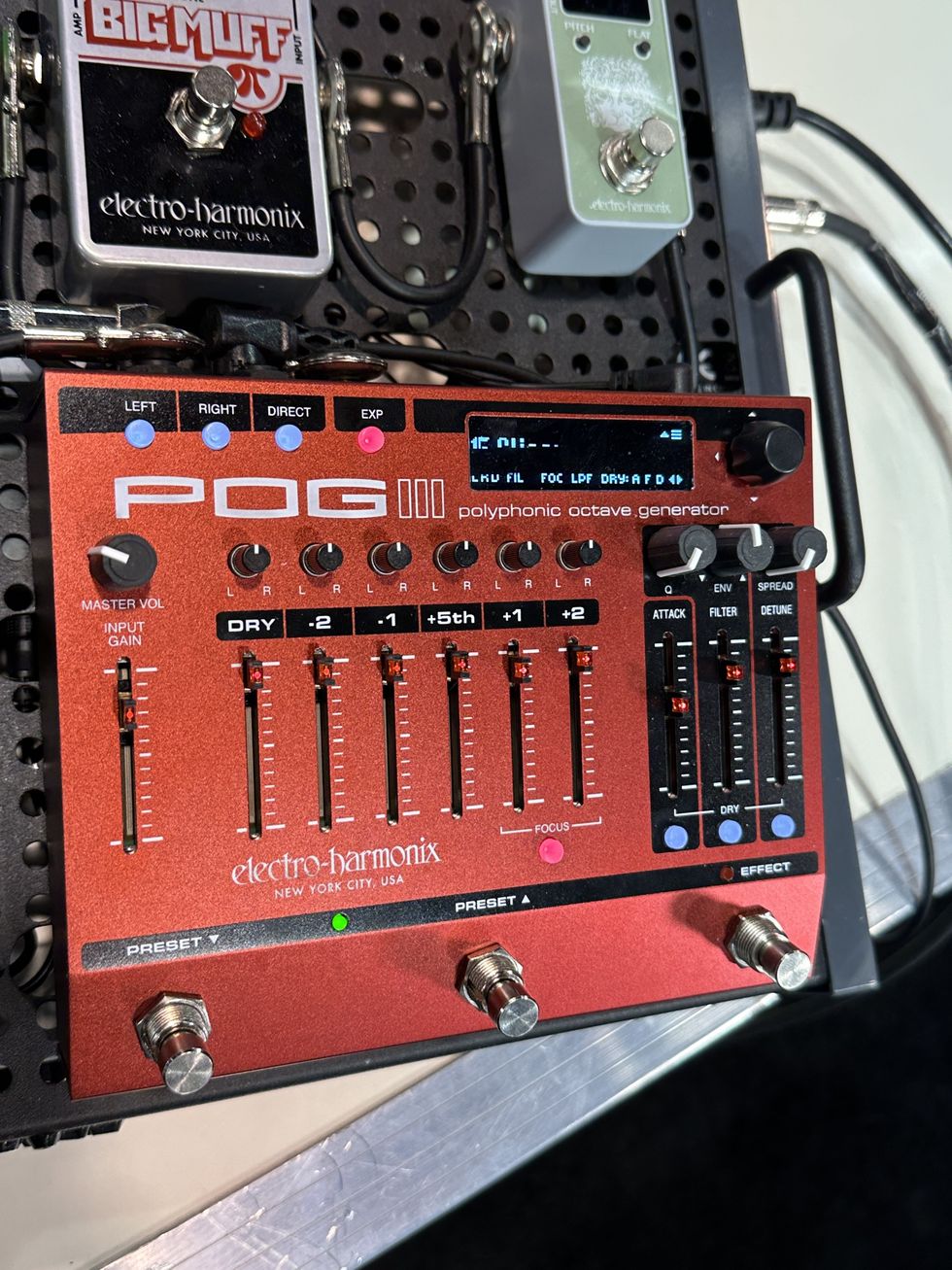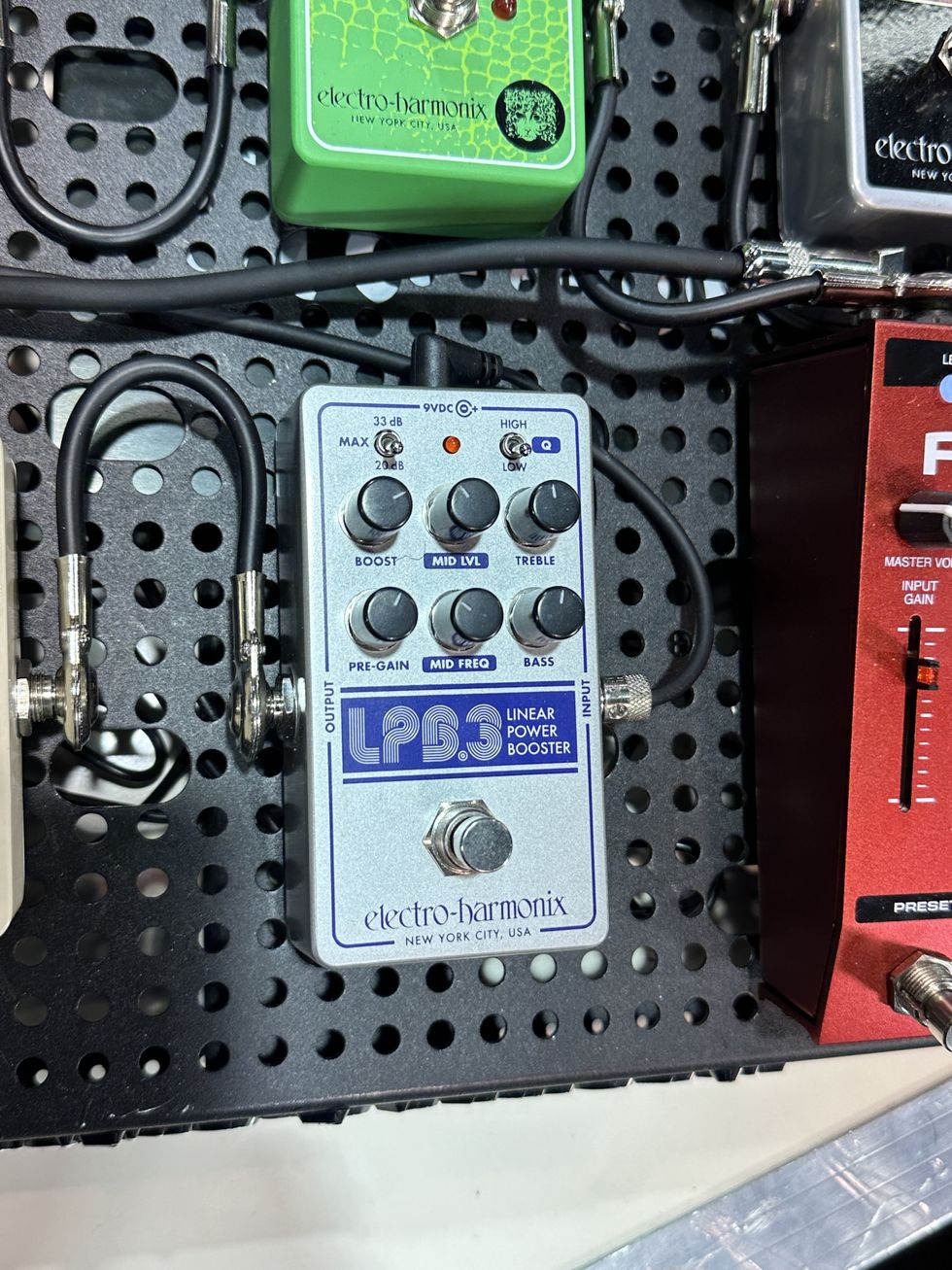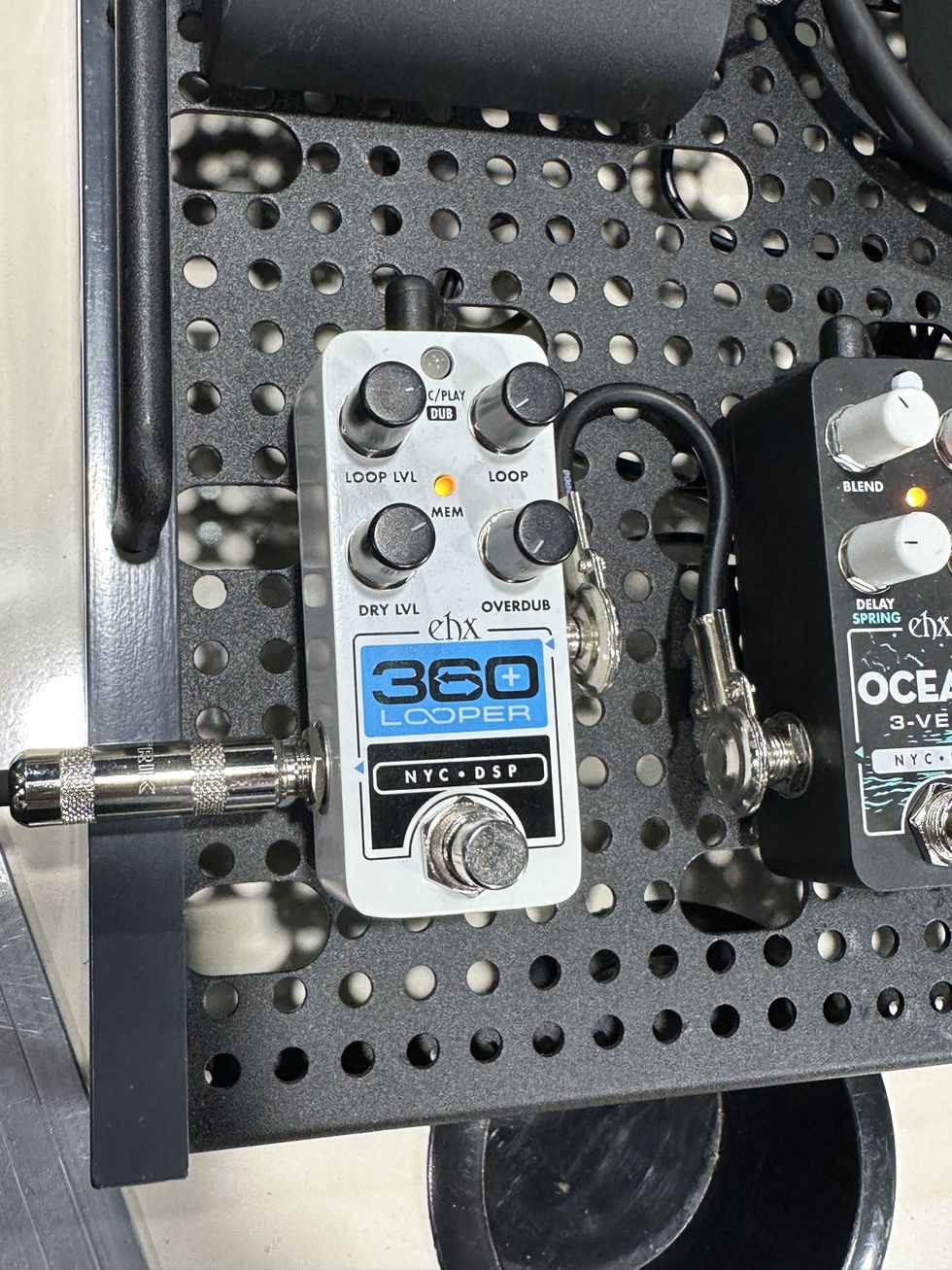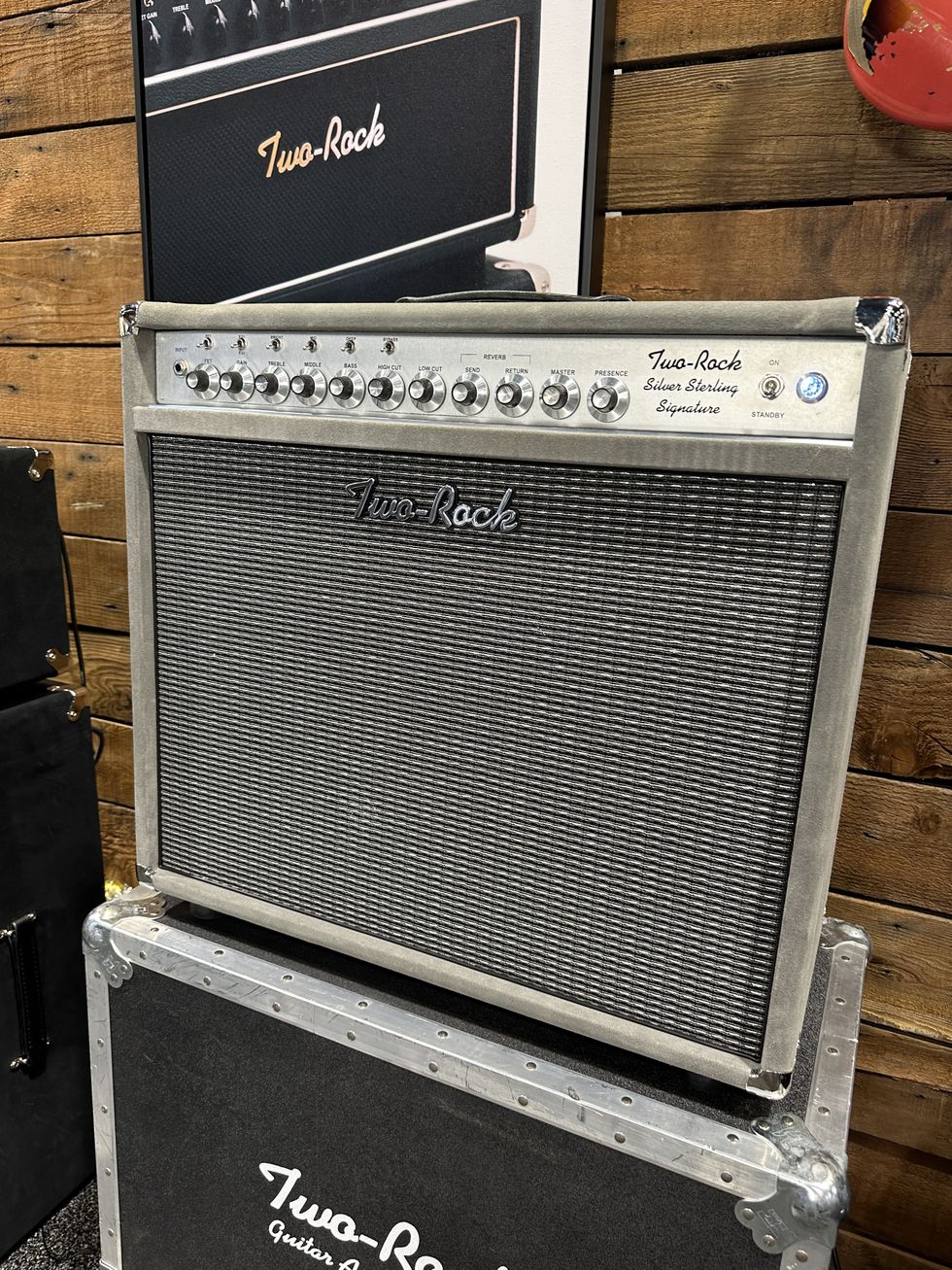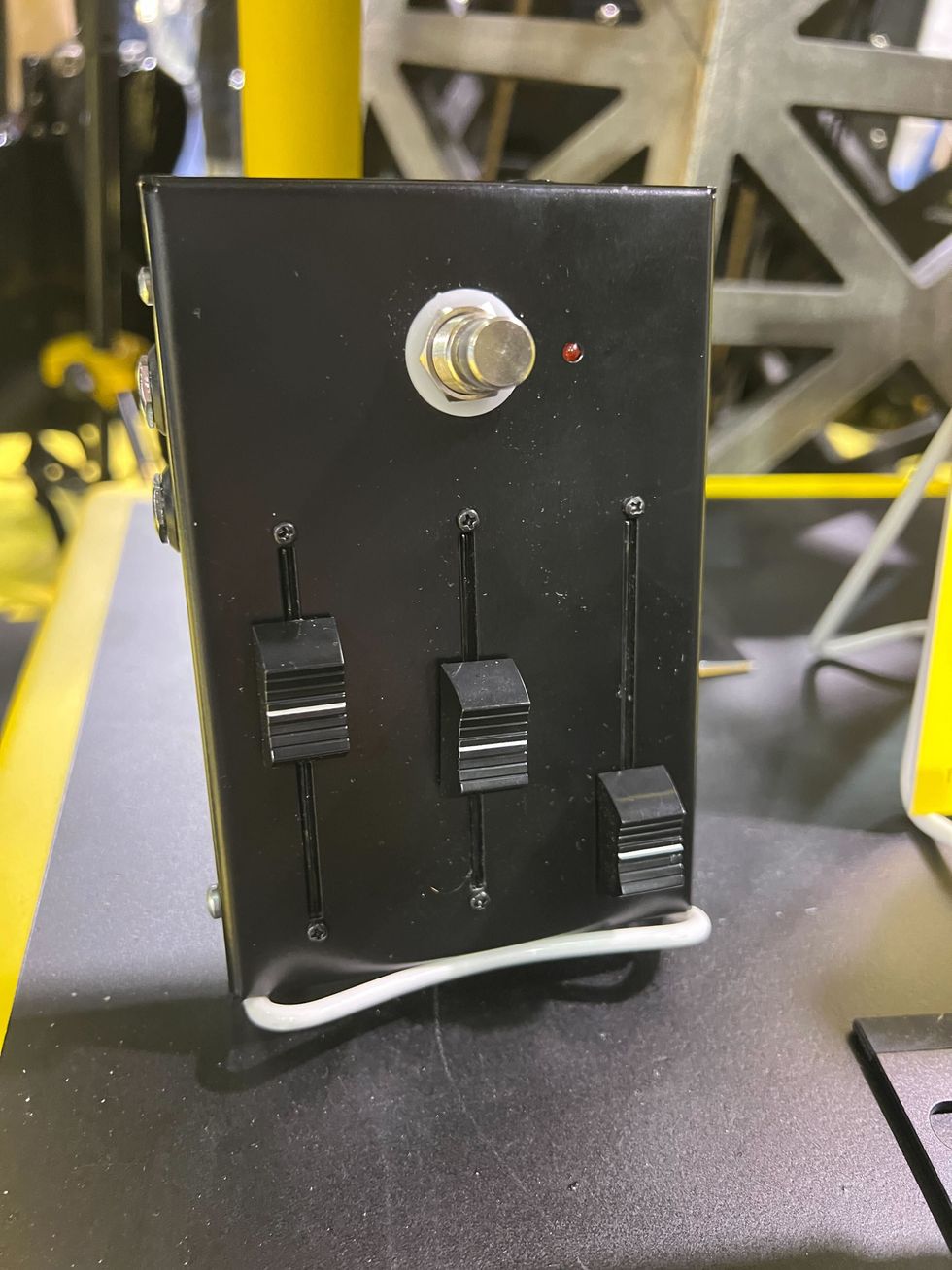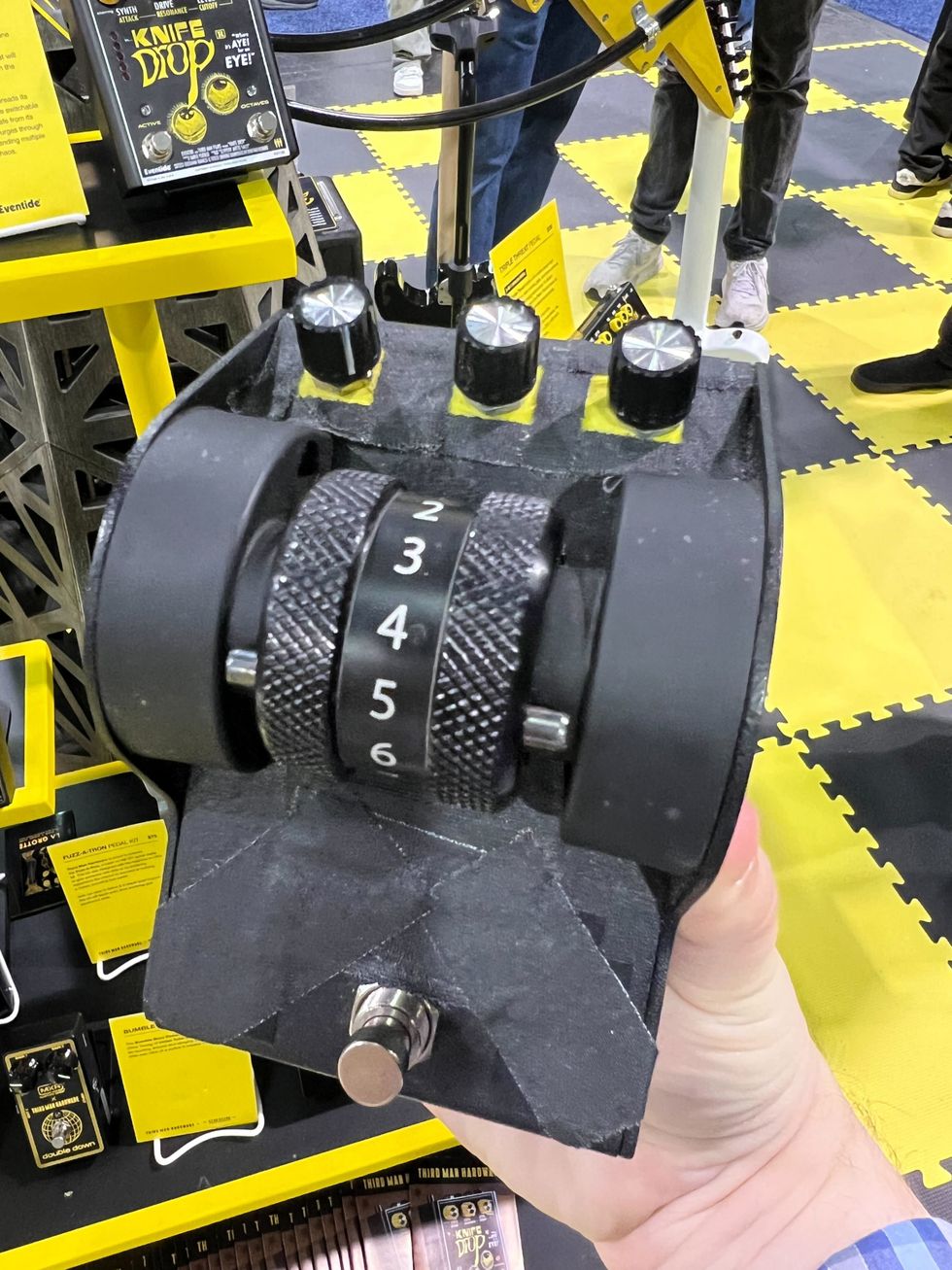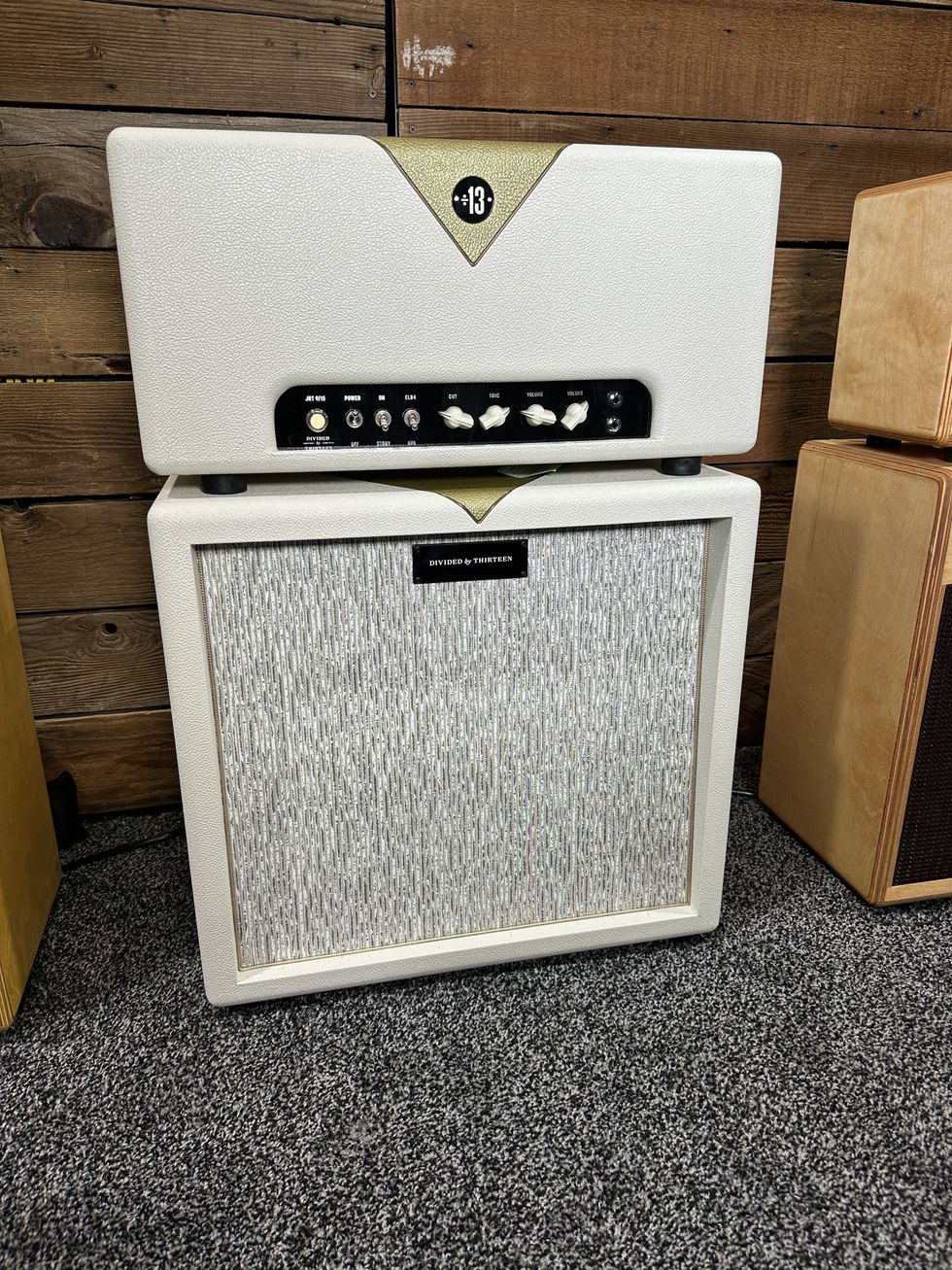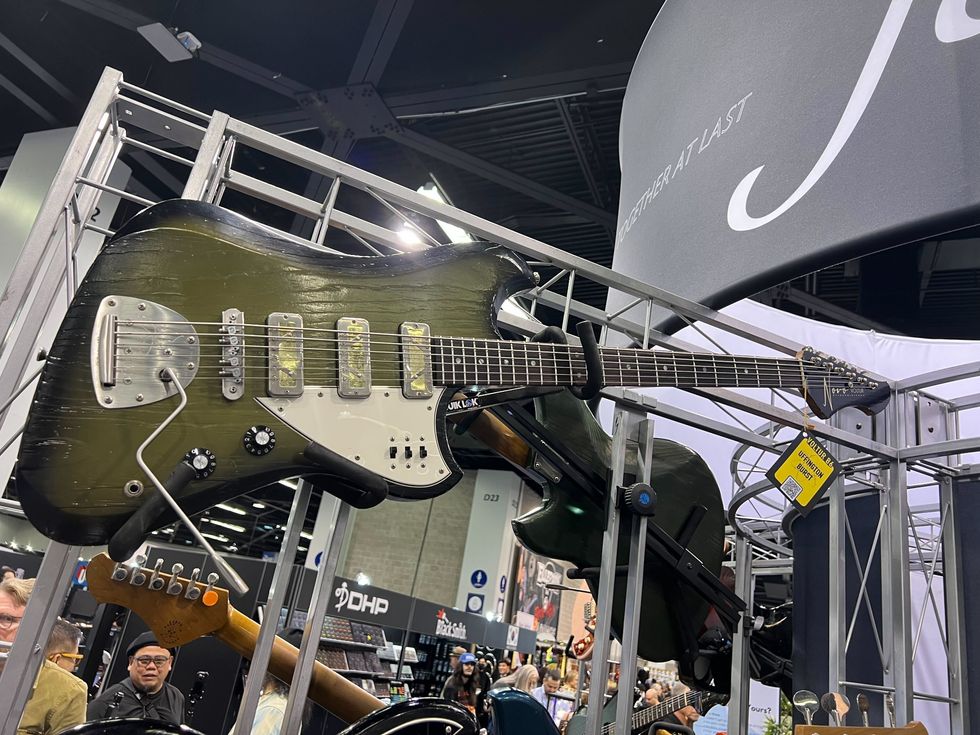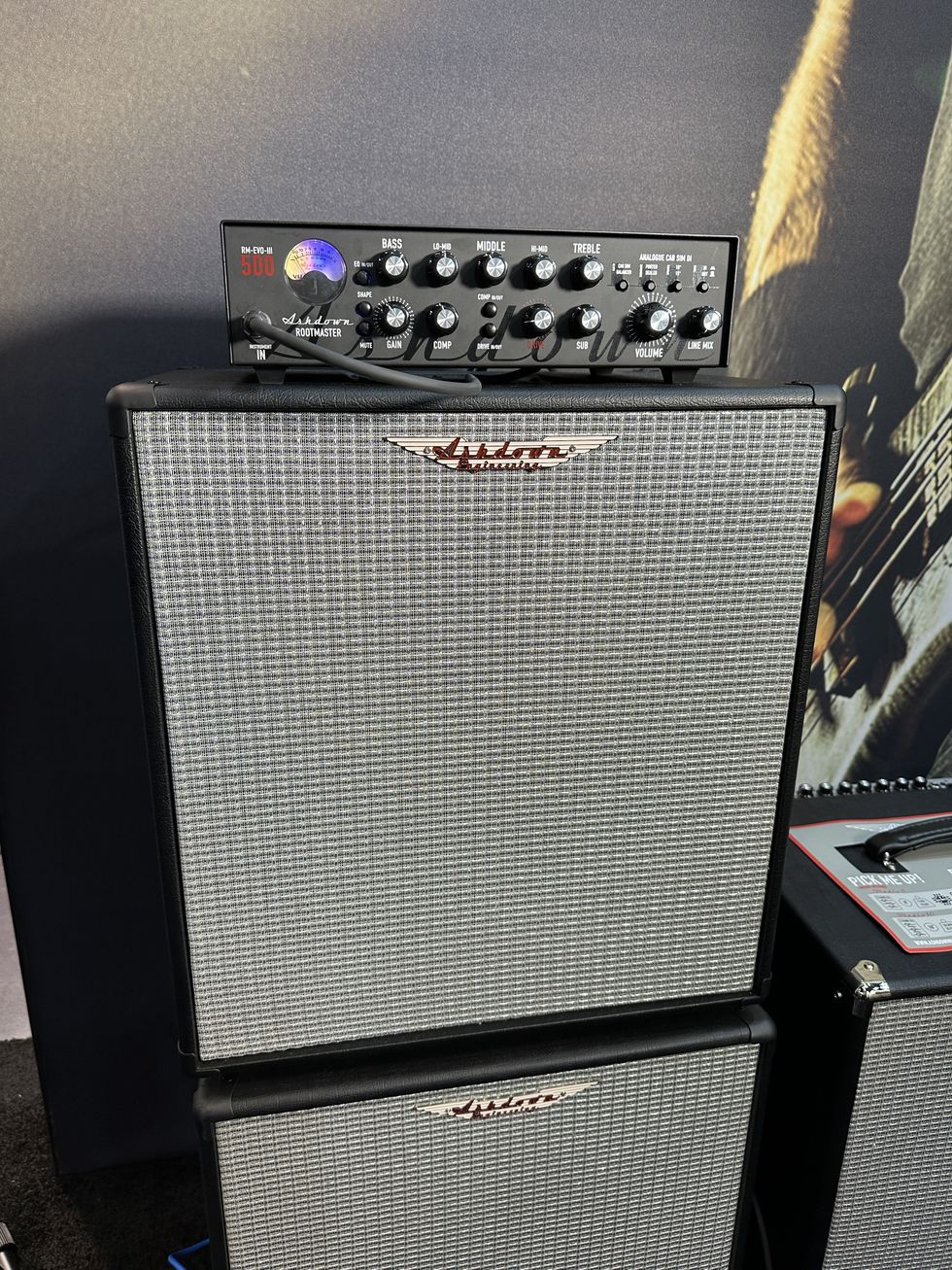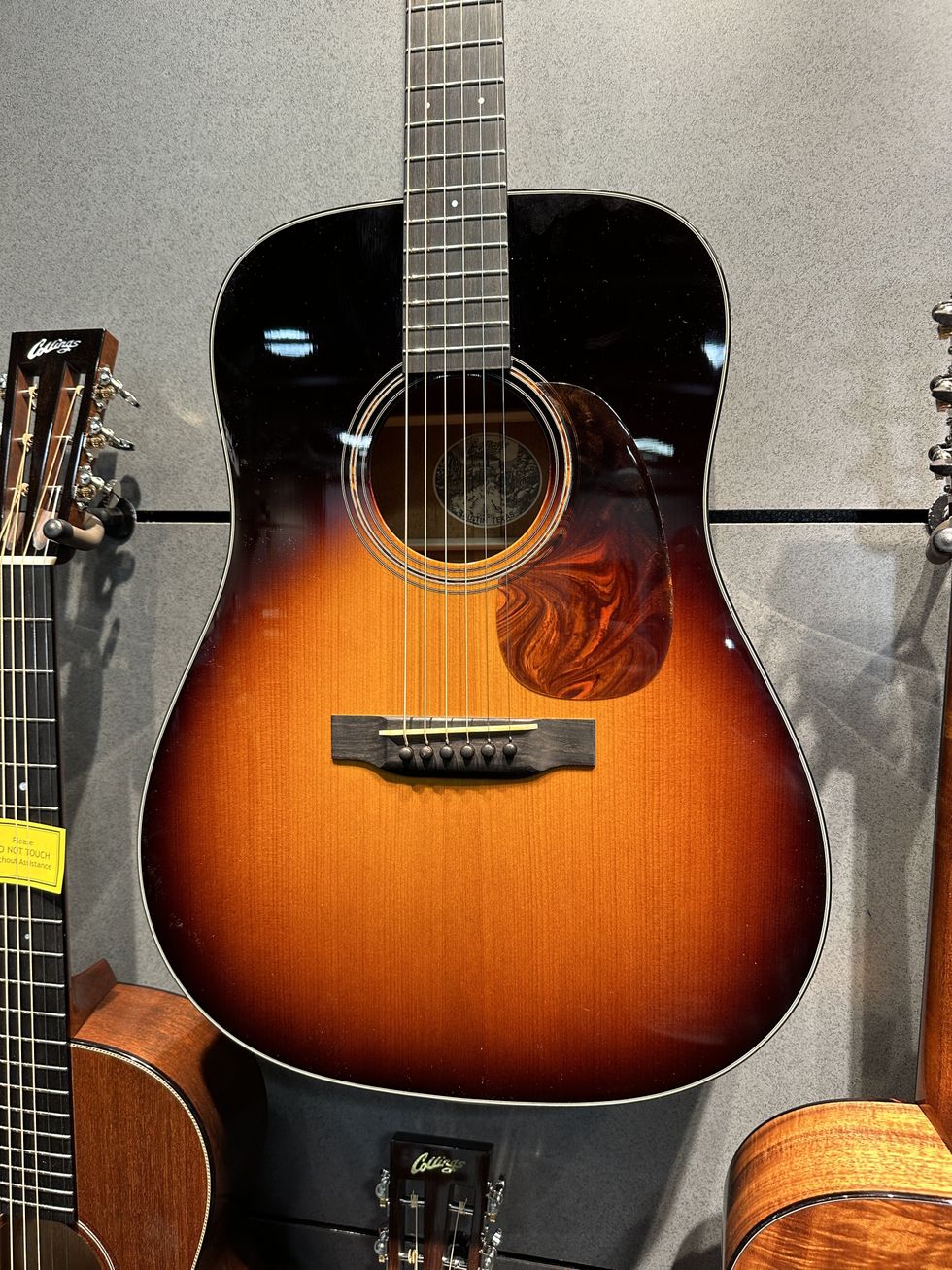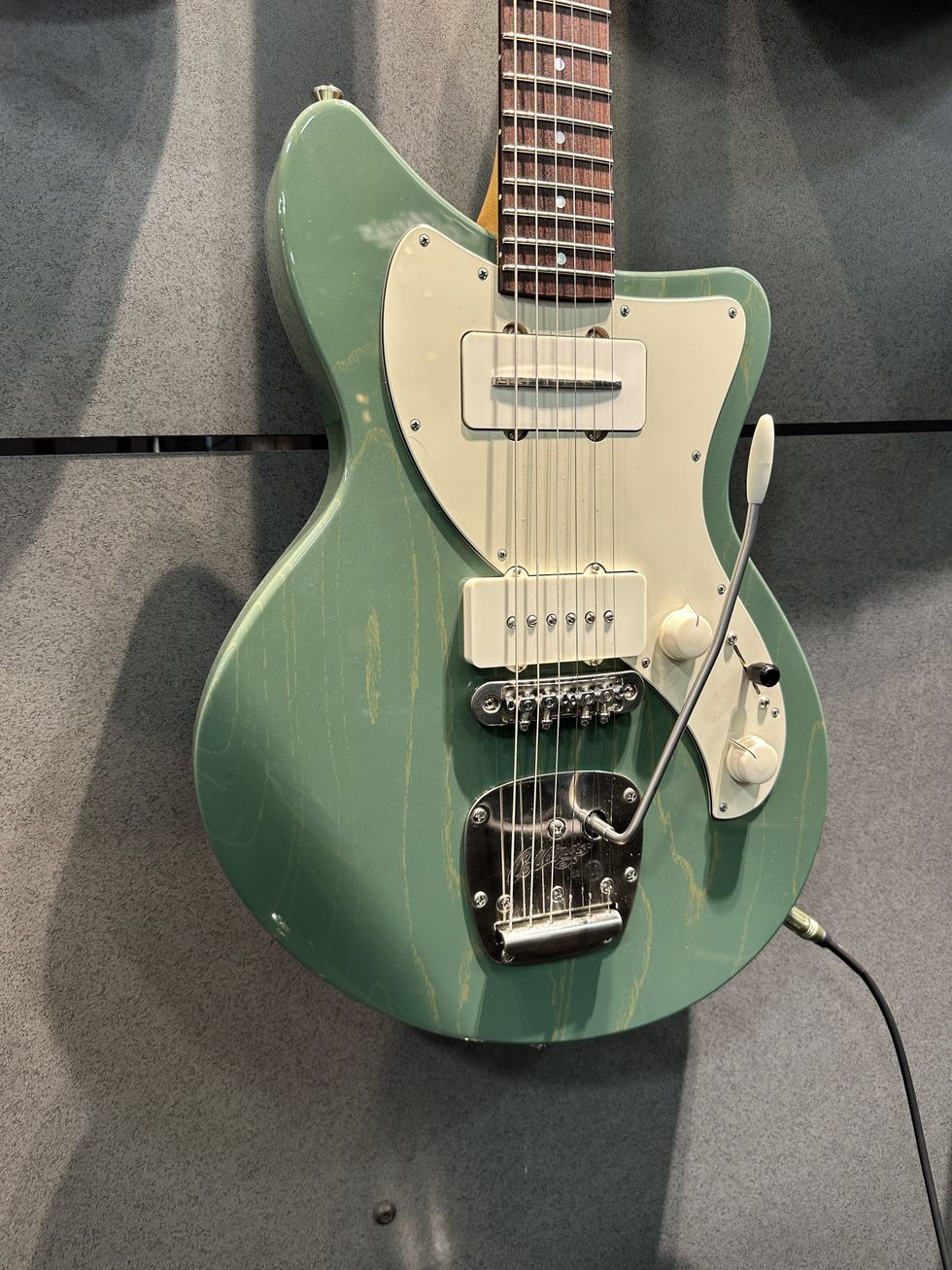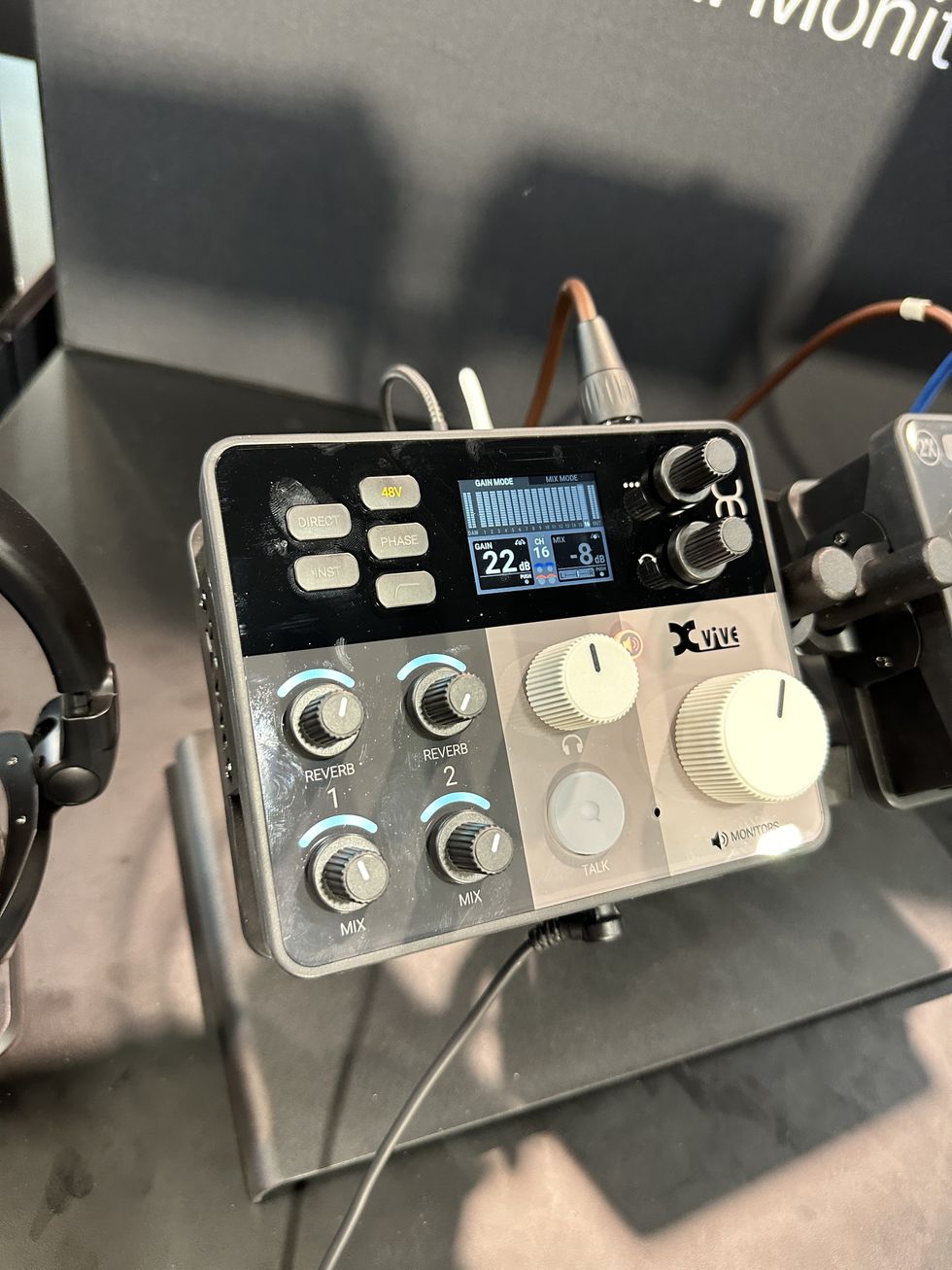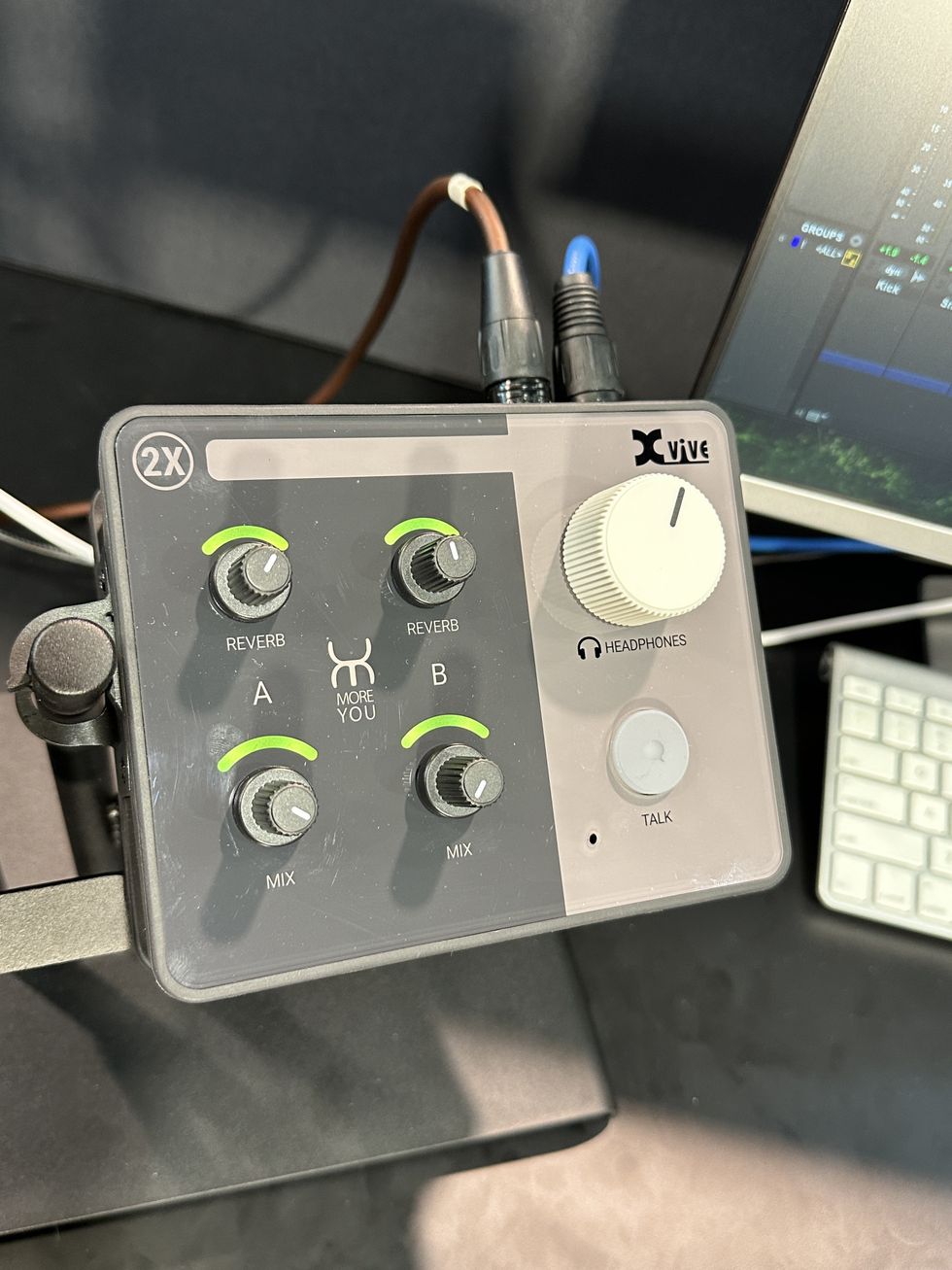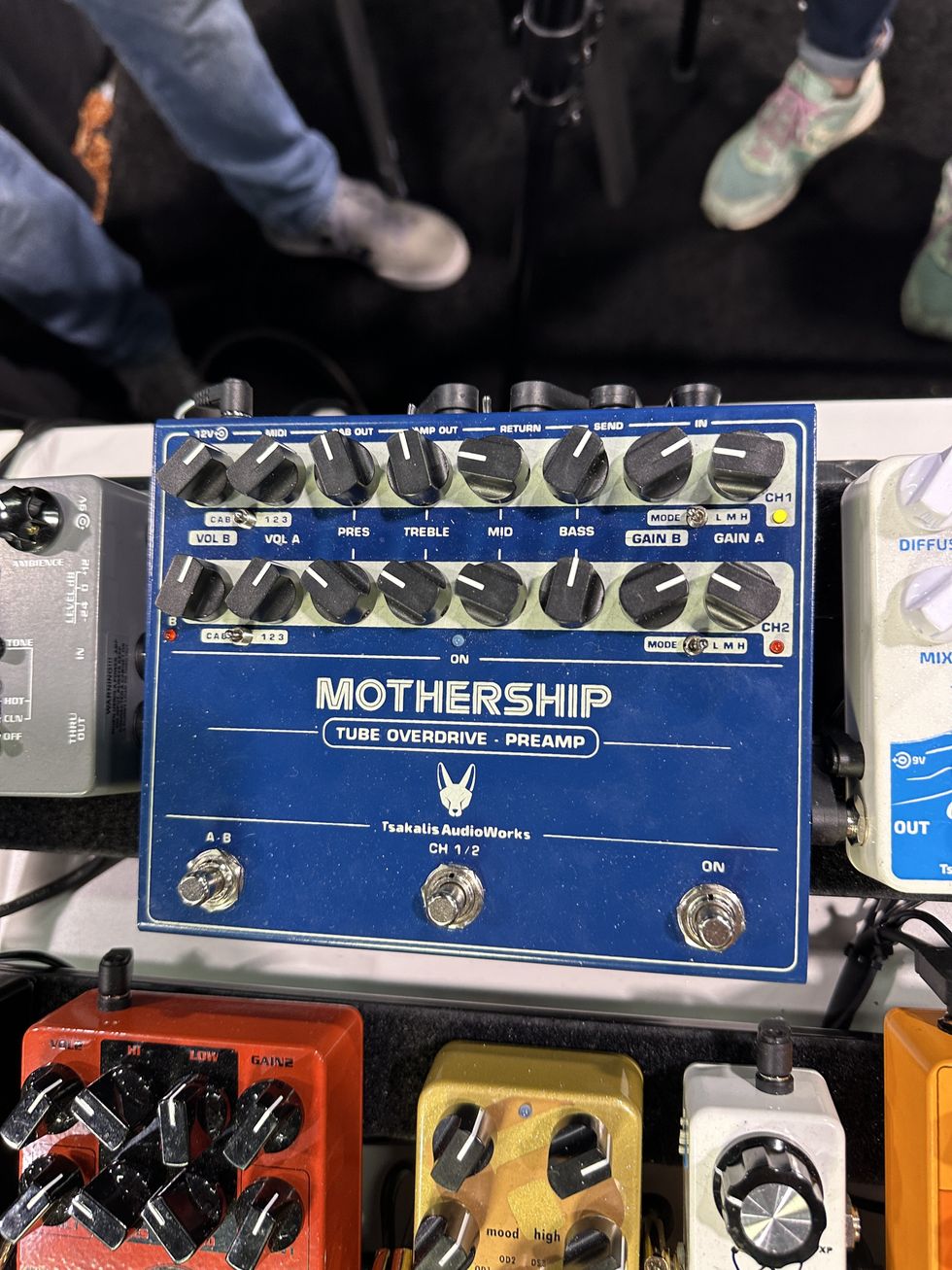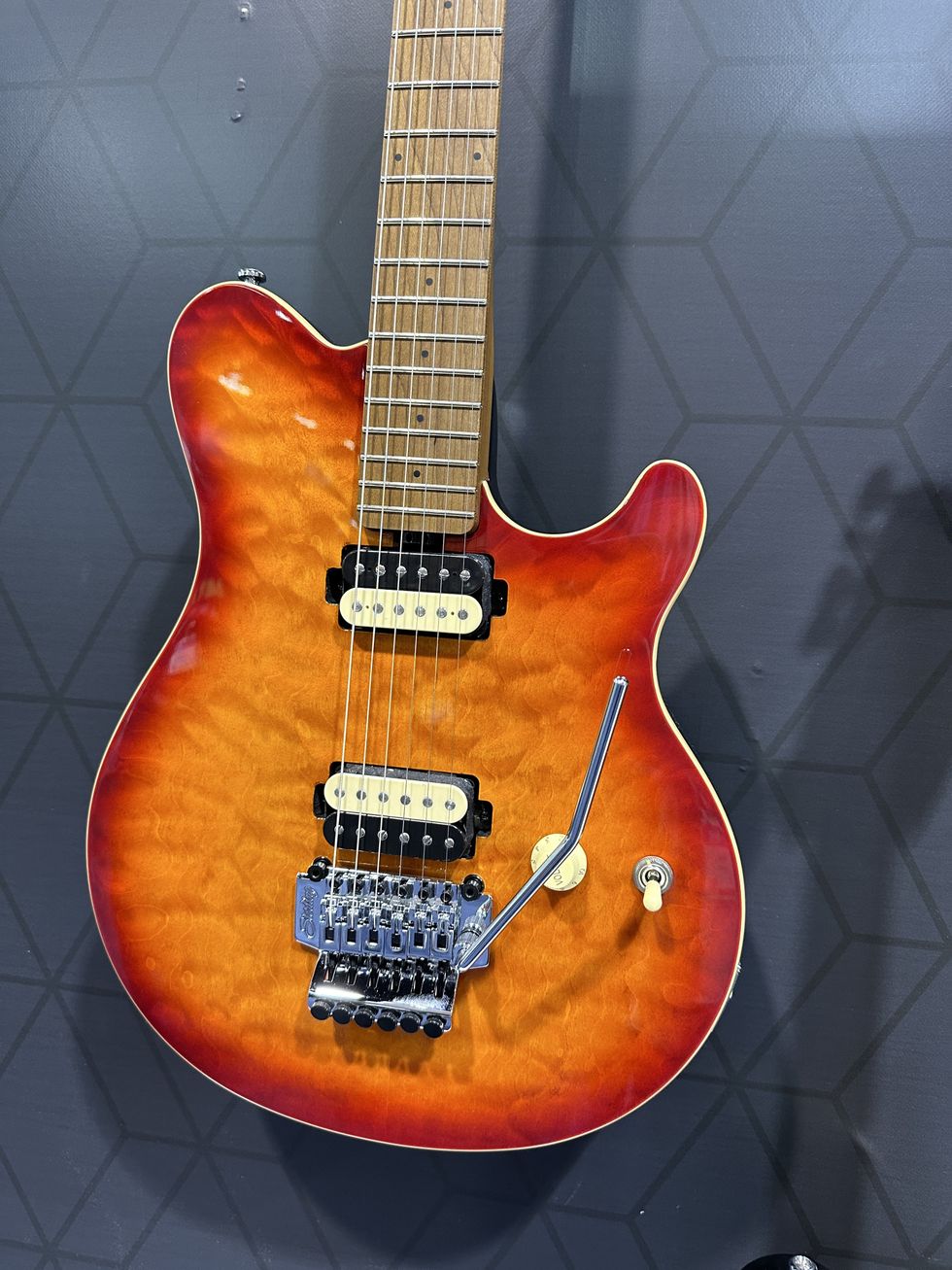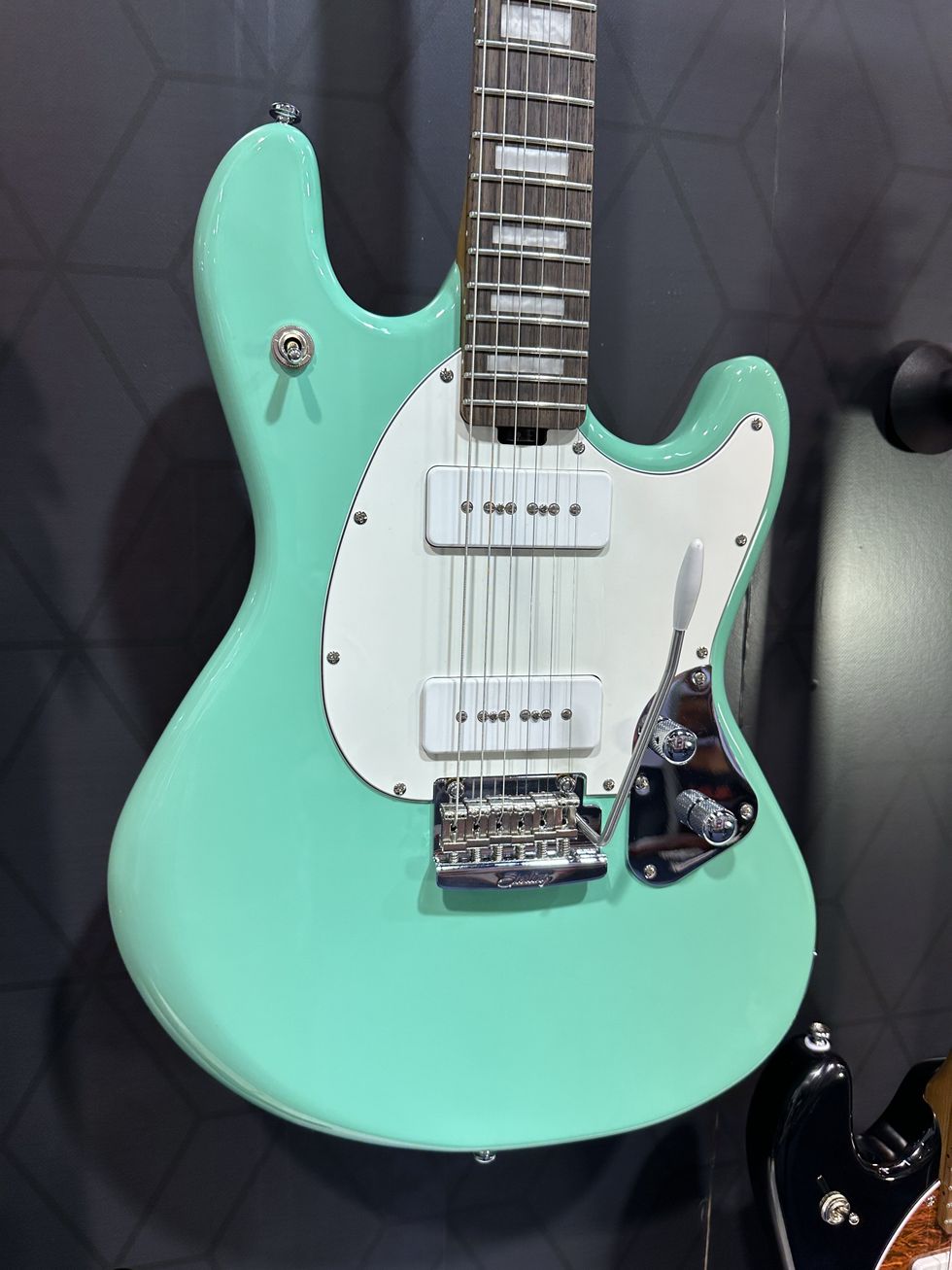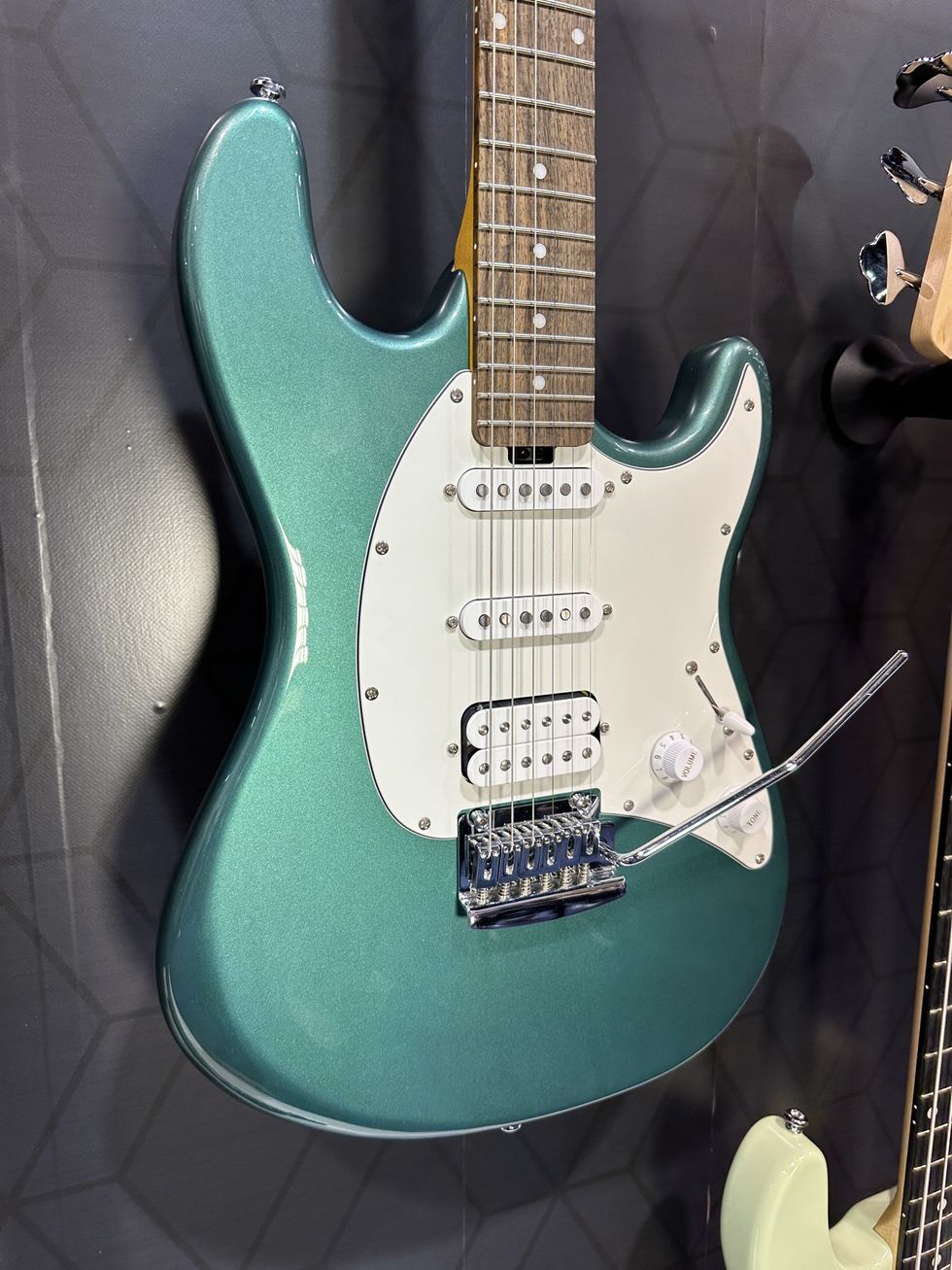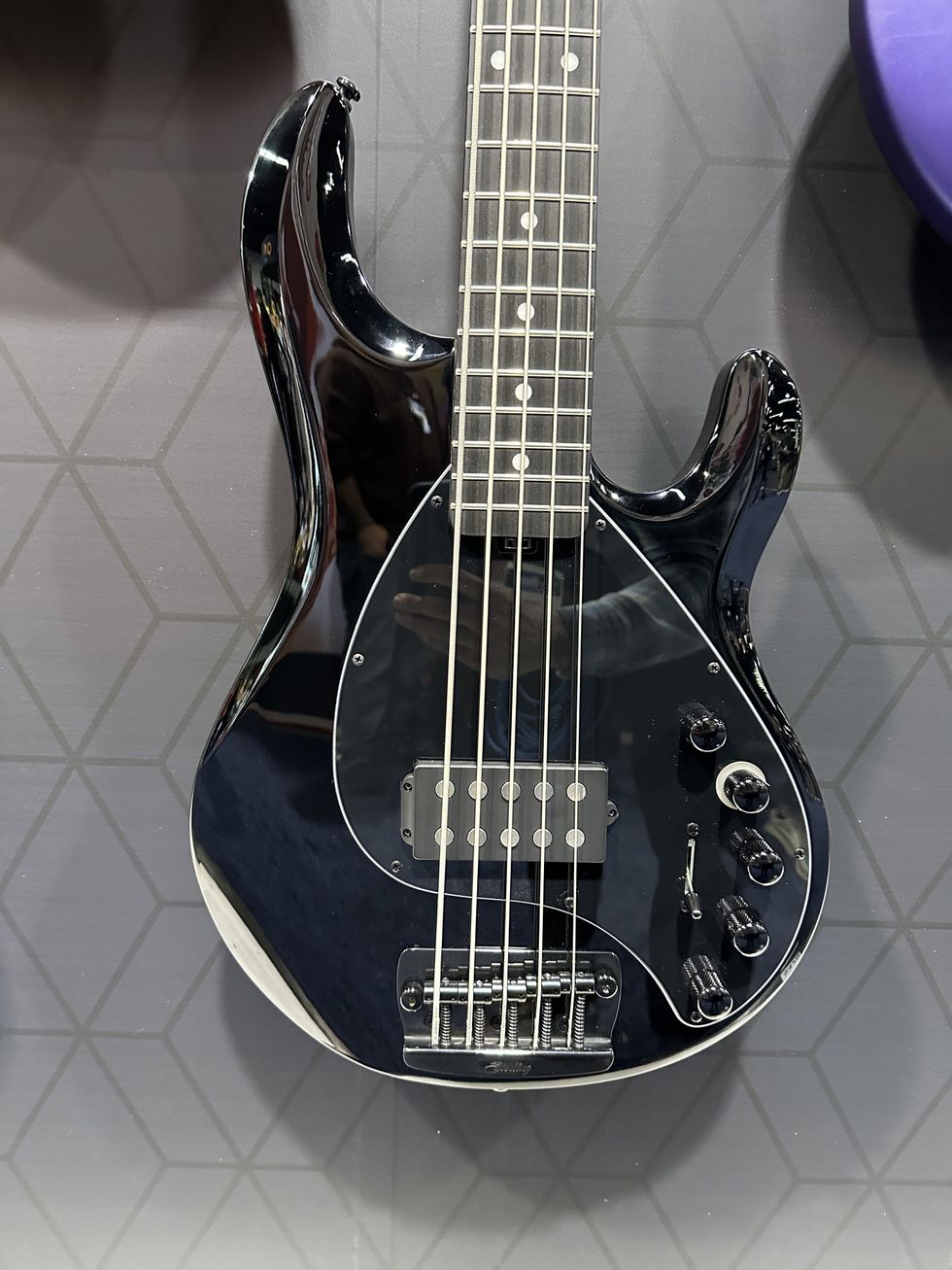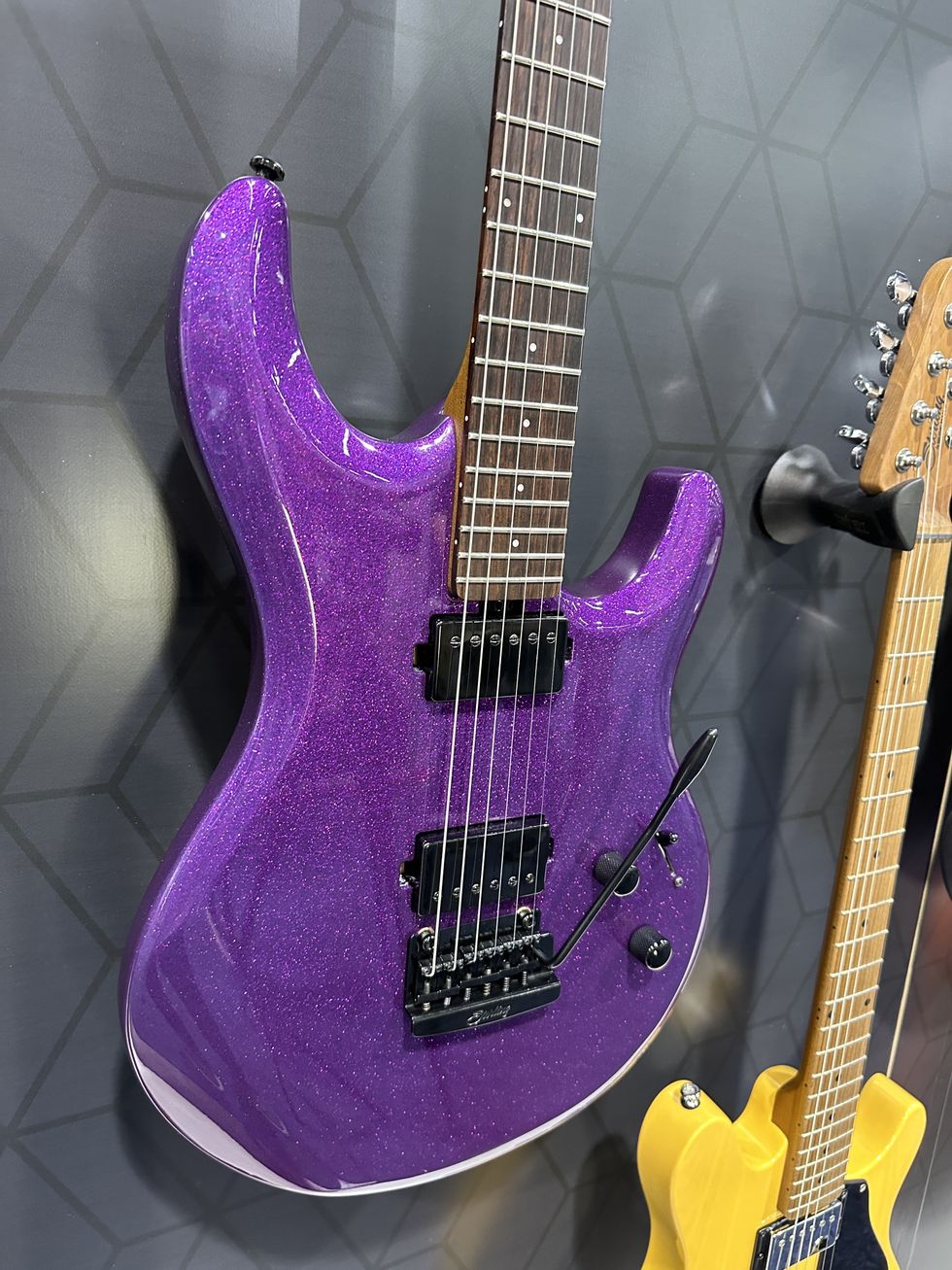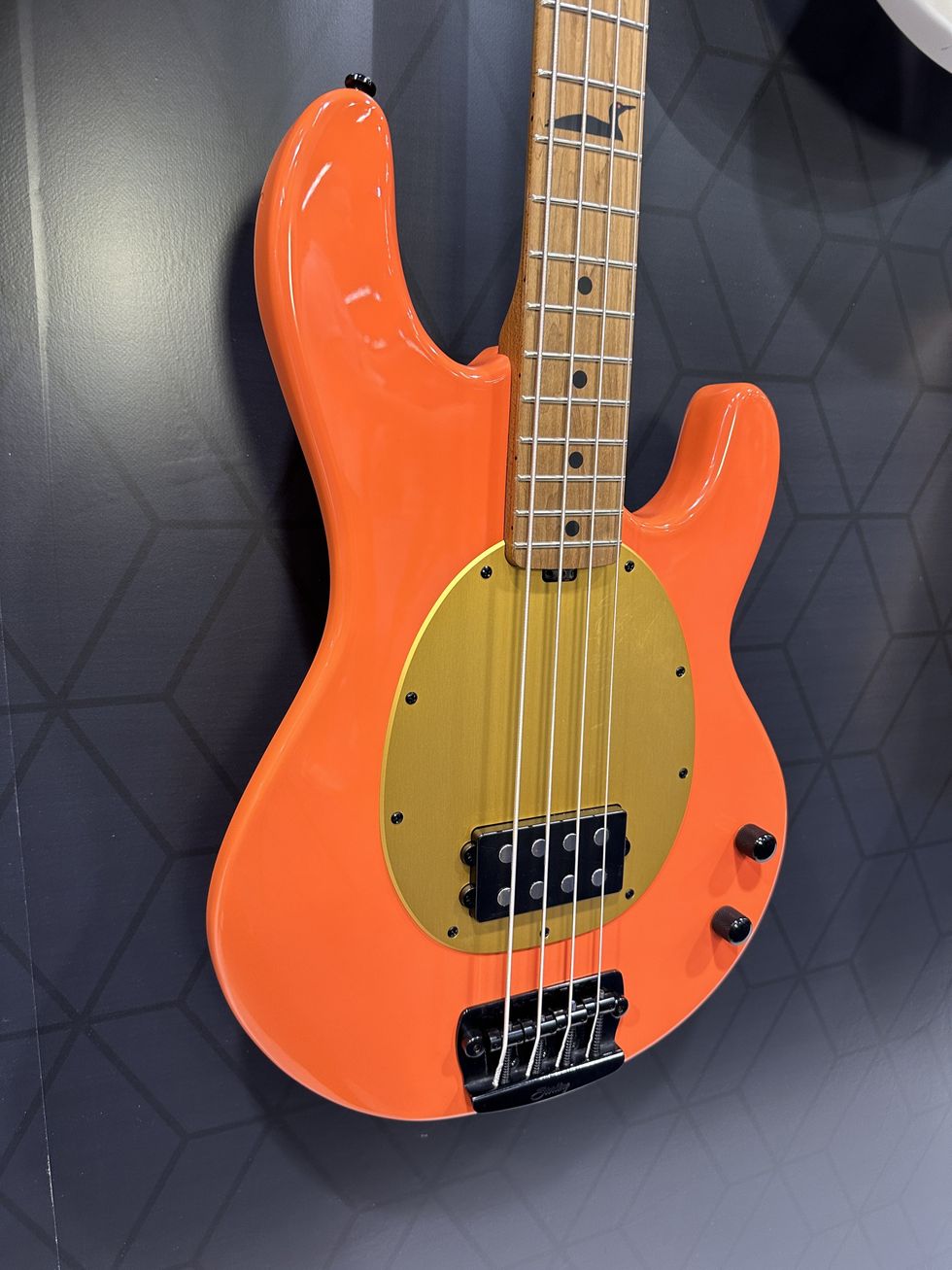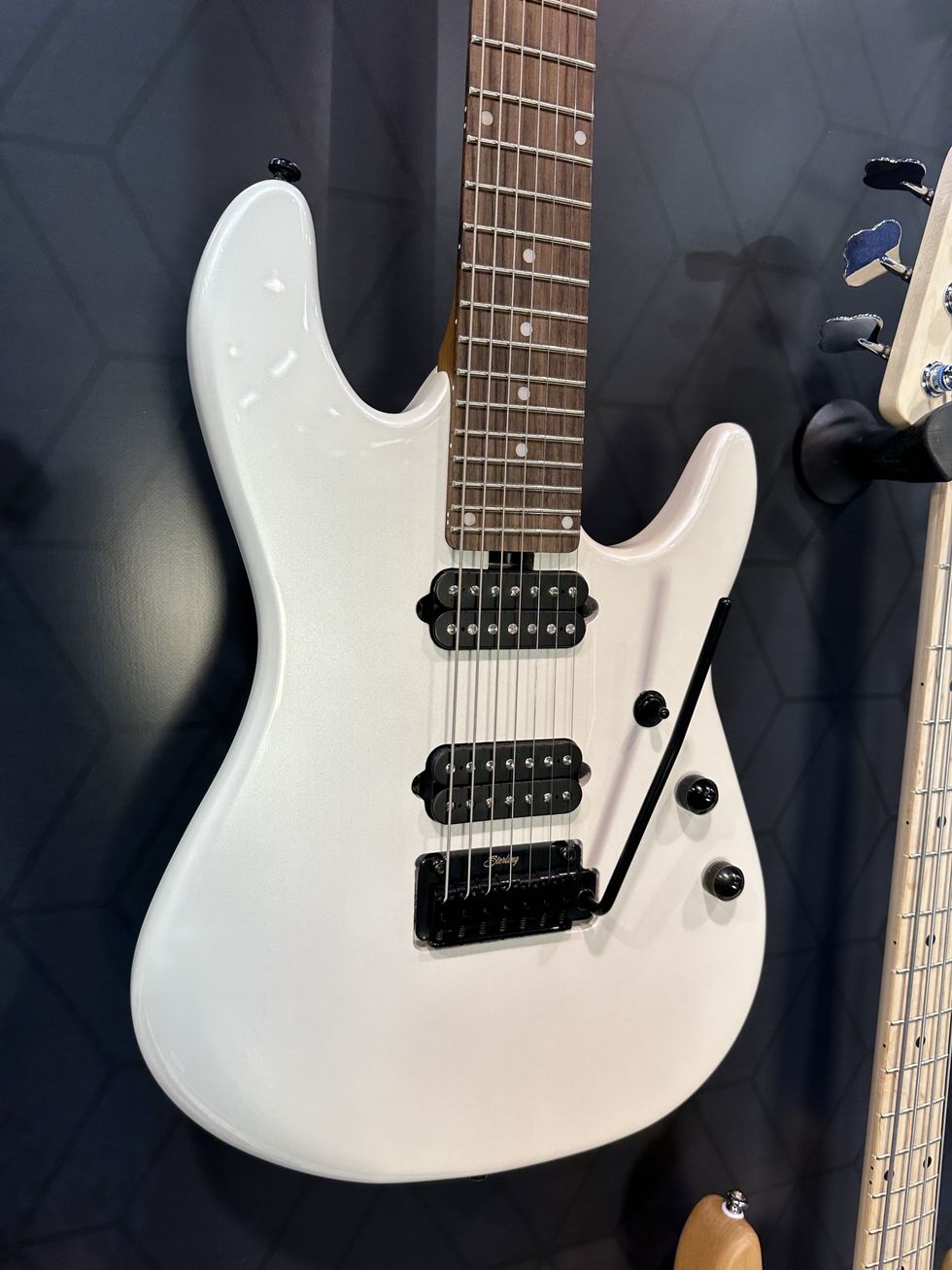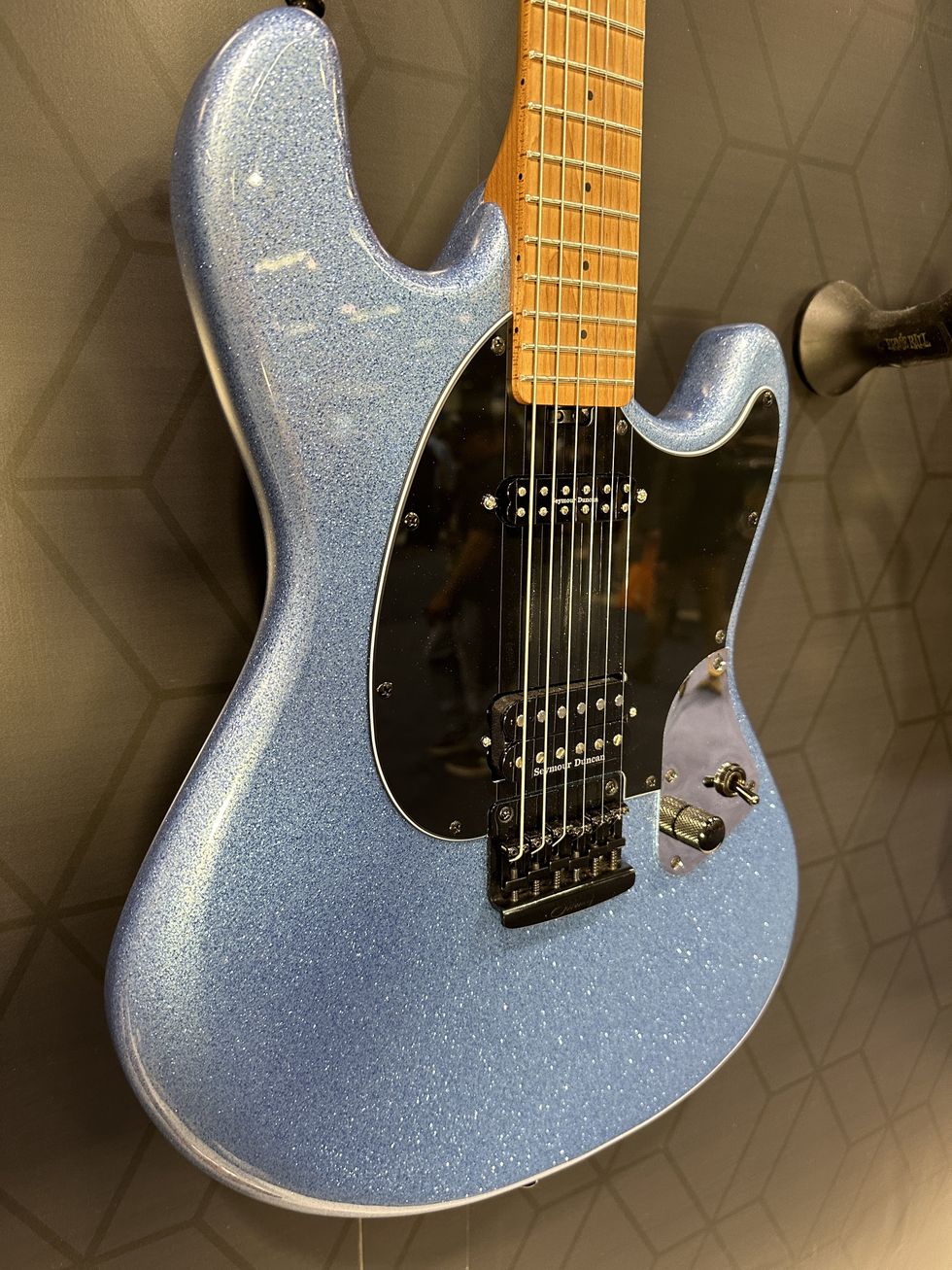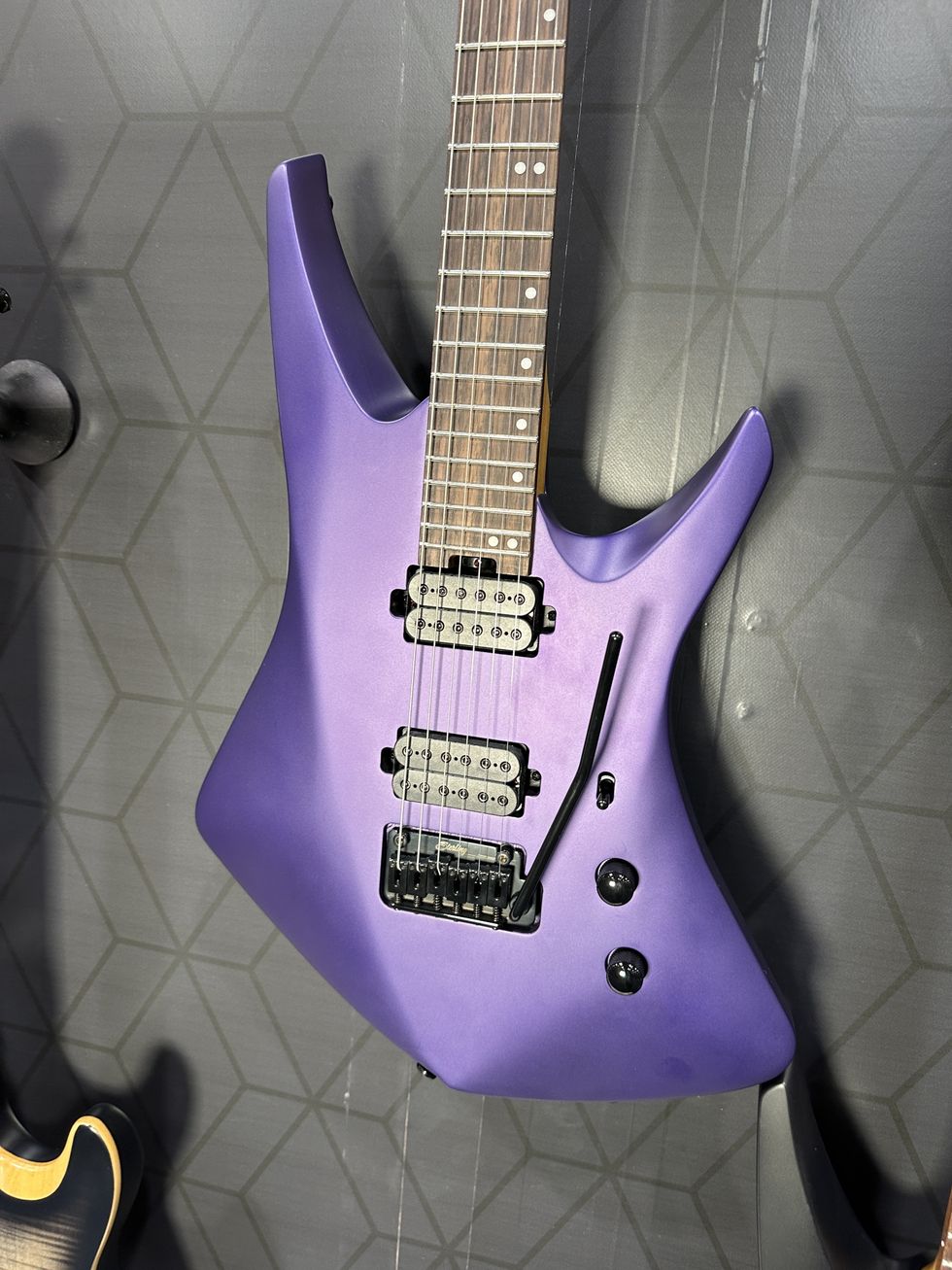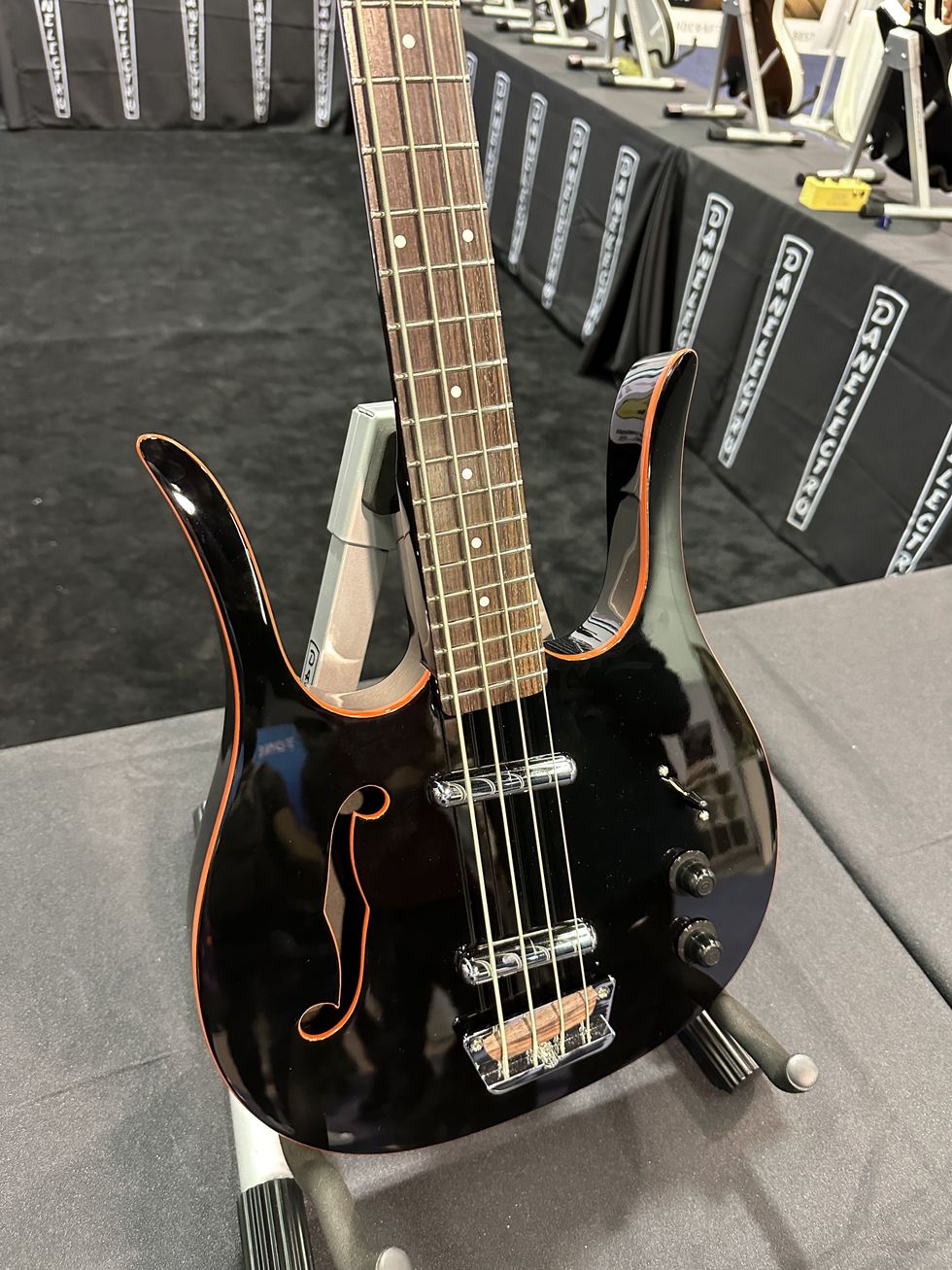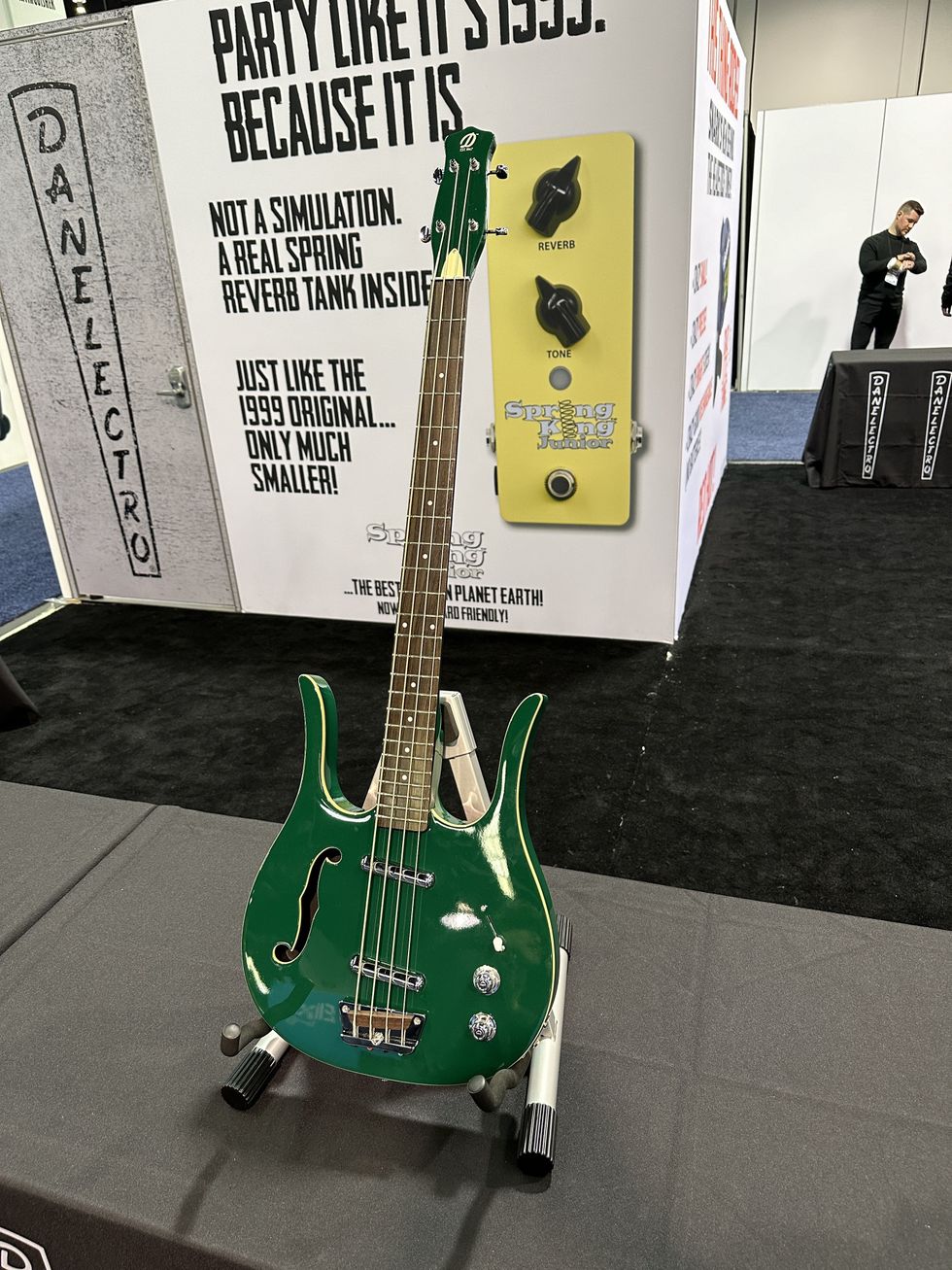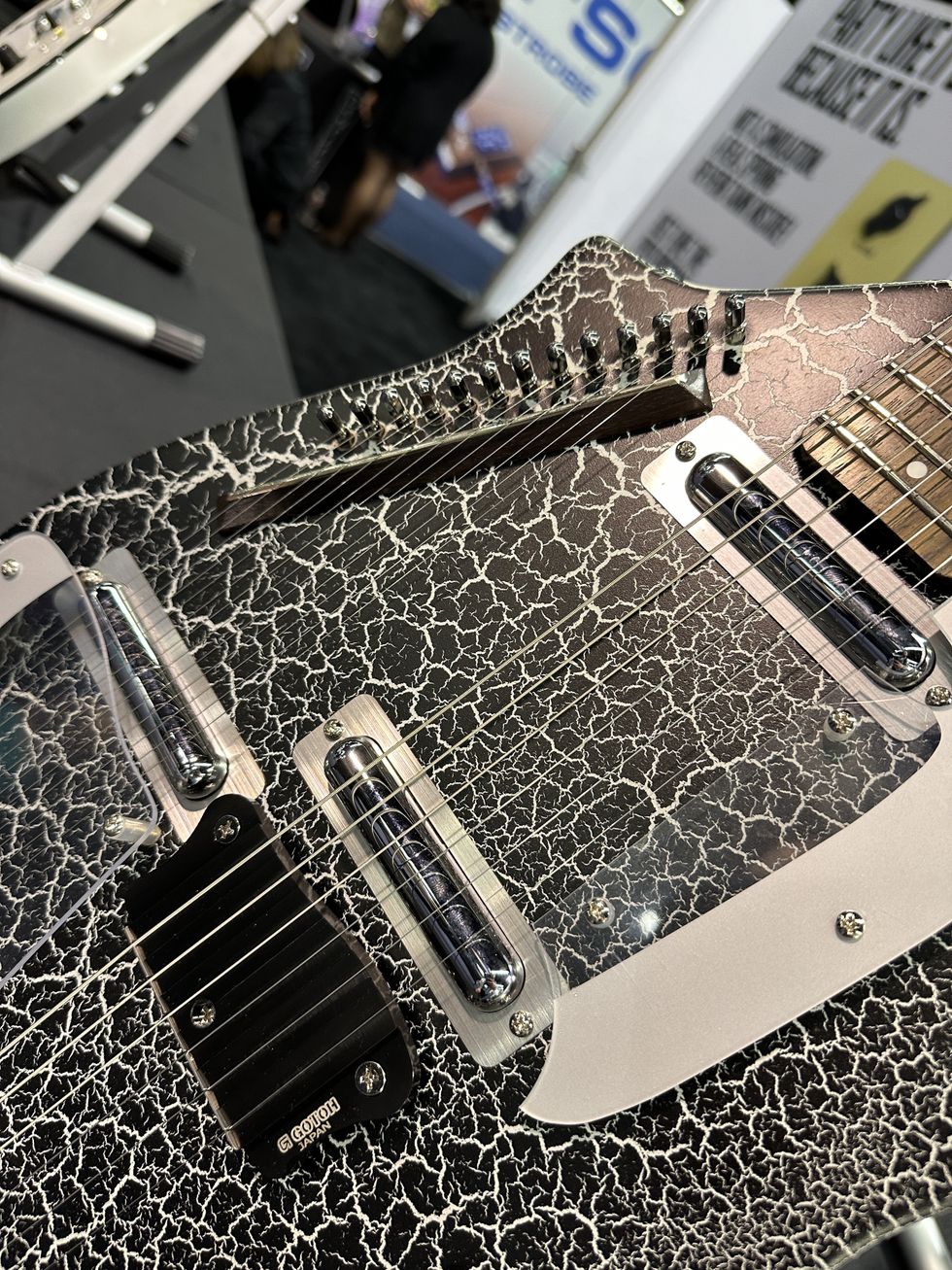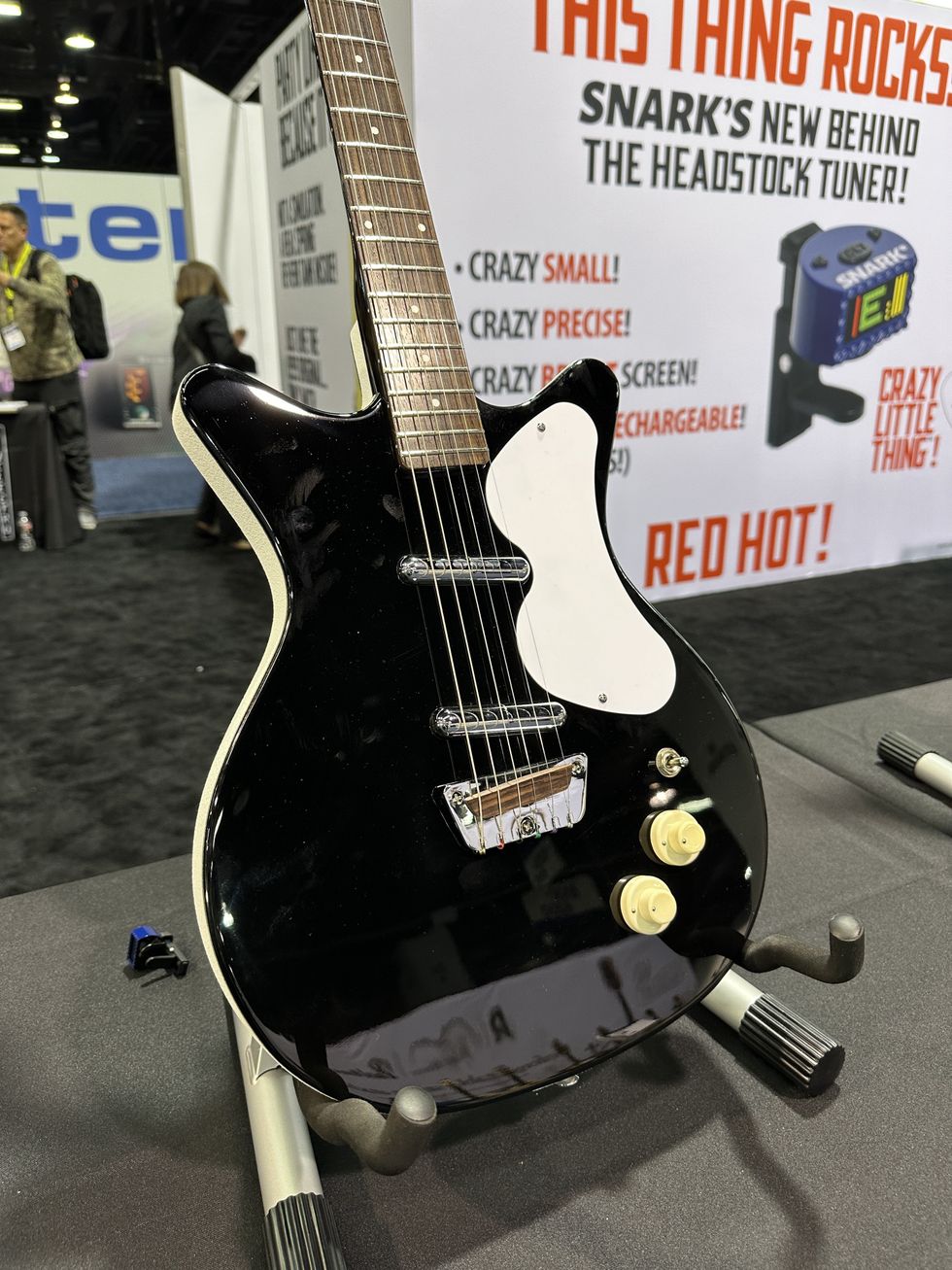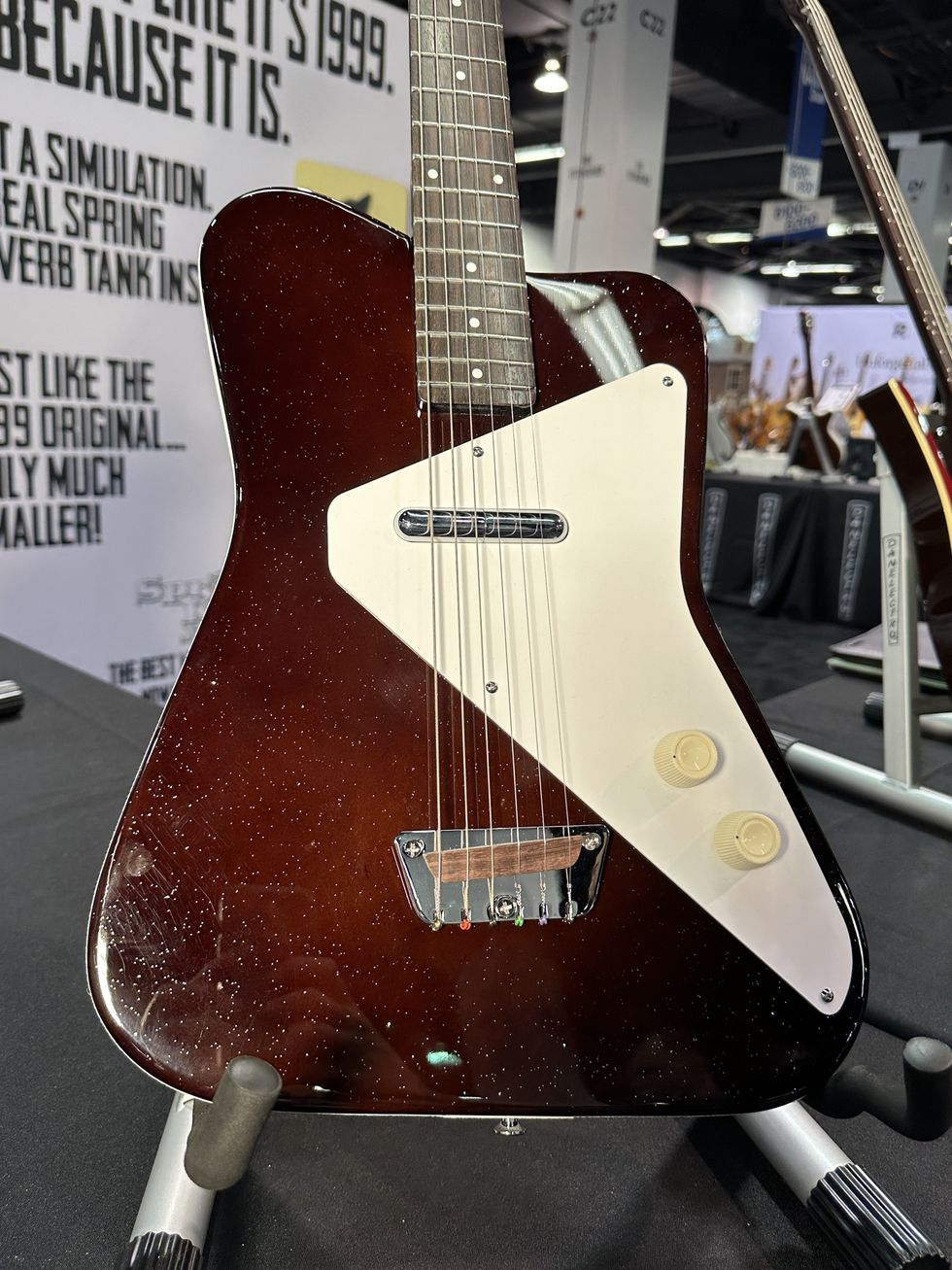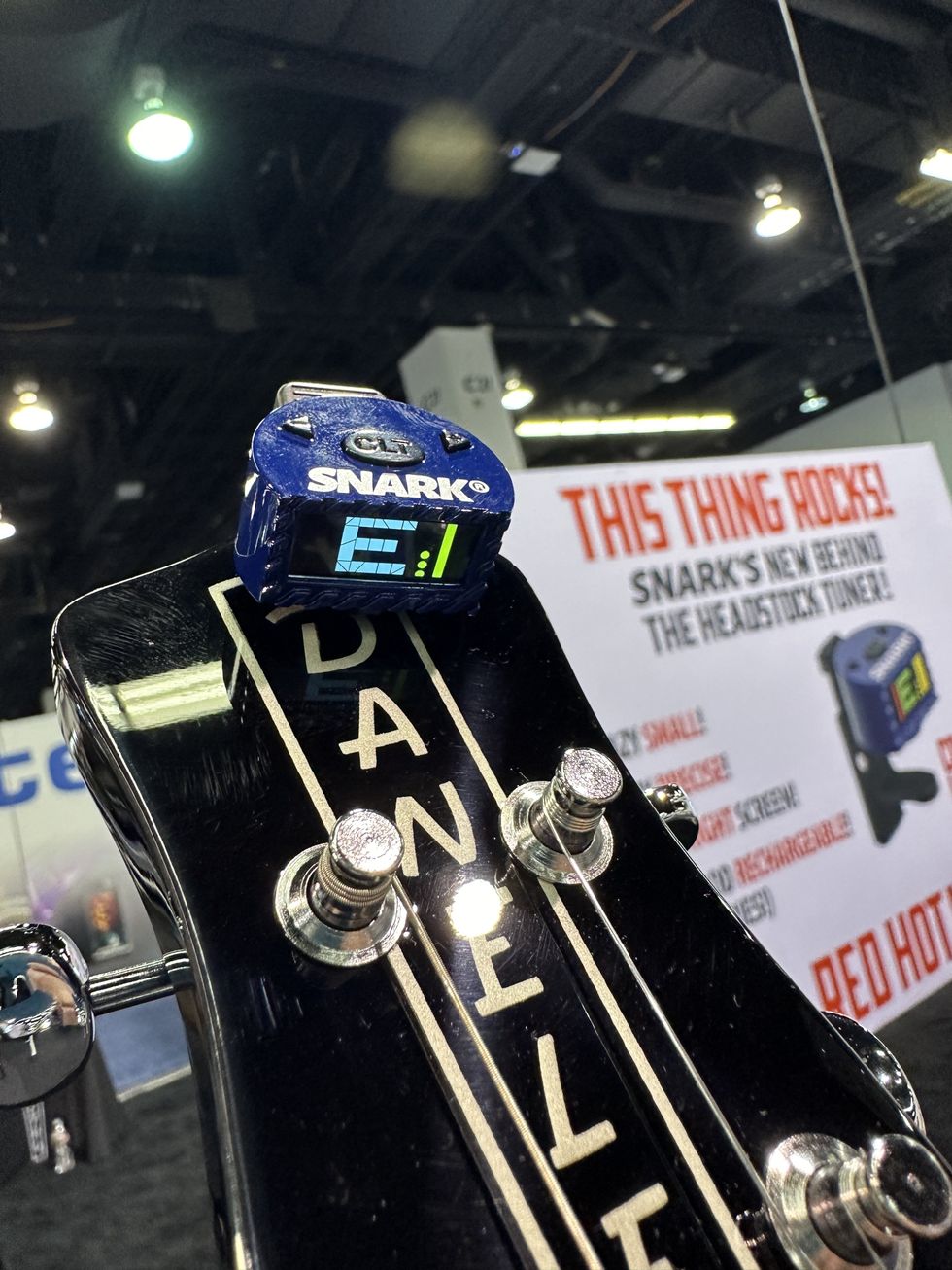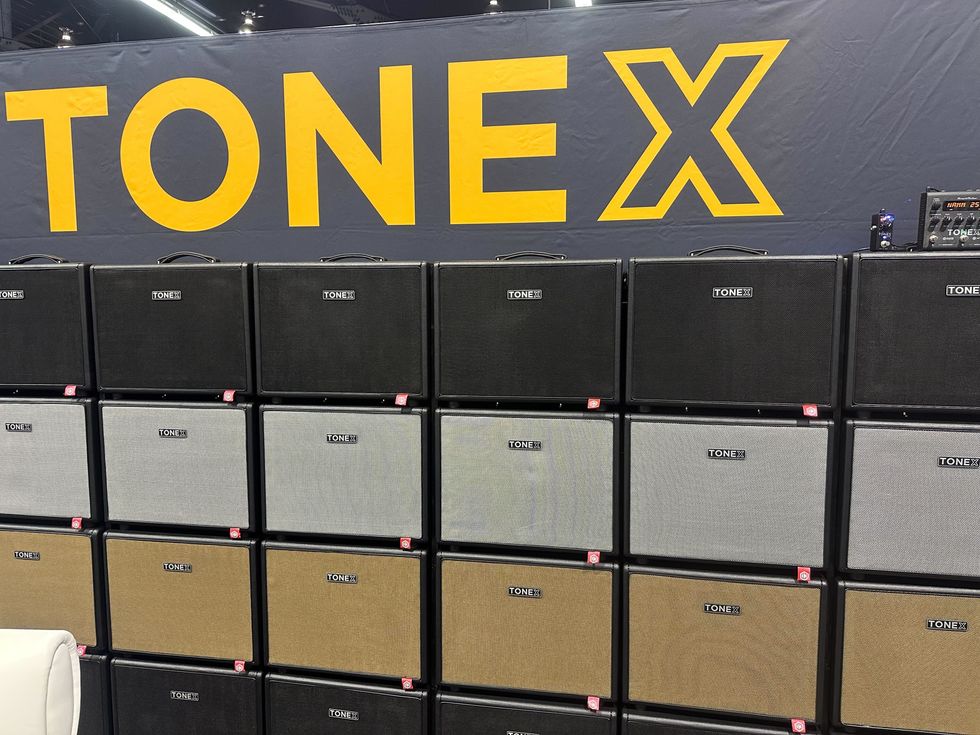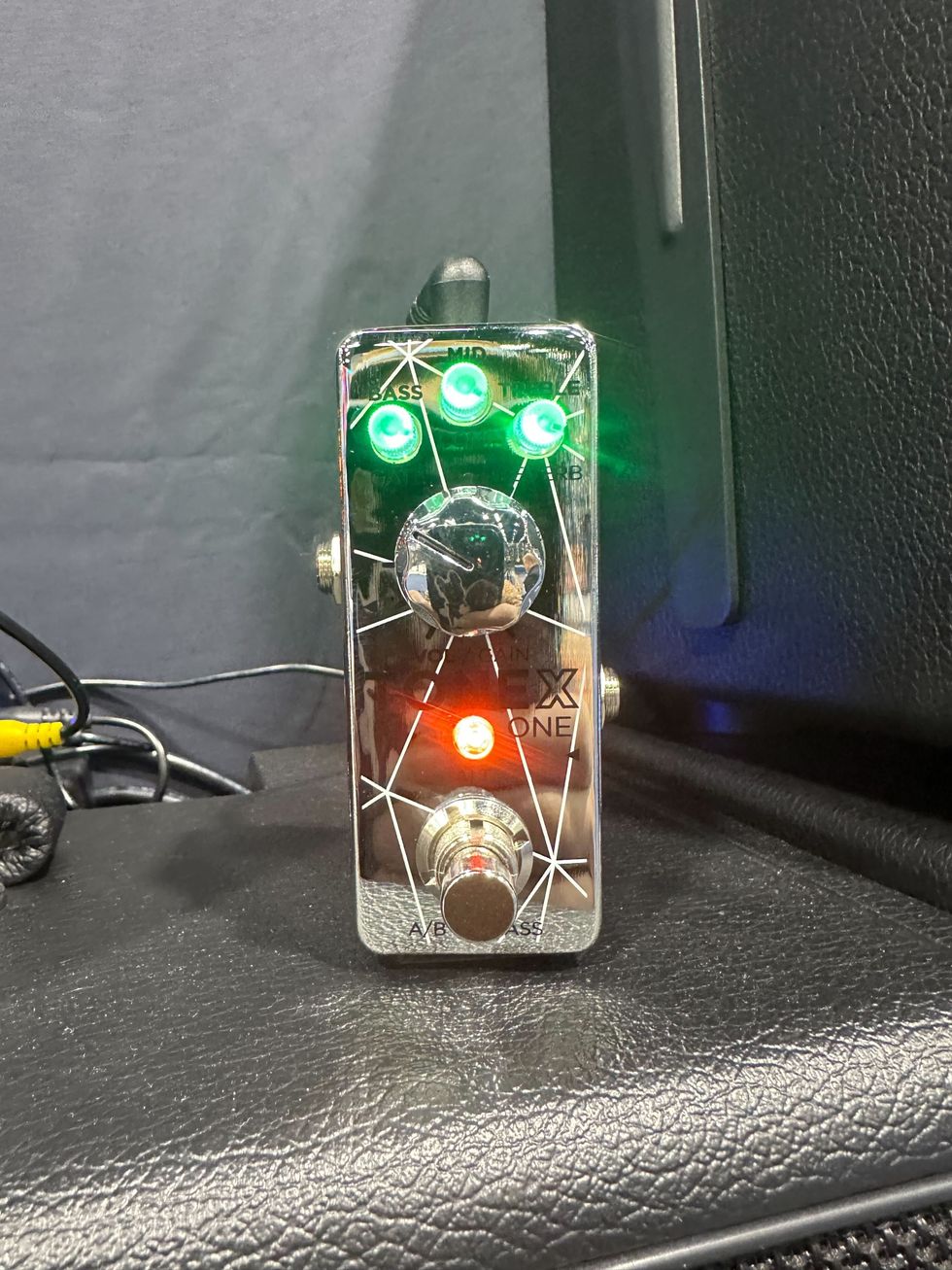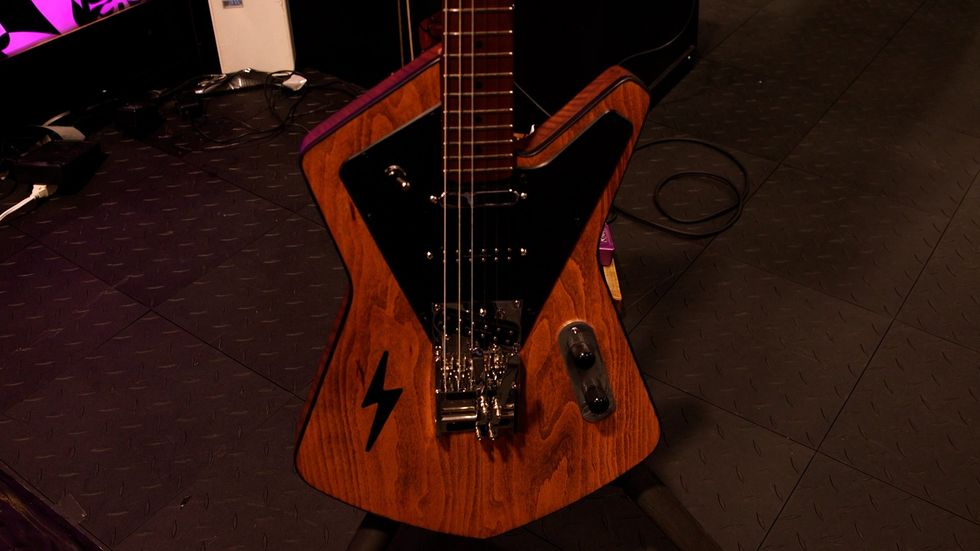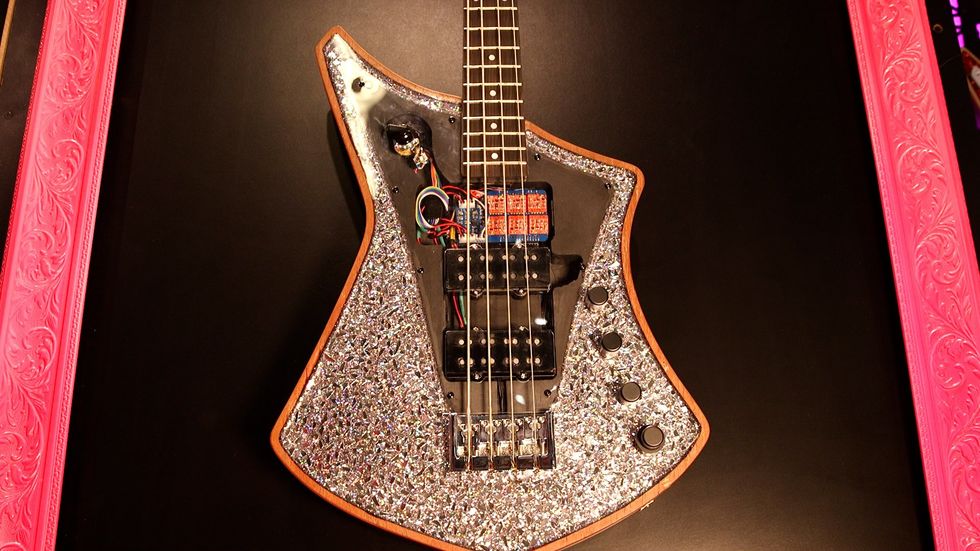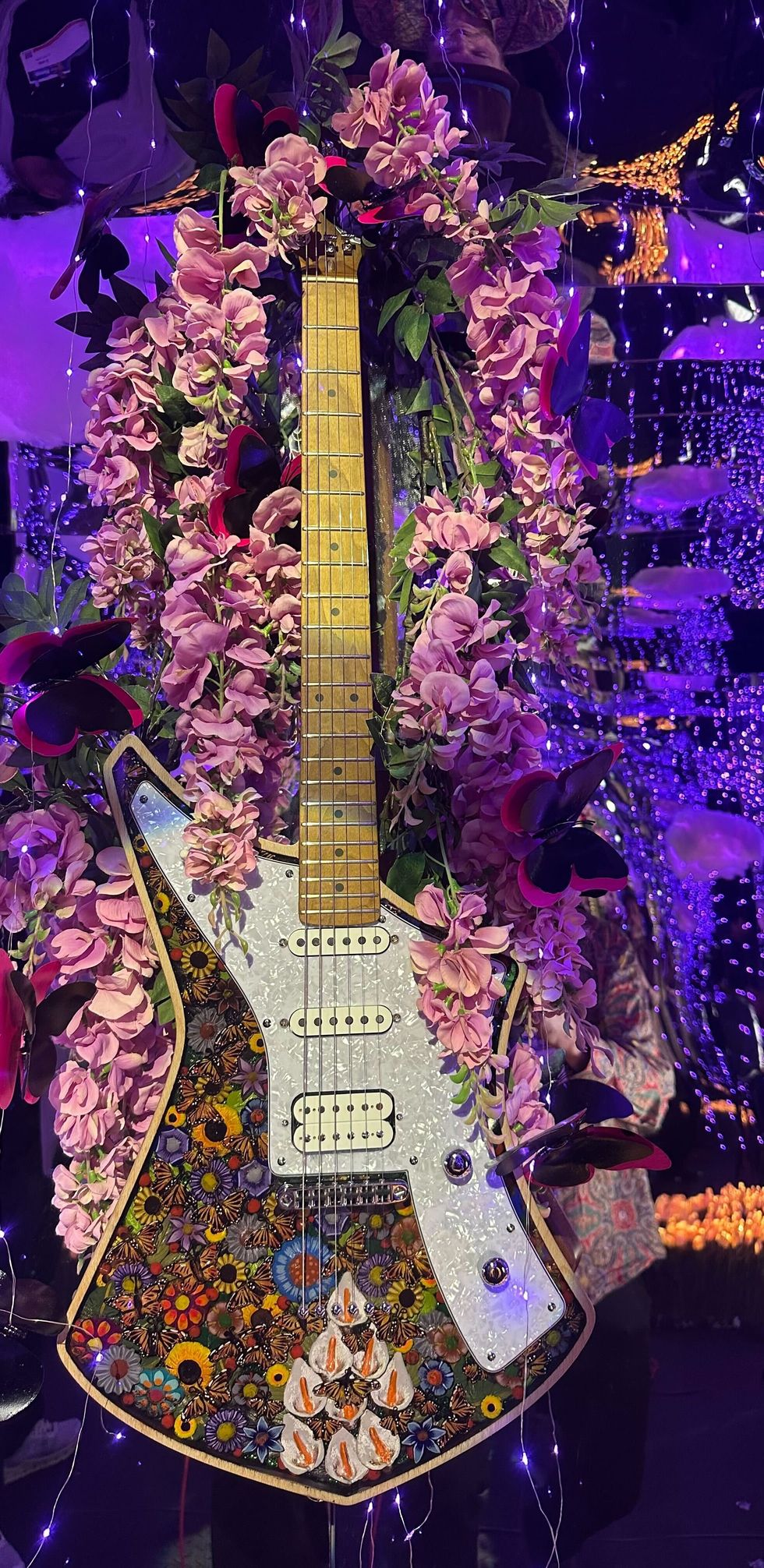Scottsdale, AZ (January 24, 2014) -- Jackson is pleased to announce a collection of 14 new models charged with new features designed for speed and killer looks. Each product along with its most distinctive features is listed below:
Mark Morton Dominion Pro
The Mark Morton Dominion Pro is an elegantly ferocious upgrade of the Lamb of God guitarist’s acclaimed Jackson signature model. Its chambered mahogany body is bound and comes in Black and Ivory gloss finishes, and the two DiMarzio® Mark Morton Dominion™ Signature humbucking pickups are wired in a dual-circuit design (lead, rhythm) with a two-way slider switch, three-way toggle pickup selector switch and two coil-tap toggle switches (one for each pickup).
Other premium features include a 24.75” scale length, three-piece quartersawn mahogany through-body neck with oiled back finish and graphite reinforcement, distinctive three-on-a-side Jackson Mark Morton Dominion headstock, compound-radius (12”-16”) bound ebony fingerboard with 22 vintage-style frets and shark-eye block inlays, TonePros TP6 adjustable bridge with stop tailpiece, gold hardware and Jackson locking tuners with white pearloid buttons.
Mark Morton DX2 Dominion
Jackson’s Mark Morton DX2 Dominion delivers the Lamb of God guitarist’s powerfully potent sound and style with remarkable value. Premium features include beautiful satin Black and gloss Trans Black finishes (quilt maple top on Trans Black model), compound-radius (12”-16”) bound rosewood fingerboard with 24 vintage-style frets, and dual DiMarzio Mark Morton Dominion Signature humbucking pickups with three-way toggle switching. Other features include a 24.75” scale length, one-piece through-body maple neck with graphite reinforcement, distinctive three-on-a-side Jackson Mark Morton Dominion headstock, adjustable chrome bridge with stop tailpiece, and chrome hardware.
Pro King V KVQ
Jackson’s Pro King V KVQ takes the regal King V design to even more majestic heights, with a beautiful quilt maple top and Trans Amber gloss finish. Its three-piece maple through-body neck has an ultra-smooth oiled back finish and rock-solid graphite reinforcement, while the compound-radius (12”-16”) bound ebony fingerboard has 24 jumbo frets and alumiloid sharkfin inlays. The King’s commanding voice comes from direct-mount Seymour Duncan® Distortion humbucking pickups, with other features including three-way toggle pickup switching, Floyd Rose® 1000 Series double-locking tremolo, and black nickel hardware.
Pro King V KVT
Jackson’s Pro King V KVT takes the regal King V design to even more majestic heights, in a choice of beautiful Black and Trans Red gloss finish (quilt maple top on Trans Red model). Its three-piece maple through-body neck has an ultra-smooth oiled back finish and rock-solid graphite reinforcement, while the compound-radius (12”-16”) bound ebony fingerboard has 24 jumbo frets and pearloid sharkfin inlays. The King’s commanding voice comes from direct-mount Seymour Duncan Distortion humbucking pickups, with other features including three-way toggle pickup switching, adjustable string-through- body bridge, and black hardware.
Pro Rhoads RRT-5 / RRT-3
Jackson’s Pro RRT-5 and RRT-3 Rhoads models are elegantly formidable new takes on the Jackson guitar that started it all, with supercharged features, gold hardware and a choice of Gloss Black and Ivory (with black pinstriping) finishes. The three-piece maple through-body neck has an ultra-smooth oiled back finish and rock-solid graphite reinforcement, while the compound-radius (12”-16”) bound ebony fingerboard has 24 jumbo frets and pearloid sharkfin inlays. Other premium features include direct-mount Seymour Duncan JB™ SH4 Zebra (bridge) and Jazz™ SH2N Zebra (neck) humbucking pickups, three-way toggle pickup switching and an adjustable string-through-body bridge and tailpiece.
Pro Dinky DK7-M / DK7-Q
Seven is your lucky number with Jackson’s Pro DK7-M and DK7-Q Dinky. With their dual Seymour Duncan SH-7 Distortion direct-mount humbucking pickups, the DK7-M and DK7-Q are malevolently stylish seven-string models of great power and striking beauty. Other premium features include a 25.5” scale length, 1/8" 4A quilt maple top on the transparent finish model, bolt-on maple neck with smooth hand-rubbed oil back finish and rock-solid graphite reinforcement, a super-convenient neck butt-end truss rod adjustment wheel, compound-radius (12”-16”) bound maple or rosewood fingerboard with 24 jumbo frets and offset dot inlays, bound seven-in-line Jackson reverse headstock, five-way blade pickup switching, recessed Floyd Rose seven-string double-locking tremolo bridge, and black hardware.
Kelly KEXMG
The KEXMG Kelly features a basswood body (quilt maple top on trans finishes), three-piece through-body maple neck, compound-radius (12”-16”) bound rosewood fingerboard with 24 jumbo frets and classic Jackson shark fin inlays, EMG® 81 (bridge) and 85 (neck) pickups, and a Floyd Rose Special bridge. Available in four new finishes for 2014 - Gloss Black, Silverburst, Tobacco Burst, and White with Black Bevels.
Kelly KEXTMG
The KEXTMG Kelly features a basswood body (quilt maple top on trans finishes), three-piece through-body maple neck, compound-radius (12”-16”) bound rosewood fingerboard with 24 jumbo frets and classic Jackson shark fin inlays, EMG 81 (bridge) and 85 (neck) pickups, and a fully adjustable strings-through-body TonePros bridge. Now available in ivory finish.
Rhoads RRXMG
The Jackson Rhoads RRXMG has a basswood body, through-body maple neck and active EMG 85 (neck) and 81 (bridge) humbucking pickups that deliver well-balanced tone with tight bass, glassy mids and crunching highs. Its bound compound-radius rosewood fingerboard curves more dramatically at the nut for easy chording and flattens out as it approaches the neck joint for low-action bends without fretting out. Other features include Floyd Rose Special double-locking two-point tremolo, 24 jumbo frets and three-way pickup switching. Available in three new finishes for 2014 - Black with White Pinstripe, Black with Pink Bevels, and Black with Yellow Bevels.
Soloist SLX
The Jackson Soloist SLX has a nato body, through-body maple neck and Duncan Designed™ alnico HB103N (neck) and high-output ceramic HB102B (bridge) humbucking pickups. Its bound compound-radius rosewood fingerboard curves more dramatically at the nut for easy chording and flattens out as it approaches the neck joint for low-action bends without fretting out. Other features include a Floyd Rose Special double-locking two-point tremolo, 24 jumbo frets and three-way pickup switching. Available in three new finishes for 2014- Slime Green, Taxi Cab Yellow, and Metallic Red.
Dinky Arch Top JS32 DKA-M
The JS32 DKA-M Dinky Arch Top has an elegantly arch-topped basswood body, bolt-on maple speed neck with graphite reinforcement, compound-radius (12”-16”) bound maple fingerboard with 24 jumbo frets and black sharkfin inlays, and a bound headstock. Other features include dual high-output Jackson humbucking pickups with ceramic magnets and three-way blade switching, Jackson-branded Floyd Rose double-locking tremolo bridge, black hardware and die-cast tuners. Available in Gloss Black and Snow White.
Dinky Left Handed JS32L DKA
The JS32L DKA Dinky Left Handed features an elegant arch-topped basswood body, bolt-on maple speed neck with graphite reinforcement, compound-radius (12”-16”) white bound rosewood fingerboard with 24 jumbo frets and white pearloid sharkfin inlays, and a bound headstock. Other features include dual high-output Jackson humbucking pickups with ceramic magnets and three-way blade switching, Jacksonbranded Floyd Rose double-locking tremolo bridge, black hardware and die-cast tuners. Available in Bright Blue.
Rhoads JS32L
The JS32L Rhoads features a basswood body, bolt-on maple speed neck with graphite reinforcement, compound-radius (12”-16”) bound rosewood fingerboard with 24 jumbo frets and pearloid sharkfin inlays, and a bound headstock. Other features include dual highoutput Jackson humbucking pickups with ceramic magnets and three-way blade switching, Jackson-branded Floyd Rose double-locking tremolo bridge, black hardware and die-cast tuners. Available in Satin Gray.
Dinky Arch Top JS22L
The JS22L Dinky Arch Top has an elegantly arch-topped basswood body, bolt-on maple speed neck with graphite reinforcement, compound-radius (12”-16”) bound rosewood fingerboard with 24 jumbo frets and pearloid sharkfin inlays, and a bound headstock. Other features include dual high-output Jackson humbucking pickups with ceramic magnets and three-way blade switching, synchronized fulcrum tremolo bridge, black hardware and die-cast tuners. Available in Gloss Black.
For more information:
Jackson Guitars
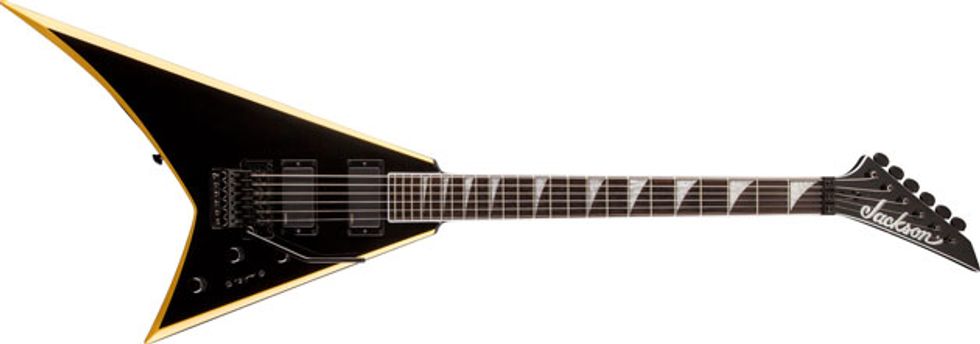



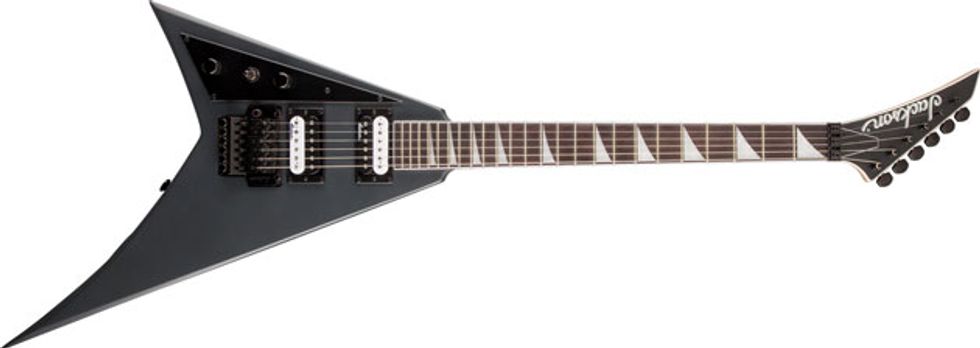


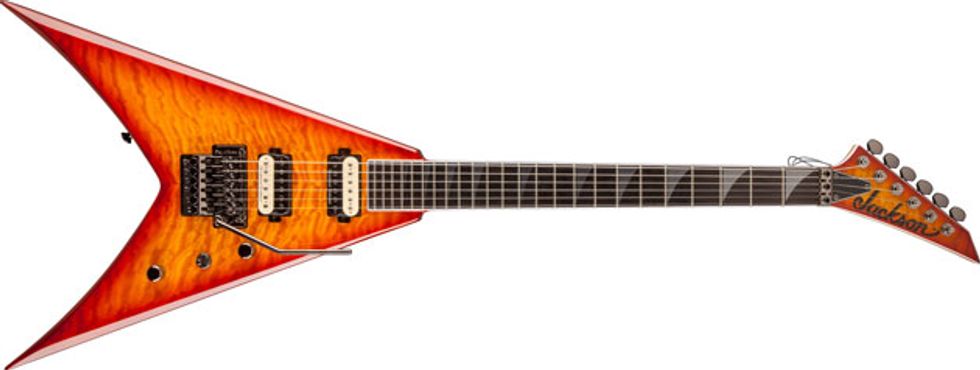
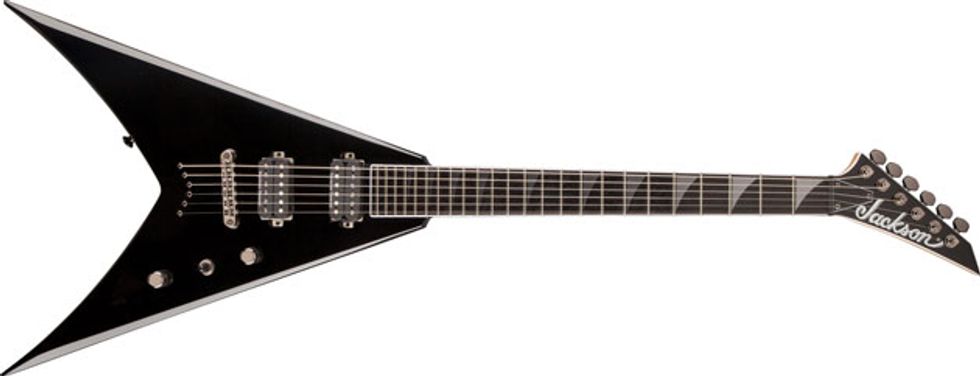
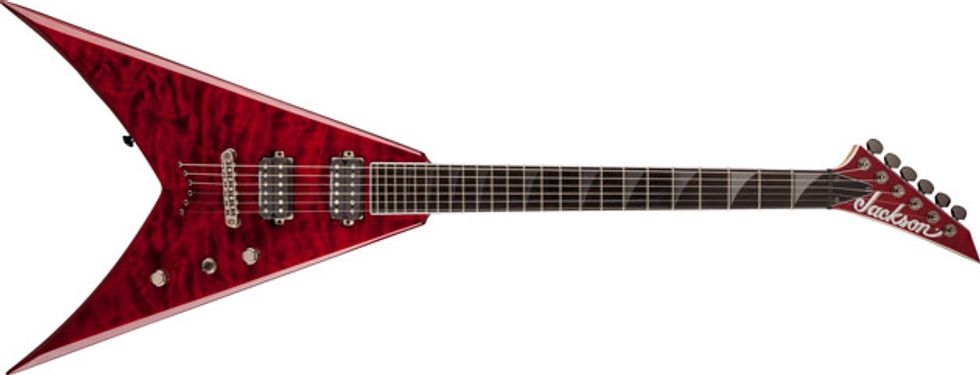
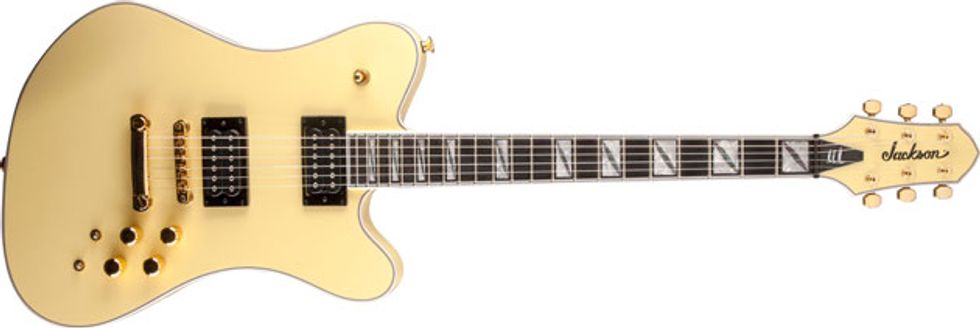
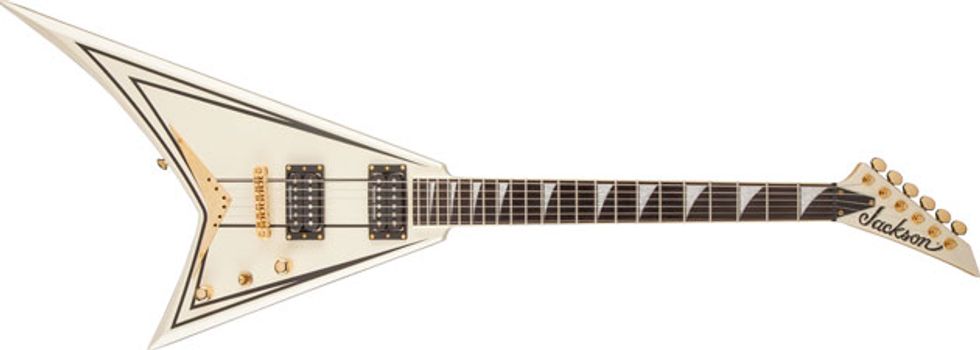
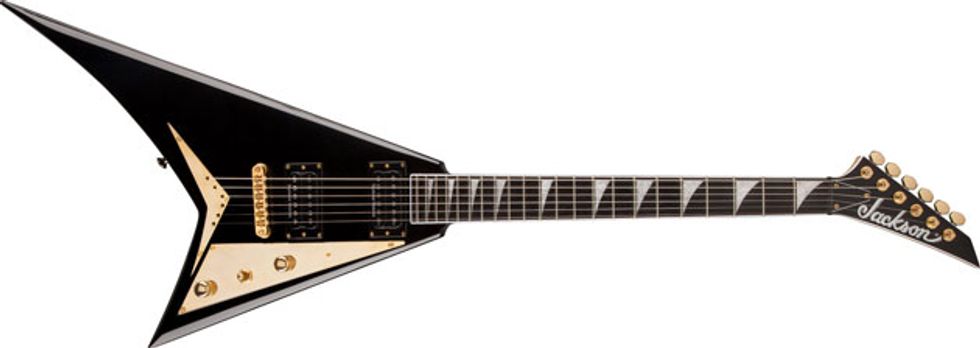
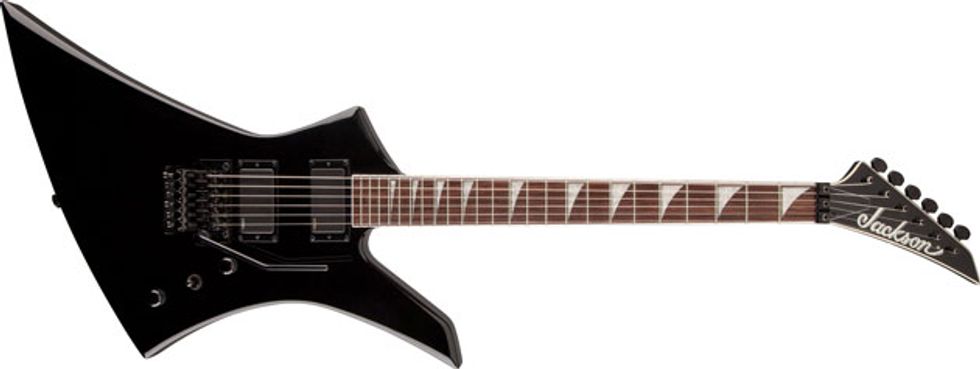
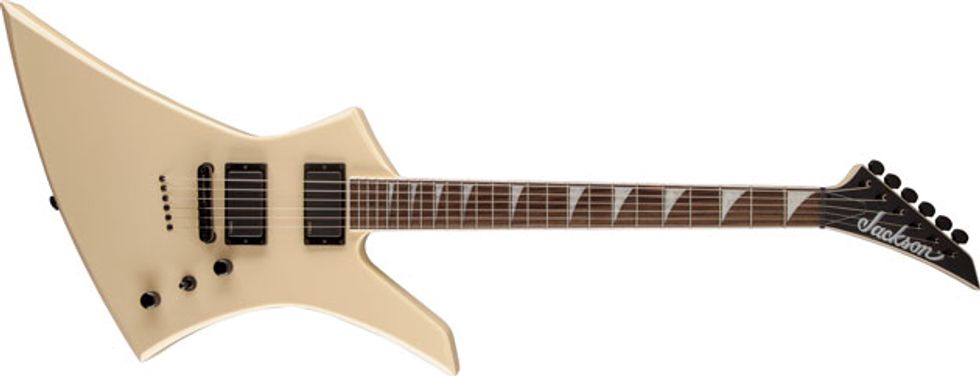
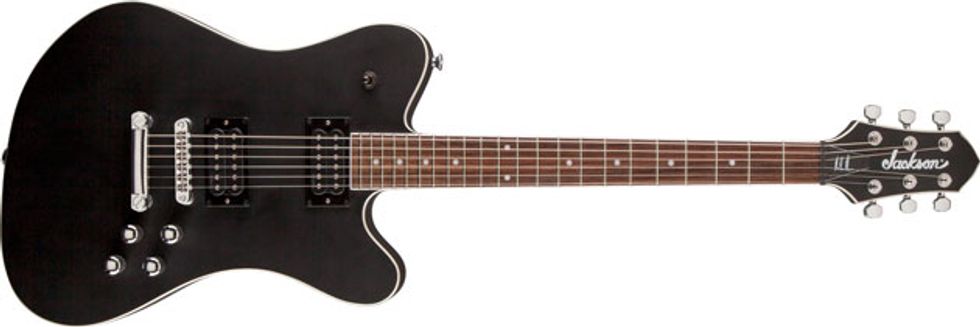

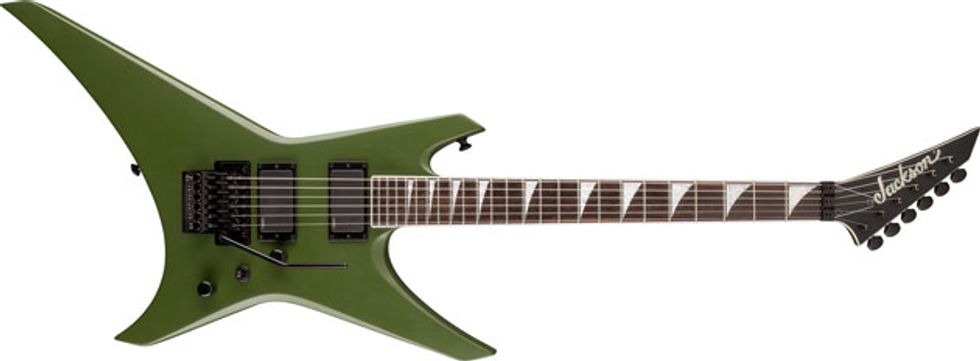


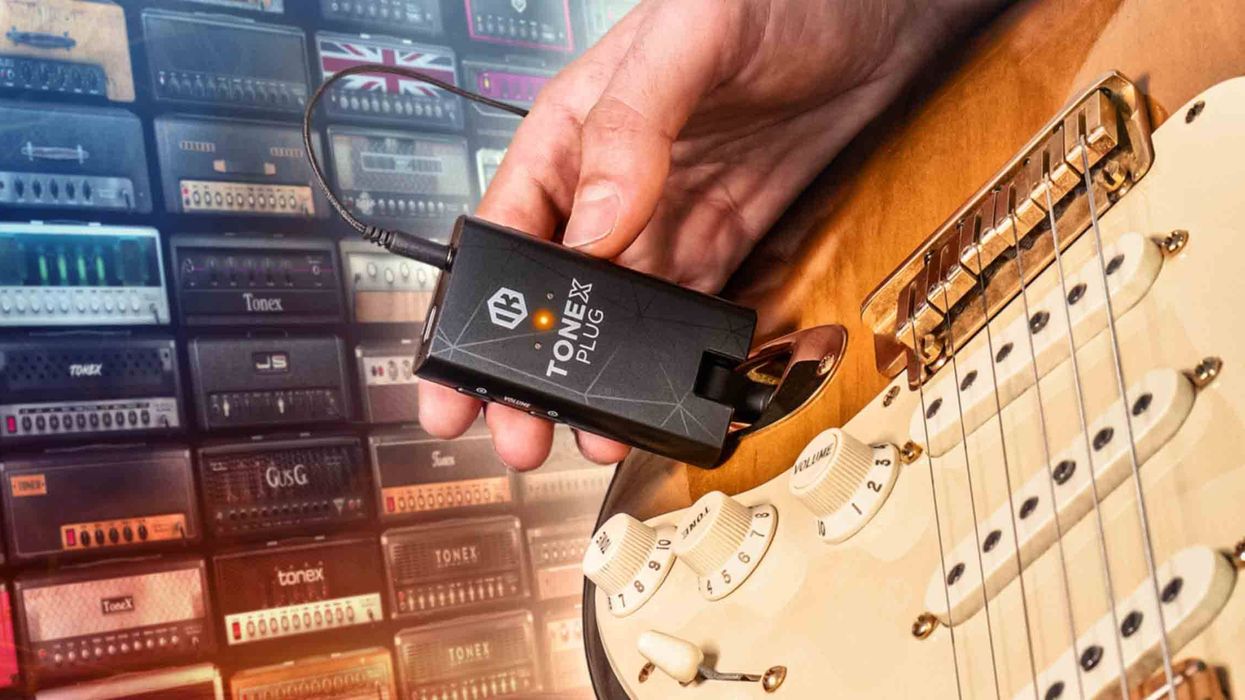









![Devon Eisenbarger [Katy Perry] Rig Rundown](https://www.premierguitar.com/media-library/youtube.jpg?id=61774583&width=1245&height=700&quality=70&coordinates=0%2C0%2C0%2C0)










